
- 2 Weeks for Couple
- 2 Weeks for Family
- Thailand Lantern Festival
- Indonesia(Bali)
- South Korea
- China (HK, Taiwan)
- Itinerary Ideas
- Asia Highlights Travel Reviews
- Thailand Travel Reviews
- Vietnam Travel Reviews
- Cambodia Travel Reviews
- Japan Travel Reviews
- Myanmar Travel Reviews
- China Travel Reviews


Best & Worst Times to Visit Southeast Asia 2024/2025, Rainy Season...
Southeast Asia lies within the tropics, with southern areas close to the equator, and so it's warm all year round. Average temperatures are around 27°C (80°F).
The climate varies significantly across the region of Southeast Asia. This makes it a year-round travel destination. The best time to visit will really come down to which country you would like to visit and what you want to do.
Generally speaking, the best time to visit most places in Southeast Asia is from November to February when the weather is dry (driest) and warm (on average) . Wet-season monsoon rains fall from June to October in most SE Asian countries.
- Weather Guide
- Best Times for Beaches
- Worst Times to Visit
- Travel Guide by Country
- Travel Guide by Month
Southeast Asia Weather Guide
Not all countries in Southeast Asia share the same seasons at the same time. There are some regional differences. They are roughly divided into two weather patterns.
There are three main seasons in Thailand, Laos, Vietnam, Cambodia, Myanmar, and the Philippines :
- Dry season: November to February
- Hot season: March to May
- Rainy season: June to October
There are two main seasons in Malaysia, Indonesia (Bali), and Singapore :
- Dry season: April to September
- Rainy season: October to March
Discover real reviews of Highlights Travel Family 's best-rated service across trusted platforms.
Most travelers choose to visit mainland Southeast Asia during its dry season as it's not so hot with little rain. During this time, go to the busy places as early or late in the peak season as you cann to avoid the crowds, such as the Grand Palace in Thailand and Angkor Wat in Cambodia.
The weather in the hot season, consistently getting to around 38°C (100°F). But it is a good time for the water fun at the beach.
The rainy season is not so good, but you will find fewer crowds and lower prices for flights and accommodation. Travel to Southeast Asia in Summer: Places to Go, Costs, Weather
Check out how to plan a family trip to Southeast Asia >>>
Best Times for Beaches in Southeast Asia
- Thailand and Vietnam : November to early April
- Indonesia and Malaysia : April to October
If you hope to enjoy sunbathing and swimming in the sea , generally speaking, the best time to visit Southeast Asia's beaches is from November through early April when the weather is usually sunny and dry, and it's not too hot or too cool. The beaches in many countries, such as Thailand and Vietnam, are at their best during this period.
But if you would like to enjoy your beach vacation in Indonesia (like in Bali) or Malaysia's east coast (like on the Perhentian Islands or Tioman Island), the best time to go is between April and October .
If you're traveling to the beaches during the wet season, you should expect some rainy days, but there will also be days where it only rains for a short while and then the sun comes out. You'll find that hotel and resort prices are considerably cheaper during the rainy season .
Suggested read: Itinerary ideas for 10 days , 2 weeks , 3 weeks , 4 weeks , 5 weeks & 6 weeks in Southeast Asia>>>
Worst Times to Visit Southeast Asia
June to October is the rainy season and is generally considered to be the worst time to visit Southeast Asia. There will be some discomfort or inconvenience if you travel during these months.
However, these worst times for the travel trade have benefits. You can enjoy very reasonable price and less-crowded beaches and temples. In addition, as the rain in Southeast Asia is so predictable (it usually rains in the afternoon and at night) , it's easy to plan around the weather. This means there's not so much of a problem in traveling to Southeast Asia during the off-season, as long as you know what to expect and plan well.
If you are visiting northern Southeast Asia (Thailand, Laos, Vietnam, Cambodia, Myanmar, and Philippines) and particularly concerned about the weather, we would like to suggest you avoid April (the hottest month) and September (the wettest month). For dry experiences, you could visit Singapore and Bali instead, which enjoy the best time from April to October.
Further reading: How to Plan a Trip to Thailand, Malaysia, and Singapore >>>
Best Times to Visit Different Countries in Southeast Asia
Southeast Asia is a large region. It is warm all year round. No matter when you visit, you will find a place that matches your interests and preferences.
Click the country name below to check the best travel time.
Best Times to Visit Thailand
Generally, the most popular time to visit Thailand is between November and early April when it is the cool and dry season. Northern and Southern Thailand experience different climates.
Southern Thailand :Southern Thailand is a perfect destination if you are looking for an excellent vacation on beautiful beaches, such as Krabi, Phuket, and Phi Phi on the west coast, or Koh Tao, Koh Phangan, and Koh Samui on the east coast. The best time to visit Southern Thailand is from February to April when the weather is nice and sunny.
Northern Thailand :If you are going to visit Northern Thailand – including Bangkok, Chiang Mai, Chiang Rai, Sukhothai, and Pattaya – you can consider visiting from October to January .
- 10-Day Best of Thailand in Yi Peng Festival
- 12-Day Thailand Family Holiday
- 13-Day Essence of Thailand Tour
Best Times to Visit Vietnam
The weather varies in northern, central, and southern Vietnam. Although the best time for travel depends on the region you visit, November to April are the best months to travel in most places of the country. See more about the Vietnam weather .
North Vietnam : North Vietnam includes Halong Bay, Hanoi, Ninh Binh, Mai Chau, and other great destinations. The best time to visit is from October to April when the weather is warm and dry. In the mountainous regions, it can be covered in ice from December until January.
Central Vietnam : If you are planning to visit Hoi An, Nha Trang, Da Nang, and Hue in Central Vietnam, you can travel in the period from January to April . You can expect perfect beach weather — blue skies, warm sun, and gentle sea breezes.
South Vietnam : If you are traveling to South Vietnam (Ho Chi Minh City, Phu Quoc, Phan Thiet, and Mui Ne), the ideal time is from November to March . It can be hot from March to May, with an average temperature of up to 32°C/90°F.
Best Times to Visit Singapore
Singapore is a wonderful year-round destination with good weather. Unlike many destinations in Southeast Asia, there isn't that much of a difference between the wet season (October to March) and the slightly drier summer season (April to September).
You might find it strange that the peak season is from November to early January even though there is some rain and it is a little wet. Singapore is crowded with travelers, particularly during Chinese New Year.
If you want to avoid the crowds, you can visit between February and May when the country is not overloaded with too many tourists and the weather is slightly hot. June to August is the driest time although it is unavoidable to encounter flash thunderstorms and stifling humidity.
Best Times to Visit Cambodia
Weather-wise, the best time to go to Cambodia is between November and April when it is sunny and dry. It is perfect if you are going to spend some time on a beach or hike through the jungles of Cambodia.
If you want to experience the country's fresh and lush greenery and quiet temples , the wet season (May to October) can be a good time. Heavy rains can occur but they only last for 1 or 2 hours in the afternoon.
- 12-Day Cambodia and Vietnam Highlights
- 14-Day Vietnam, Cambodia and Laos Tour
Best Times to Visit Myanmar (Burma)
The best time to visit most of Myanmar is from November to February when there are warm and dry days.
If you intend to visit areas in and around Mandalay and Bagan , which are the hottest and driest regions of Myanmar, you'd better avoid March to May as temperatures can rise to over 40°C/104°F. The wet season from June to October is considered a good season even though there is a bit of rain and it is good to avoid the winter crowds.
- 14-Day Myanmar and Thailand Essence Tour
Best Time to Visit Laos
Laos, a small and landlocked country in Southeast Asia, has a dry season (October to late April) and a wet season (May to late September).
If you are looking for warm and dry weather and want to enjoy outdoor activities, the ideal months to travel in Laos are from November to January , with temperatures ranging from 14–26°C (57°–79°F). This is also an excellent time for exploring the Mekong River.
- 17-Day tour to Myanmar, Vietnam and Laos
Best Times to Visit Malaysia
Malaysia has a classic equatorial climate with plenty of sunshine, high temperatures, and wet months throughout the year.
The best month to visit Malaysia depends on which side of the country you are going to visit. The seasons on each side of the peninsula are different.
The best time to visit the western islands is from December to February, while the perfect time to visit the east coast is from June to August.
- 32-Day Grand Southeast Asia Expedition: Vietnam, Cambodia, Laos, Malaysia, and Indonesia Tour
Best Times to Visit Indonesia
Indonesia is a year-round destination with warm tropical temperatures averaging 28°C/82°F throughout the year. The dry season in Indonesia spans from May to September and the wet season is between October and April.
If you plan to dive off the coast of Bali, Lombok, and Komodo National Park or want to plan to climb one of Indonesia's many volcanoes, the dry months from April to September are a great time.
If you are looking for good weather as well as fewer crowds, you can visit Indonesia in May, June, and September.
>>>Read about how to plan a trip to Thailand, Singapore and Bali
- 19-Day Vietnam, Thailand, and Bali Tour: Discover Southeast Asia Treasures
- 16-Day Private Vietnam and Bali Journey of Relaxation
Southeast Asia Travel Guide by Month
Click the sign of each month to check the travel guide information.
January Travel in Southeast Asia
January is one of the most popular travel periods for Southeast Asia. It's warm and dry in Thailand, Laos, Vietnam, Cambodia, Myanmar, and Philippines, with temperatures hovering between 20°C (68°F) and the low 30s °C (86+°F) in most places.
Many visitors choose to spend their Christmas and New Year holidays on the sunny beaches. Diving and snorkeling are at their best during this period. Avoid the east coast of Malaysia and Bali, though, as it's the rainy season peak there.
You might like to join in Lunar New Year celebrations in (the Chinatowns of) these countries. In 2024, Lunar New Year is observed on February 9nd.
Reveal the top January destinations in Southeast Asia >>>
February Travel in Southeast Asia
Explore lively Bangkok in Thailand, Angkor Wat in Cambodia, and Ho Chi Minh in Vietnam in February before the heat of March. The temperature ranges between 20°C (68°F) and the low 30s °C (86+°F) in most places.
You are likely to experience rainfall only every four or five days, so you can spend the rest of your time trekking in the national parks, tasting yummy foods in the night markets, or listening to the holy chanting in the temples.
Book your hotels and flights 2–3 months in advance to ensure their availability and for better prices. Contact us for hotel recommendations.
Discover the must-visit spots in Southeast Asia this Febuary >>>
March Travel in Southeast Asia
The hot season arrives in March. Good deals for hotels and flights and fewer crowds make March a good month to travel for some.
With temperatures hitting the mid-30s °C (the 90s °F) on most days , March is a good time to swim in the sea, bath the elephants in a sanctuary or cruise on Halong Bay.
Start your touring/activities in the early morning to find some coolness.
Check more weather details, best places to go and costs in Southeast Asia in March >>>
April Travel in Southeast Asia
April is the hottest month in Southeast Asia. In some places, afternoon temperatures can reach 40°C (104°F).
A welcome chance to cool down comes with the water fights of Songkran Festival in Thailand from April 13th to 15th.
Laotians also celebrate their New Year from April 14th to 16th. It is a good opportunity to soak in Laos traditions, including washing Buddha statues, painting temples, candlelight processions around the temples, and splashing water on each other.
If you can handle the hot weather, April travel in Southeast Asia is full of traditional festivities. Find more weather details, best places to go and costs in Southeast Asia in April >>>
May Travel in Southeast Asia
May is the last month before the rainy season in Thailand, Laos, Vietnam, Cambodia, Myanmar, and the Philippines. Temperatures in many areas are 35–40°C (95–104°F) . But, compared to April, May sees a welcome drop in temperature in some regions.
Rainfall starts to increase towards the end of the month, with more than half of the month seeing short thunder showers that last for about an hour. For most of the day touring is not affected.
For sunny beaches, Indonesia and the east coast of Malaysia are great options.
Find more travel-friendly destinations in Southeast Asia in May >>>
June Travel in Southeast Asia
June is the shoulder season in mainland Southeast Asia as it's in the monsoon season. The average daily maximum reaches around 33°C (91°F) and the average daily minimum is around 26°C (79°F) .
Thailand can expect an average of 15 to 22 days of rain in June. However, the rain is usually short-lived, occurring in short bursts in the afternoon or evening.
Indonesia and Malaysia provide visitors more dry days and ripe fruits in June.
Compared with the summer holiday crowds in July and August, June is still a good time to go.
July Travel in Southeast Asia
Though still in the rainy season, in mainland Southeast Asia, you will encounter more visitors in July than in June , as July is school holiday time for many countries.
The short-lived rains usually occur in the afternoon or evening. The average temperature is around 29°C (84°F) , and there is not a big temperature difference between day and night.
July is the peak season for Malaysia's east coast and Indonesia because of their dry (drier) weather and the summer holidays.
Typhoons happen frequently in Halong Bay in Vietnam . Your cruise might be canceled for safety. Always get insurance if you wish to cruise at this time.
Get some ideas about the best destinations to go in Southeast Asia in July >>>
August Travel in Southeast Asia
Like July, August is still in the rainy season in Thailand, Vietnam, and Cambodia. The rains can be sporadic and unpredictable. The average temperature in August is 29°C (84°F) . Indoor activities are more advisable.
You're suggested to buy insurance if you plan to take a Halong Bay cruise in Vietnam as typhoons are likely to stop some cruises.
Indonesia and Malaysia's East Coast could be a better choice if you are seeking boat trips on the sea and sunny beaches.
Make tour reservation at least 3 months in advance for better deals.
See the best destinations to go in Southeast Asia in August >>>
September Travel in Southeast Asia
September is the wettest month in most areas of Southeast Asia. Heavy downpours are expected in the afternoon and evening with daytime temperatures around 30°C (86°F) and nighttime temperatures about 25°C (77°F) .
You will see much lower traveler numbers in Vietnam, Cambodia, and Thailand in September as the rainy season peaks and the summer crowds have gone. The harvesting of the terraced rice fields in Sapa in north Vietnam begins. The golden yellow views and farmers working in the fields make a Sapa trek even more rewarding.
It is still hot and dry in Indonesia. With better hotel deals than in July and August, September is good time to relax on the sunny beaches of Bali.
October Travel in Southeast Asia
From October, the rain starts to increase in Malaysia, Singapore, and Indonesia, while northern Southeast Asian countries are ready to welcome their dry season. The average daily maximum and minimum temperatures in October for most areas are around 31°C (88°F) and 24°C (75°F) respectively .
The cooler temperatures, clearer views, and fewer travelers make October one of the best times to visit Thailand, Vietnam, and Cambodia.
November Travel in Southeast Asia
From November, the rainy season sets in for Indonesia, while the dry season really begins in Thailand, Vietnam, and Cambodia. November sees the start of Thailand's cool (warm) season. Days are usually hot (but not too hot) with balmy evenings. The average daily maximum is 31°C (88°F) and the average daily minimum is 24°C (75°F) .
Because of the pleasant weather and the Loy Krathong Festival (November 27th to 28th, 2023) , Thailand's peak travel season starts in November.
Avoid Koh Samui if you prefer sunny beaches. Unlike in Krabi or Phuket, November is the peak rainy month in Koh Samui and its side of the peninsula.
Unlock the best places to explore in Southeast Asia during November >>>
December Travel in Southeast Asia
December is good time for a trip to reward yourself for a year's hard work (before your accrued holiday is left untaken).
The temperature range is 24–32°C (75–89°F) on average . Pleasant weather and the Christmas and New Year holidays make travel businesses in Thailand, Vietnam, and Cambodia reach their busiest point in December. You're suggested to make reservations 3 months in advance for better prices and to ensure availability.
Near to the end of the year, hotel/flight rates will increase a lot (1.5 times or even double) based on the large demand. Christmas or New Year dinners are usually fully booked in popular hotels/restaurants. Book that early too!
Singapore and Thailand are two best places to experience the atomaspheric festivals. Check how to plan a trip to Singapore and Thailand
For more weather details, check Southeast Asia Weather in December
Travel in Southeast Asia Your Way
Southeast Asia is a beautiful year-round destination and you're bound to have a good time no matter when you visit. We take everything, including the weather, into consideration when designing the best possible itinerary for you.
- 15-Day Best of Thailand, Cambodia, and Vietnam Tour
- 11-Day Best of Thailand and Cambodia Tour
- 2-Week Thailand Getaway Tour for Couples
- For more Southeast Asia Tours
Why Asia Highlights (10,000+ reviews & 98.8% 5-star rating)
- Save Your Time:
- Less research, more enjoyment!
- Real-time 1V1 expert planning
- Maximize Your Flexibility:
- Personal local guide and ride
- Explore at your own pace
- Celebrate Your Journeys:
- Specially-crafted family adventures
- Celebrate milestones with style!
Get Inspired with Some Popular Itineraries
At Asia Highlights, we create your kind of journey — your dates, your destinations, at your pace. You can have any trip tailor made for your travel.
More Travel Ideas and Inspiration
Sign up to our newsletter.
Be the first to receive exciting updates, exclusive promotions, and valuable travel tips from our team of experts.
Why Asia Highlights
Where can we take you today.
- Middle East
- African Safari
- Travel Agents
- Loyalty Program
- Our Differences
- Privacy Policy
Address: Building 6, Chuangyi Business Park, 70 Qilidian Road, Guilin, Guangxi, 541004, China

Best Time to Visit Southeast Asia – A Month-by-Month Guide to Perfect Travel

Best Time to Visit Southeast Asia: Seasonal Highlights Across the Region
When considering the best time to visit Southeast Asia, it’s essential to venture beyond the usual travel guides.
This region, with its mosaic of landscapes, cultures, and climates, offers a variety of experiences that go beyond the simple dichotomy of dry and wet seasons.
Each nation in Southeast Asia has its own distinct rhythm, influenced not just by the weather but also by cultural festivities, local holidays, and agricultural traditions. Recognizing these subtleties can elevate your travel adventure.
Imagine being part of Thailand’s Loi Krathong, with skies illuminated by thousands of lanterns, or the colorful Tet celebrations in Vietnam, adding a depth of cultural understanding to your journey.
In this guide, we will explore the optimal times to visit each Southeast Asian country, focusing on these often-overlooked elements that can make your trip extraordinarily enriching.
From the dynamic streets of Bangkok to the tranquil shores of the Philippines , every destination reveals its unique charm and spirit at the perfect moment.
Understanding Southeast Asia’s Climate

Southeast Asia’s climate is a complex and fascinating system that significantly influences the best times to visit. The region, stretching from the eastern edge of the Indian subcontinent to the shores of the Pacific Ocean, experiences a wide range of climatic conditions. Understanding these patterns is key to planning your journey.
Monsoon Patterns – A Key Factor
- The monsoon winds play a pivotal role in shaping Southeast Asia’s climate. These seasonal winds, which reverse direction at different times of the year, bring distinct wet and dry periods.
- The Southwest Monsoon (usually from May to October) brings heavy rainfall and high humidity to most of the region. This is often considered the off-peak travel season due to the intense rain, but it also means fewer tourists and lush, vibrant landscapes.
- The Northeast Monsoon (from November to April) ushers in the dry season. It’s characterized by lower humidity and less rainfall, making it the preferred time for travel for most tourists.
Regional Variations – Country by Country Analysis

- Thailand : Thailand experiences three main seasons: the cool season (November to February), the hot season (March to June), and the rainy season (July to October). The cool season, with its comfortable temperatures and minimal rainfall, is ideal for exploring both the bustling cities and serene beaches.
- Vietnam : Vietnam’s climate varies significantly from north to south. The north has four distinct seasons, while the south experiences only wet and dry periods. The best time to visit northern Vietnam is during its spring (March and April) and autumn (October and November), while southern Vietnam is most pleasant from November to March.
- Indonesia : Being an equatorial country, Indonesia has a more consistent temperature year-round but experiences a distinct wet season (November to March) and dry season (April to October). The dry season is generally the best time to visit, especially for beach activities and exploring the islands.
- Malaysia : Malaysia’s climate is equatorial, with high humidity levels throughout the year. However, the country experiences two main monsoon seasons – the Southwest Monsoon (May to September) and the Northeast Monsoon (October to March). The inter-monsoon periods (April and October) are typically the best times to visit.
- Philippines : The Philippines has a tropical maritime climate, with a pronounced rainy season (June to November) and a dry season (December to May). The best time to visit is during the dry season, particularly between January and May, when the weather is more predictable and conducive to outdoor activities.
- Cambodia : Cambodia is best visited during the dry season (November to April), when the weather is cooler and less humid. The wet season (May to October) brings afternoon showers, but these rarely hinder travel plans and can offer a refreshing respite from the heat.

While the general advice for traveling to Southeast Asia is to avoid the rainy season, each country in the region has its own unique climatic idiosyncrasies. By understanding these, travelers can plan their visit to coincide not just with favorable weather but also with cultural events and festivals, ensuring a richer and more immersive experience.
Thailand – A Closer Look
Thailand, a jewel in the crown of Southeast Asia, offers a fascinating blend of bustling cities, serene beaches, and rich cultural heritage. For those considering the best time to visit Southeast Asia, understanding Thailand’s climate is crucial, as it significantly varies throughout the year, affecting everything from tourist crowds to local festivities.
Thailand primarily experiences three seasons: the hot season, the rainy season, and the cool season. Each season offers a distinct experience, making Thailand a versatile destination for various travel preferences.
- The Hot Season (March to June) : This period is characterized by soaring temperatures, often reaching up to 35°C (95°F). The hot season is ideal for those who love sunbathing and enjoying the vibrant nightlife. Coastal destinations like Phuket and Koh Samui are particularly popular during this time. However, travelers should be prepared for the heat and plan activities accordingly, especially those sensitive to higher temperatures.
- The Rainy Season (July to October) : Marked by the arrival of the Southwest Monsoon, this season sees frequent, but often short-lived, downpours. The countryside is at its most lush and green, a spectacular sight for nature enthusiasts. While some islands and beaches might be less accessible, this is a great time to explore northern Thailand, where the rain brings life to the forests and rice paddies. Additionally, this is the period when you’ll find fewer tourists and potentially lower prices.
- The Cool Season (November to February) : Often cited as the best time to visit Southeast Asia, specifically Thailand, the cool season brings comfortable temperatures and low humidity, perfect for exploring the cultural landmarks and outdoor markets. This is also the peak tourist season, so popular spots like Bangkok, Chiang Mai, and Ayutthaya will be bustling. The cool season is ideal for attending festivals such as Loi Krathong and the Chiang Mai Lantern Festival, where you can immerse yourself in Thailand’s rich cultural traditions.
Best Months for Beaches and Islands

For beach enthusiasts and island hoppers, the ideal months to visit Thailand’s renowned beaches and islands are from November to early April.
During these months, the weather is at its best – skies are clear, the sea is calm, and the temperatures are perfect for beach activities.
Destinations like Phuket, Koh Samui, and the Phi Phi Islands offer idyllic beach experiences with ample opportunities for snorkeling, diving, and simply relaxing by the sea.
The Andaman Sea, particularly, is spectacular during this period, with its crystal-clear waters and vibrant marine life. However, it’s worth noting that these months also coincide with peak tourist season, so planning ahead and booking accommodations early is advisable to avoid disappointment.
Cultural Festivals – Timing Your Visit
Timing your visit to coincide with Thailand’s cultural festivals can provide an enriching and unforgettable experience.
The Loi Krathong festival, usually in November, is a sight to behold, as thousands of lanterns float in the water and the sky, creating a magical ambiance.
Songkran, the Thai New Year in April, is another highlight, where the entire country engages in a joyous water fight, symbolizing the washing away of bad luck.

The Yi Peng Lantern Festival, primarily celebrated in Chiang Mai in November, is a visually stunning event where countless lanterns are released into the night sky, creating a serene and beautiful spectacle. Participating in these festivals allows travelers to immerse themselves in the local culture and traditions, adding a deeper dimension to their Southeast Asian adventure.
Vietnam – North to South
Vietnam, with its sprawling coastline and rich cultural tapestry, offers a diverse climate from north to south. Understanding the regional climatic differences is key to planning a trip that aligns with your travel preferences, whether you’re exploring the bustling streets of Hanoi or lounging on the beaches of Phu Quoc.
Exploring the North – Ideal Months
- Spring (February to April) : Spring is one of the best times to visit Northern Vietnam. The weather is mild and pleasant, with temperatures averaging around 15-20°C (59-68°F). This is the perfect time to explore the terraced rice fields of Sapa, which are lush and vibrant after the winter.
- Autumn (September to November) : Autumn brings a comfortable climate and less rainfall, making it another ideal time for visiting the north. The temperatures are cooler, and the scenery is spectacular, especially in the mountainous regions. Hanoi, in its autumnal splendor, offers comfortable weather for exploring its rich history and culture.
- Winter (December to January) : While cooler and sometimes misty, winter in Northern Vietnam has its own charm. The region doesn’t experience snow, but temperatures can drop to around 10°C (50°F). This season offers a different perspective of Vietnam, especially in Halong Bay, where the mist creates a mystical atmosphere.

Southern Sun – When to Go
- Dry Season (November to April) : The dry season is the best time to visit Southern Vietnam, including cities like Ho Chi Minh City and the Mekong Delta. The weather is warm but not excessively hot, with minimal rainfall. This season is ideal for exploring the urban landscape, indulging in street food, and taking river cruises in the Mekong Delta.
- Wet Season (May to October) : Although it’s the wet season, the rain usually comes in short, heavy bursts in the afternoon, leaving the rest of the day warm and sunny. This is a great time to see the lush landscapes and for those looking for fewer tourists and potentially lower prices. Places like Phu Quoc Island and the beaches along the coast are less crowded, offering a more serene experience.
Understanding the climatic nuances of Vietnam is essential for planning your Southeast Asian adventure, as each season brings its own unique experiences and opportunities to explore this dynamic country.
Indonesia – Equatorial Wonders
Indonesia, straddling the equator, offers a climate that’s markedly different from its mainland Southeast Asian neighbors. Its sprawling archipelago, encompassing a diverse range of environments from Bali’s beaches to Sumatra’s rainforests, experiences two main seasons: the dry and the wet.

Dry Season – Bali and Beyond
- Best Time for Beach Activities (April to October) : The dry season, with its low humidity and minimal rainfall, is ideal for beach lovers and outdoor enthusiasts. Bali, Lombok, and the Gili Islands are particularly enjoyable during this period.
- Optimal Conditions for Diving and Snorkeling : This season offers the best visibility for diving and snorkeling, especially in areas like Raja Ampat and Komodo National Park, known for their vibrant marine life.
- Ideal for Cultural Exploration : The weather is also conducive for exploring cultural sites like Borobudur and Prambanan in Java, where the dry conditions make for comfortable travel.
- Festivals and Events : Bali’s famous festivals, including the Bali Arts Festival in June and July, are in full swing, offering a glimpse into the island’s rich cultural heritage.
Wet Season – What to Expect
- Rainfall Patterns (November to March) : The wet season in Indonesia typically sees short, heavy downpours, mainly in the afternoon, leaving the mornings and evenings clear.
- Lush Landscapes : This is the time when Indonesia’s natural beauty is at its peak, with vibrant greenery and waterfalls in full flow.
- Reduced Tourist Crowds : Those looking for a more tranquil experience may prefer traveling during this season as tourist hotspots are less crowded.
- Potential for Travel Disruptions : While the wet season can be charming, travelers should be prepared for occasional travel disruptions and plan their activities accordingly.
Malaysia – A Year-Round Destination
Malaysia, known for its cultural diversity and natural beauty, is a compelling part of any Southeast Asia itinerary. Offering a year-round travel opportunity, the country’s weather varies across different regions, making it crucial to understand the best time to visit Southeast Asia, particularly Malaysia, for specific experiences.
East vs. West Coast – Seasonal Differences
- The best time to visit the west coast, which includes popular destinations like Penang and Langkawi, is during the dry season, from November to April.
- This period offers sunny days and minimal rainfall, ideal for beach activities and exploring colonial towns.
- The east coast, encompassing areas like Terengganu and the Perhentian Islands, is best visited during its dry season from May to October.
- These months are perfect for diving and snorkeling, with clear waters and abundant marine life.
Highland Retreats – Best Time for Cooler Climates
- For a cooler climate, the Cameron Highlands are best visited from June to August.
- This period provides a refreshing escape from the tropical heat, with temperatures ranging from 15°C to 25°C (59°F to 77°F).
- The Genting Highlands, with its temperate climate, can be visited year-round.
- However, the cooler months of December to February offer a more comfortable experience for outdoor activities and exploring the surrounding rainforests.

Philippines – More than Just Beaches
The Philippines, with its 7,000+ islands, is renowned for its stunning beaches, but there’s so much more to this vibrant country. Its diverse landscapes, cultural richness, and year-round festivities make it a fascinating destination in Southeast Asia.
Peak and Off-Peak Seasons
- The dry season is considered the peak travel time, especially from December to February when the weather is cooler and less humid.
- This period is perfect for beach activities and island hopping, with popular destinations like Boracay, Palawan, and Cebu offering pristine conditions.
- April and May are hotter but ideal for local summer holidays, drawing both international tourists and domestic travelers.
- The wet season sees fewer tourists, offering a more laid-back experience.
- Rainfall is usually in short bursts, leaving plenty of sunny periods for exploration.
- This season can be ideal for budget travelers, with lower accommodation and flight prices.
Festivals and Cultural Events

- Held in Cebu, Sinulog is one of the Philippines’ most vibrant and colorful festivals, celebrating the Santo Niño (Child Jesus) with street dances, parades, and parties.
- Celebrated in Baguio, the summer capital of the Philippines, this festival showcases beautiful flower floats and exhibitions, reflecting the city’s rich floral diversity.
- Taking place in Kalibo, Aklan, this festival honors the Santo Niño with indigenous dances, tribal music, and vibrant costumes, offering a glimpse into the country’s rich cultural heritage.
- A celebration in Davao City, Kadayawan honors the bountiful harvest and the city’s cultural diversity, featuring street dances, floral parades, and traditional food and crafts.
Cambodia: Ancient Temples and Rivers
Cambodia, a land steeped in history and natural beauty, offers travelers a journey into its ancient past and vibrant present. The iconic Angkor Wat and the majestic Mekong River are just a few of the country’s many highlights.
Avoiding the Crowds at Angkor Wat

- Visiting Angkor Wat during early mornings helps avoid the large crowds that gather later in the day. Sunrise at Angkor Wat is a must-see, offering breathtaking views and a quieter experience.
- The shoulder seasons, just before and after the peak tourist season, see fewer visitors. This time provides a more serene visit to Angkor Wat, allowing for a deeper appreciation of the temple’s architectural grandeur.
- Beyond Angkor Wat, the Angkor complex houses other remarkable temples like Ta Prohm and Bayon, which can be less crowded but equally captivating.
River Cruises: Optimal Seasons
- The dry season is ideal for river cruises along the Mekong and Tonle Sap Rivers. The water levels are lower, but still navigable, providing an excellent opportunity to witness river life and visit floating villages.
- Following the monsoon, the rivers are full and landscapes lush, making it a visually stunning time for river cruises. This period also coincides with cooler temperatures, enhancing the overall comfort of the journey.
- Planning your river cruise around local festivals, such as the Water Festival (Bon Om Touk) in November, adds a unique cultural dimension to the experience, showcasing traditional boat races and celebrations.
Packing Tips for Southeast Asia Travel
When traveling to Southeast Asia, packing appropriately is key to ensuring a comfortable and respectful journey. The region’s tropical climate and cultural norms dictate a unique packing list.
Essentials for the Tropical Climate

- Pack light cotton or linen clothing to stay cool and comfortable in the humid weather. Include short-sleeve shirts, shorts, and lightweight pants.
- A compact, waterproof jacket or poncho is essential, especially if traveling during the rainy season. Consider also packing a waterproof bag cover for sudden downpours.
- Bring comfortable sandals for beach days and sturdy walking shoes for city exploration and nature treks.
- Sunscreen, sunglasses, and a wide-brimmed hat are necessary to protect against strong UV rays.
- Mosquitoes can be prevalent, so insect repellent is crucial, particularly in rural and forested areas.
- Stay hydrated in the heat. A reusable water bottle with a filter can be a sustainable choice for safe drinking water.
- When visiting religious sites, modest dress is required. Pack clothing that covers shoulders and knees, such as long skirts or pants and shirts that cover the arms.
- Choose swimwear that is culturally appropriate. In more conservative areas or when visiting local villages, opt for more covered swimwear.
- These are versatile for covering up in religious sites, protecting against the sun, or for cooler evenings.
- Consider purchasing local attire, like sarongs or traditional shirts, as they are culturally appropriate and suitable for the climate.
Navigating Around – Transport Tips
Traveling through Southeast Asia offers various transport options, each providing a unique experience. Here are some tips to help you navigate the region efficiently and enjoyably.
Best Time for Budget Travelers
- For budget-conscious travelers, the best time to visit Southeast Asia is during the shoulder seasons (April to June, September to early November). Airfares and accommodation prices are generally lower compared to peak seasons.
- Opt for local buses, trains, and shared tuk-tuks. They are not only cost-effective but also provide an authentic travel experience.
- Plan and book major transport tickets in advance, especially for long-distance trains and budget airlines, to secure the best deals.
- Take advantage of regional low-cost carriers like AirAsia and VietJet for affordable and efficient travel between countries.
Avoiding Tourist Rush – Alternative Options
- Traveling during off-peak times of the day can help avoid crowds. Early mornings or late evenings are often quieter.
- Instead of the usual tourist hotspots, explore off-the-beaten-path destinations. These places offer a more serene experience and often have less crowded transport options.
- In major cities, use ride-sharing apps like Grab for convenient and efficient transport, often with less hassle than hailing taxis or tuk-tuks.
- For more flexibility and adventure, consider renting a motorbike or bicycle. It’s a popular way to explore rural areas and smaller islands.

Discover Southeast Asia – Your Adventure Awaits!
Southeast Asia beckons with its vibrant blend of cultures, stunning landscapes, and rich history.
Whether exploring Thailand’s sun-kissed beaches, Vietnam’s bustling streets, or Cambodia’s ancient temples, timing is key. Each season offers unique experiences, from dry season’s clear skies to the lush beauty of the rainy months.
Pack thoughtfully for the tropics and respect local customs. Embrace diverse transport options for an authentic, budget-friendly journey. For more travel tips and guidelines, visit the U.S. Department of State’s travel page at travel.state.gov . Start planning your Southeast Asian adventure today and immerse yourself in the extraordinary experiences this region has to offer!
Leave a Comment Cancel reply
Save my name, email, and website in this browser for the next time I comment.
Reach out to us for a consultation.
Keep in mind that we may receive commissions when you click our links and make purchases. However, this does not impact our reviews and comparisons. We try our best to keep things fair and balanced, in order to help you make the best choice for you.
As an Amazon Associate, I earn from qualifying purchases.
© Smart SEA Travel
Best Time to Visit Southeast Asia (Experience Cultural Wonder!)
Plan your trip with our guide on the best time to visit Southeast Asia for cultural wonders, optimal weather, and vibrant festivals. Ideal for eager travelers.

Southeast Asia consists of eleven countries, each with its own unique culture. Whether you want to discover their history, religion, or beautiful scenery, there will be something to see and explore.
Between November and February is the best time to visit Southeast Asia. The weather is warm at 86 ° F (30 ° C) during this time. June to October is the wet season and typically has 252 millimeters of rainfall per month. September is the best time to get a flight to Southeast Asia, with an average 5% price drop.
Since there is so much to do in Southeast Asia, it may become confusing what to do. Moreover, special events may occur in a specific month, depending on the country.
In order to enjoy the magical rainforests and beaches, you will want to know the best time to visit Southeast Asia. This article will go through each month to determine the best months.
Worst Time to Visit Southeast Asia
Between April to September is typically the worst time to visit Southeast Asia. April is the hottest month in the northern parts. In contrast, September is usually their wettest month.

Credit: Lucas Dias / Flickr
Even though April to September is the worst time to visit, they still have benefits if you go during these months. These months can offer you lower prices and allow you to explore with fewer crowds.
Cheapest Time to Visit Southeast Asia
September and October are the cheapest months to visit Southeast Asia. The months previous to September contain many tourists and crowds. Therefore, flight and accommodation prices tend to rise because of the abundance of tourists.
September is the wettest month in most of Southeast Asia. Bangkok usually has an average of 12.3 inches of rain alone! If you want to miss out on the rain, you can visit Indonesia as it is one of its driest months.
Best Time to Visit Southeast Asia (Monthly Breakdown)
January: thaipusam festival in malaysia.
January in Malaysia has a high temperature, around 89 ° F (31 ° C). In addition, January has a daily low temperature of around 73 ° F (22 ° C).

Credit: YoTUT / Flickr
January offers some great festivals along with the International New Year. Therefore, it is a great time to visit if you are interested in festivals.
In Kuala Lumpur, Malaysia, the Thaipusam Festival is held annually at the Batu Caves. It is one of the largest festivals in Asia and will be a great time to visit Malaysia.
- Thaipusam Festival in Malaysia
- Full Moon Party in Koh Phangan
- Aguman Sanduk in Pampanga, Philippines
- Bun Pha Vet in Laos
Related Read: 10 Do’s & Don'ts while in Malaysia
February: Tet in Vietnam
In coastal cities of South Vietnam, the average daily high temperature is 80 F (27 C). The average temperature in central cities is 77 F (25 C).

Credit: Victoria Pickering / Flickr
February is one of the best times to visit Vietnam. The temperatures in February are milder with fewer rain showers. Moreover, there will be plenty of exciting events happening during February!
- Vieng Market Festival
- Lim Festival
- Perfume Pagoda Festival
March: Panagbenga Festival in Baguio, Philipines
The average high temperature in Baguio, Philippines, during March is 76 ° F (24 ° C). The average low temperature is 57 ° F (13 ° C).

Credit: Roald Caburian / Flickr
In most of Southeast Asia, March is when the hot season begins. Most countries typically have temperatures of 90 ° F (30 ° C). Therefore, March makes an excellent time for swimming and watersports.
- Panagbenga Festival in Baguio, Philipines
- Nyepi in Bali, Indonesia
- Male’an Sampi in Lombok, Indonesia
- Tattoo Festival in Wat Bang Phra, Thailand
Related Read: Sri Lanka 10 Day Itinerary
April: Chaul Chnam Thmey in Cambodia
April is the hottest month in Cambodia. The daily high temperature in Cambodia is around 95 ° F (35 ° C). Cambodia's daily low temperature is around 80 ° F (26 ° C).

Credit: Thea Prum / Flickr
April is a great month to explore many places in Southeast Asia. During this month, plenty of festivals celebrate the Buddhist New Year.
- Chaul Chnam Thmey in Cambodia
- Songkran in Thailand
- The Bali Spirit Festival in Indonesia
- Thingyan in Myanmar
May: Boun Bang Fai Rocket Festival in Laos
May in Laos can get very hot, with day temperatures averaging 93 ° F (34 ° C). Its night temperatures are much more relaxed, around 73 ° F (23 ° C).

Credit: Tiger Trail Travel Laos / Flickr
May is one of the best times to visit many Southeast Asian countries. It is the last month before the rainy season starts, and in some regions, temperatures will drop.
- Boun Bang Fai Rocket Festival in Laos
- Bali's Fighting Festival in Indonesia
- Chanthaburi and Rayong Fruit Festival in Thailand
- Pulilan Carabao Festival in Phillipines
June: Singapore Arts Festival
High temperatures in Singapore during June are 89 ° F (31 ° C). Singapore's low-temperature averages are at 78 ° F (25 ° C).

Credit: Fred @ SG / Flickr
June is a great month to visit Indonesia and Malaysia. There are not as many tourists during June, and you will have plenty of ripe fruits!
- Singapore Arts Festival
- Gawai Dayak Festival in Malaysia
- Bali Arts Festival in Indonesia
- Phi Ta Khon Festival in Thailand
Related Read: 12 Incredible Golf Courses In Singapore
July: The Rainforest World Music Festival in Malaysia
Malaysia's daily high temperature in July is around 90 ° F (32 ° C). The low daily average is 74 ° F (23 ° C).

Credit: Fly Global Music Culture / Flickr
July brings plenty of fun festivals all over Southeast Asia! Some festivals celebrate music, food, and kites! Therefore, it is a fun time for everyone.
- The Rainforest World Music Festival in Malaysia
- Bali Kite Festival in Indonesia
- Singapore Food Festival
- Candle Festival in Thailand
- Banana Festival in Philipines
August: George Town Festival in Malaysia
August in Malaysia brings high temperatures of about 89 ° F (31 ° C). In contrast, its daily low temperatures are around 74 ° F (23 ° C).

Credit: Oxlaey / Flickr
August is an excellent time for those that want to visit Malaysia or Indonesia. It is considered the rainy season in Thailand, Cambodia, and Vietnam.
- George Town Festival in Malaysia
- Merdeka Day in Malaysia
- Harvest Festival in Vietnam
- Indonesian Independence Day
September: Best Time to Visit Indonesia
Indonesia's average daily high in September is 86 ° F (30 ° C). Its average daily low is 75 ° F (24 ° C).

Credit: Jo Pi / Flickr
Visiting Indonesia in September will give you the dry season but with less humid temperatures. There are also fewer tourists during September. Therefore, September is perfect if you want to go hiking or swimming!
- Hike one of Indonesia's Volcanos
- Pchum Ben Festival in Cambodia
- Nine Emperor Gods Festival in Thailand
- Malaysia Day
Related Read: Best Time To Visit Indonesia
October: Deepavali in Malaysia
Temperatures in Malaysia in October are typically the same as in August. The daily high temperature is 89 ° F (31 ° C), while its daily low is 74 ° F (23 ° C).

Credit: Foto Penerangan / Flickr
October consists of many fun events in nearly every Southeast Asian country. Therefore, there will be a festival for you to immerse yourself in that country's culture.
- Deepavali in Malaysia
- Naga Fireball in Thailand
- Bali Fegan Festival
- Thimithi in Malaysia
November: Festival of Lights in Thailand
The daily high temperature in Thailand is 89 ° F (31 ° C), rarely exceeding 93 ° F (33 ° C). Its daily low temperature ranges from 77 ° F (25 ° C) to 74 ° F (23 ° C).

Credit: Leif Alnes / Flickr
November will be one of the best times for those who want to visit Thailand. It is also perfect for photographers, with many festivals that feel magical occurring.
- Festival of Lights in Thailand
- Angkor Photo Festival in Cambodia
- Mao Jo Lantern Release in Thailand
- Water Festival in Cambodia
December: Celebrate Christmas in the Philippines
In the Philippines, December is typically hot, with the average high temperature ranging from 77 ° F (25 ° C) to 86 ° F (30 ° C). December's low temperature rarely falls below 71 ° F (21 ° C).

Credit: Mike Gifford / Flickr
While many Southeast Asian countries do not officially celebrate Christmas, some regions still do. Some examples of these regions include the Philippines and Indonesia.
- Christmas in the Philippines
- Hmong New Year
- River Kwai Bridge Week in Thailand
Best Time to Visit Beaches in Southeast Asia
For those that want to visit beaches in Indonesia or Malaysia, we recommend visiting from April to October. These months are when the weather is sunny but not too hot or cold.

Credit: FabSom / Flickr
If you are planning on visiting Vietnam or Thailand and want to see their beaches, it is best to go from November to April. South Vietnam may be hot in March and May, with average temperatures of 90 ° F (32 ° C).
Best Time to Backpack Southeast Asia
While every country has its own weather, the best time to backpack in Southeast Asia is from November through March. The weather will be more relaxed during these months, and the rainy season is over.
Malaysia is best to visit from December to April. Rain and humidity may occur during these months, but they will be much better than in summer. Moreover, there will not be so much rain to ruin your trip.

Credit: Mike / Flickr
Thailand is best when visiting from November through April as it is the start of its dry season and will have better weather. You should not visit the Lower Gulf from October through December when it is rainiest.
The Philippines is best explored between November and April. November will give you a more secluded adventure with fewer tourists and great weather. May through June is the Philippines' rainiest season, with average rainfall in June of 11.2 inches.
Best Time to Visit Southeast Asia to Avoid the Rain
November through May is typically the best time to visit if you want to avoid the rain. The monsoonal rains occur from June through October. September usually gets the most rainfall.
In Phuket and Koh Lanta, Thailand, rain can occur in April, while in Koh Tao and Koh Samui, rainfall occurs in September. Therefore, the rainy season can differ based on the country you want to visit.
Best Time to Visit Southeast Asia to Avoid the Crowds
March through October are the best times to visit Southeast Asia if you want to avoid crowds. During these months, there will be a lot of rainfall, and the weather may be hotter than in other months.
Though, if you still want to beat the crowds and visit from March through October, the rain tends to occur in the afternoon and nighttime. Therefore, it is beneficial to plan your vacation during these months.

Credit: Richard Ha / Flickr
But, it is worth noting that it could be rainy if you plan to go during these months. The rain tends to occur in the afternoon and nighttime usually.
Therefore, plan your vacation around the rain. We also recommend you bring clothes that are suitable for the rain.
73 Basic Dutch Phrases for Your Next Trip to Netherlands 🇳🇱
Learn essential Dutch phrases for a smooth trip to the Netherlands. Perfect for travelers looking to connect with locals and enrich their experience.
Win a $500 Flight!
Embark on the adventure of a lifetime! Enter our Dream Journey Sweepstakes for a chance to win a $500 travel voucher, redeemable with any major US airline. Whether it's sandy beaches, bustling cities, or tranquil mountains, your dream destination is just an email away!*
You may also like...

Best Time to Visit Lithuania for Seasonal Adventures & Local Festivals
Planning a trip to Lithuania and wondering when's the best time to go? You're in the right place. Lithuania, with its stunning landscapes and rich history, offers a unique experience no matter the season. But, if you're looking to make the most of your visit, timing is key.

Best Time to Visit Hungary: Seasonal Secrets for an Authentic Experience
Deciding when to visit Hungary can be tricky, but don't worry, we've got you covered. This beautiful country shines in every season, but knowing the best time to go can make your trip even more special.

Best Time to Visit Estonia: Discover a Winter Wonderland Like a Local
Deciding when to visit Estonia? You're in for a treat, no matter the season. But if you're looking for the best experience, timing is key. This Baltic gem offers something unique with each season, from white winters to sunny summers.

Best Time to Visit Armenia: Winter Wonderland & Cultural Fests Unveiled
Deciding when to visit Armenia? You're in for a treat! This hidden gem has got it all - from cool, snowy winters to warm, sunny summers. But to get the best out of your trip, timing is key. Let's dive into when's the perfect moment to pack your bags for Armenia.

Best Time to Visit Havana: Seasonal Guide for Cultural Festivities
Planning your dream trip to Havana? You're probably wondering when's the best time to pack your bags and go. Well, you're in luck because we've got the inside scoop to help you make the perfect choice.

Best Time to Visit Oaxaca: Uncover Seasonal Secrets & Local Celebrations
Deciding when to visit Oaxaca? It's all about finding the perfect balance. You want great weather, fewer crowds, and lots to do, right? Well, you're in luck because Oaxaca has got it all, but timing is key.
The travel site inspired by travelers and locals alike. Find amazing destinations, unique trip ideas, the best hotels, and most comfortable resorts.
Change location
- UK / International
- Call toll-free tomorrow from 10am EDT
- 617-223-4521 617-223-4105 or
- REQUEST A QUOTE
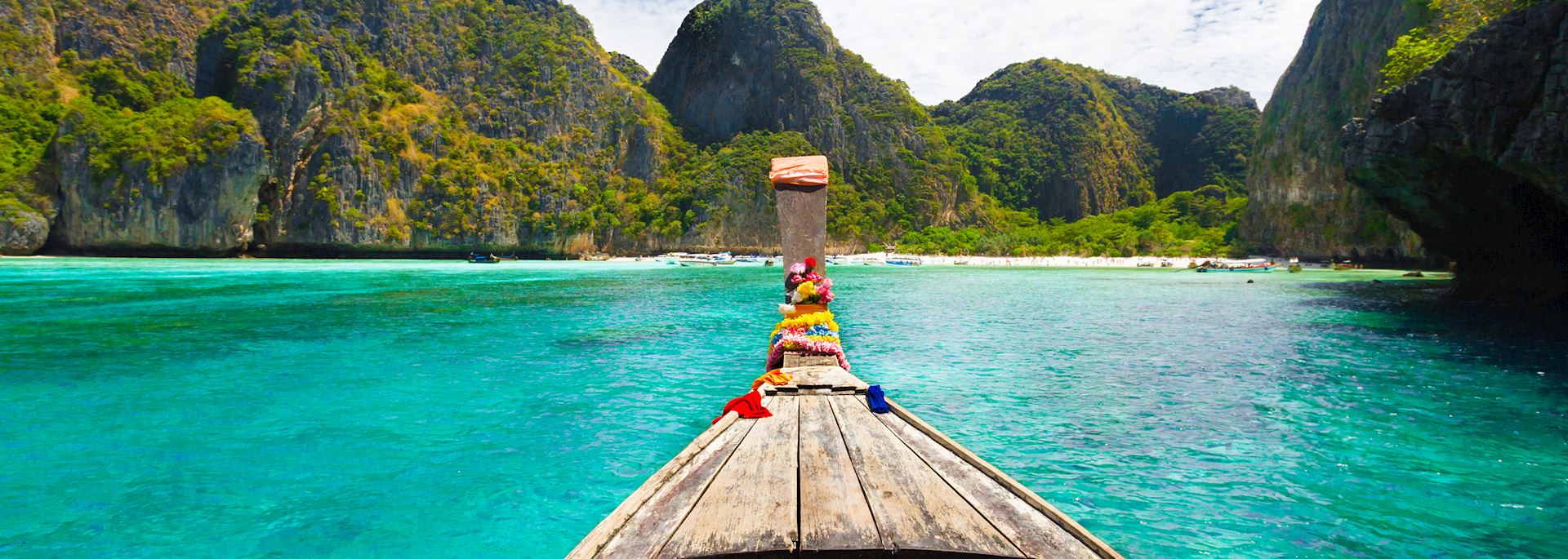
When is the best time to visit Southeast Asia?
- Month-by-month
The best time to visit Southeast Asia depends on where you want to go and what you want to do. There are some significant climate variations across the region, but rather than limiting possibilities, this makes Southeast Asia a year-round destination with good conditions for exploring throughout the year.
In general, the cool, dry season lasts from November to April across mainland Southeast Asia and the Philippines making this a good time to visit Thailand, Vietnam or Indochina, while Indonesia and Borneo are drier from April to October, and Malaysia offers year-round sun on one coast or the other.
- Make an inquiry
- Request a brochure
Month-by-month guide for traveling in Southeast Asia

Visiting Southeast Asia in January
January is a great time to visit Southeast Asia and is one of the driest months across the northern part of the region, with comfortable temperatures for beach going or more intrepid exploration. Thailand and Malaysia’s west coast beaches are bathed in sunshine, river travel in Vietnam is at its peak, and there are a host of festivals in Myanmar and the Philippines.
Events & Festivals
- Ati-Atihan is the Philippines’ largest festival. It takes place in Kalibo, with street dancing and wild costumes to celebrate an ancient land pact between settlers and indigenous Atis.
- Chinese New Year, Lunar New Year and Naga New Year are celebrated across the region with traditional festivals, drumming and dancing.
- Sinulog is Philippine city Cebu City's biggest annual event, featuring a huge street parade, live music and plenty of food and drink.
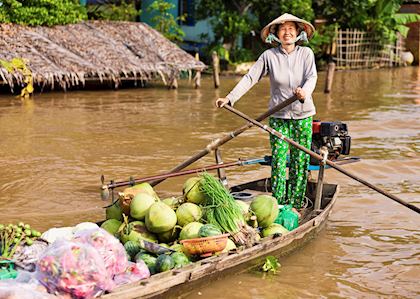
Visiting Southeast Asia in February
Pleasant weather across Myanmar makes February a good time to explore the plains, foothills and beaches. High water levels in Tonle Sap and the Mekong make it a good time for river travel in Cambodia, while it’s not too hot for exploring the temples of Angkor. For good-value beach breaks, the west coast of Thailand and Malaysia are good bets.
- Chin National Day (20th February) is a day of celebrating the culture, traditions, history and language of the Chin people in Myanmar. Festivities include traditional bamboo pole dances.
- Tet is the biggest festival of the year in Vietnam, celebrations for the lunar new year can last a week or more and travel may be busier.
- Wat Phou Festival sees Laos’ Buddhists attend a three-day festival in Champasak, taking part in processions, recitals, boat races and dances.

Visiting Southeast Asia in March
It’s shoulder season in Borneo with mostly dry weather, low visitor numbers and promotional rates making it a great time to visit. Thailand and Malaysia are hot and sunny offering the pick of beaches on both coasts, and it’s a great time to visit Halong Bay in Vietnam or Cambodia, but you’ll need to book well in advance.
- Easter brings holy week celebrations in the Philippines, include large-scale religious processions with floats, costumes, masks, food and music.
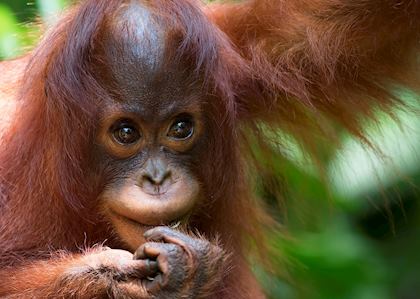
Visiting Southeast Asia in April
It’s reaching the end of the dry season in Thailand, Malaysia, Vietnam, Cambodia and the Philippines, temperatures are rising and visitor number are high. Book well in advance. It’s a good time to go trekking in Borneo and see orangutans, and Indonesia is beginning to dry out with promotional deals making it a good-value destination at this time of year.
- Songkran in Thailand, Thingyan in Myanmar and Lao New Year are celebrated with scented water thrown in the streets and onto passers-by as a cleansing ritual and a sign of goodwill.
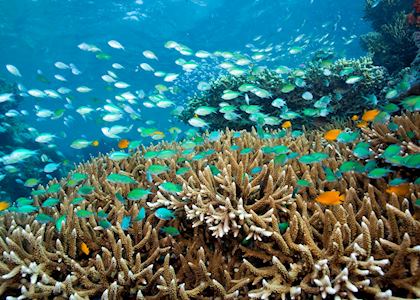
Visiting Southeast Asia in May
May is a great time to visit Borneo, Bali, Lombok or the east coast beaches of Thailand and Malaysia. With long hours of sunshine, clear seas for snorkeling and diving, good orangutan viewing and shoulder-season prices, it’s one of our preferred times of year to travel here. Heat and humidity are building in Vietnam, Cambodia and Laos in advance of the rains.
- Boun Bang Fai, normally held in May or June, is a festival that marks the sixth month of the lunar calendar in Laos with homemade fireworks and rocket competitions.
- Flores de Mayo is a month-long, countrywide religious festival in the Philippines celebrating the coming of the rains. Processions are sometimes held after dark and lit by candles, creating a wonderful ambience.
- Gawai Dayak is an annual harvest festival celebrated by the Dayak people in Sarawak, where it's a public holiday. It's marked by the sharing of food, decorated longhouses and traditional dress.
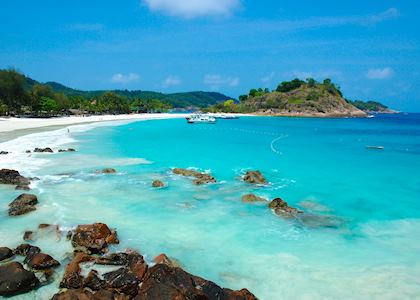
Visiting Southeast Asia in June
Diving season is at its peak in Tioman, Redang and the Perhentians off Malaysia’s east coast, while Indonesia and Borneo are hot and dry with ripe fruit drawing orangutans to lower branches making forest treks particularly rewarding. June is shoulder season in Thailand and Central Vietnam and a good time to find a hotel deal before the European school holidays begin.
- Chinlone Festival lasts for almost a month. This Mandalay festival sees hundreds of chinlone (cane ball) teams compete in the traditional sport of Myanmar to live music.
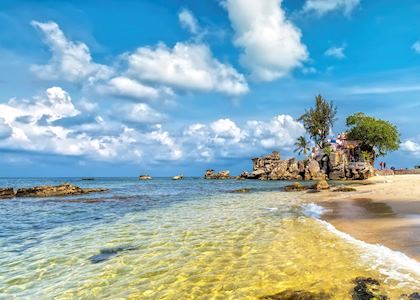
Visiting Southeast Asia in July
It’s peak season on Malaysia’s east coast and in Indonesia with great visibility for diving but higher prices and busier resorts. Good orangutan sightings and turtles on the beaches makes Borneo a popular destination. Central Vietnam is hot and sunny and cruising along the Chindwin River in Myanmar is at its peak but the rains make road travel difficult.
- Borneo Cultural Festival is a ten-day annual festival held in Sibu with music performances, contests and plenty of good food.
- Rainforest Music Festival brings renowned world musicians and indigenous musicians of Borneo gather in Kuching to perform, with lectures and workshops for visitors.
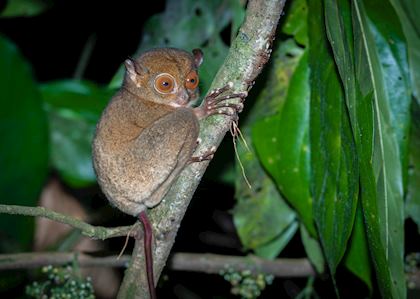
Visiting Southeast Asia in August
A great time for wildlife enthusiasts to visit Borneo, the weather is hot and dry in August with turtle hatchlings on the beaches and great trekking but busy hotels. It’s peak season in Indonesia with great weather for temple visits, jungle hikes or relaxing on the beach, and the Malaysian east coast beaches are hot and sunny. Book well in advance.
- Taungbyone Nat Festival is a major gathering place for spiritual mediums in Mandalay. This festival attracts pilgrims and visitors in their thousands to make offerings and enjoy dances and other celebrations in honor of two famous nats (spirits).
- Yadana Gu Nat Festival is an eight-day festival in Amarapura in Myanmar, led by spirit mediums said to be possessed by nats (spirits) during the ceremony. Ritual dances and songs are performed and visitors make offerings of food, flowers and money to the nats.

Visiting Southeast Asia in September
Borneo is fine and dry throughout, so it's still a very appealing time to visit for relaxing on the beach, snorkeling and wildlife watching on Kinabatangan River. The weather in Indonesia also continues to be hot and dry but the summer crowds have eased and prices have dropped making it a great time to visit.
- Borneo International Kite Festival sees hundreds gather at Old Bintulu Airport to fly brightly decorated and complex kites.
- Pchum Ben is an important Buddhist festival marked throughout Cambodia over 15 days, with the main celebrations taking place on the final day as locals pay their respects to deceased relatives.
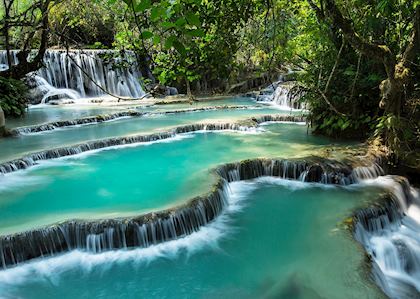
Visiting Southeast Asia in October
Dry weather begins to return to Laos and Cambodia with the landscape looking particularly lush after the rains. There are few visitors and early season offers make it a good value time to visit. Northern Vietnam is dry and sunny making it a good time to trek in Sapa, and it’s prime season for diving in Sipadan off Borneo.
- Boun Ok Phansa is a boat racing festival celebrated at the end of the rainy season in Laos. Elaborate boats are raced along the Mekong River and various festivities take place on the riverbank in honor of the Naga king.
- Deepavali/Diwali, the Hindu festival of lights, is celebrated throughout Borneo as families gather to pray and give gifts.

Visiting Southeast Asia in November
Temperatures rise and the weather is dry across Vietnam, Laos, Cambodia and Myanmar marking the start of the high season with rising prices and greater numbers of visitors. It’s a particularly good time to get out on Tonle Sap lake in Cambodia or go river cruising in Laos, but book well in advance.
- Bon Om Touk, the Cambodian water festival and one of the nation's most popular events, is celebrated over three days with concerts and boat races in Phnom Penh.
- That Luang Festival is a three-day religious festival in Vientiane where tens of thousands of monks and pilgrims gather at the That Luang or Grand Stupa bearing wax candles.

Visiting Southeast Asia in December
Vietnam, Laos and Myanmar are hot and dry and at the start of their peak season, book early to avoid disappointment and visit earlier in the month to avoid the most popular times around Christmas when prices rise considerably. It’s also the start of the peak season in the Philippines, though there is still a small risk of cyclones.
Our recommendations for when to visit Southeast Asia
- Not recommended
- Winter season
Southeast Asia trip ideas and travel guides
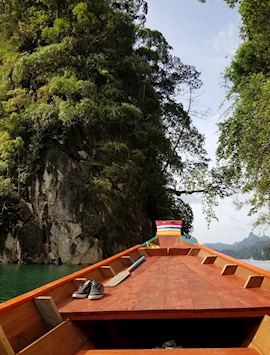
Thailand beach & rainforest escape
10 days from $3,050pp
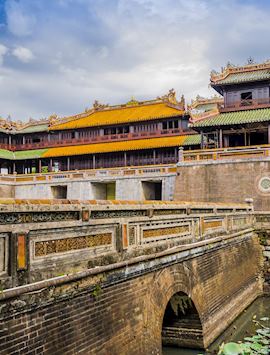
Vietnam's history, unexplored regions & UNESCO discovery
16 days from $6,395pp
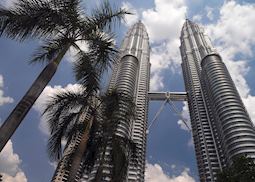
Asia's best city & beach combinations
10 min read

Crossing the border: multi-country trips through Southeast Asia

50 Essential travel tips for first time backpackers visiting Southeast Asia
- July 27, 2023
- curious goose
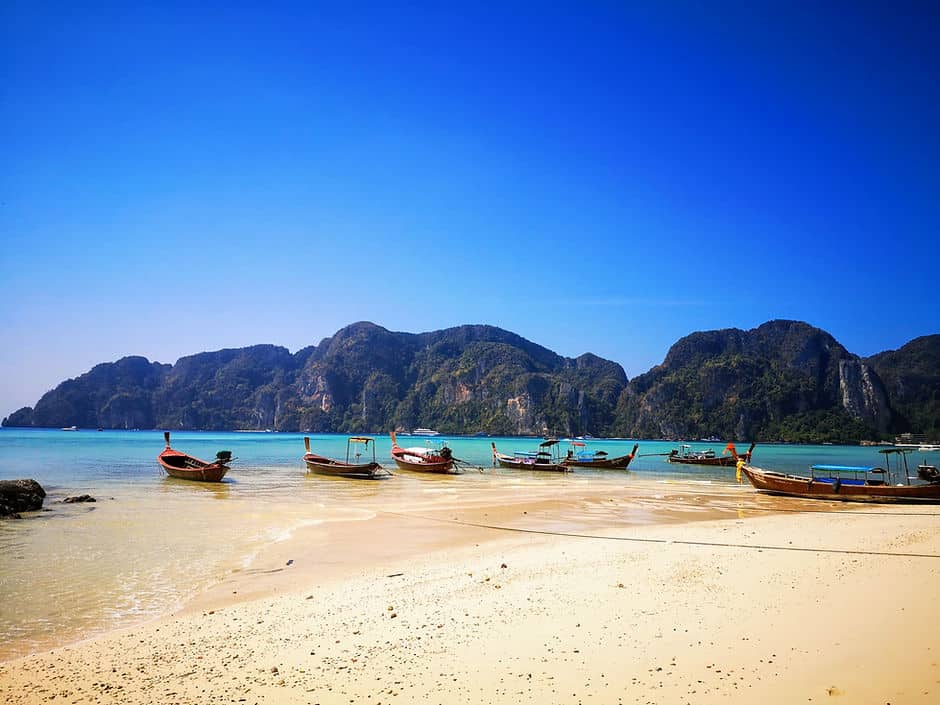
This post may contain affiliate links. I will receive a small commission if you use these links.
Make sure you read these essential tips for Southeast Asia to help plan your trip.
Southeast Asia is one of the most popular destinations for backpackers. It’s easy to see why – gorgeous sandy beaches, cultural temples, delicious food and bustling cities makes for an attractive mix. It’s also a safe and cheap place to travel, meaning that Southeast Asia is a great place for first time travellers getting to grips with backpacking and those on a budget.
Southeast Asia has been on my bucket list for years and in 2022, I spent 7 months travelling in Thailand , Vietnam , Cambodia, Malaysia and Indonesia. Based on my experience, I’ve put together 50 essential travel tips to help you plan your trip to Southeast Asia. These tips cover everything from what food and drink to avoid, to how to keep track of your budget while travelling and travel hacks to make life on the road easier.
These travel tips for Southeast Aisa will prepare you for a great trip and hopefully help to prevent you from getting into any tricky situations!
50 Essential travel tips for first-time backpackers visiting Southeast Asia
Practical information for travel in southeast asia, managing your budget and finances when travelling in southeast asia, top tips for getting around in southeast asia, food and drink in southeast asia, local cultures and traditions in southeast asia, travel health, packing tips.
- Lastly…things to remember when travelling
Travelling takes a lot of organisation and planning. Here’s a few hacks to help you have a smoother travel experience.
1. Get yourself a sim card as soon as you land
Often the best sim card deals can be found in the arrivals hall at the airport, with a ‘tourist sim’. I’d recommend getting a sim card as soon as you arrive in the country, especially if you are taking public transport from the airport / ferry / bus terminal to your accommodation. Most likely, you will be dropped off at a location in the centre of town (or at the side of the road as I experienced several times!) and having the internet to figure out where you are is very helpful.
2. Download an offline version of google maps before you arrive at a new place
Even if you have a sim card with data, you might not always have a signal to access the internet. Make sure that you download an offline version of google maps, covering the area you are travelling to. You might need to download several if the area you are travelling to is vast. Another handy tip is to ‘pin’ key locations onto your map, such as your accommodation, attractions, bus terminals and places to eat! That way, if you can’t access the internet you’ll still be able to find your way to key services and attractions.
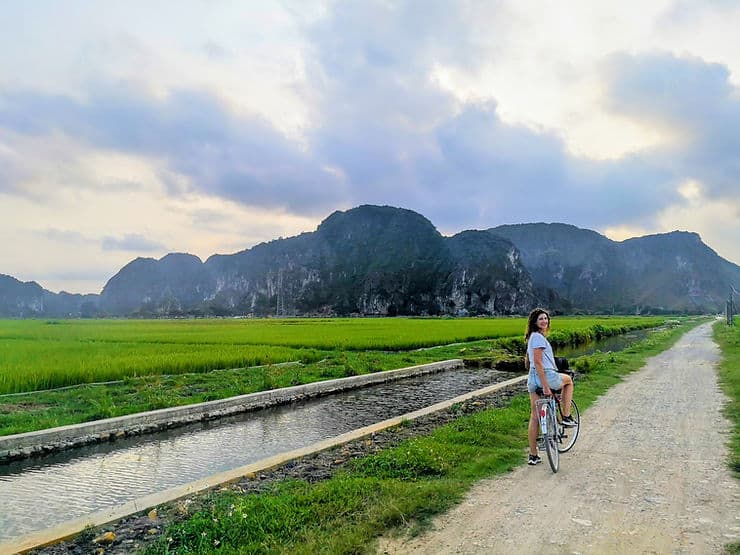
3. Screenshot or note down your accommodation booking confirmation and address
Don’t rely on being able to access the internet to retrieve the information of your accommodation. You’d be surprised how many travellers get off a bus in a new town and don’t know the address or even the name of the place they are staying at and can’t access their emails as they don’t have internet! Take a quick screenshot of your accommodation and travel bookings, or write the important information down in a notebook or in the notes folder on your phone.
4. Print any important documents you need to enter a country
For entering many of the countries in Southeast Asia, you’ll need a visa (and may need other supporting documents too). It always helps to have a printed copy of any important documents as well as the electronic version on your phone. This way, if your phone gets lost / stolen / runs out of battery, you’ll have a backup copy. If you are travelling between countries, your hostel or hotel might be able to print documents for you, or they can usually point you in the direction of a printing shop.
5. Be aware of scams
Travelling in Southeast Asia is an amazing experience and most of the local people you meet will be welcoming, friendly and helpful. However, you will also encounter locals who will try to take advantage of travellers. The most common scams usually involve taxi or tuk-tuk drivers, or money exchange kiosks. When travelling around in Southeast Asia, always negotiate the price and be clear on what the price covers. Only change money in authorised exchange kiosks – your accommodation should be able to help you with this.
How do you know if something is a scam? Usually you can tell if something doesn’t feel right. If you don’t feel comfortable and are unsure, just say no and move on. It also helps if you do your own research and plan beforehand. For example, if you research how much a specific A to B journey should cost in a tuk-tuk and the price you are being quoted is over double, you know they are trying it on.
6. Don’t put tissue paper down the toilet
As a general rule, putting tissue paper down the toilet is a no-no in Southeast Asia. There are some exceptions to this rule, for example in more modern, and usually more upscale resorts. However, in most places, the pipes cannot cope with the paper and they will block, which is not nice for anyone. Use the bin provided or embrace the water gun!
7. Read reviews
Whilst it’s not a good idea to get hung up on one negative review out of 10’s of positive ones, reading reviews is definitely worth doing. Whether this is for accommodation, attractions or transport. Filter the reviews to ‘Newest first’ and make sure you know what to expect before you part with your money.
8. Check the weather when planning your trip to Southeast Asia
Generally speaking, October – March is the best time to travel in Southeast Asia as this is the dry season and the weather is cooler and more manageable. However, research the individual countries you want to visit to plan which month would be best for you to travel.
9. Plan your route but allow for flexibility
Whether you are visiting one country or several countries in Southeast Asia, plan your itinerary beforehand. Having a rough plan of your route is a good idea so that you have an idea of what you would like to see within your time frame. However, don’t be rigid with your plans. Be flexible and embrace opportunities to visit places you hadn’t included in your original itinerary. Having unexpected experiences is one of the best things about travelling!
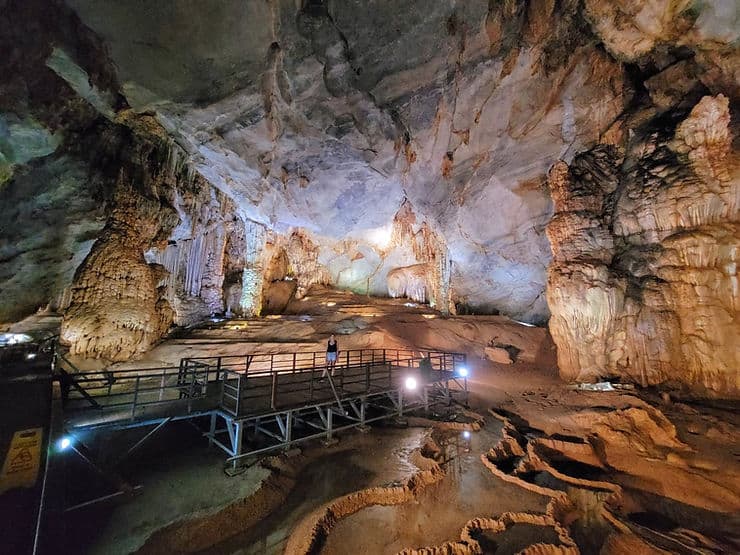
Budgeting for your trip is one of the most important things you can do, both before and during your travels. Make sure that you read these top tips to help you manage your budget and keep track of your spending when travelling.
Need help saving for your dream trip? Check out my 12 super simple tips for how to save for full time travel
10. Have a couple of good debit cards
One of the most important things you will need when travelling is a safe way to access your money. Instead of using your normal bank debit card, which may have expensive fees for use overseas, get yourself a new debit card, purely for travelling. I use a Starling Bank debit card, but I’ve also heard good things from travellers about Revolut and Monzo too. Instead of having all your money on your travelling debit card, simply ‘top it up’ when you need and keep just a small amount on the card. That way, if you lose the card, or it gets stolen, you don’t risk losing a lot of money. For this same reason, having two debit cards you can use in this way is also a great idea (just make sure you keep them in different places!).
11. Pay for large items on a credit card
When booking things like accommodation, travel (especially flights) and activities, always use a credit card. Credit cards offer a much higher protection on spending and if something goes wrong with the supplier (for example, if the service provider goes out of business), your credit card company can help you to claim your money back. I have a Halifax Clarity credit card which is great for travelling and using abroad. Shop around and find a credit card with low or zero exchange fees or charges for using it overseas.
12. Always carry some cash
When travelling in Southeast Asia, it’s a good idea to always have a bit of cash on you. If you are travelling to more remote areas, or buying something from a local shop or stall, you will need to pay for it in cash. Just be aware that many of the ATM’s in Southeast Asia charge for withdrawing money and they have a limit for how much you can withdraw, which is annoying!
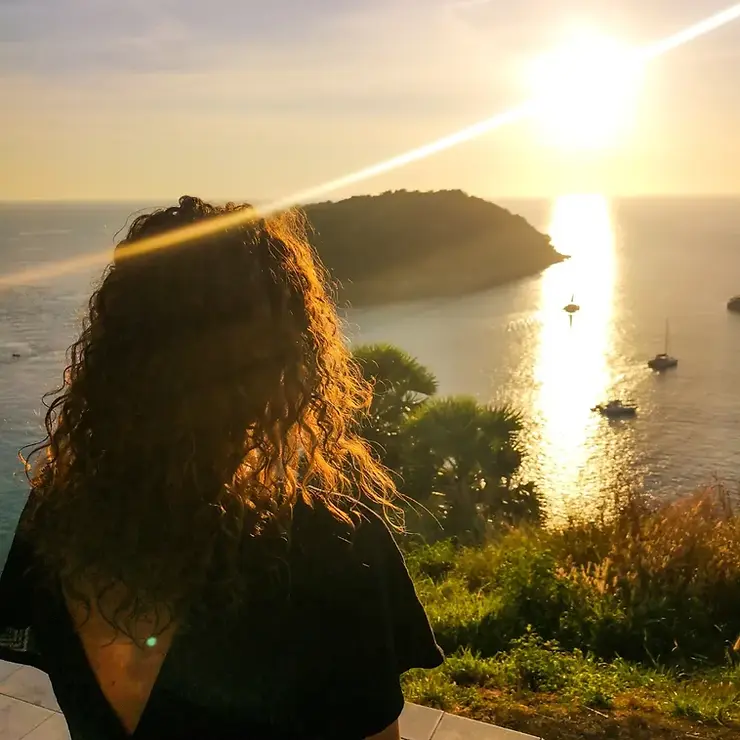
(Image: Windmill Viewpoint, Phuket, Thailand)
13. Make sure you can access your bank account if you lose your phone
Most of us manage our bank accounts via an app on our phones. However, what happens if your phone is lost or stolen? Make sure that you know how to access your bank account online or over the phone.
14. Set yourself a travel budget and track your daily spend
Possibly THE most important element of travelling is budget management! It doesn’t sound exciting (and it’s not!), but it’s vital if you don’t want your trip to end abruptly because you’ve run out of money.
When planning your trip, do your research and set a daily budget. This should be based on the prices of accommodation, food, transport and activities in your destination and also what kind of experience you want to have (on the scale of budget backpacker – luxury holiday). Read my step by step guide on How to budget for full time travel and create your own Travel Budget (you can also download my FREE Travel Budget Spreadsheet Template).
Make sure you record your daily spend to keep you on track. I use the free version of @travelspendapp . Managing your budget means that if you’re careful in some places, you can splurge on more expensive trips in others, such as an overnight luxury cruise to Halong Bay in Vietnam
15. Take advantage of travel rewards programs
There are plenty of rewards programs available to savvy travellers. One of my favourite reward programs is the Booking.com genius program. The more qualified bookings you make through your Booking.com account, the more genius points you can earn, which can get you discounts and upgrades on certain hotels, transport and experiences.
Another great rewards program, if you are from the UK, is Topcashback . Simply login to your Topcashback account and make your booking with one of the travel providers via the Topcashback site to earn cash back on your purchase.
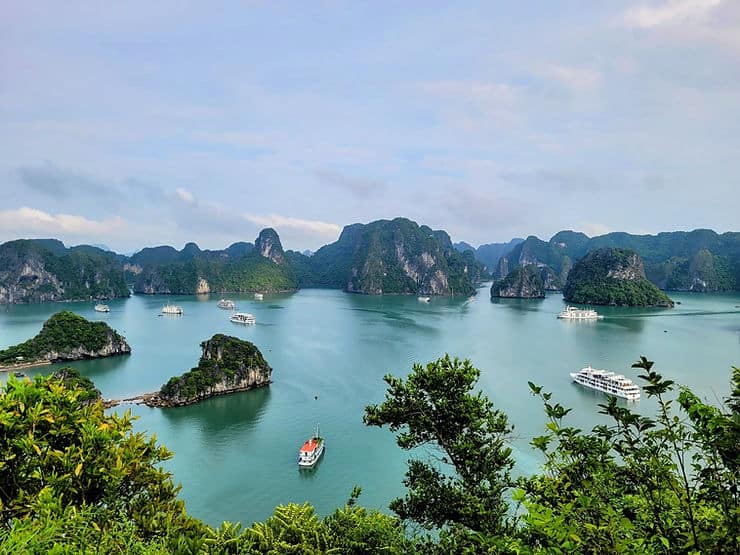
Southeast Asia is a large, diverse continent and even the individual countries within Southeast Asia are massive, so you’re going to want to travel around and explore as much of it as possible. Getting around in Southeast Asia is not always the most straightforward, so here’s some tips to help you navigate public transport.
16. Shop around for the best deal on public transport
During the 7 months I spent in Southeast Asia, I booked a lot of my bus and ferry journeys online. One of the best booking platforms for transport in Southeast Asia is 12go . Camboticket in Cambodia is also another good option. (For booking tours, Viator , Get your Guide and Klook are all great platforms). But don’t just rely on websites. Speak to your hotel or hostel and get their advice. Sometimes they can tell you about transport routes or tour companies that don’t appear on the larger comparison websites. Whatever you are booking, shop around and get a couple of prices for the best deal.
If you are travelling a longer distance, or between countries, don’t assume that travelling by plane will always be more expensive. Sometimes a flight can be cheaper, or a similar price to a long distance train, especially if you have carry-on only bags. It’s also worth taking into consideration the journey time. If a flight is only £30 more but takes 14 hours less than the bus, it may be a better option for you.
17. Travelling from A to B is not as easy as it sounds!
Travelling from A to B sounds easy (and it should be!), however travelling from A to B in Southeast Asia usually ends up being a lot more complicated than it needs to be! Don’t be surprised if you are asked to change buses several times throughout your journey as different drivers and companies take over each section of the trip. I took a journey in Thailand from Railay in Krabi to Koh Samui which took 12 hours and consisted of 1 boat, 5 buses, 1 ferry and a taxi (which was 4 more buses than expected!) Try to stay patient and go with it, it won’t make you feel any better getting stressed about it.
18. Give yourself plenty of time for transfers
As I’ve mentioned, travel in Southeast Asia is usually not a simple process. Often journeys depart later than scheduled and will take a lot longer as the drivers make random stops along the way. If you are planning a journey that has transfers with different companies (for example, a bus journey followed by a ferry), make sure that you leave plenty of time between each leg of the journey, as you are most likely going to be late!
19. Prepare for delays or things to go wrong
You can see a theme emerging here! Most journeys in Southeast Asia are late, or delayed, or there’s been a miscommunication with your booking. Try to be patient and polite with the locals. Most local people I encountered in Southeast Asia were incredibly warm and friendly and willing to help. So, be respectful and don’t be rude if things don’t go to plan, it’s all part of the travelling experience!
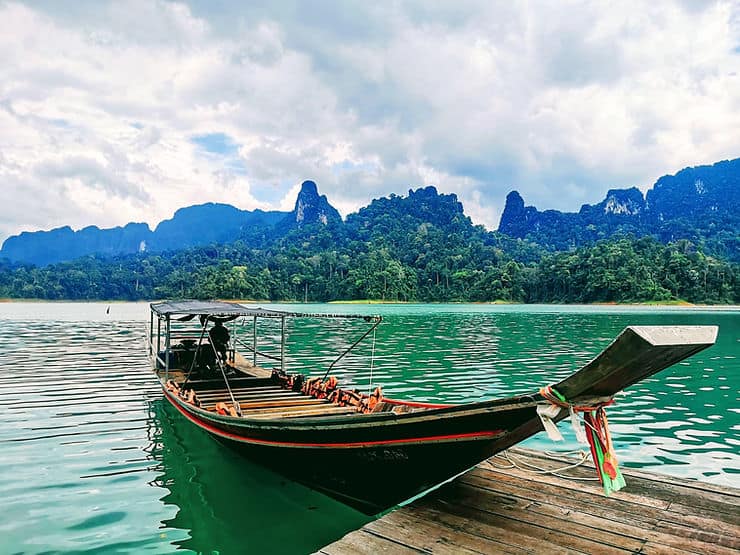
20. Don’t expect formal booking confirmations for public transport
If you’re the kind of person who likes to have written confirmation of everything, then prepare to get out of your comfort zone! As someone who is super organised and over-prepared, I had to learn to accept that formal booking confirmations don’t always exist in Southeast Asia when booking transport. Instead, you’ll be given a flimsy paper slip as confirmation, which at some point will be taken off you and replaced with a coloured sticker (which may later be replaced with another sticker!) They do love a sticker, especially in Thailand! Just take photos of your paper slip or sticker in case you lose it and you’ll be fine.
21. ALWAYS negotiate when ordering a tuk-tuk or taxi!
Rule no.1 when travelling in Southeast Asia – always negotiate! In some of the larger cities you can use Grab, Uber or Gojek which is great as it gives you an idea of what the cost should be. Even if you are getting a ride with a local driver, use the price on Grab/Uber/Gojek to help you negotiate. If that is not available, ask your hostel or hotel how much the prices should be so you have an idea of what is a good price and what is a bad price.
22. Get an international driving licence
If you are considering hiring a car or scooter in Southeast Asia, get yourself an International driving licence. If you are from the UK, you can pick these up in the Post Office for £5. Make sure you keep your licence and your international licence with you at all times when driving. Occasionally local police may stop you and ask to see your licence and if you don’t have it (or the correct one), they may fine you.
23. Don’t feel pressured into riding a scooter
Travelling in Southeast Asia and riding a scooter seem to go hand in hand (if you believe everything you see on Instagram, or read in some blogs). However, don’t feel pressured to ride a scooter if you don’t feel comfortable. The roads in Southeast Asia are uneven and windy and the traffic can be crazy, with people cutting you up and zig-zagging down the road. It is absolutely possible to travel in Southeast Asia without riding a scooter if you don’t want to. If you do want to ride a scooter, make sure your travel insurance covers you and always wear a helmet.
24. Have motion sickness tablets with you on travel days
Even if you don’t normally feel travel sick, you may find yourself feeling queasy. Many of the roads in Southeast Asia are quite hilly and windy and the drivers can be fast and erratic. Also, if you are on a small minibus, it is usually hot and cramped, making you feel even worse. (If you are in the north of Thailand, the Chiang Mai – Pai bus is notorious for making people feel ill). Buses aside, you will likely be taking several boats and ferries during your time travelling in Southeast Asia and some of the boat crossings can be bumpy. Make sure that you have some motion sickness tablets with you for your journey. These can be picked up cheaply from 7/11 in Thailand and also most pharmacies or shops.
25. Pack warm clothing in your day bag on travel days
If you are travelling long distances on a coach or sleeper bus, make sure you keep a warm top or hoodie with you. The buses in Southeast Asia are renowned for having the coldest air conditioning!
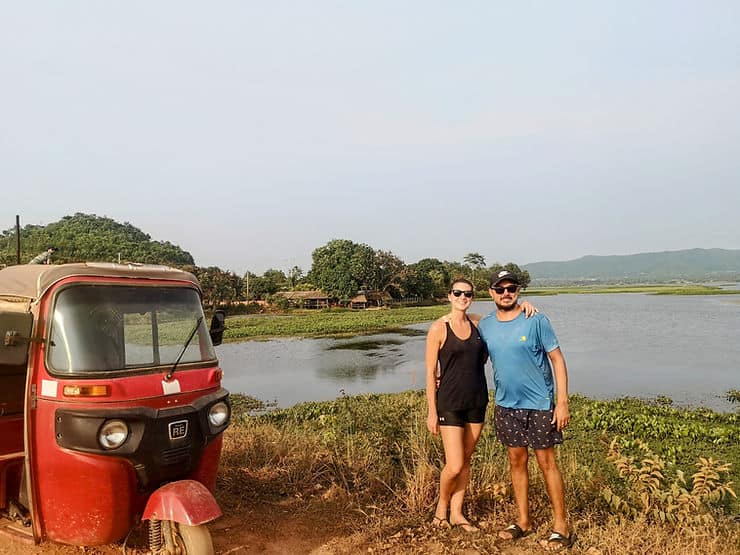
Sampling the food and drink in a new country is all part of the travelling experience and one of the best parts of visiting Southeast Asia is to eat the local food. Here’s a few tips to keep you safe and avoid the dreaded traveller’s belly!
26. Don’t drink the tap water
Unless you want to spend a couple of days being ill, don’t drink the tap water! Bottled water is very cheap to buy, Unfortunately, this does often mean that you will be using a lot of single-use plastic, which is a big problem in Southeast Asia. Some larger cities such as Bangkok, Phuket and Chiang Mai in Thailand have filtered water machines where you can top up your refillable water bottle for a fraction of the cost.
27. Be careful of the fruit!
It can be hard to stay healthy when travelling and the fruit in Southeast Asia is delicious, however, just be careful where you buy it from. There’s plenty of street stalls selling pre-cut fruit. Most of it will be fine, however you don’t know how long it has been sitting there getting warm and also whether it has been washed in clean drinking water. Eating dodgy fruit can make you really sick and wipe you out for several days – believe me! Try to pick places where they cut the fruit fresh in front of you, or buy whole fruit which you can peel/cut yourself.
28. Eat the street food!
The street food scene in Southeast Asia is brilliant (plus its great for your budget too!) The street markets are a lively buzz of noise and smells, creating a great atmosphere. Make sure you go to as many street food markets as you can, it’s all part of the Southeast Asia experience! If you buy meat from a street vendor, make sure that they fry it / cook it in front of you. Eating meat that has been left out for a while is another thing that could leave you chained to the bathroom for a day or two.
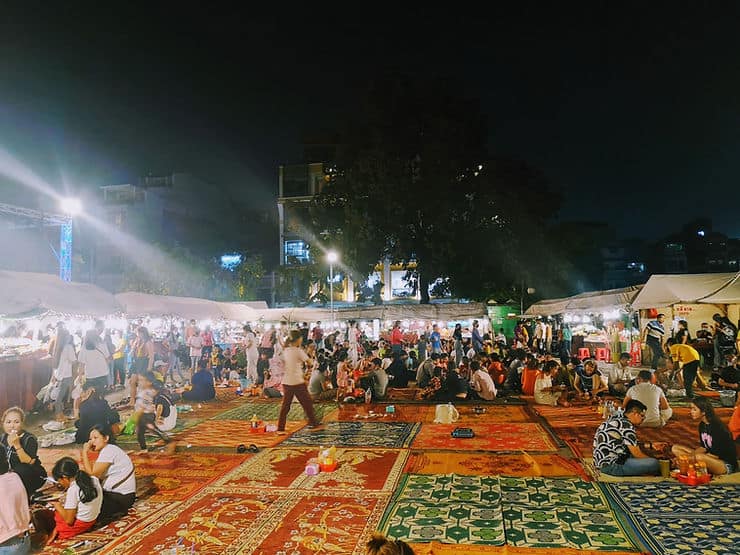
29. Try local dishes
When you visit somewhere new, make sure you know what the local dishes are and try them. Ask the locals you meet what food you should eat whilst you are there. There’s often regional variations of national dishes too.
30. Don’t be put off by the interior (or lack of!) a place
Some of the best food I’ve eaten in Southeast Asia has been whilst sitting outside on a tiny plastic stool at a metal table! In my experience, the small, family-run local restaurants have the best food and even better, they are the most budget-friendly too!
31. Bring a reusable water bottle and bag
As I’ve mentioned, some of the larger cities and towns in Southeast Asia do have places where you can top up your reusable water bottle. There are also some cafes which will allow you to top up for a small charge. Reusable water bottles are also vital for taking on some of the amazing hikes Thailand has to offer. Tip – buy an insulated bottle to keep your water cool!
Take a reusable cotton tote bag too for your shopping, rather than asking for a plastic bag each time you go to the shop. This foldable tote bag is perfect as it has a zip to keep your valuables secure too.
32. Check the spice level!
Spicy food in Southeast Asia is on a different level! A ‘mild’ dish is comparable to a medium in the UK. Don’t be afraid to ask for no chilli or for a dish to not be spicy.
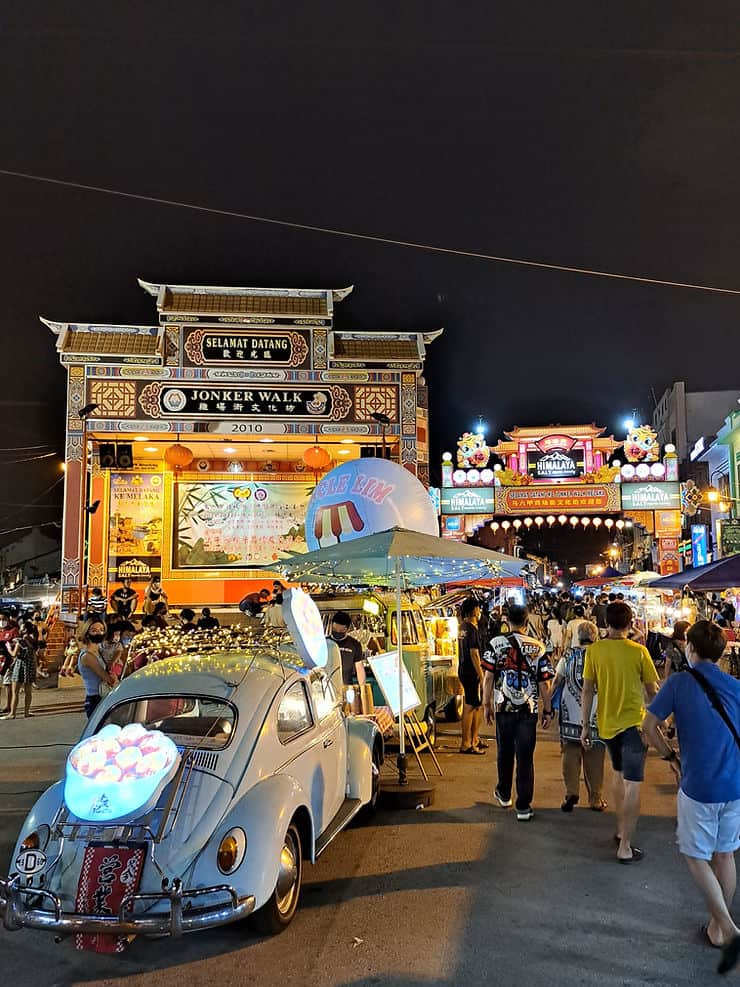
Experiencing a different culture and learning about the history and traditions of a place is one of the best bits about travelling. Read these four things you must do to make sure that you are respectful and get off to a great start with the locals when travelling in Southeast Asia.
33. Learn basic phrases
If you are travelling in another country, even just for a couple of weeks, it’s a great courtesy to know a couple of key phrases, such as Hello and Thank You. Even though English is widely spoken across Southeast Asia, locals love it when you try to speak a little of their own language and will be happy to teach you some new phrases.
34. Be respectful
Southeast Asian culture is very different to western culture and each country in Southeast Asia has their own traditions and cultural differences. Make sure that you know how to behave in certain situations and be respectful. For example, women should not approach, converse with or touch Monks. Women also cannot enter certain shrines or temples whilst menstruating.
Travelling to Bangkok? Make sure you visit these three temples
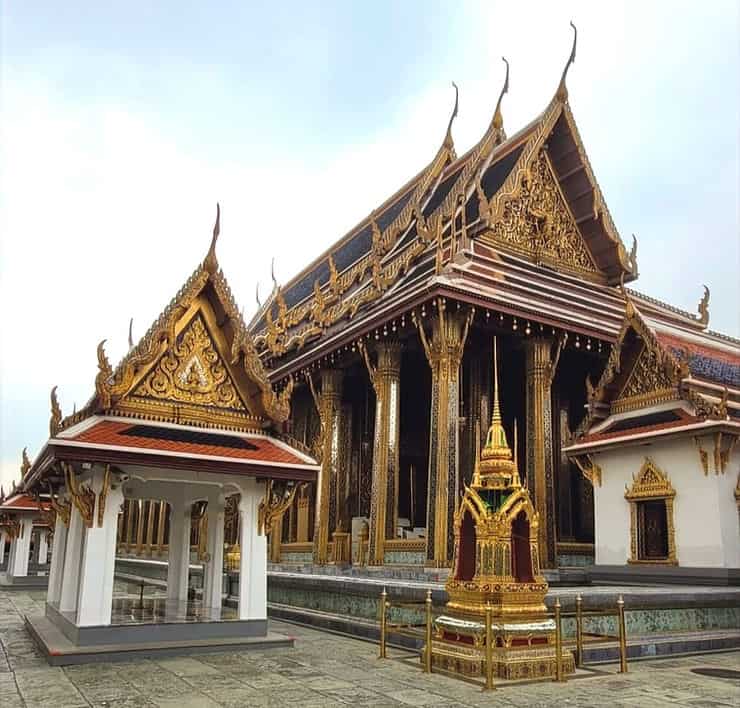
35. Dress appropriately
Whilst both men and women should make sure that they are respectfully dressed when entering a temple or government building, this mostly applies to women. Whether you’re exploring Ankor Wat , in Cambodia or the Grand Palace in Bangkok, women must always cover their knees and shoulders when visiting a temple.
When bathing in certain spots, it is respectful to cover up. Wearing a bikini is acceptable at most public beaches and in your hotel or hostel pool, however, if you are visiting a local bathing spot, you will notice that Southeast Asian women wear shorts and a t-shirt to bathe in. It is polite to do the same.
36. Take off your shoes
This is common practice in many places throughout Southeast Asia, but it is mostly associated with Thailand. Shoes should always be removed before entering a temple, but you will also need to remove shoes before entering other places too. If you are staying in a small guesthouse, or homestay, it is polite to leave your shoes outside. This is the same if you enter a small, local shop and even when you travel on certain boats and buses (especially the sleeper buses in Vietnam).
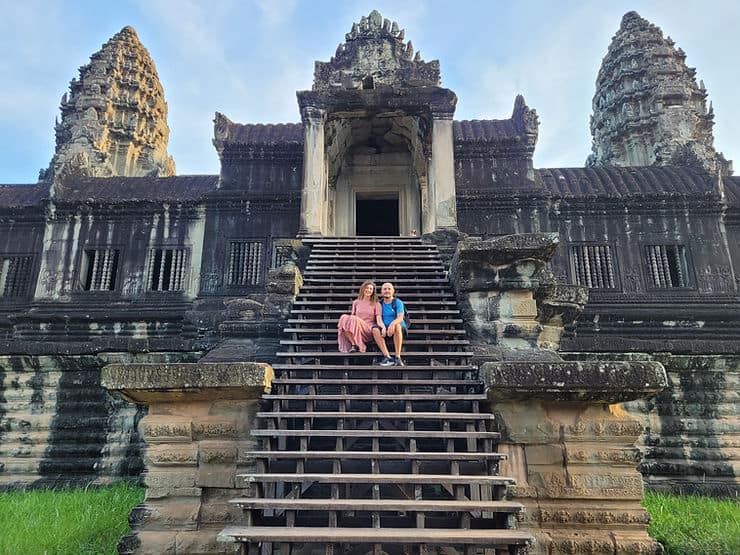
Prepare for your trip to Southeast Asia by making sure that your health requirements and needs are taken care of before you travel…
37. Check what vaccinations you need before you go
When planning a trip to any new country, it is important to make sure you have received all the relevant vaccinations beforehand. If you are in the UK, you can check the NHS website to see which vaccinations are recommended for the country you are visiting and which vaccinations you can get for free on the NHS.
38. Stock up on sunscreen
Suncream is not widely available in Southeast Asia, especially if you are travelling away from the main tourist holiday destinations. It is also very expensive. You will find lots of ‘sun serums’ or ‘daily lotions with spf’ – be careful with these, whilst they do offer some level of protection, they are not full sun creams and are not recommended for using while sunbathing. If you are only travelling for a short amount of time, take several bottles with you from home, if you have room.
39. Take any medication / feminine products with you
If you are travelling to some of the smaller islands, or more remote places in Southeast Asia, there is not always a large pharmacy available. So, if you need medication, make sure that you bring it with you and restock it before you run out. Feminine products can be expensive too, so if you can, bring these with you.
40. Always carry medication for ‘travellers belly’
It’s not nice to talk about but almost every traveller will experience an upset stomach at some point during their travels in Southeast Asia (no matter how careful you are). Although the best advice is to rest and let the bug ‘pass through’, that is not always possible, especially if you have a bus journey to get through. With that in mind, carrying some tablets for diarrhoea will be a lifesaver!
41. Always have a toilet roll with you on travel days!
This goes hand in hand with the above – most toilets in Southeast Asia don’t have toilet paper and there’s usually a small fee for using them, so carry some small change too.
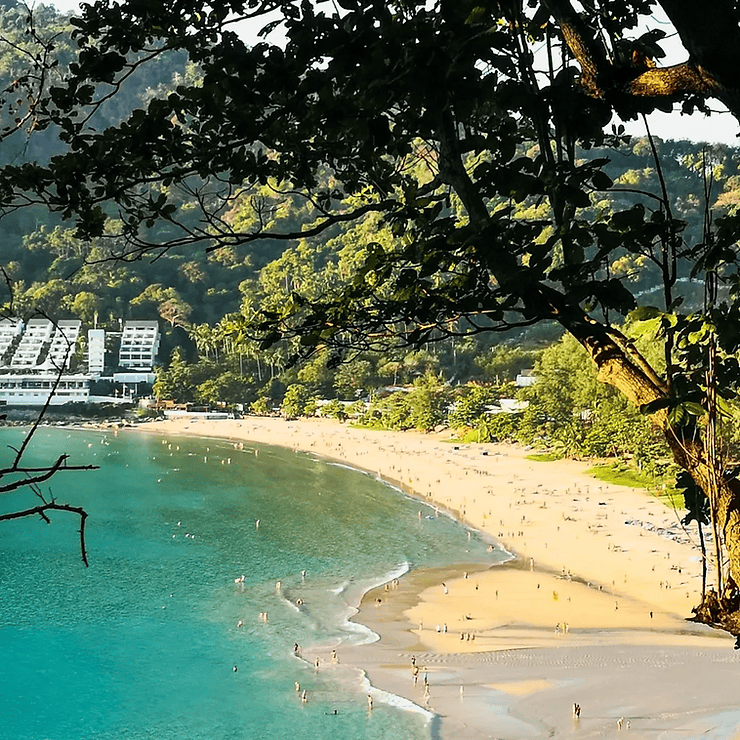
Depending on how long you are travelling in Southeast Asia for, your packing list will vary. This is also true if you are planning a long trip and are visiting other places outside of Southeast Asia too. So, rather than include a full packing list in this post, here’s a couple of top tips to help you pack better.
42. Take a Scarf or sarong
A scarf or sarong is one of the most versatile items you can pack in your bag. It is great for covering your shoulders in a temple, laying on at the beach, throwing on over a bikini, using it as a pillow on travel days or keeping you warm on the buses! Plus it takes up virtually no space in your bag!
43. Pack layers
You definitely don’t need as many clothes as you think you do, and you will end up wearing the same things over and over! Pack light things that you can layer and roll up small in your bag. In terms of shoes, one pair of trainers, one pair of flip flops and one pair of Birkenstock or chunky walking sandals will be suitable for pretty much everything in Southeast Asia. I lived in my Birkenstocks for pretty much the whole year!
44. Leave room for new clothes!
Don’t go shopping for everything before you leave home. The clothes in Southeast Asia are so cheap and let’s face it, most of the clothes you will buy at home will most likely come from Southeast Asia anyway! If there’s anything you’ve forgotten or wished you had packed, you will more than likely be able to buy it in Southeast Asia.
45. Be savvy with your chargers
There’s nothing worse than having a bag full of cables and charging wires! A lot of devices will accept the same charger cable and this is a great way to reduce the number of wires you take. For example, my laptop wire will fit my phone and my Go pro, meaning I only need one wire for three devices. (I do also have a single USB cable that will plug into an adaptor so I can charge two things at one, but this takes up hardly any room). I’d also recommend putting your wires into a small organiser case , so they are easy to locate in your bag.
46. Embrace the packing cube!
Packing cubes are a lifesaver when it comes to packing for travelling. Even if you are sceptical about it at first, you will soon realise how handy they are. It’s a great way to separate (and easily locate!) your clothes in your bag. They also help to condense things down in your bag!
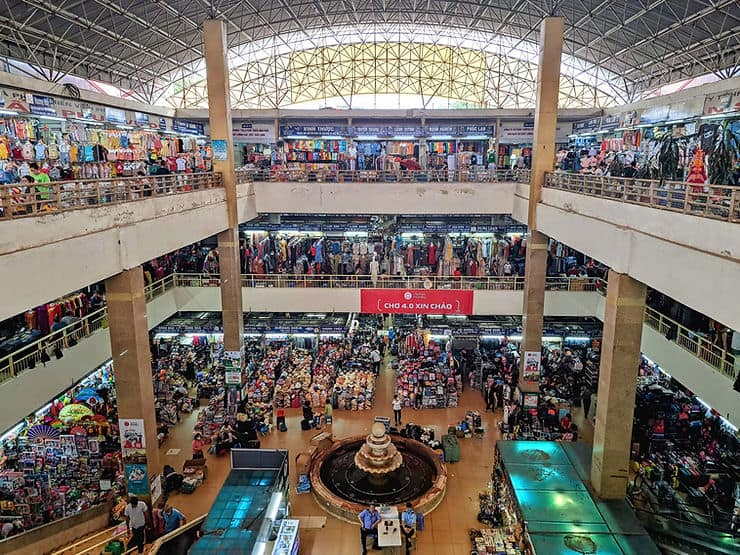
Making the decision to go travelling can be scary but it is also super exciting! Have the best time and remember that comparison is the devil!
47. Chat to others
One of the best parts of travelling is meeting other like-minded travellers. There’s a reason that Southeast Asia is one of the best places to travel solo. There’s so many great hostels and Facebook groups, where you can meet up with other people.
48. Everyone has bad days when travelling
You will have THE BEST time travelling, but there will also be some days that don’t quite go to plan and other days where you are tired or may feel homesick. The best advice I can give you is not to dwell on those days, it is completely normal and usually after a good night’s sleep and a comfy bed, you will feel much better.
49. Don’t compare your journey to others
Everyone’s travel experience is different and your trip will be unique to you. Don’t get caught up in comparing your journey to everyone else’s, just enjoy and embrace your own travel experience.
50. Have fun!
Travel is one of the best things you can do (in my totally biased opinion!). Whether you’re travelling in Southeast Asia for a few weeks or a few months, relax, go with the flow and HAVE FUN!
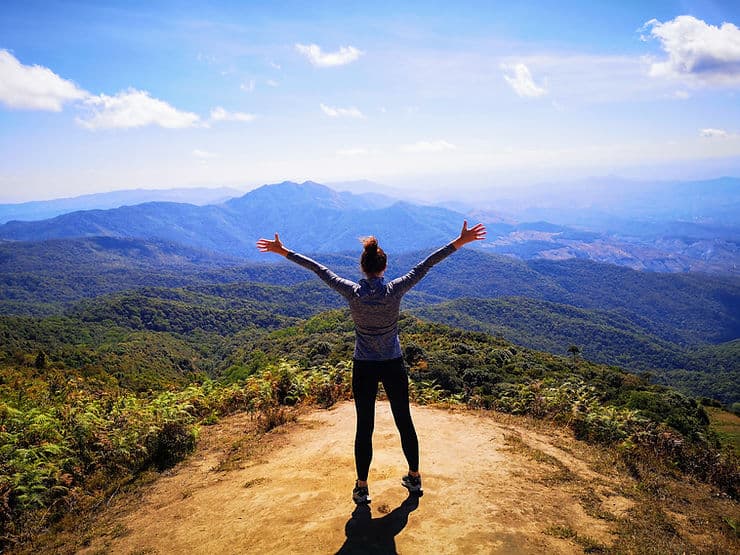
Related Posts
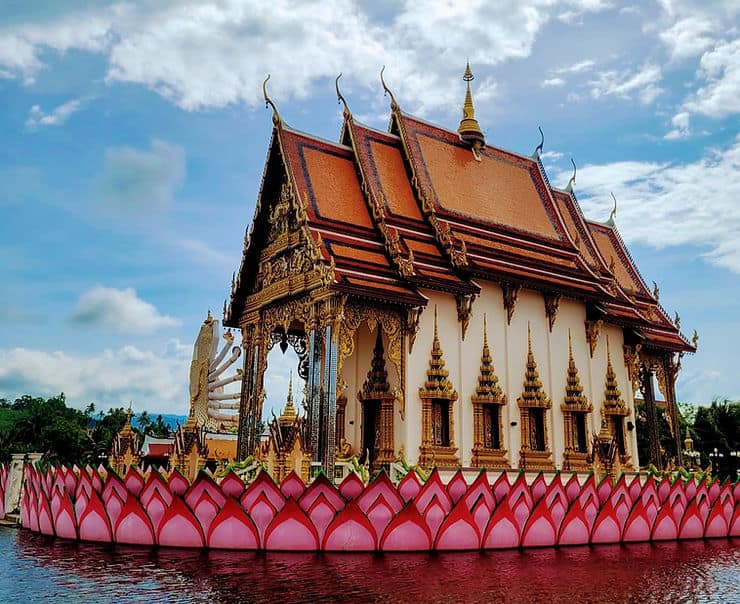
Top 15 things to do on Koh Samui, Thailand
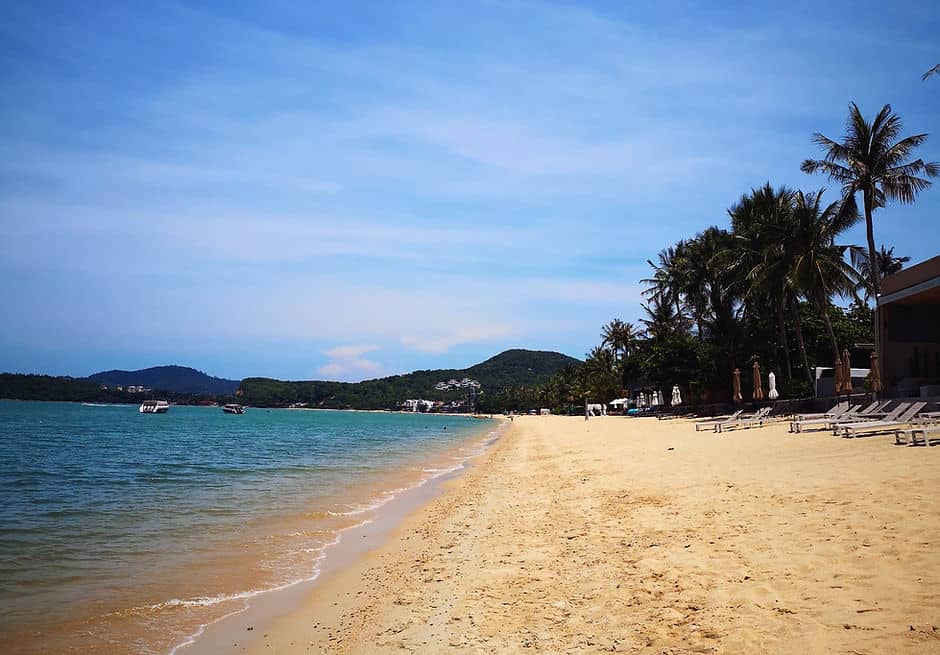
A guide to visiting Koh Samui, Thailand
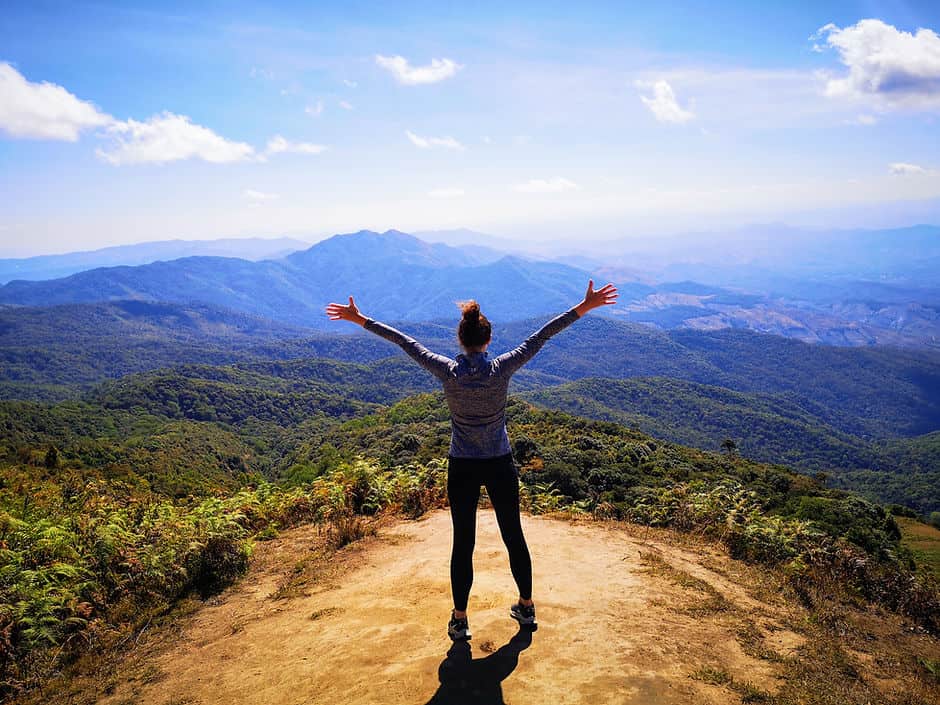
10 Unmissable hikes in Thailand
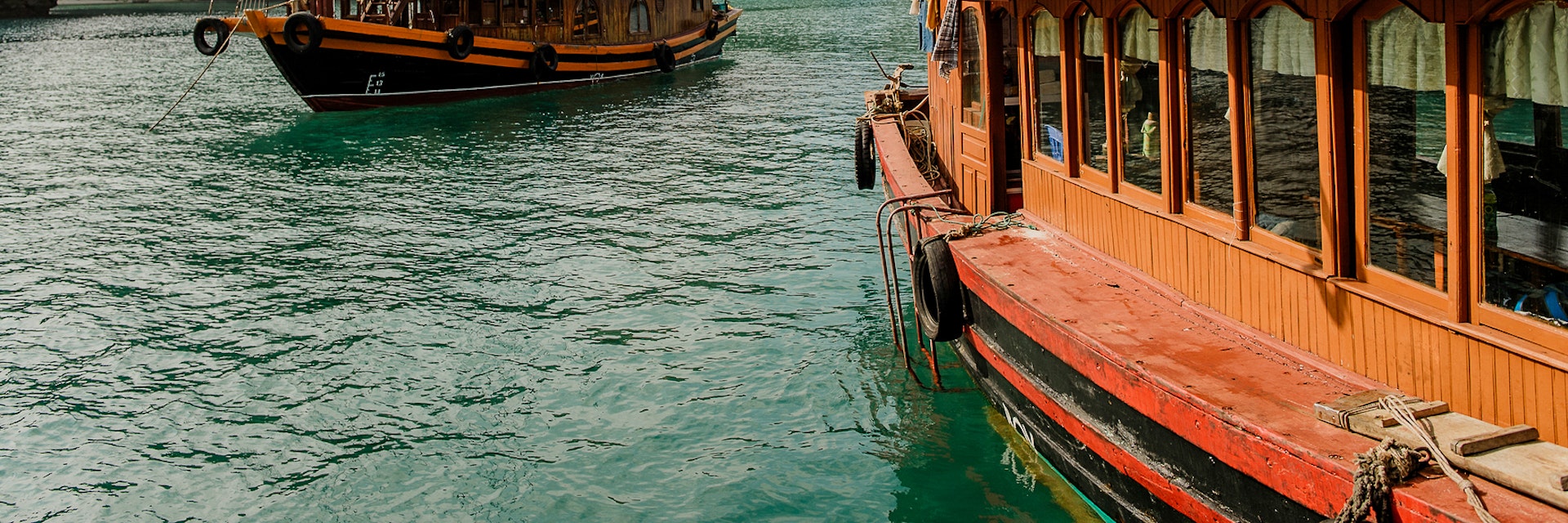
Helena And Laurent Martin / Stocksy United
Southeast Asia
Wrapped in rainforests, edged by golden sands, crowned by volcanoes, studded with ruins of lost civilizations: this is Southeast Asia as you've always imagined it.
Attractions
Must-see attractions.
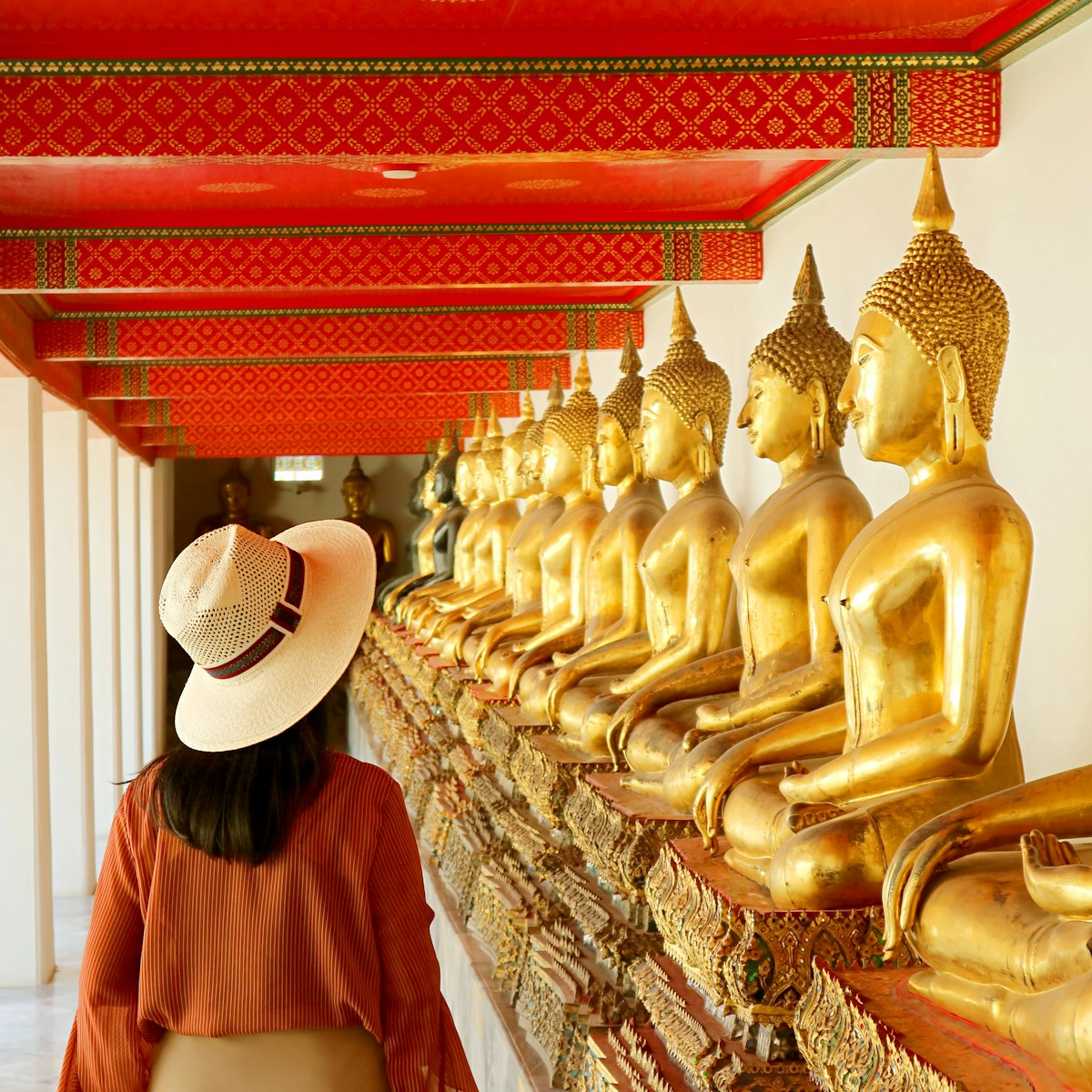
Ko Ratanakosin & Thonburi
Wat Pho is our absolute favorite among Bangkok's biggest sights. In fact, the compound incorporates a host of superlatives: the city's largest reclining…
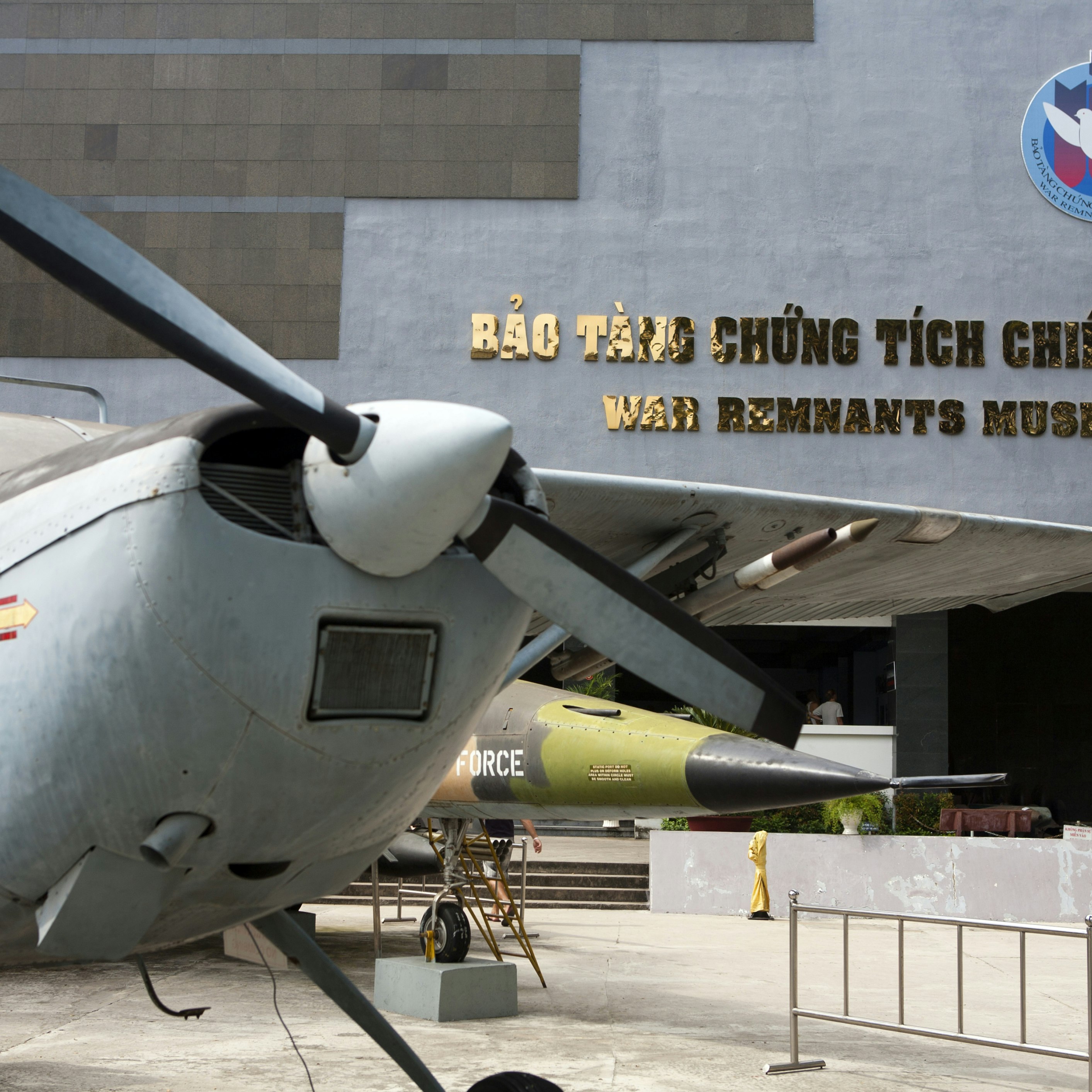
War Remnants Museum
Ho Chi Minh City
To understand the US invasion of Vietnam, and contextualize its devastating impact on the country's civilians, this remarkable and deeply moving museum is…
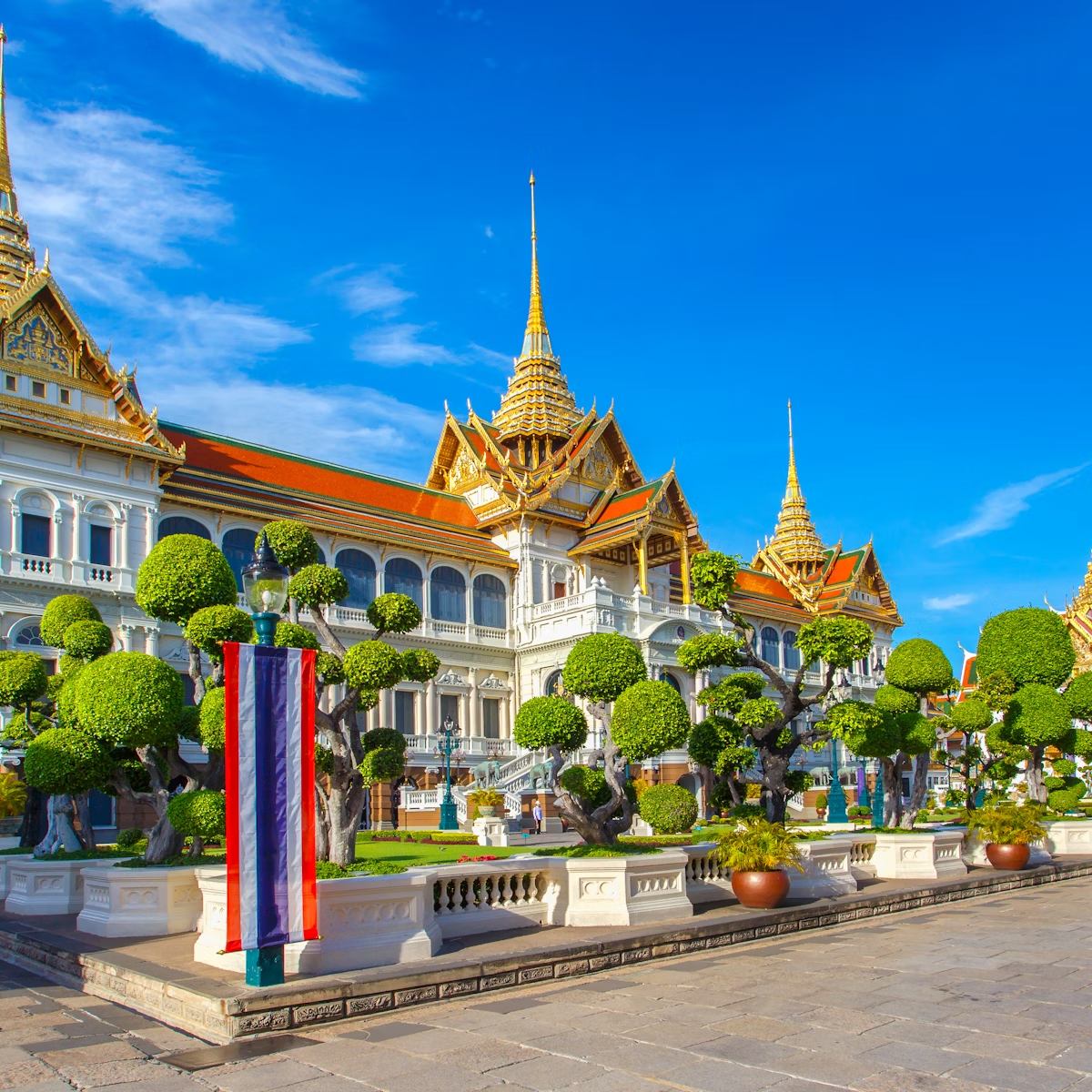
Grand Palace
The Grand Palace (Phra Borom Maharatchawang) is a former royal residence in Bangkok that was consecrated in 1782. Today, it’s only used on ceremonial…

Wat Arun is the missile-shaped temple that rises from the Chao Phraya River's banks. Known as Temple of Dawn, it was named after the Indian god of dawn,…
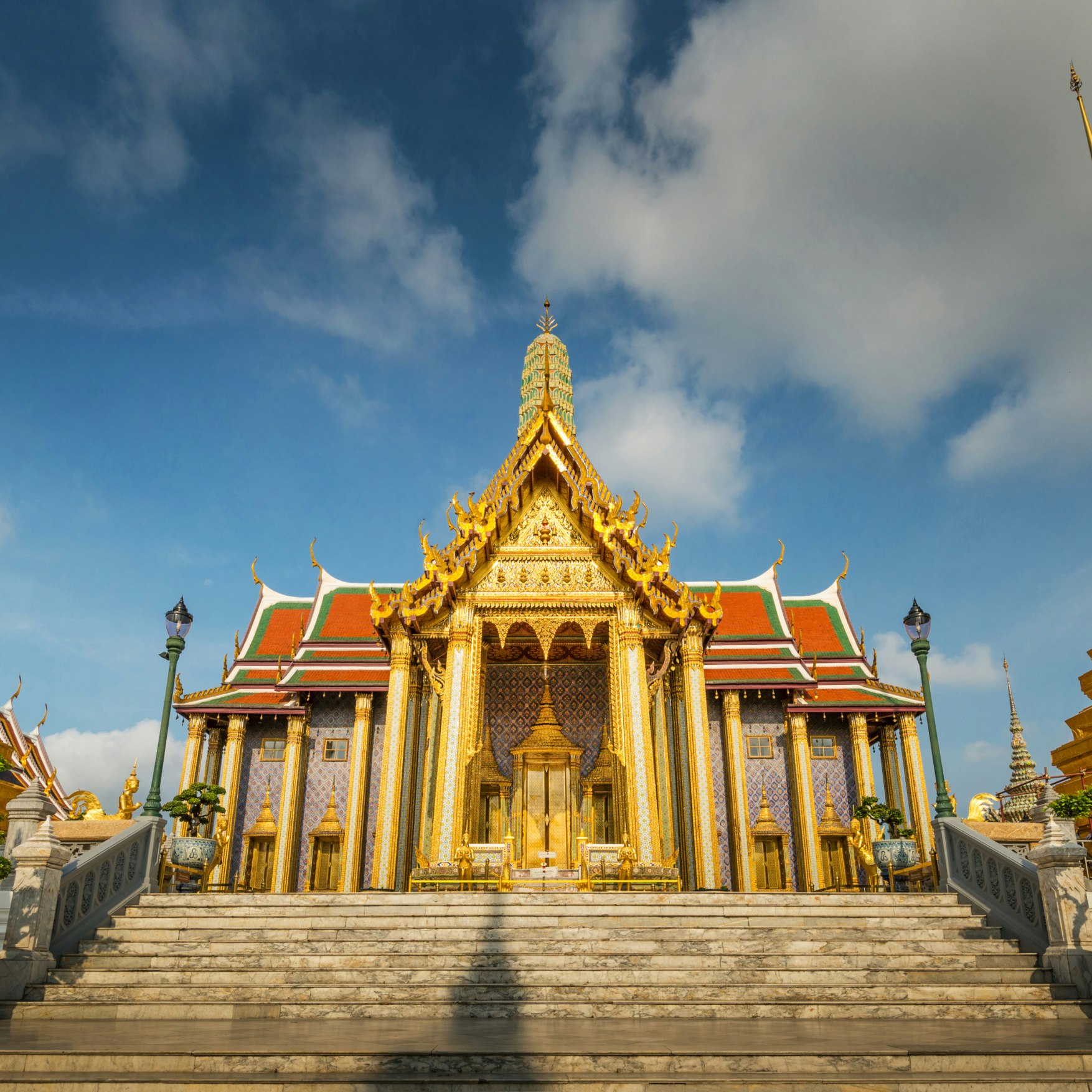
Wat Phra Kaew
Architecturally fantastic, the Wat Phra Kaew temple complex is also the spiritual core of Thai Buddhism and the monarchy, symbolically united in what is…
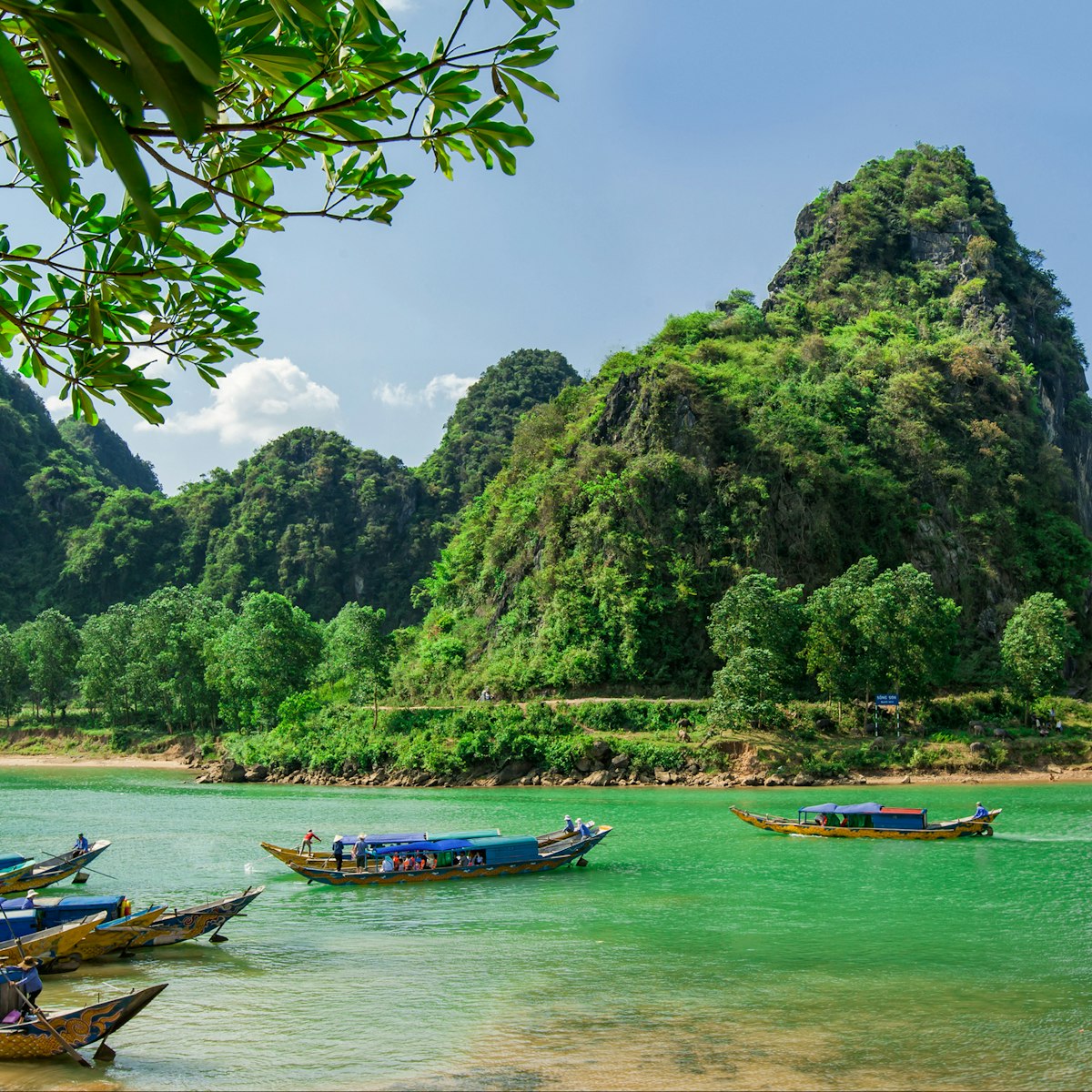
Phong Nha-Ke Bang National Park
North-Central Vietnam
Designated a Unesco World Heritage Site in 2003, the remarkable Phong Nha-Ke Bang National Park contains the oldest karst mountains in Asia, formed…
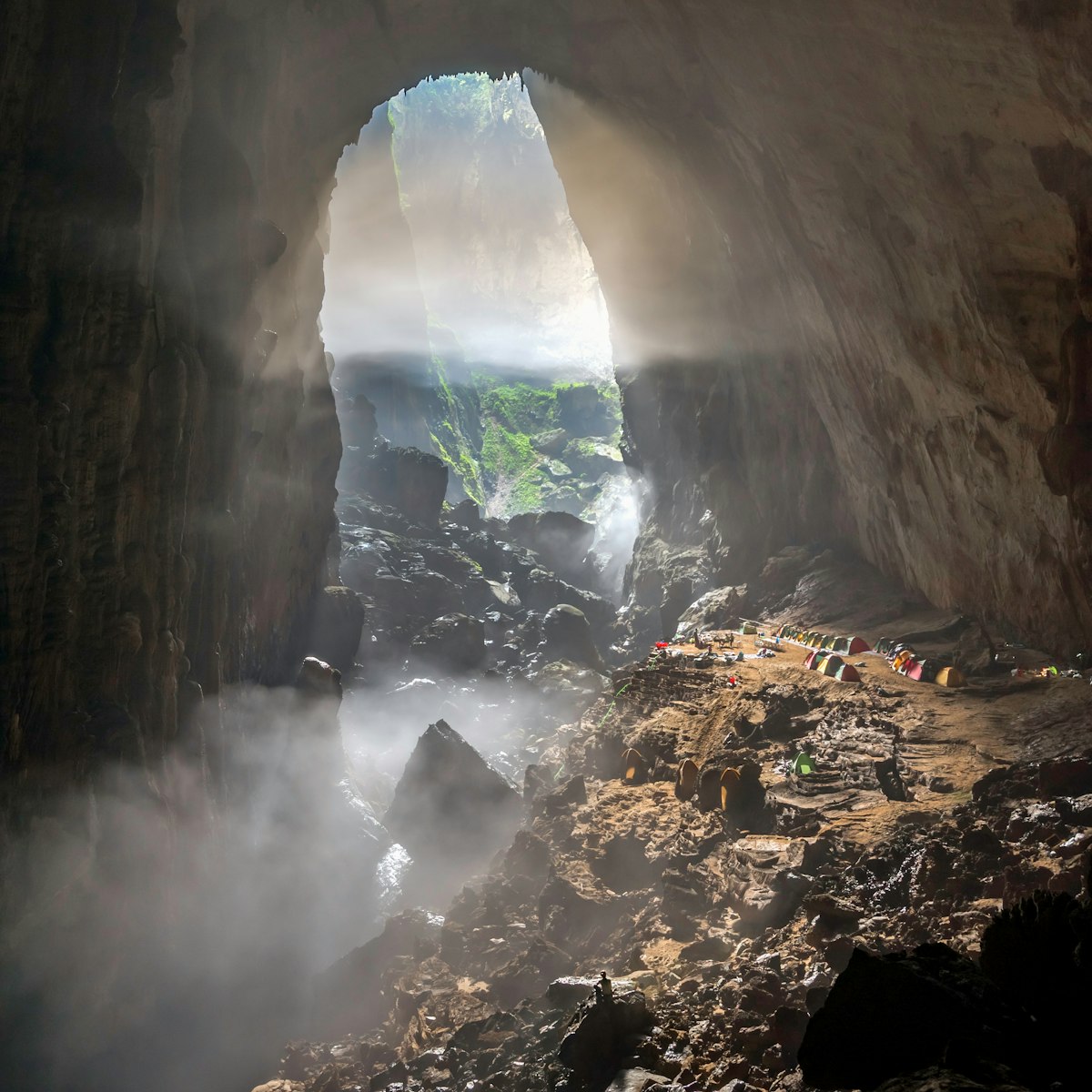
Hang Son Doong
Hang Son Doong (Mountain River Cave), located in the heart of Phong Nha-Kẻ Bàng National Park, is known as the world's largest cave, and is one of the…
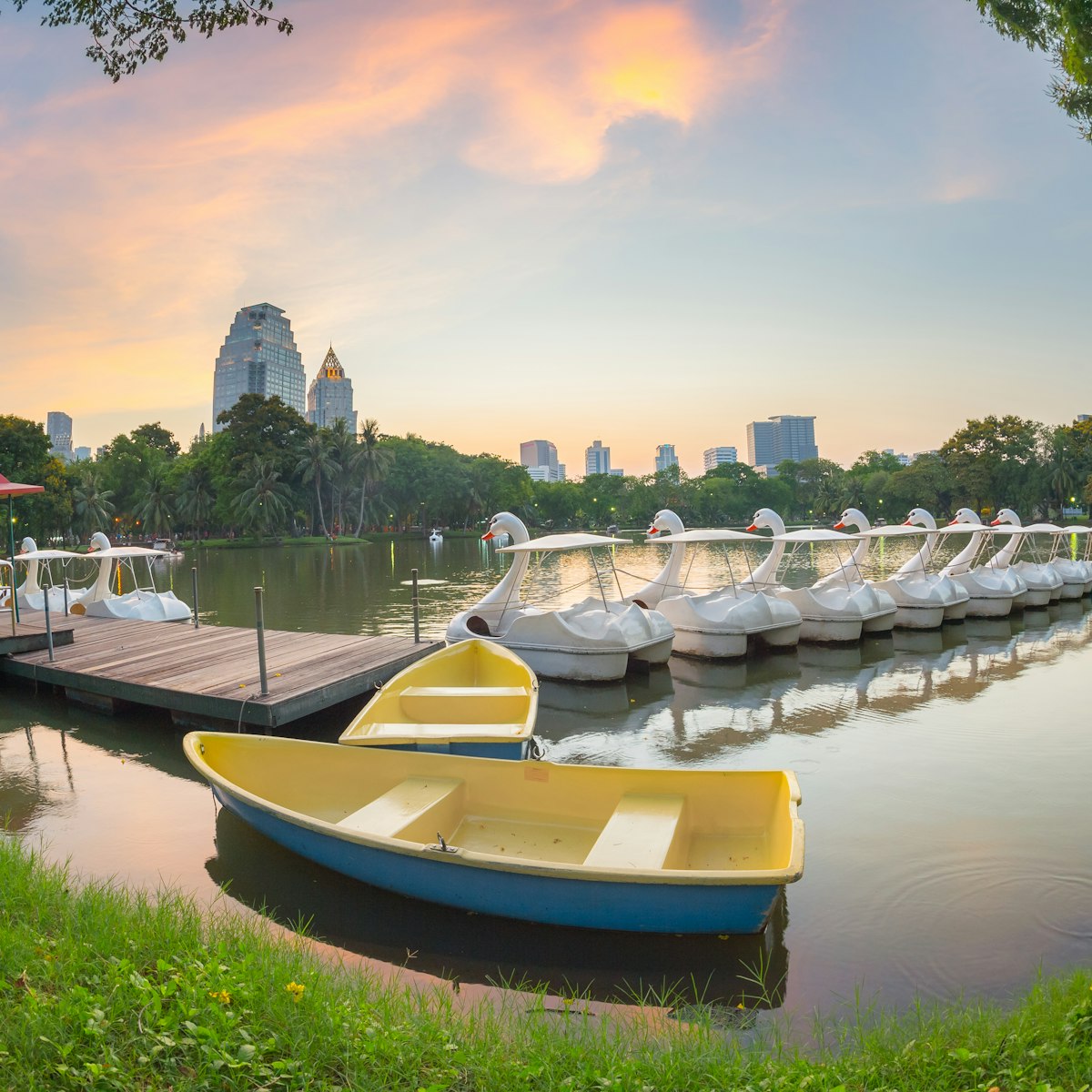
Lumphini Park
Named after the Buddha’s birthplace in Nepal (Lumbini), Lumphini Park is central Bangkok’s largest and most popular park. Its 58 hectares are home to an…
Latest stories from Southeast Asia
Filter by interest:
- All Interests
- Adventure Travel
- Art & Culture
- Beaches, Coasts & Islands
- Food & Drink
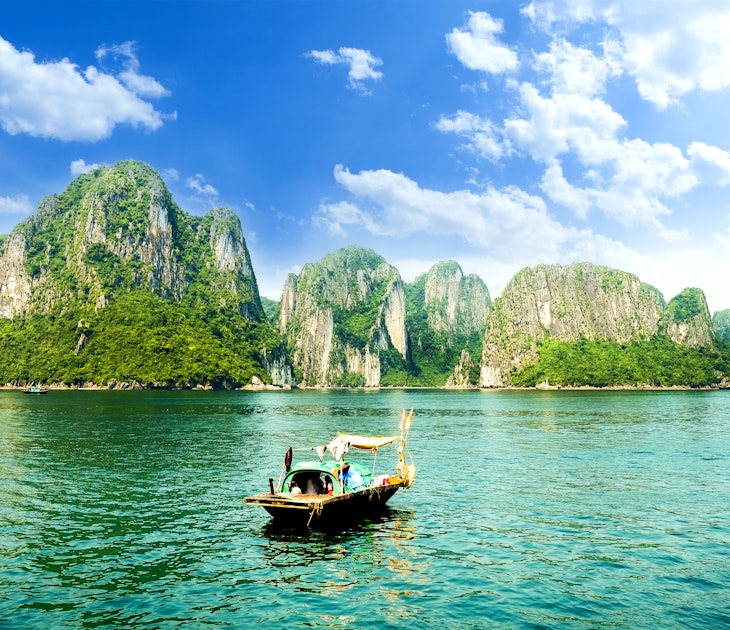
Nov 6, 2023 • 5 min read
From the stunning Halong Bay to the sand dunes of Mui Ne, Vietnam offers up a bewitching array of superlative natural landscapes. Here's our favorite 10.

Mar 3, 2022 • 9 min read

Nov 15, 2021 • 5 min read
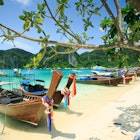
Sep 11, 2020 • 3 min read
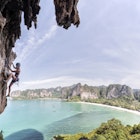
Jan 14, 2020 • 6 min read

Nov 12, 2019 • 1 min read

Nov 10, 2019 • 5 min read

Sep 10, 2019 • 7 min read

Sep 9, 2019 • 5 min read
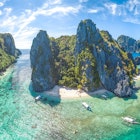
Aug 2, 2019 • 5 min read
Purchase our award-winning guidebooks
Get to the heart of Southeast Asia with one of our in-depth, award-winning guidebooks, covering maps, itineraries, and expert guidance.
Southeast Asia and beyond
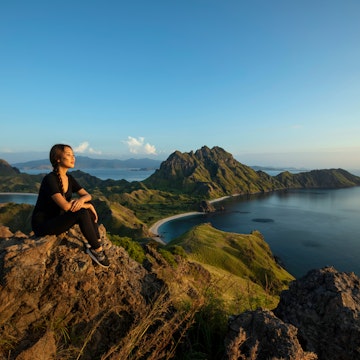

- Amazon River
- Galápagos Islands
- Indonesian Archipelago
- Mekong River
- Irrawaddy River
- India Cruises
- Pacific Coast
- Patagonia Cruises
- Machu Picchu
- Iguazu Falls
- Southeast Asia
- Southeast Asia Travel Guide
When Is The Best Time To Visit Southeast Asia?

The best time to visit Southeast Asia is an important consideration in vacation planning for such a vast region, with its diverse countries, colorful festivals, weather patterns and micro-climates, especially with activities like diving, trekking, swimming, cruising and volcano scaling to partake in. So when should you go? Here we take a brief look at the main things you should consider when thinking about when to travel to Southeast Asia .

Broadly speaking, with the exception of regional high altitudes, most of Southeast Asia is toasty warm, with temperatures ranging between 77 to 95 degrees Fahrenheit (25 to 35 degrees Celsius) while humidity is high all year round, with a few exceptions.
Many consider the cooler and drier weather between November and February the best time to visit mainland Southeast Asia . The hottest time of the year falls between March and May and can be a little too hot for some. There are exceptions though as large parts of Indonesia experience their dry season from April to October.
Travelers should remember that Southeast Asia ‘suffers’ from a monsoon climate, so during the wet (monsoon) season – which typically falls between June and October in most countries – there are invariably rain downpours in short bursts, rather than all-day drizzles, and this can make sunbathing, diving, surfing and hiking a little less enjoyable, if not treacherous in some instances.
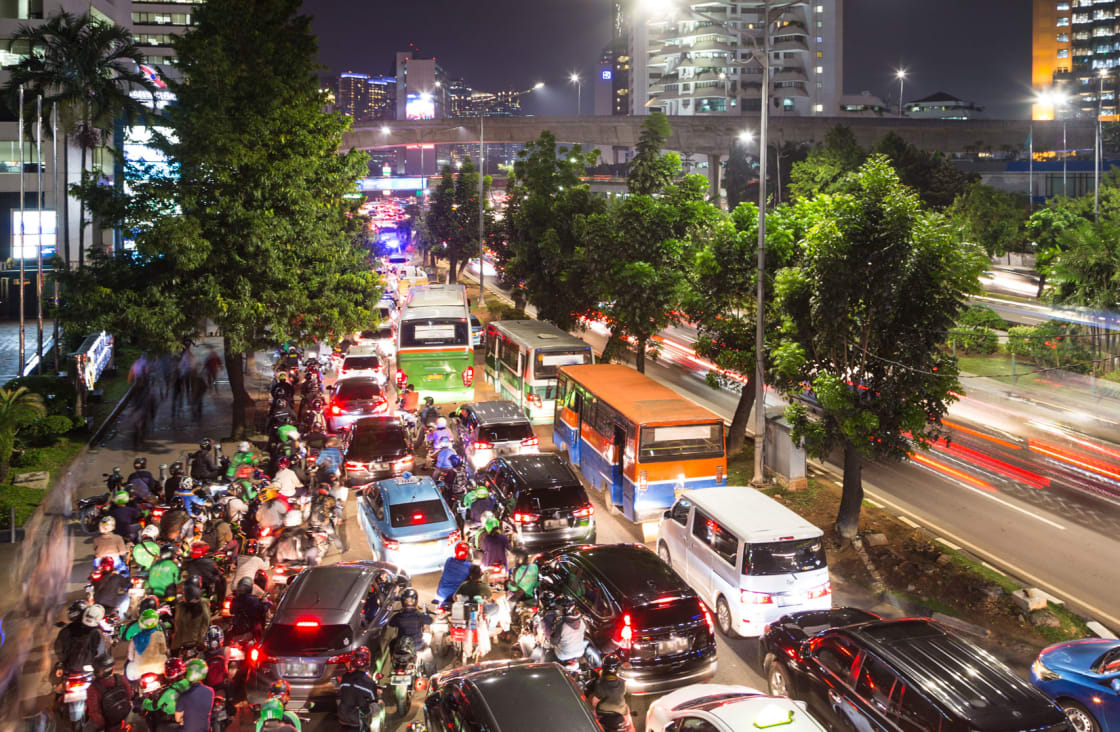
As you might expect, November to February is the most popular time for American and European vacationers, with some 55 million travelers descending on the region eager to escape their respective winters and take advantage of the optimal weather conditions. If you wish to avoid the crowds of tourists, it is better to steer clear of these months.
If you can stand the heat, why not wait a little longer until the crowds subside during the hotter months between March and May. Crowds of a different kind take to the streets in early April, as Buddhist locals let their hair down across Myanmar, Thailand and Laos with their New Year celebrations. Depending on your travel aspirations this may be a reason to aim for this month rather than avoid it.

Public holidays can mean unexpected disruptions to services, transportation, and attraction opening times, but if you are prepared, Southeast Asia’s vivid festivals can prove to be one of the highlights of your trip.
Between January and mid-February, Vietnam’s seven-day Tet (Tet Nguyen Dan) festival marks the advent of spring and the start of the Lunar New Year and gives you the chance to experience traditional and colorful customs across the country, from lantern and flower festivals to Buddhist pagoda rituals. The Buddhist New Year celebrations that take place across many parts of Southeast Asia during April are deeply rooted in tradition and revolve around the cleansing of sins, but Thailand’s Songkran festival has taken this to a new level, evolving into a world-famous water fight, with no one out of bounds for soaking during three days of watery mayhem.
Head to Sanur’s sandy beaches in Bali during July for a spectacular kite festival, where stunning kites of all different shapes, colors, and sizes take to the skies in the hope of persuading the Balinese Hindu Gods to grant a plentiful harvest for the coming year.
During September and November respectively, little Laos is home to larger than life festivals, firstly with the colorful costumes and aquatic parades of its dragon boat races along the riverbanks of the Mekong, and secondly with the glittering Boun That Luang Festival in Vientiane, the country’s most important Buddhist festival and a spectacular sight to behold.

Southeast Asia is renowned to be easy on a traveler’s pocket (backpackers can get by on about $35/day), the countries of Myanmar, Laos, Cambodia, and Indonesia, especially. Despite the relative affordability of the region, there are certain times of year to travel that may stretch your dollar even further. If you can bear the heat of the hottest summer months between March and May, you will find flight and hotel costs tend to fall, especially to Vietnam and Thailand. The cheapest flights are likely found for travel between the less sought-after months between September and October, before the start of the dry (and most busy) travel season.
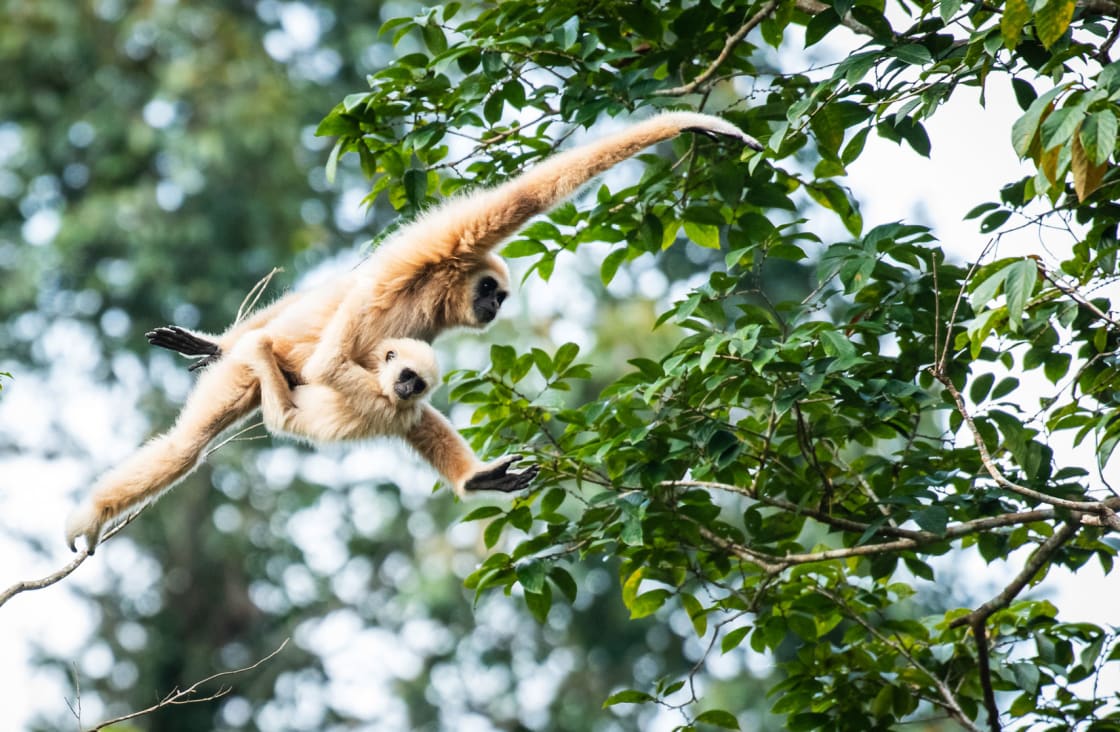
If you are heading to West Papua in search of birds of paradise performing their elaborate courting rituals, go in the dry season between September and October, when the lowlands are more accessible and birds most active. March through October is the ideal time to see Borneo’s endangered orangutans. Southern Thailand’s Khao Sok National Park is a great place to see leopards, sun bear, gibbons, tigers and elephants, with recommended tours taking place in October, November and May.
If you are a keen diver and want to spot Whale Sharks, it is important to know that these animals are migratory. For your best chances of spotting them, head to Myanmar’s Mergui Archipelago between late January through April, Thailand’s Koh Tao between March and May or September and October, or West Papua’s Cenderawasih Bay where they can be seen year-round but best observed between August and October.
River Water Levels and Sea Conditions
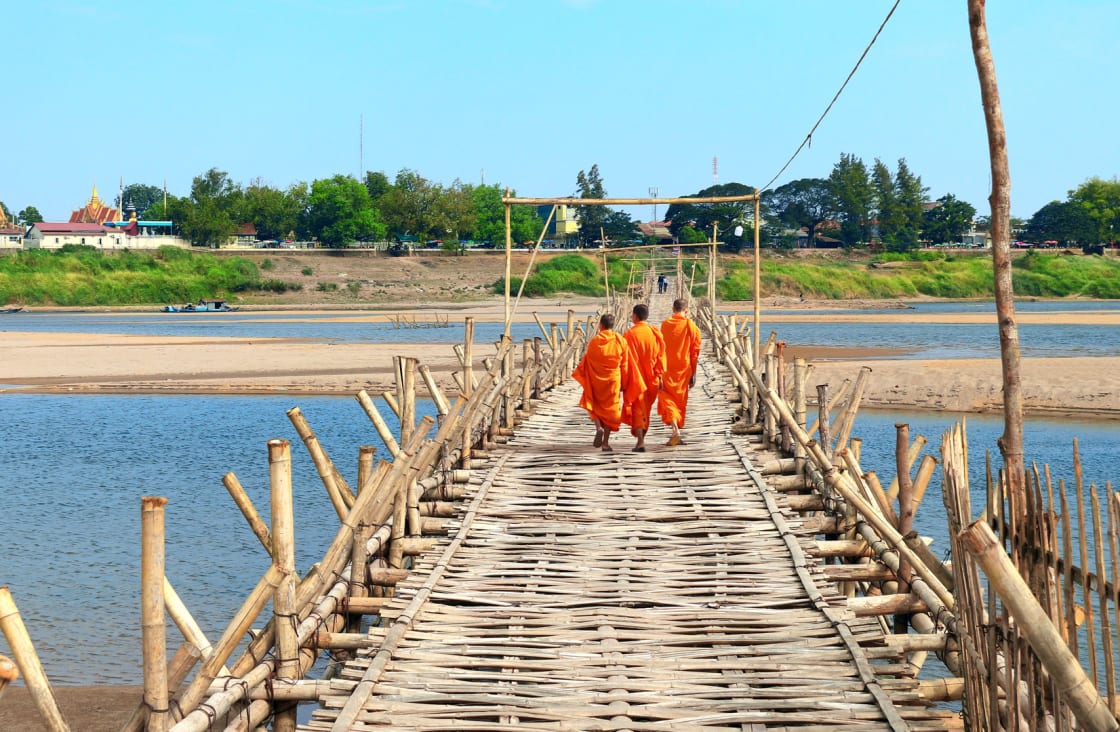
Weather-wise, the best time to cruise the Mekong in Vietnam and Cambodia falls anywhere between November and March, November being quite cool with not too much rain and temperatures rising to reach their peak around April-May. The rains will start in late May or June, and most ships will suspend operation for yearly maintenance around June and July.
When planning the Lower Mekong cruise , it isn’t only the weather that you should think of. If you hope to cruise across Tonle Sap lake, choose the months right after the rainy season (high water season) between August and mid-November, when the waters are high and ships can enter Tonle River and Tonle Sap lake. In the low water season, the river is too shallow and the boats take a different route – to Kampong Chhnang and Kampong Cham.
Traveling on the Upper Mekong in L aos is best between November and January when the weather is good and the water levels high after the rainy season, which starts around May and subsides around October.

Generally, Indonesia has great weather year-round, but it does experience heavier rains from October through April. The monsoon is not even throughout the archipelago, therefore cruises are operated accordingly to the best conditions in the region.
Bali and Komodo areas are great to visit from May to September, with dry and warm weather (and Bali festivals in place). Borneo is always hot and humid but will see less rainfall in the same months as Bali.
Raja Ampat is great for divers in September to April, due to the high number of manta rays, but the calmest waters and best visibility is in November-March, and this is when many cruise lines decide to reposition to that area.
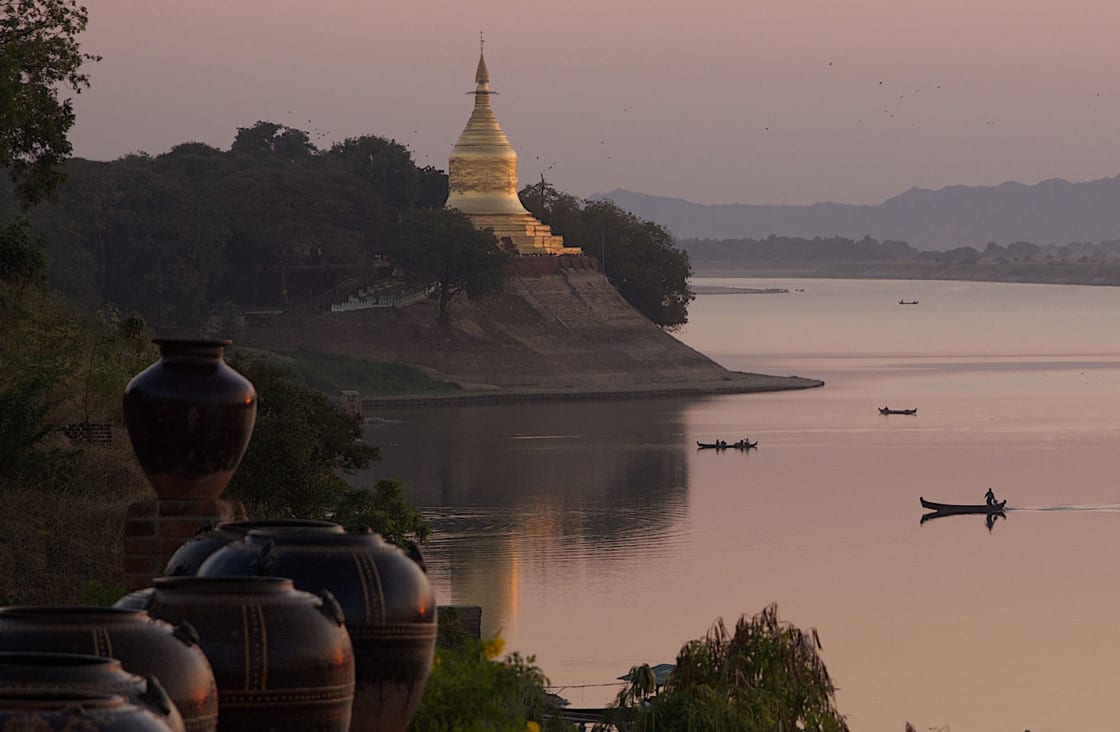
Myanmar, being a tropical country, is either hot or super hot, with dry and rainy seasons, but the weather across the country is not consistent and varies between regions (Inle Lake or Yangon might have different weather than Mandalay at the same time).
When it comes to cruising on the Irrawaddy , the best time for it is between November and April. In May the rains start in Yangon, but Bagan is still dry and extremely hot. Starting in June the rains will increase across the country and August-September will be the wettest.
Lower Mekong
Weather-wise, the best time to cruise the Mekong in Vietnam and Cambodia falls anywhere between November and March, November being quite cool with not too much rain and temperatures rising to reach the peak around April-May. The rains will start in late May or June, and most ships will suspend operation for yearly maintenance around June and July.
When planning the Lower Mekong cruise, it isn’t only the weather that you should think of. If you hope to cruise across the Tonle Sap Lake, choose the months right after the rainy season, when the waters are high and ships can enter Tonle River and Tonle Sap lake. In the low water season, the river is too shallow and the boats take a different route – to Kampong Chnang and Kampong Cham. High water season starts in August and lasts approximately until mid-November.
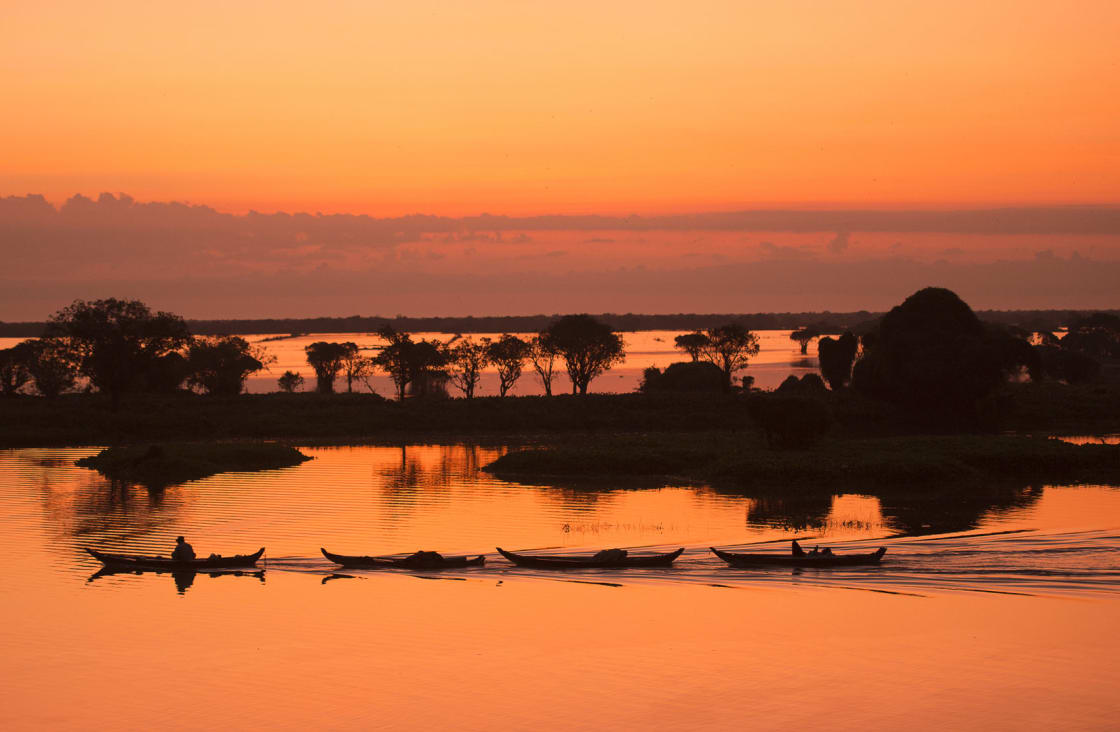
Upper Mekong
Traveling on the Upper Mekong is the best between November and January when the weather is good and the waters are high. The rains start around May and subside around October. The temperatures will be at the lowest in August-November and will spike in May-June.
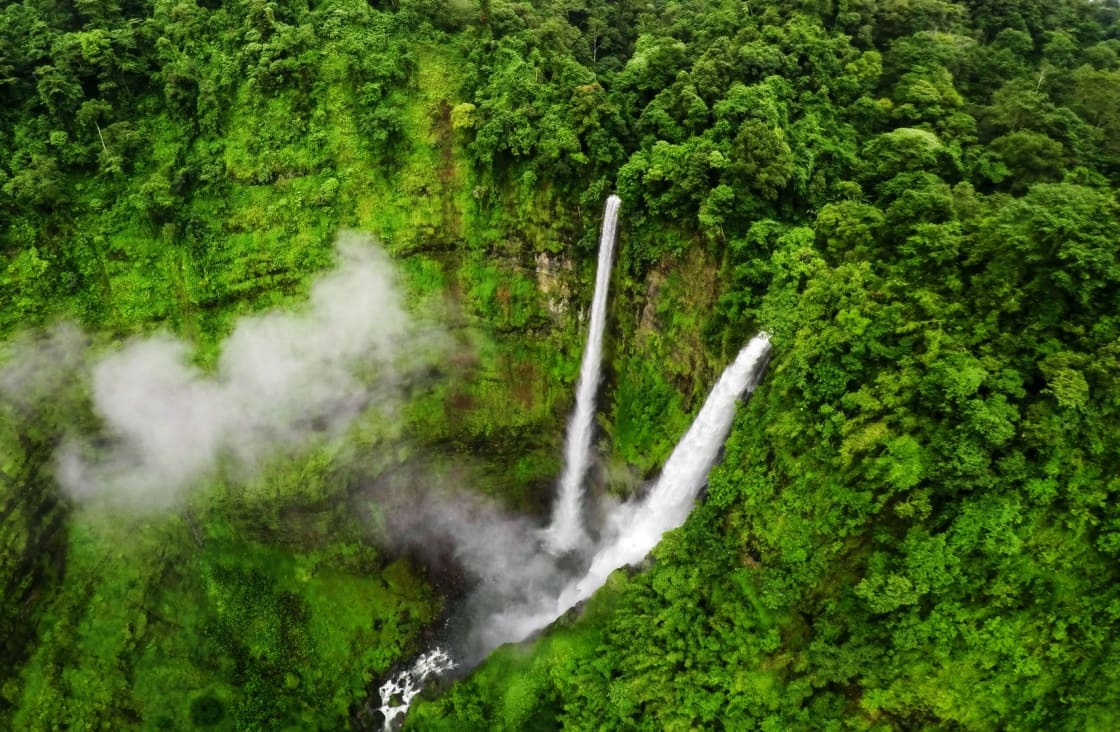
Landlocked Laos is rarely affected by coastal storms. The dry season has two sub-sections: a cool dry season from November to February and a hot dry season, March to late April. The wet (monsoon) season runs from around May to October, with August and September generally the wettest months. March and April can be blisteringly hot, while November to February are the cooler months.
Best to visit: Laos’ cool dry season – and peak season – has relatively low temperatures, cleaner air, and ideal river travel conditions. However, during the wet season, rivers are high and rapids submerged, meaning slow boats can make better paces and there are also lower temperatures but fewer crowds. Choosing the best time to visit Laos , consider the activities you plan.
To consider: during the hot dry season, inevitable smoke haze covers most of Laos, caused by farmer’s slash and burn traditional agricultural practices.

Cambodia’s dry season runs from late October to April, with November to January bringing cooler, more comfortable temperatures. March to June is Cambodia’s hottest time of the year, peaking in April and May. The wet season runs from May to October, around three-quarters of Cambodia’s annual rainfall, with rains generally heaviest from July to September.
Best time to visit: the dry season, especially November to January, is Cambodia’s peak travel time , due to the relative lack of rain and cool temperatures and southern islands brilliant sunshine with clear, calm waters – ideal for snorkeling and diving.
To consider: some might find the hottest months, April and May, uncomfortable for sightseeing. During the peak wet months, July to September, it can rain every day, with flooding and rough seas. On the upside, there are fewer crowds, less dust and lush greenery abound – sights like Angkor Wat look magnificent post-tropical downpour.
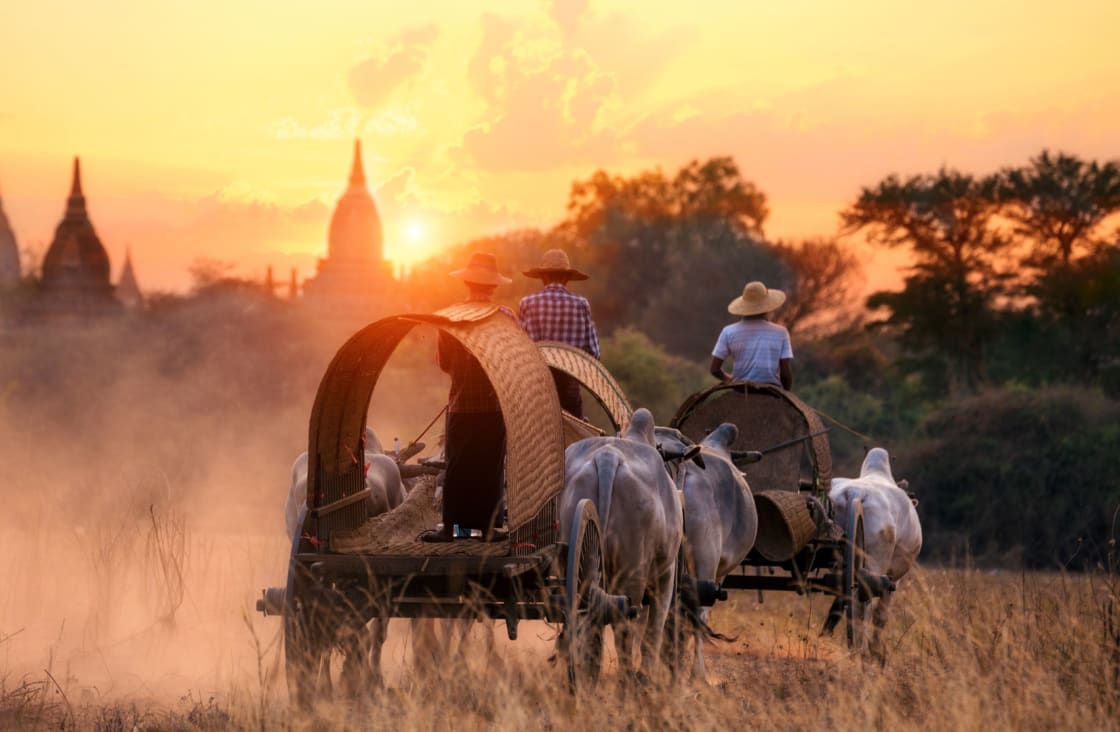
Myanmar’s dry season runs from October to late April and the wet (monsoon) season, from May to early October, with the hottest months, late February to June
Best time to visit: late November to February are probably the most comfortable months to travel in Myanmar , with the least rainfall, clearer skies and lower temperatures, and post-monsoon, the country is at its most lush green – why this is peak tourist time.
To consider: From June to September, southern islands are in the throes of monsoons and many shut down their services and transportation.
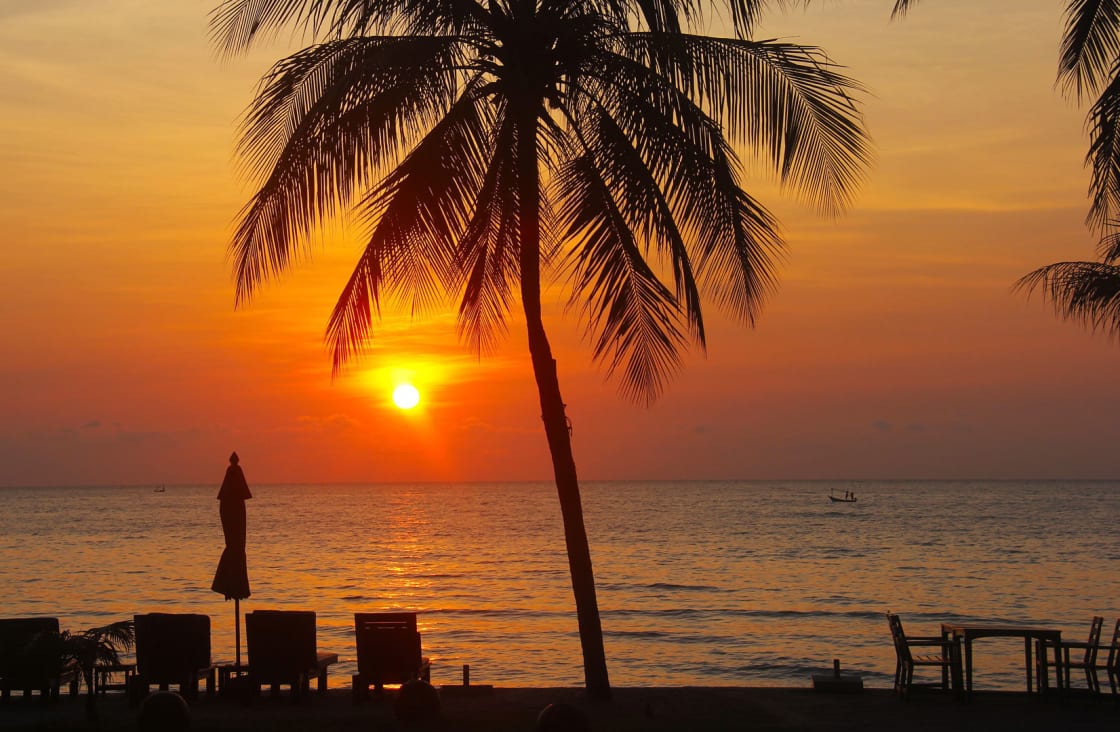
Although with regional variations, Thailand is tropically hot and humid for the majority of the country through most of the year. The wet, monsoon season runs from July to October, bringing most of Thailand’s annual rainfall and flooding is not uncommon in many parts. April is the hottest month. The best time to visit Thailand in a way is anytime, but when planning your holiday, do consider the region and activities you’re planning on.
Central and Northern Thailand has two seasons. The dry season is from November to May-June; cooler temperatures are generally felt from October to January and the main dry season runs from March to May. The wet season is June to October- November with Bangkok experiencing its wettest month in September.
Southern Thailand
The south has two wet and dry seasons, but with east-west variations. The southern west coast (Andaman Sea) has a wet season and most rainfall from April to October. The southeast coast (Koh Phangan, Koh Samui, etc) is wet from September to December, rains can get torrential from October to November, making diving and beach life a no-no. Overall Thailand’s southern parts receive the country’s biggest rainfall, but other times of the year is dry, hot and sunny, with peak seasons, December and January.

Vietnam’s diverse weather patterns vary depending on the time of year and geographic location, with several microclimates to consider. Generally, the wet season runs from April to October, and the dry season from November to March. When planning your Vietnam holiday and considering the best time to travel , do consider the activities and regions of interest.
Northern Vietnam: has a cool to cold season, from November to March and a warm to hot, wet season (from April to October). December and January can get quite frosty in the far north mountains and heavy mists around this time can reduce visibility in tourist favorites, Sapa and Halong Bay. The wettest months are July and August, the driest, December and January.
Central Vietnam: while the coastal areas see rainfall between April and September, it’s less than other parts of Vietnam, but from August to early January, northern-central Vietnam (Hoi An, Danang and Hue), can receive considerable rain; Hoi An’s Ancient Town invariably floods ctober and November. This region can also be greatly affected by typhoon season, August to November, with severe storms lashing the coasts. The southern-central coastal strip, from Nha Trang to Mui Ne, is less affected with a longer dry, sunny season, albeit Nha Trang undergoes a wet, windy micro-climate November to January when beaches and diving are greatly impacted.
Southern Vietnam: sees much of its rain in the wet, monsoon season, roughly June to November. Best time to visit: Northern destinations, such as Hanoi and Sapa are best in the spring and autumn months, with little rain, clear skies, temperate conditions, and beautiful flowers. The coastal stretch from Hue/ Hoi An down to Nha Trang is best from January to June, while southern Vietnam’s HCMC, Mekong Delta and Phuc Quoc are ideal, November to April.
To consider: Typhoons from July to September-November can sometimes wreak havoc across Vietnam, especially the north and central regions, affecting boat journeys. Winds and rough seas from June to September curtail beach and diving activities on Phu Quoc Island.

A volcanic archipelago of 17,500-plus islands across the equator, Indonesia is hot throughout the year and with minor regional exceptions, has two distinct weather seasons . The dry season runs from April-May to September and the wet, monsoon season, late October to late March, with the heaviest rains in January and February. By March to April, Indonesia’s most popular tourist regions, including Bali and Lombok, are finishing-up their rainy seasons.
Best time to visit: The dry season months, around May to October should guarantee sunny, dry conditions with few exceptions, perfect for surfing, diving, and trekking. Bali’s second peak season July and August coincides with the European vacationers, with cooler evening temperatures than earlier in the year.
To consider: During the wet season, Indonesia experiences heavy rains especially January and February and Bali suffers serious ocean plastic pollution; however it’s still the peak season for Christmas and New Year vacations. Conversely, Raja Ampat (Papua) experiences rough seas and windy conditions from June to September-October, making dive sites limited or inaccessible. As the world’s largest Muslim nation (with exceptions, such as Hindu Bali) expect some service and travel disruptions during Ramadan (fasting month) between April and July.
While Rainforest Cruises aim to provide accurate and up-to-date information, we make no representations as to the accuracy or completeness of any information herein or found by following any link on this site. Rainforest Cruises cannot and will not accept responsibility for any omissions or inaccuracies, or for any consequences arising therefrom, including any losses, injuries, or damages resulting from the display or use of this information.
You may also like

Total Solar Eclipse Cruise 2023
What will you be doing on April 20, 2023? Imagine being on a tropical island paradise in the remote southern reaches of Indonesia’s Banda Sea and witnessing one of the most profound […]

Raja Ampat Diving: Best Dive Sites, Season, Resorts & Liveaboards
Straddling the Equator off the extreme north-western tip of Indonesia’s Papua province, Raja Ampat is an archipelago of 610 islands; a figure that can be boosted to more than 1500 if you […]
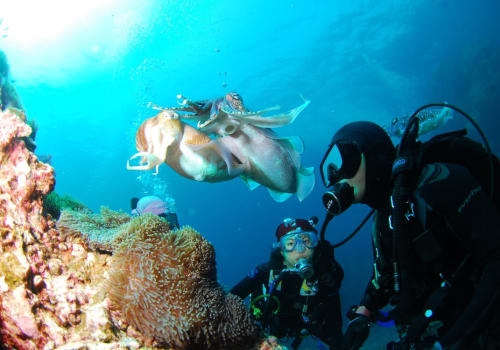
Diving Komodo vs Raja Ampat: Which is Better?
If you had to choose between diving Komodo and diving Raja Ampat, which would you choose? Which is best? Both are stellar locations; Komodo is unique due to the top side dragons, […]
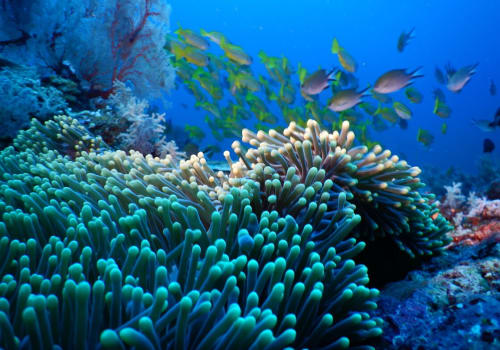
9 Best Diving Spots in Southeast Asia
With the Indo-Pacific Coral Triangle at its heart, Southeast Asia offers some of the most spectacular scuba diving in the world. As a consequence of the immense tidal changes from the North […]
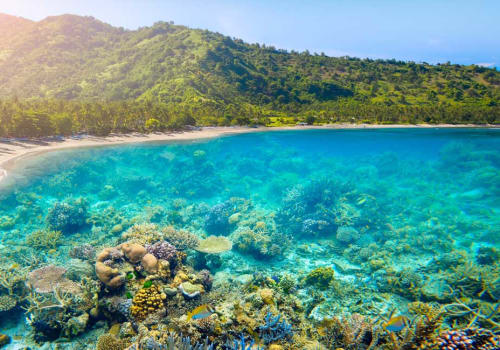
Diving Indonesia: Best Dive Sites, Season & Liveaboard Routes
With 17,508 islands, 50,000 miles of coastline, 98,000 square nautical miles of territorial sea, 20,000 square kilometers of coral reefs and some 600 species of coral, 30,000 square kilometers of mangroves forest, […]
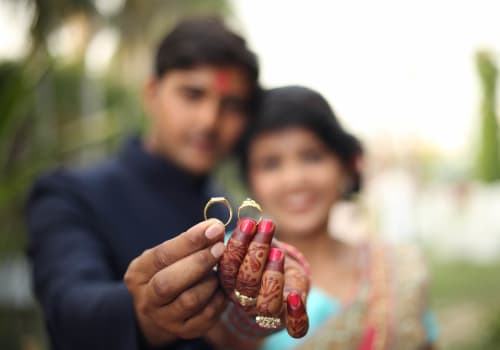
19 Best Honeymoon Destinations & Resorts In India
Whether you are looking for a romantic beach break, or a more active adventure, India is the honeymoon destination that truly has it all. There’s no better place to fall in love […]
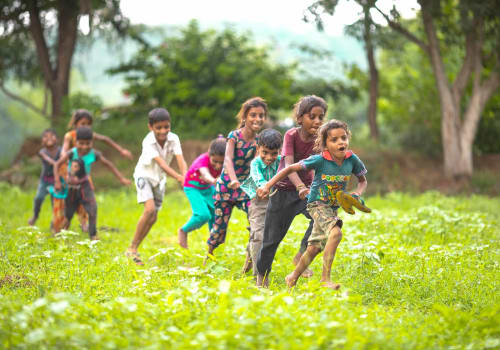
Best Family Trip Destinations & Things To Do With Kids In India
India might not be the most obvious family cruise holiday choice, but for those intrepid families who yearn for something different, India may be one of the most captivating countries you encounter, […]
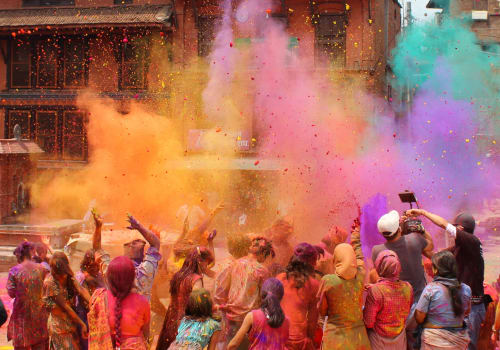
Indian Festivals: Color, Lights, Painted Elephants & Poo?
India is a land of festivals, and it is said that over a thousand take place every year – some celebrated religion-wide, some at a state level, others just within a local […]

India Food: 25 Most Popular Traditional Dishes To Eat In India
Traditional Indian food is renowned worldwide for its wonderful use of herbs and spices, and its diverse range of deep-fried snacks, pastries, curries, gravies, sauces, rice dishes, tandoor-cooked meats, vegetable dishes, chutneys, […]
On the Lookout for Expert Advice & Offers?
Join over 20,000 discerning travelers and be the first to receive our monthly exclusive discounts, inspiring travel content and expert tips, straight to your inbox.

- Charter (Private)

12 tips for your first trip to Southeast Asia

Editor's note: The team at The Points Guy loves to travel, but now is not the time for unnecessary trips. Health officials note that the fastest way to return to normalcy is to stop coming in contact with others. That includes ceasing travel. We are publishing travel deals and destination content because we should all use this time to think about and plan our next adventures. TPG doesn't advise booking trips for travel until summer or fall — and even then be mindful of cancellation policies. This story has been updated with new information.
Southeast Asia is one of the most magical regions on earth. Filled with stunning beaches , historic temples, verdant jungles and bustling cities, there's something for every traveler there. But staying healthy and safe is something to consider when visiting a region so different from your own, especially for the first time. Things like visa requirements , best times to visit, currency exchange and what to bring may be at the top of your mind, as well as the most obvious question -- which country should you visit?
After a number of long-term visits over the years to varying countries in Southeast Asia, I've learned a thing or two. Beginner travelers should check out these travel tips and follow this Southeast Asia travel advice when considering a visit to the region for the first time.
1. Pick your countries wisely
While it's tempting to visit many countries and cities on a single trip to Southeast Asia, it's worth taking it slow and digging into the culture of a single country and/or just a handful of places, rather than exhausting yourself with a travel itinerary that has you hopping all over what amounts to an enormous territory.
For example, Bali , Indonesia and Hanoi, Vietnam , are both set within Southeast Asia, but beware -- they're a seven-hour flight away from each other. Before you commit to flights and accommodation , pull out the map and choose countries/cities that are relatively close together or are easily accessible by nonstop flights or direct trains.

When deciding on the best country to visit in Southeast Asia, you should also take into account whether you want to explore cities, relax on beaches, see the outdoors or embrace culture, cuisine and history.
The best country to visit for beginner travelers could be Thailand. First-time visitors to the region may also enjoy Bali, Indonesia. Both of these spots are used to an influx of tourists and have plenty of amenities. They're both relatively easy to navigate and have friendly locals that speak English.
More experienced travelers or those wanting an adventure may prefer spots like Myanmar, Malaysia or Laos. While almost all Southeast Asia destinations welcome backpackers with open arms, Cambodia is very backpacker-friendly -- and is extremely affordable, especially outside of tourist destination Angkor Wat. Those wanting to lap a country from top to bottom should head to Vietnam. For unexplored beaches, visit more off-the-beaten-path islands in Indonesia (that aren't Bali) or the Philippines .
Related: 9 of the best sustainable backpacks for travelers
2. Check visa requirements
Several Southeast Asian countries require your passport to have at least six months' worth of validity left or a specific number of empty pages -- and visa requirements seem to be constantly changing. For example, a few years ago, e-visas weren't available online for several entrance points in Myanmar, but now they are. Meanwhile, Vietnam has changed its visa requirements in past years and now citizens from several European countries no longer need a visa to enter.
Check visa requirements ahead of time and apply online if possible. For example, U.K. nationals will find that applying for a visa to enter Laos online is relatively straightforward and can ease hassle upon arrival, especially when you're jet-lagged in a new and unfamiliar country.

If you do end up needing a visa upon arrival at your chosen destination(s), be prepared with the proper currency and passport-size photos of yourself. Many airport visa offices have ATMs/exchange services (albeit with terrible rates) and photo booths, but if you arrive with these items in hand, as well as any forms you might need printed and filled out ahead of time, the visa experience will be quicker and easier.
Also, be sure to grab a couple of extra entrance and exit forms each time you enter a country -- if you end up leaving and reentering that country by bus, boat or train, having the correct forms handy will enable you to save time you'd otherwise spend in a line.
3. Pack light and right
Deciding what to bring to Southeast Asia is a common conundrum. Try to pack as light as possible and do laundry wherever you go rather than trekking around with an overweight backpack or heavy trolley bag. In most Southeast Asian countries, you can get your clothes washed, dried and ironed in under 24 hours for the equivalent of a couple of dollars, and at street markets, you can shop inexpensively for any extra clothes and toiletries you may need.

These are the things you should make sure to pack:
- raincoat/umbrella (especially during rainy season)
- modest clothing covering knees/shoulders for temple visits
- first aid kit (including all kinds of stomach medicines)
- small flashlight
- earplugs/ sleepmask
- hand sanitizer
- travel packs of tissues (note that squat toilets usually aren't equipped with toilet paper)
- adaptor/multi-port plug that allows you to charge a few of your electronics at once
Related reading: 14 packing hacks for traveling with just a carry-on
4. Best times to visit Southeast Asia: rainy or dry season?
You can organize your trip in one of two ways: picking a destination(s) first and then selecting the best time to go, or picking your destination(s) based on what will have the best weather during the time you're able to visit. Most countries in Southeast Asia have two main seasons: wet and dry.
Even certain regions within countries can have separate rainy seasons . For example, if you want to have a beach holiday in Thailand over Christmas, it's better to choose islands in the Andaman Sea, which are sunny, like Koh Lanta or Koh Yao Yai and skip the Gulf of Thailand islands, such as Koh Samui or Koh Tao, where it's rainy season.

If you're visiting larger cities, rainy season may not be so bad. You'll experience a downpour or two for sure, but you may get cheaper hotel deals or better value on airfare. But, it may be best to avoid smaller towns or villages during the wet season where lack of infrastructure during floods may complicate your stay.
It's also important to consider additional seasonal situations -- like burning season, where many Southeast Asian regions burn brush and old crops to prepare for planting. Air quality is bad during this time and may affect tourists, especially those with respiratory problems.
5. Safeguard your health
Before you travel to individual countries, check their vaccine requirements and recommendations -- and then actually get those vaccinations. If you're worried about the expense, be aware that you can opt to get your vaccinations upon arrival in Bangkok , where they're often affordable at local health centers. When traveling to any Southeast Asian country, getting tetanus shots and typhoid vaccines are generally a good idea. In addition to any necessary vaccines, seek out strong mosquito repellent, as this can help protect you from dengue fever and malaria.

6. Get travel insurance
Plan to get travel insurance when visiting the region, because health risks in Southeast Asia don't entirely diminish even if you've had your vaccines. As Southeast Asia trips often include adventures like indulging in street food, zip-lining, scuba diving , jungle treks and motorcycle rentals, it's wise to have a policy in place.

During a previous trip to Thailand, I developed an ear infection from snorkeling . Thanks to my travel insurance, I was in and out of a doctor's office within an hour, complete with medicine and a special souvenir bag (see above) -- all covered by my policy. Years ago in Malaysia, my husband cut his foot on coral while diving and required antibiotics. Having travel insurance made the situation an easy (and free) fix. Insurance policies can also cover non-health-related problems such as lost luggage or issues with flights and hotels, so look into getting the best travel insurance policy for you.
7. Consider alternate travel methods
While we love a good points and miles deal, using trains, low-cost airlines and ferries is a great way to save money while moving from place to place. Buses are generally the cheapest method of transport in Southeast Asian countries, but be aware of travel scams and know that you might be in for dirt, dust, unpleasant (or simply strange) smells, crowds, bumpy roads and more.

Ferries can sometimes be crowded, but are a quick, cheap and a direct form of travel between islands, and though often slow, trains are a fun way to explore and see the lay of the land(s). Low-cost carriers such as AirAsia, Bangkok Airways , Nok Air, Tiger Air and more offer cheap flights to a variety of destinations -- and some even have frequent flyer programs . Though often a splurge in comparison to bare-bones taxi-boat journeys, river cruises are luxurious, scenic adventures and a great mode of transportation.
8. Rent a scooter at your own risk
If I had a dollar for every 20-something I saw with a bandaged knee, chin or foot in Thailand, I would easily be rich. Renting scooters can be a great way to get around, but in some Southeast Asian countries you'll need to drive on a different side of the road you're accustomed to and you may have to battle intense traffic, hills, curves, stray dogs, dirt or sand roads, crazy taxi drivers -- and worst of all, other foreigners driving scooters who are unfamiliar with these conditions. Even though many locals and tourists don't wear helmets, you still should.

Before you head off with a rental scooter, be sure that your rental agent sees you taking detailed photos and/or videos of the bike, and actively point out any scratches or concerns to them. Though scooter rentals are often just a few dollars per day upfront, scooter scams are common, where a rental agent will insist that you've scratched or otherwise damaged their motorbike, charging you hundreds (or even thousands) of dollars in damages before they'll return your passport to you.
9. Be smart about currency exchange
Airports and banks often charge excessive fees to exchange money, but you'll usually get a decent exchange rate if you wait to change money once you're in Southeast Asia. However, know that Southeast Asian hotels generally offer terrible exchange rates, so stick to banks or other spots that advertise "Money Exchange." Make sure to change plenty of cash, as street market vendors, taxi drivers and smaller restaurants may not take credit/debit cards.

Many hotels and larger restaurants will take credit/debit cards though, so make sure to use ones that hold no foreign transaction fees.

10. Avoid "temple burnout"
"Temple burnout" happens when you see so many ornate and beautiful temples that they all begin to look the same -- and you lose interest in seeing any more, ever. To avoid this malady, arrange some non-temple-oriented activities on your Southeast Asia travel itinerary, or simply take a day (or two) off to relax and rest your eyes. After a bit of visual reboot, you'll have a whole new appreciation for a region of the globe that has more amazing temples than you could possibly imagine.

11. Don't be afraid to bargain
You should absolutely bargain with local street vendors or at markets -- it's a cultural norm to do so. I've had some great times bargaining and laughing with street vendors and even made friends with a few locals along the way, coming home with memorable souvenirs for my efforts. Just make sure to barter reasonably and always with a smile on your face. The point of bargaining is to engage with locals and agree on a fair price, not to cheat them or get scammed yourself.

12. Be a responsible tourist
It's best to avoid orphanage tourism, hill tribe visits or any activity that exploits children, ethnic groups or animals. When participating in elephant tourism, make sure to carefully vet your organization and make sure they're protecting the animals in lieu of harming them.
While begging children may tug at your heartstrings, the more money they earn from tourists, the more their parents see them as a source of monetary gain and the less inclined they are to send them to school -- where they'd have a shot at a better future.

When diving/snorkeling or out in nature, make sure to adhere to the no trace policy , not littering or taking anything from delicate natural environments.
If you want to lend real support to locals in Southeast Asia, dine at Tree Alliance restaurants . Located in Myanmar, Cambodia and Laos, these eateries train disadvantaged young adults as chefs and waiters and also donate money to programs that assist low-income locals to get jobs. Offering traditional cuisine, these restaurants provide a delicious way to help.
Related: 5 tourism-supported charities that need your help now more than ever
Or, visit an organization like Big Brother Mouse in Luang Prabang, where tourists can read books, play games or chat with kids and teens eager to practice their English.
Related: How to be a better traveler
Bottom line
Armed with these useful travel tips for Southeast Asia, you'll have a safe, smooth and successful first trip to this beautiful region. Happy travels!
Nomadic Matt's Travel Site
Travel Better, Cheaper, Longer
Southeast Asia Travel Guide
Last Updated: November 27, 2023
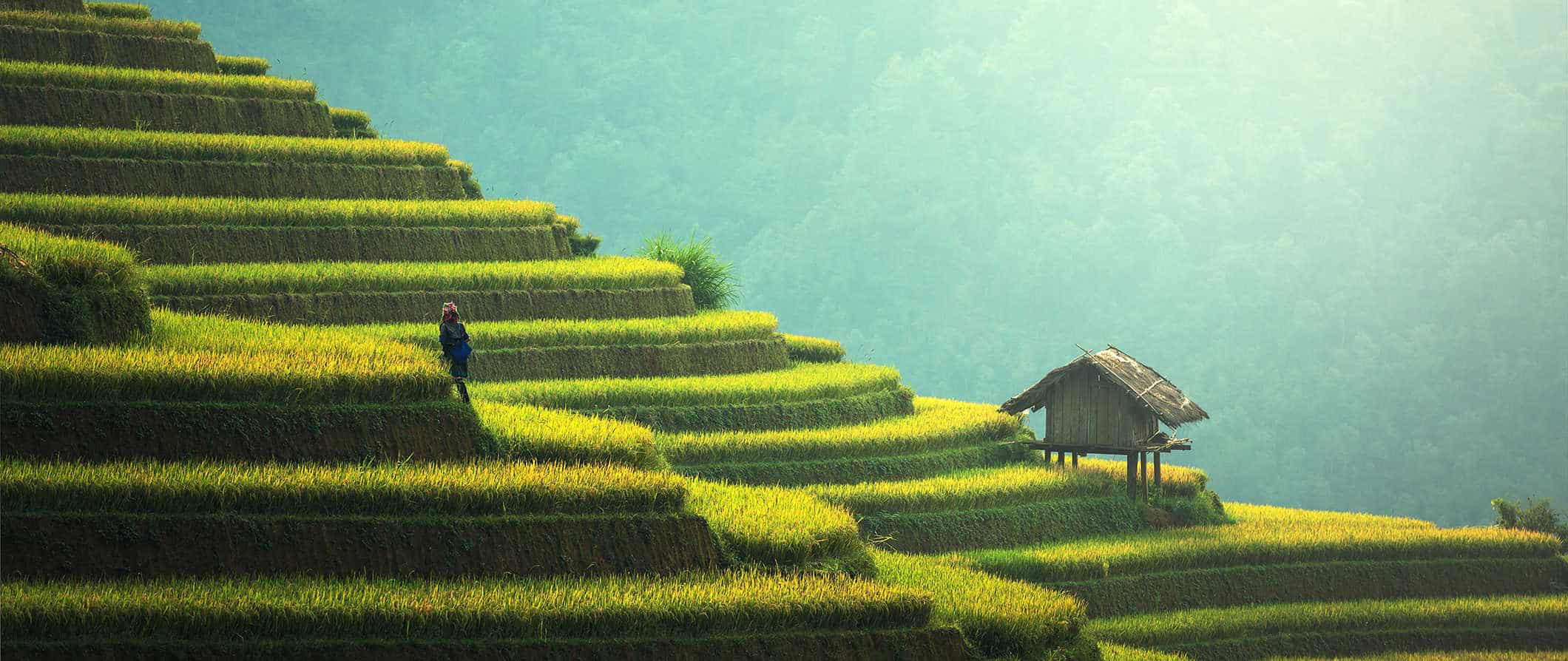
Backpackers have been traveling through Southeast Asia since the late 1960s and early 1970s, leaving a well-worn trail around the region.
Starting in beautiful Thailand, the trail makes its way to up-and-coming Laos, through Vietnam, and to the temples of Angkor Wat. It then winds back into Thailand, where people head south to party in the Thai islands before moving down to Malaysia and Singapore.
There are a few variations to the trail, but this is what it mostly covers.
I’ve been visiting this region since 2004 and spent years living in Thailand . I love backpacking Southeast Asia and have written extensively about it as I know it like the back of my hand.
It’s an especially great region for new travelers because it’s easy to travel around, it’s safe, and there are lots of other travelers you can meet. But it’s also perfect for veteran travelers too as there are tons of off-the-beaten-path destinations that the standard backpacker trail doesn’t cover.
In short, Southeast Asia has something for every traveler — and every budget.
This Southeast Asia travel guide will help you travel the region like a pro, ensuring you save money and make the most of your time in this fun, gorgeous, and lively corner of the world.
Table of Contents
- Things to See and Do
- Typical Costs
- Suggested Budget
- Money-Saving Tips
- Where to Stay
- How to Get Around
- How to Stay Safe
- Best Places to Book Your Trip
- Related Blogs on Southeast Asia
Click Here for Country Guides
Top 5 things to see and do in southeast asia.
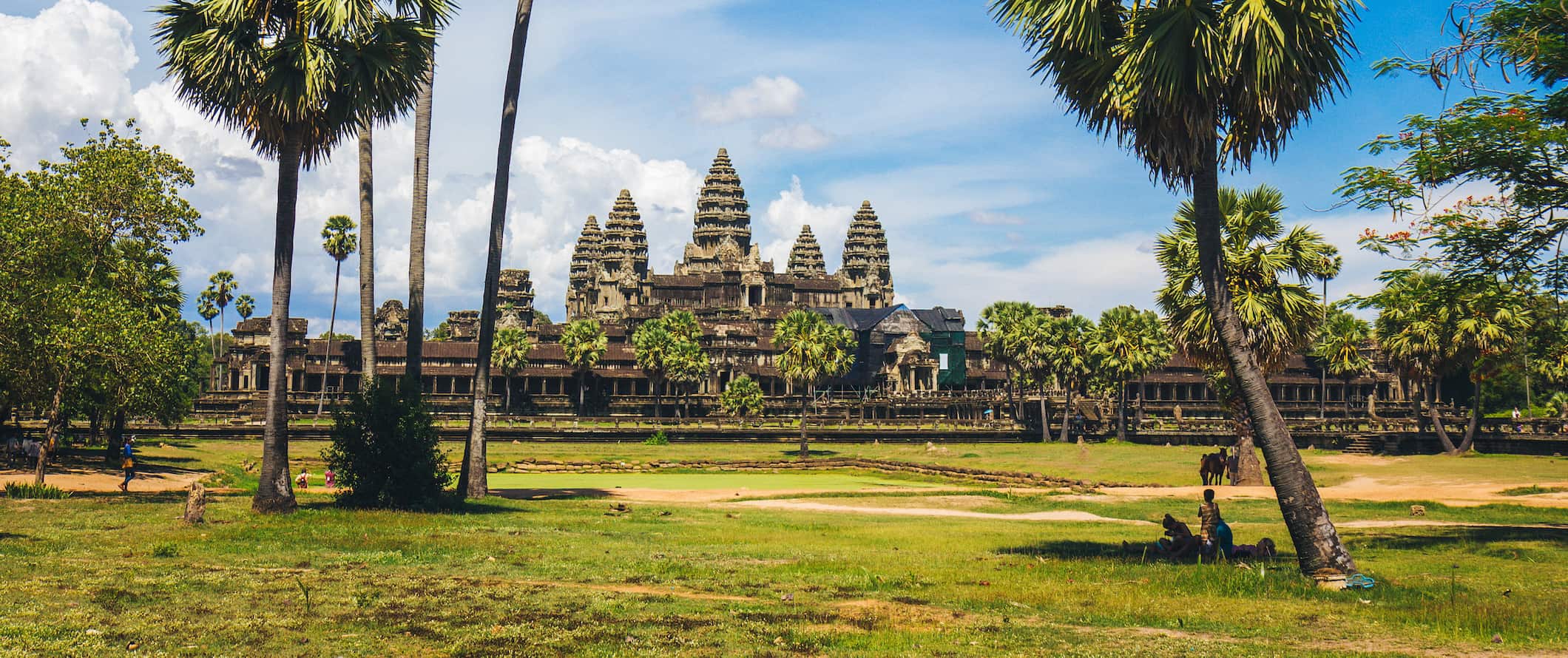
1. Admire Angkor Wat
One of the greatest human creations in history, the Angkor Wat temple complex is best explored over the course of a few days. The area is a UNESCO World Heritage Site created by the Khmer Empire and absolutely enormous. Temples to visit include Angkor Wat, Bayon Temple which has 216 gigantic stone face carvings, and Ta Prohm. I spent three days here and that simply wasn’t enough. A one-day pass is $37 USD, while a 1-week pass is $72 USD. If you’re here for multiple days, be sure to hire a driver and see some of the more out of the way ruins away from the main temple complex (and the crowds).
2. Explore Bangkok
Bangkok is the hub of travel activity in Southeast Asia. You can get anywhere you want from here. Though I hated it at first, the more I’ve spent time here the more I love it. Bangkok is like an onion whose many layers need to be peeled back. Some things not to miss include the spectacular Bangkok Grand Palace, Wat Pho, Chatuchak Market and Asiatique, and a canal trip on the Chao Phraya River. This is a city for foodies and wild nightlife.
3. Relax on some tropical islands
No visit to Southeast Asia would be complete without a visit to at least one of the thousands of tropical islands in the region. My top five include the Perhentian Islands (Malaysia), Rabbit Island (Cambodia), Ko Lanta (Thailand), and Boracay (Philippines). Lombok Island (Indonesia) has a chill vibe with unspoiled, perfect “desert island” beaches. There’s so many islands to visit. Be sure to add at least one to your trip. The country guides will have more information for you.
4. See Ha Long Bay
Sailing trips to this island-filled bay with stunning emerald waters, limestone formations, and marine life give you an appreciation for the natural beauty in Vietnam. Tours from Hanoi start at around $110 USD for two-day trips and increase from there. I love the colorful grottoes, hanging stalactites, and stalagmites of Surprise Cave (Sung Sot), Fairy Cave (Tien Ong), and Heaven Palace (Thien Cung). Make sure you go with a reputable company though as some of the cheaper boats are less than ideal. If you’d rather just visit for one day, day trips from Hanoi cost $55 USD.
5. Wander Kuala Lumpur
Other things to see and do in southeast asia, 1. go jungle trekking.
This region of the world is covered in amazing jungles with diverse wildlife, plentiful camping opportunities, and cool waterfalls. The best jungle treks are found in northern Thailand, Western Laos, and Malaysian Borneo (the latter are also the hardest and most intense). Some of my favorites include Danum Valley (Borneo) for its incredible wildlife; Ratanakiri (Cambodia) for its pristine wilderness and thousand-year-old trees; and Pu Luong Nature Reserve (Vietnam). Costs vary but jungle trekking generally costs $30-50 USD per day.
2. Attend the Full Moon Party
The biggest one-night party in the world welcomes up to 30,000 people with a party that stretches until dawn. Cover yourself in glow paint, grab a bucket of booze, and dance the night away with new friends on the island of Ko Phangan in Thailand. As the name would suggest, the party is on the night of the full moon. If you miss it, there’s always the half-moon party, quarter-moon party, and black-moon party. Really, every night is a party on Ko Phangan . Just avoid the flaming jump rope that occurs — I’ve seen people get burned badly!
3. Learn to dive
There are many great dive sites around the region for those interested in underwater exploration. You can learn to dive here at a fraction of what it would cost back home too. Some of the best places are Ko Tao (Thailand), Sipadan (Malaysia), as well as Gili Islands (Indonesia) and Coron, Palawan (The Philippines). A typical diving course is completed in three days. A PADI course typically runs $275 USD in Thailand, including three nights’ accommodation, though at smaller schools you can often negotiate down to $250 USD. Day trips for certified divers start at $165 USD. For information on Ko Tao, check out this blog post .
4. Eat street food in Singapore
Singapore is a foodie’s heaven. Try the hawker stalls of Singapore as well as Little India and Chinatown for some of the best and cheapest food in Asia. If you’re looking for a nice place to sit down and eat, eat at Singapore’s famed restaurants during lunch when restaurants offer discounts, making them a great deal. You’ll also find the most affordable Michelin-starred restaurants here (Tian Tian Hainanese Chicken Rice and Hawker Chan), offering world-class meals for just a couple of bucks!
5. Overload on temples
You can’t turn a corner without seeing a Buddhist temple in this part of the world. You’ll get temple overload at some point but visit as many as you can as each is unique to the country and region of the temple. There are so many places with high concentrations of ornate and beautiful temples. Check out Chiang Mai’s Wat Doi Suthep Temple and hike up the 300 steps to the golden Chedi that’s 600 years old!; Bagan’s Shwesandaw Pagoda from the 11th century with its stunning golden dome; Angkor Wat’s Ta Prohm is covered in iconic vines and enveloped in ancient jungle roots; Hue’s colorful Thien Mu Pagoda is perched atop a lush green embankment; Hoi An’s Quan Cong Temple with incredible Chinese architecture with hand-carved beauty and skill, and Luang Prabang’s Vat Xieng Thong with its golden, canopied roof. Most are free to enter, however, dress codes are enforced (you need to have your shoulders and legs covered).
6. Dive Sipadan
Located off Malaysian Borneo, Sipadan is one of the best dive sites in the world. If you have your dive certificate, make sure you venture out here. I absolutely love this area because it’s teeming with live turtles, diverse cave systems, sharks, dolphins, colorful coral, bright fish, and everything in between. Not a lot of people make it to this part of Malaysia, but it’s worth it to go the extra mile and make your way off the tourist trail a bit. Don’t miss Barracuda Point and The Drop-Off. Keep in mind that only 176 permits to dive at the island are issued each day, costing 140 MYR per person. The resorts on the neighboring islands each get a specific number of permits per day and require divers to stay with them for a few days. So you’ll need to stay at those resorts and dive into the surrounding areas before they can get you a Sipadan permit.
7. Fall in love with Bali
Bali is the most popular destination in Indonesia, and its famous Kuta beach is known for its wild parties and surfing ( though I think it’s overrated ). However, there is much more to Bali than just wild nights and sun-soaked days. If you’re a thrill seeker, hike up to the top of Mount Batur, an active volcano, for a breathtaking sunrise. Paragliding and white water rafting are also super popular here, as is surfing (it’s an affordable place to learn if you’ve never done it). There are also lots of hot springs to enjoy, the Ubud Monkey Forest (a popular temple and nature reserve home to hundreds of monkeys), and numerous places to scuba dive, including the Liberty wreck and Manta Point.
8. Take in Ho Chi Minh City
Frantic, chaotic, and crazy, Ho Chi Minh City in Vietnam is the embodiment of the controlled chaos that rules Southeast Asia. You can’t quite figure out how this teeming mass of people and cars work together, but it does. Highlights here include touring the tunnels used by the Viet Cong in the 1960s, taking in the view from the Saigon Skydeck, eating your way through the street food scene, and seeing the city’s numerous temples.
9. Admire the sunrise over an Indonesian Volcano
One of the most popular tourist attractions on Java is Mount Bromo and its National Park. Don’t miss out on getting a photo of the smoldering Bromo volcano as it lies surrounded by the almost lunar landscape of the Sea of Sand. Get up early to catch one of the most memorable sunrises of your life. If you’re there in mid-August, you’ll be just in time to see Upacara Kasada, the traditional Hindu ritual of the Tenggerese, a Javanese tribe of the region.
10. Hike in Khao Sok National Park
Located in southern Thailand, Khao Sok National Park is constantly rated as one of the best parks in Thailand, with incredible trekking, camping, limestone karsts, cooling rivers, and a glistening lake. Visit for semi-challenging hikes, tons of wildlife, walking paths, and breathtaking sunsets. Park entrance costs around $6 USD while full-day guided tours are $95 USD. I highly recommend spending at least one night here to get the full experience.
11. Visit Kampot
Most people come to Kampot to enjoy the scenic riverside views, as well as the rolling hills that surround the city. Since you can explore easily enough on foot or by bicycle, Kampot is a great place to slow down and relax. There’s not much to do here but have lazy days by the river, chill, and eat (don’t miss the famous Rusty Keyhole for BBQ!). Don’t miss the pepper farms, as this region of Cambodia is filled with pepper farms where you can learn about the history of the spice, see how it is grown, and pick up what is considered some of the finest pepper in the world. Tours are usually free.
12. Take a cooking class
Food from this region is as varied as the countries themselves and learning how to cook a few dishes is a great souvenir of your time here. Even if you don’t plan to cook back home, you can still spend a day making and eating scrumptious food. Most big cities have cooking schools offering classes of 2-6 hours, often including a trip to the local market beforehand to select ingredients. I absolutely love cooking classes and urge you to take one at least once. They are a fun experience!
13. Take a food tour
If you’d rather eat instead of cook, taking a food tour is a fun way to gain insight into the region’s amazing noodle dishes, fresh seafood, sweets, and street food while learning about the history and culture behind the cuisine. Most major cities in Southeast Asia offer food tours. These include tours around local markets, street stalls, and tours to locally-owned restaurants and cafes where you can sample the local cuisine and connect with a local chef. If you’re nervous about street food, this is a great way to try some in a controlled setting. Tours usually last 2-4 hours and include multiple stops and several different dishes, with prices costing $40-75 USD per person.
14. Visit an elephant sanctuary
While riding an elephant is on many a Southeast Asia bucket list, once you know how much the animals suffer from abuse in order to provide these rides, you might think twice about taking one. An even better way to interact with elephants is to volunteer at or visit the Elephant Nature Park near Chiang Mai in Thailand. It’s a phenomenal place, allowing you to give back to the community and these magnificent animals all at once. After coming here, you will understand why you should NEVER ride an elephant. A one-day visit costs $70 USD.
15. See The Killing Fields
A visit to Choeung Ek, also known as the Killing Fields, may not be the most cheerful way to spend an afternoon, but it makes for an educational and memorable experience. Over 3 million people were killed by Pol Pot’s regime, including countless women and children. I recommend getting a guide so you can really understand what you’re seeing as you explore the area. Also, this horrific tragedy took place less than 50 years ago and is still very present so please be respectful as a visitor. The site is located 10 miles from Phnom Penh. Half-day guided tours start at $66 USD.
16. Swim with Whale Sharks in Donsol
If you’re in the Philippines, check out the Donsol Whale Shark Interactive Ecosystem Project because there are not many experiences quite as adrenaline-inducing as swimming with a whale shark for the first time in crystal waters. These incredible creatures are around 45 feet (14 meters) long and yet incredibly gentle and curious. I loved floating at the surface being able to look below and see them slowly swim below me. Get some people together and rent a boat for a half day, explore the area, and go ‘shark-seeing’ for a good cause.
For a ton more information, visit my country specific travel guides for more detailed information on each place:
- Cambodia Travel Guide
- Indonesia Travel Guide
- Laos Travel Guide
- Malaysia Travel Guide
- Singapore Travel Guide
- Thailand Travel Guide
- Vietnam Travel Guide
Southeast Asia Travel Costs
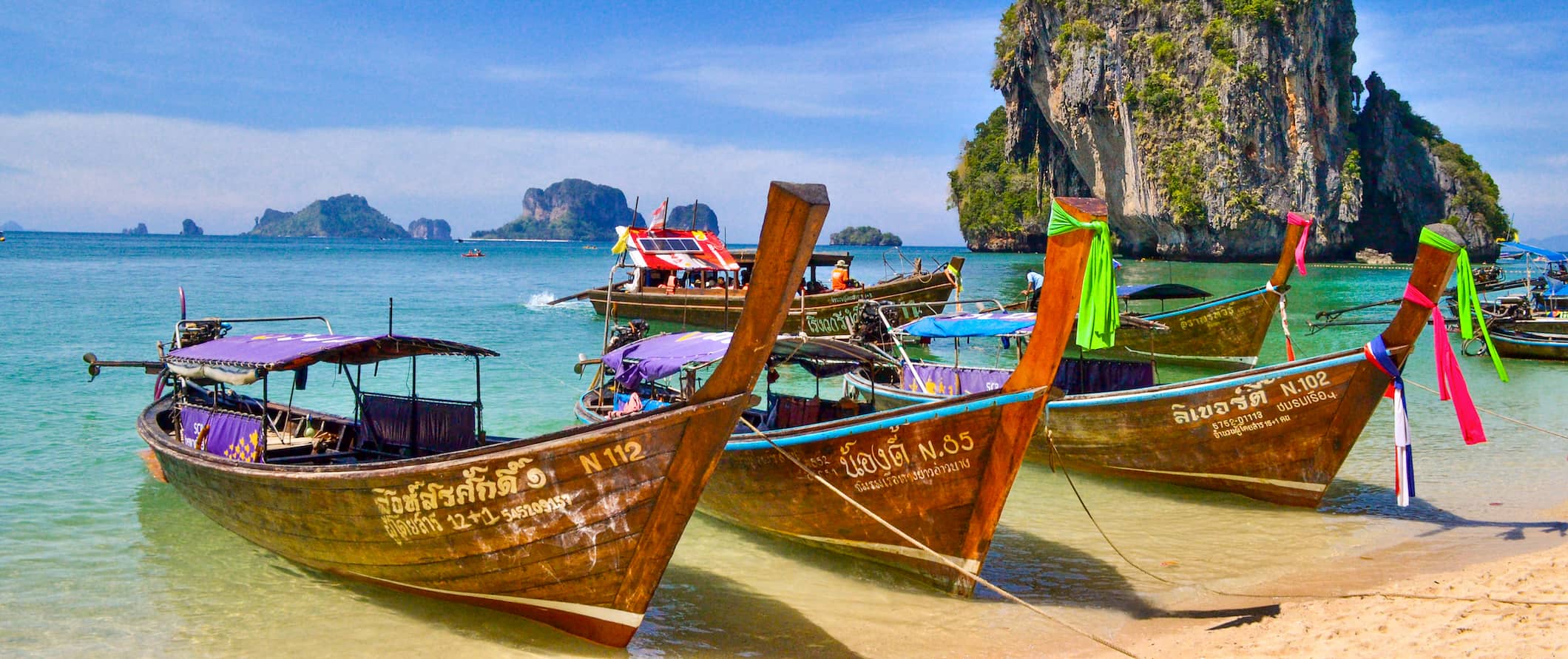
Accommodation – Accommodation in Southeast Asia is really cheap, making it the perfect place to travel if you are on a budget. Hostels are plentiful, as are budget guesthouses and hotels. It’s also very cheap to splash out here if you’re in need of some luxury.
Generally, you can find hostel dorm rooms for as little as $6-8 USD in Cambodia and $3-6 USD in Laos. In Thailand, 4-6-bed dorm rooms are $8-12 USD, while in Vietnam you can expect to pay $5-7 USD. In Indonesia, prices range between $5-10 USD for a 4-6-bed dorm room. Expect to pay at least $15-20 per night for a private room with air conditioning. Free Wi-Fi is standard in most hostels, free breakfast is common, and many hostels even have pools. In more remote areas, hot water isn’t common so make sure to check in advance if that’s an issue for you.
Simple guesthouses or bungalows throughout Southeast Asia generally cost $12-20 USD per night for a basic room with a fan (sometimes air conditioning) and hot water. If you want something nicer that includes a more comfortable bed and a TV, expect to pay $25-35 USD per night.
For backpackers, budgeting around $10 USD per night for accommodation is pretty safe no matter where you go in Southeast Asia. If you’re looking for a higher-end hotel room with more amenities, expect to pay $20-50 USD per night for a room. Anything over that is luxury territory.
Camping is available in certain areas, usually for just a few dollars per night for a basic tent plot without electricity. However, this is about the same price as hostels so it’s not really any cheaper.
Food – While each country’s cuisine varies, overall, Southeast Asian food is aromatic, spicy, and flavorful. Typical spices and herbs include garlic, basil, galangal, cilantro, lemongrass, kaffir lime leaves, chilies, and fish sauce. No matter what region you’re in, you can expect to find a variety of curries, salads, soups, noodle dishes, and stir-fries.
Rice and noodles are central to Southeast Asian food, while the meat is usually pork, chicken, fish, or seafood, which is everywhere on the islands and coastal areas.
While traveling Southeast Asia, street food is the most popular food and cheapest option. On average, these meals cost $1-5 USD. You find these stalls throughout this region lining most streets and every market. They are ubiquitous in the region. In Singapore, street food (from “hawker stands” as they’re known there) costs around $4-5 USD for a meal. Even if you go into small local restaurants, the price doesn’t increase that much.
Food that costs $2 USD at a street stall generally only costs $4-6 USD at a local restaurant. If you went into a restaurant in Thailand, you’d pay around $3-4 USD for a pad Thai that would have cost $1-2 USD on the street.
In Cambodia, street food is around $1-2 USD, while restaurants charge around $3-5 USD for a dish like amok (a coconut milk dish) or luc lac (pepper gravy beef).
Western meals, including burgers, pizza, and sandwiches usually cost around $7-10 USD. But these generally aren’t that great. If you want something that actually tastes as it does back home, expect to spend at least $10-12 USD for your meal.
While cheap, alcohol can take a bite out of your budget if you’re not careful. Those $1-2 USD beers add up! Wine and cocktails are more expensive, generally around $3-5 USD. A cappuccino is typically around $2 USD. Bottled water is plentiful and costs less than $1 USD.
There’s a growing cutting-edge foodie scene in the region and, if you want to splurge, you can do so on some really good meals. Big cities like Bangkok, KL, and Singapore, all have world-class Michelin star restaurants as well some incredible fusion restaurants.
Since dining out is so cheap in the region, there’s no point in grocery shopping unless you’re looking to get some pre-made salads or fruits. Additionally, a general lack of kitchens in most hostels and hotels makes it difficult to cook even if you wanted to. If you do purchase your own groceries, expect to spend around $25 USD per week for basic groceries like local produce, rice, and some meat (while avoiding expensive imported items like cheese and wine).
Backpacking Southeast Asia Suggested Budgets
On a backpacker budget of $45 USD per day, you can stay in hostel dorms, eat out at local markets and street stalls, limit your drinking, do mostly free activities, minimize paid activities, and use public transportation to get around. You’re not going to be able to splash out but you’ll be able to live the typical backpacker experience without really stressing over expenses.
On a mid-range budget of $85 USD per day, you can stay in budget hotels or private hostel rooms, eat more restaurant meals, do more paid activities like cooking classes, take some taxis, and enjoy a few more drinks. You won’t live large, but you won’t be missing out either.
On an upscale budget of $150 USD or more per day, you can stay in nicer hotels with more amenities, eat out as much as you want, do more paid tours including private tours, hire a driver, fly between destinations, and basically do whatever you want. The sky is the limit with this kind of budget!
You can use the chart below to get some idea of how much you need to budget daily, depending on your travel style. Keep in mind these are daily averages — some days you’ll spend more, some days you’ll spend less (you might spend less every day). We just want to give you a general idea of how to make your budget. Prices are in USD.
Southeast Asia Travel Guide: Money-Saving Tips
Backpacking Southeast Asia is cheap. There’s little opportunity to spend a lot of money since everything is already so inexpensive unless you intentionally are trying to splash out on fancy meals and high end hotels. The two reasons why most travelers end up overspending is that they eat a lot of Western food and drink way too much. If you want to save money while traveling in this part of the world, cut down on your drinking and skip the Western food. While country guides have more specific ways to save money, here are some general ways to save money in Southeast Asia:
- Stay with a local – Accommodation is cheap in Southeast Asia but nothing’s cheaper than free! Use Couchsurfing to stay with locals who have extra beds and couches for free. You’ll also meet great people who can show you around and share their insider tips and advice.
- Book tours and day trips as a group – You have more negotiation power when you’re with a group of people buying multiple spots or tickets. Traveling alone? Meet a friend at a hostel and see if they want to join the same tour as you. I’ve met some great friends over the years doing this and highly recommend it.
- Don’t book in advance – Don’t book any tours or activities before you get to your destination. They’ll be much cheaper when you arrive as you’ll be able to negotiate a lower price as you’ll find companies are often offering the same tour and competing. Anything you see online is more expensive than you need to pay!
- Eat on the street – The street food is the best food. The food is the best and cheapest you’ll find. It’s a great way to try new foods and get to chat with locals as well. This is where locals eat so if you want insight into local culture, good food, and savings, eat the street food. Look for where locals are eating to ensure that it’s safe to eat.
- Bargain hard – Nothing is ever at face value here. Bargain with sellers as most of the time, the price they’ve quoted is way higher. There’s a haggling culture in the region so play the game and save some money. It’s important not to convert it in your head to your own currency because it will usually sound cheap even though you might still be getting ripped off. You’ll never get the local price, but you might come close!
- Minimize your drinking – Drinks really add up. Even with cheap drinks, if you’re not aware, you’ll end up spending more money on beer than on food and accommodation. If you want to drink, head to the supermarkets, drink at the hostel, or check out the local happy hours.
- Pack a water bottle – A water bottle with a purifier comes particularly in handy in Southeast Asia since you can’t usually drink the tap water. Save money and thousands of plastic bottles and get a bottle that can purify the tap water for you. My preferred bottle is LifeStraw as it has a built-in filter that ensures your water is always safe and clean.
Where to Stay in Southeast Asia
I’ve been traveling Southeast Asia since 2005 and have stayed in hundreds of places. Here are some of my favorite places to stay in Southeast Asia:
- The Siem Reap Pub Hostel (Siem Reap)
- Onederz Siem Reap (Siem Reap)
- Mad Monkey Siem Reap (Siem Reap)
- Onederz Sihanoukville (Sihanoukville)
- Monkey Republic (Sihanoukville)
- Onederz Phnom Penh (Phnom Penh)
- Sla Boutique Hostel (Phnom Penh)
- The Magic Sponge (Kampot)
- Indigo House Hotel (Luang Prabang)
- Sa Sa Lao (Luang Prabang)
- Sanga Hostel (Pakse)
- Nana Backpackers Hostel (Vang Vieng)
- Dream Home Hostel (Vientiane)
- Traveller Bunker Hostel (Cameron Highlands)
- De’Native Guest House (Cameron Highlands)
- Kitez Hotel & Bunks (Kuala Lumpur)
- Sunshine Bedz Kuala Lumpur (Kuala Lumpur)
- Ryokan Muntri Boutique Hostel (Penang)
- Mad Monkey Hostel (Bangkok)
- D&D Inn (Bangkok)
- Kodchasri B&B (Chiang Mai)
- The Royal Guest House (Chiang Mai)
- Green Leaf (Khao Yai)
- Lonely Beach Resort (Ko Chang)
- The Sanctuary (Koh Phangan)
- Na-Tub Hostel (Koh Phangan)
- Pineapple Guesthouse (Phuket)
- Dream Lodge
- The Pod Capsule Hostel
- The Scarlet
- Under the Coconut Tree Guesthouse (Hoi An)
- Fuse Beachside (Hoi An)
- Pretty Backpackers House (Da Lat)
- Hanoi Old Quarter Hostel (Hanoi)
- Luxury Backpackers Hostel (Hanoi)
- The Hideout (HCMC)
- City Backpackers Hostel (HCMC)
How to Get Around Southeast Asia
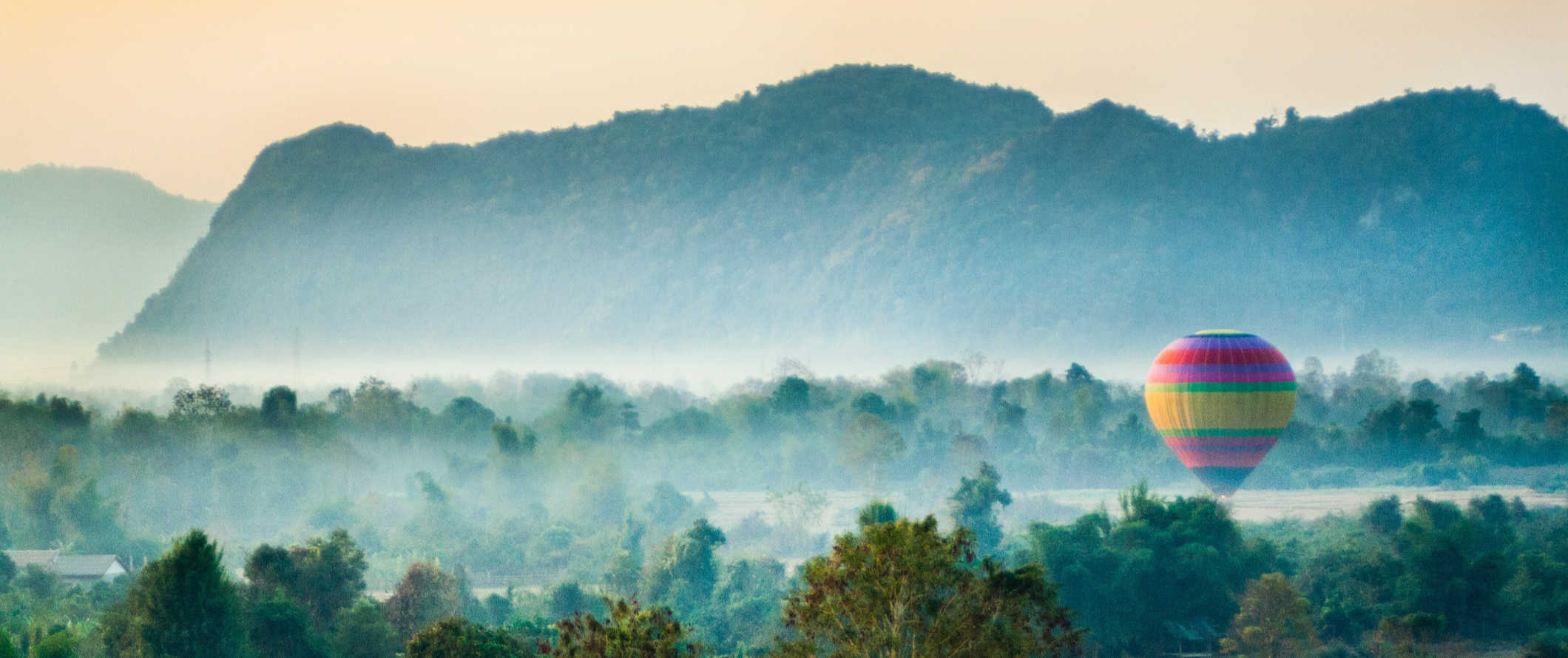
Public transportation – Public transportation costs from a few pennies to a few dollars, with Singapore and Malaysia offering the most comprehensive public transportation systems. In Thailand, local buses cost around $0.25 USD per trip, while the Metro and Skytrain in Bangkok cost $0.50-1.50 USD per trip. In Cambodia, a bus ticket in Phnom Penh costs just $0.40 USD per ride.
Major cities generally have subway systems but mostly you’ll be using the bus or shared taxis to get around.
Tuk-tuks (small, shared taxis with no meter) are available around much of the region and require a bit of haggling. They usually have 3-6 seats and generally cost more than public transportation but are faster. To find a reputable driver, ask your accommodation as they usually know someone. Tuk-tuk drivers can often be hired for the day for a discounted rate (this is what a lot of people do to visit the Killing Fields and Angkor Wat in Cambodia, for example).
Taxi – Taxis in the region are generally safe, though it’s not uncommon to have to haggle. Scams to rip you off aren’t uncommon either, so always ask your accommodation to call you a taxi whenever possible so you know you’ll get a reputable company.
In Singapore and Indonesia, taxi drivers do put on the meter. In Bangkok, you can get taxi drivers to use the meter, but if you’re hailing one in a tourist area, he might try to avoid using it. In Vietnam, the meter is sometimes rigged, but if you can get a reputable company like Mai Linh, you won’t have any problems.
Ridesharing – Grab, DiDi, and Gojek are Asia’s answer to Uber. They work the same way: you hire a driver to take you somewhere via the app, and you can pay via the app or in cash. It’s often more affordable than a regular taxi, though drivers are a bit unreliable as the practice is not as widespread here as in other parts of the world.
Just keep in mind that some drivers are driving motorcycles so be sure to double check what kind of vehicle is picking you up if you don’t want to ride on the back of one.
Bus – The easiest and cheapest way to travel around Southeast Asia is by bus. The backpacker trail is so worn that there is a very well-established tourist bus system to take you anywhere. Buses costs vary between $5-25 USD for a 5-6 hour journey. Overnight buses cost $20-35 USD depending on distance (they often have reclining seats so you can get a decent sleep).
You can check ticket prices and book tickets for all the different bus companies across Southeast Asia at 12go.asia.
Train – Train service is limited in the region and not something to really consider when you travel Southeast Asia. You can take a train up and down the coast of Vietnam and there’s some limited scenic rails in Malaysia. Thailand is the only country that has an extensive train system that lets you travel all its regions (and onward to Singapore) from Bangkok.
The train prices in Southeast Asia are determined by distance and class. Night trains with sleeper cars are more expensive than day trains. The night train to Chiang Mai from Bangkok takes twelve hours and costs $27 USD for a sleeper seat. However, that same train during the day is $8-9 USD. In Vietnam, trains run up and down the coast and cost $60 USD from Hanoi to Ho Chi Minh City.
Flying – The cost of flying around Southeast Asia has come down in recent years due to the rise of low-cost airlines. Scoot, Jetstar, and AirAsia are the biggest. Nok Air has a lot of flights within Thailand , and VietJet Air is popular in Vietnam . Lion Air serves Indonesia , but its safety record is really spotty and I personally would not fly them. If you book early, you can save on fares, as most of the airlines offer deeply discounted fare sales all the time, especially Air Asia.
Just make sure that the airport these budget airlines fly into isn’t too far out of your way (transportation from the secondary airport sometimes negates the savings from using the budget airline itself).
Also, keep in mind that you usually must pay to check your baggage on these cheap flights. If you wait to pay for your luggage at the gate, you end up paying almost double. Travel carry-on only to avoid this added cost.
All in all, I only recommend flying if you are pressed for time or find a super cheap deal. Otherwise, stick to the bus.
Hitchhiking – Hitchhiking in Southeast Asia is safe, though popularity of the practice varies by country (it’s more common in Malaysia, but not so much in Cambodia). Dress respectably, smile while making eye contact with drivers, and use a cardboard sign to tell people where you’re headed. Be prepared for long bouts of no pick-ups, especially if you’re traveling through more rural areas. Pack plenty of water and food. Also, make sure the people picking you up understand you’re hitchhiking and not flagging down a taxi.
Hitchwiki is a great resource for hitchhiking tips.
Car rental I don’t recommend renting a car in Southeast Asia. Rental cars are expensive ($40 USD per day or more) and the roads here are in poor shape. I would never drive around the region.
When to Go to Southeast Asia
The best time of year to visit Southeast Asia is from November to April when temperatures are milder (though temperatures vary drastically by region). It may be mild in Thailand in January and hot in Malaysia but in Northern Vietnam, it’s cold! Also, one of the biggest mistakes people make is not taking into account the rainy season. In some cases it won’t make a big difference but definitely does if it’s a beach trip.
In Indonesia, the best time to visit is April to October. Temperatures average 24-30ºC (75-86ºF), and the weather is mostly dry. July to September is the peak holiday season and when you can expect to pay the highest rates. December to February is the rainy season.
In Malaysia, January-March and June-September are the best time to visit, as these months have the lowest average rainfall. It is still hot and humid during this time though. The rainy season is from October to December. Singapore’s climate/weather is much like Malaysia’s.
In Vietnam, the weather varies by region. In Central Vietnam (including Hoi An and Nha Trang), January-May is the best time to visit because it is dry and the temperatures average 21-30°C (70-86°F). June to August is also a decent time to visit. If you want to stick around Hanoi, March to April is great, or October to December (for mildest temperatures). The rainy season is May-September.
Thailand has three seasons: hot, hotter, and hottest. It’s always warm, though the weather is nicest between November and February (which is also peak tourist season). Bangkok is “coolest” and driest during this time (but still averaging a hot 29°C/85°F each day). April and May are the hottest months, and the rainy season is June-October. The gulf islands get pretty rainy from August to December.
The dry season in Cambodia is from November-May and the cool season is from November-February (and when most people visit). Temperatures during this time are still high, but humidity is lower. Laos has the same cool season as Cambodia, with the dry season running from November-April.
In the Philippines, it’s mostly warm all year long with an average daily high of 26°C (80°F). There are rainy and dry seasons and temperatures are hot and dry from March-May and cooler December-February. The best time to visit is between January-April when it’s less humid. Monsoon Season is July-October.
For more information on when to go to places, visit the specific country guides.
How to Stay Safe in Southeast Asia
Southeast Asia is an incredibly safe place to backpack and travel — even if you’re traveling solo and even as a solo female traveler. Violent crime is super, duper rare. Petty theft (including bag snatching) is the most common type of crime in Southeast Asia, especially around popular tourist landmarks. Always keep your valuables out of reach on public transportation and in crowds just to be safe. Never leave your valuables unattended while at the beach and always keep a hold of your purse/bag when out and about as bag snatching is common.
That said, outside touristy areas, theft is really rare. Heck, it’s pretty rare in touristy areas too! But a little vigilance goes a long way and it’s better to be safe than sorry.
There are some common scams around that you’ll want to be aware of, such as the motorbike scam. This involves a bike rental company trying to charge you for damage to the bike that you didn’t cause. To avoid this, always take photos of your rental before you leave so you can protect yourself from baseless claims.
Another common scam involves a tuk-tuk driver taking you somewhere you didn’t want to go in hopes you’ll buy something from the shop/restaurant he dropped you off at (he gets a commission if you do). Simply refuse to buy anything and demand to go back to where you were — or find another driver.
For other common travel scams, read this post about major travel scams to avoid in the region .
Solo female travelers should feel safe here, though it’s generally a good idea to avoid walking around alone at night just to be safe. It’s always a good idea to carry some extra cash to get home in a taxi if you need to. Additionally, always keep an eye on your drink at the bar and never accept drinks from strangers. Be sensible when it comes to dating while traveling and meeting people in public places. As I’m not a woman, please check out some solo female travel blogs to get the best insight.
Overall, the people who get in trouble here tend to be involved with drugs or sex tourism. Avoid those two things and you should be fine. Keep in mind that it’s not always obvious how old someone is or if they’re a sex worker so be mindful when getting involved in romantic interactions. Also, penalties for drug use in this region are stiff so even if you’re here to party, skip the drugs.
Always trust your gut instinct. Make copies of your personal documents, including your passport and ID. Forward your itinerary along to loved ones so they’ll know where you are.
For more in-depth coverage of how to stay safe in Southeast Asia, check out this post that answers some frequently asked questions and concerns.
The most important piece of advice I can offer is to purchase good travel insurance. Travel insurance will protect you against illness, injury, theft, and cancellations. It’s comprehensive protection in case anything goes wrong. I never go on a trip without it as I’ve had to use it many times in the past. You can use the widget below to find the policy right for you:
Southeast Asia Travel Guide: The Best Booking Resources
These are my favorite companies to use when I travel. They consistently have the best deals, offer world-class customer service and great value, and overall, are better than their competitors. They are the companies I use the most and are always the starting point in my search for travel deals.
- Skyscanner – Skyscanner is my favorite flight search engine. They search small websites and budget airlines that larger search sites tend to miss. They are hands down the number one place to start.
- Hostelworld – This is the best hostel accommodation site out there with the largest inventory, best search interface, and widest availability.
- Agoda – Other than Hostelworld, Agoda is the best hotel accommodation site for Asia.
- Booking.com – The best all around booking site that constantly provides the cheapest and lowest rates. They have the widest selection of budget accommodation. In all my tests, they’ve always had the cheapest rates out of all the booking websites.
- Get Your Guide – Get Your Guide is a huge online marketplace for tours and excursions. They have tons of tour options available in cities all around the world, including everything from cooking classes, walking tours, street art lessons, and more!
- SafetyWing – Safety Wing offers convenient and affordable plans tailored to digital nomads and long-term travelers. They have cheap monthly plans, great customer service, and an easy-to-use claims process that makes it perfect for those on the road.
- LifeStraw – My go-to company for reusable water bottles with built-in filters so you can ensure your drinking water is always clean and safe.
- Unbound Merino – They make lightweight, durable, easy-to-clean travel clothing.
Get the In-Depth Budget Guide to Thailand!

My detailed 350+ page guidebook is made for budget travelers like you! It cuts out the fluff found in other guidebooks and gets straight to the practical information you need to travel around Thailand. You’ll find suggested itineraries, budgets, ways to save money, on and off-the-beaten-path things to see and do, non-touristy restaurants, markets, bars, safety tips, and much more! Click here to learn more and get your copy today.
Southeast Asia Travel Guide: Related Articles
Want more info? Check out all the articles I’ve written on Southeast Asia travel and continue planning your trip:

The 4 Best Hostels in Singapore
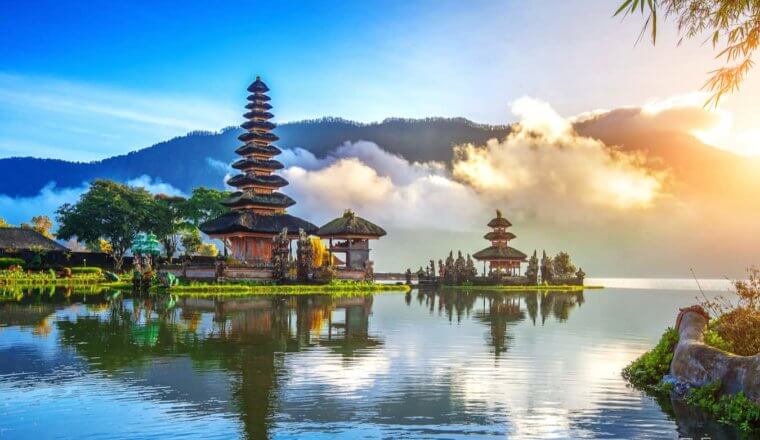
The 6 Best Hostels in Bali
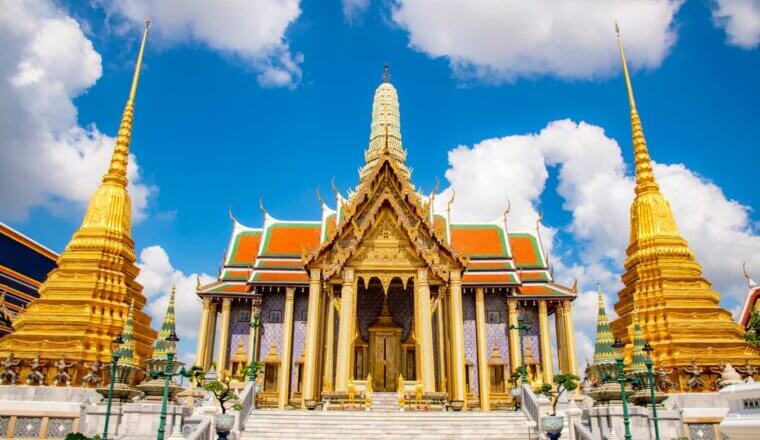
The 22 Best Things to Do in Bangkok
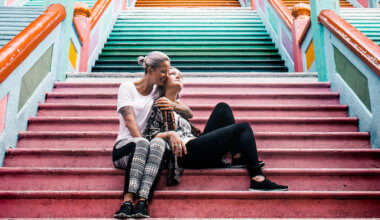
5 LGBTQ Travel Tips for Asia

Is Southeast Asia Safe for Travelers?
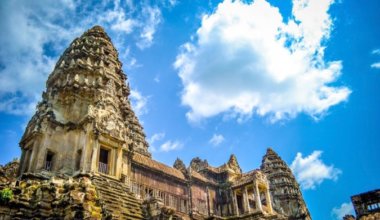
Backpacking Cambodia: 3 Suggested Itineraries for Your Trip
Get my best stuff sent straight to you, pin it on pinterest.
- Where To Stay
- Transportation
- Booking Resources
- Related Blogs

15 Best Places to Visit in Southeast Asia
Written by Diana Bocco Updated Jul 13, 2022 We may earn a commission from affiliate links ( )
The countries that fall in the Southeast Asia region have so much going for them, it's almost impossible to keep them off anybody's travel bucket list . From white, soft beaches and major cities to the rich history, culture, and the must-try food, this part of the world has something for everybody.
While some destinations, such as Thailand's beaches and islands and the majestic Angkor Wat in Cambodia, are known everywhere, some places in Southeast Asia remain more elusive and off the main tourist radar. This gives visitors a chance to mix things up – to go with the crowds to see the most popular spots, but also make time to discover new and different corners of Southeast Asia.
Whatever your heart is set on, here is a list of the best places to visit in Southeast Asia.
1. Angkor Wat, Cambodia
2. ha long bay, vietnam, 3. koh samui, thailand, 4. boracay, philippines, 5. bagan, myanmar, 6. kuala lumpur, malaysia, 7. bangkok, thailand, 8. singapore, 9. yangon, myanmar, 10. luang prabang, laos, 11. palawan island, philippines, 12. tegalalang rice terraces, bali, 13. komodo island, indonesia, 14. chiang mai, thailand, 15. hanoi, vietnam, map of places to visit in southeast asia.
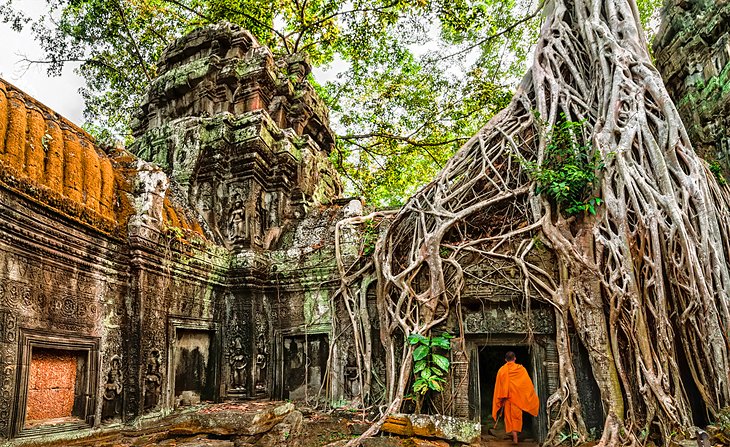
Located in northwestern Cambodia, the city is best known for being the gateway to the Angkor region, but Siem Reap has much to offer on its own. A mix of Chinese and colonial architecture gives the city a unique vibe, where countryside residents and old motorbikes blend with a vibrant café culture and a modern club scene.
Siem Reap is home to two important museums: The Cambodia Landmine Museum and Relief Center , which offers a chance to learn more about landmines and their ongoing impact on Cambodia and other Asian countries, and the War Museum , which covers the involvement of Cambodia in several wars.
There are also a number of massive markets in the city, including Psah Chas, which caters to both locals and tourists with a variety of souvenirs, fresh food, and more.
Angkor Wat , the largest religious monument and one of the top World Heritage Sites , lies less than six kilometers north of Siem Reap. The ruins of this 12 th -century temple complex cover a space of over 162 hectares, with hundreds of structures built using sandstone blocks. There are a number of other temples, also built in Khmer style, in the area, including Angkor Thom, Ta Prohm, and Pre Rup.
- Best Places to Visit in Cambodia
- Top-Rated Tourist Attractions in Siem Reap
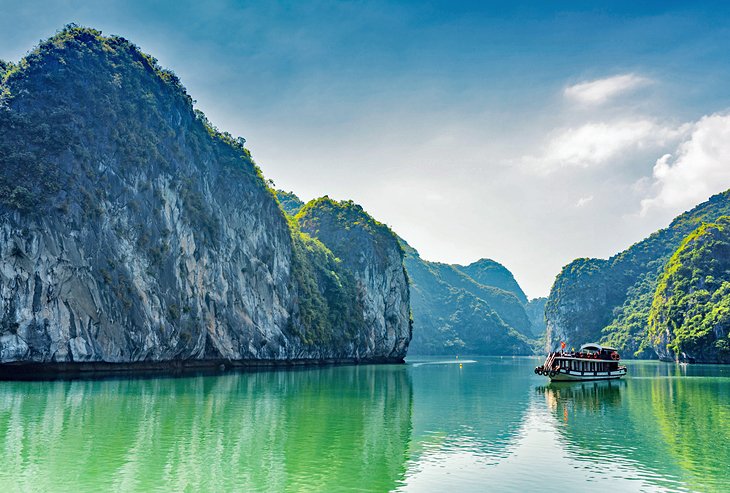
Ha Long Bay consists of a group of islands and limestone karsts that have been declared a UNESCO World Heritage Site . Many of the islands are actually tall monolithic cliffs that cannot be walked on, covered in green, lush jungle. Some of these are hollow and house beautiful caves. Dau Go Cave (Wooden Stake Cave) is a good example, a massive cave with three main chambers, multicolored stalagmites, and rock paintings. Many of the islands also have their own enclosed lakes.
Of the almost 2,000 islands here, less than 40 have permanent residents, often in the form of small communities that live in floating houses and fishing villages.
Ha Long Bay's largest island, Cat Ba , is the most common overnight stop for tourists coming to Ha Long Bay for cruises and tours. Kayaking the turquoise-green waters of the bay is a popular activity here, as well as cruising the bay in traditional junk boats.
- Read More: Things to Do in Halong Bay
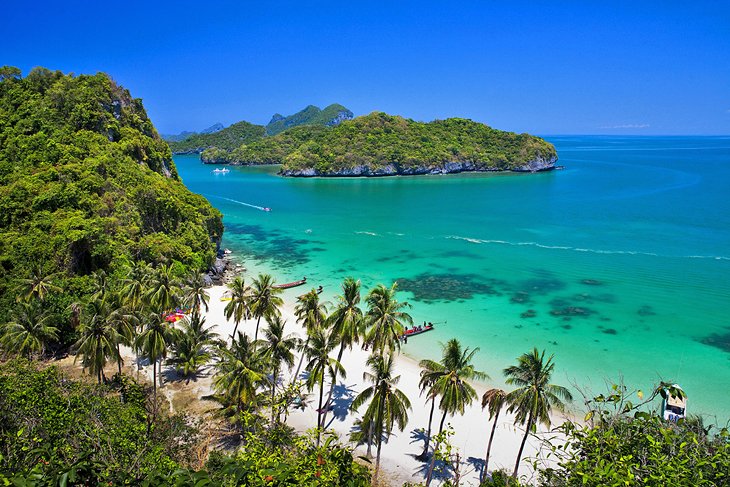
While Koh Samui has always been a beloved destination for sun worshippers and snorkelers, the crowd the island attracts has changed over the years.
Once a favorite of backpackers, Koh Samui has undergone a remarkable transformation. It now boasts high-end resorts, posh spas, and some of the whitest palm-fringed beaches in Thailand. Chaweng and Lamai beaches attract the bulk of the travelers and are well developed, clean, and full of activities, including opportunities to sail, scuba dive, and swim.
While most visitors come to Koh Samui for the beach , there's much more to see and do. Take time to explore the mangroves and hidden lakes of Ang Thong Marine National Park ; the 12-meter-tall golden Buddha at the hilltop Big Buddha shrine; and the Na Muang waterfalls, reached after a trek uphill through thick tropical forest.
Read More: Top-Rated Attractions & Things to Do in Koh Samui
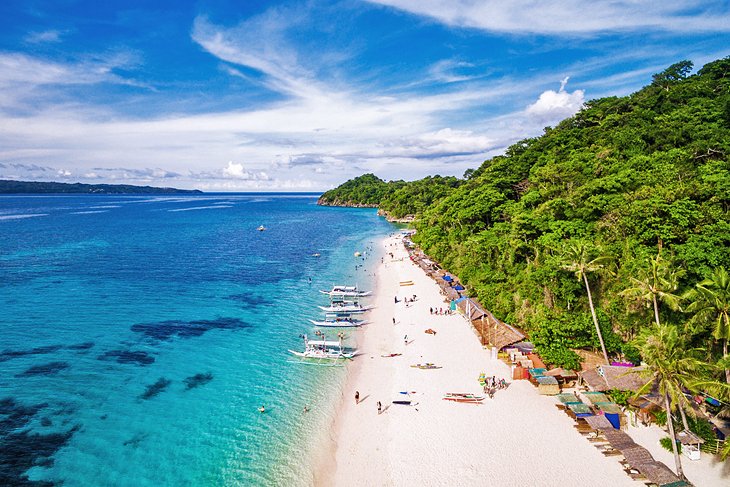
The tiny island of Boracay is just across the water from Panay Island, one of the Philippines' largest islands. Despite being only 10 square kilometers in size, Boracay attracts thousands of visitors a year, who come here for the four-kilometer-long beach and its powdery white sands that wash right into the turquoise waters and the sailboats rocking away on the waves. This is one of the best beaches in the Philippines .
In addition to scuba diving and snorkeling, Boracay is well-known for its parasailing, kiteboarding, and swimming-and, perhaps more unexpectedly, its cliff diving . Diving boards ranging from three to 15 meters high over the water are placed on certain parts of the island, with lifeguards waiting and watching as divers fly up in the air over the mirror-like waters below.
- Read More: Top-Rated Tourist Attractions & Things to Do in the Philippines
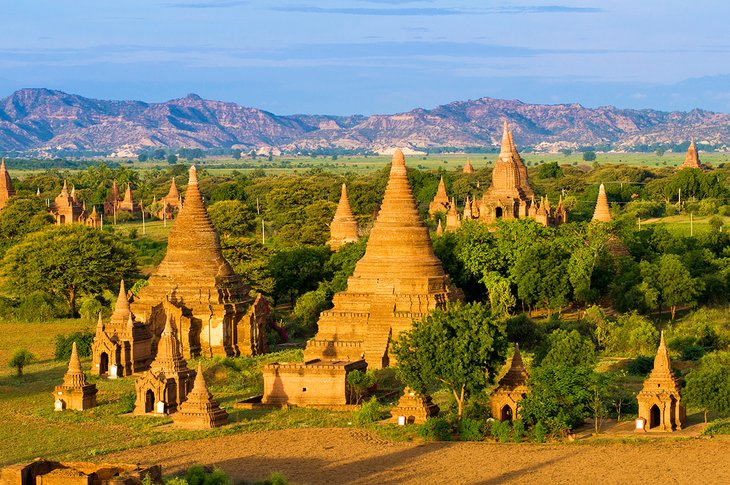
A UNESCO World Heritage Site , the ancient city of Bagan was once the capital of the first kingdom of Myanmar. Between the 11th and 13th century, over 10,000 pagodas and Buddhist temples were built here. Over 3,500 still stand today in the area known as the Bagan Archaeological Zone, which spreads over 41 square kilometers.
One of the most famous temples in Bagan is the Ananda Temple , a Buddhist temple built in a unique fusion of Mon and Indian styles. Dhammayangyi Temple , the largest religious structure in Bagan, is visible from all corners of the city and is famous for its mysterious bricked up interior.
The Bagan Archaeological Museum , located within the Archaeological Zone, is home to artifacts recovered from the area, such as stucco works, lots of lacquer and metal artifacts, and stone sculptures, including a Rosetta Stone dating back 1,000 years.
Just outside the Bagan Archeological Zone sits the sleepy village of Myinkaba, famous for the ancient art of lacquerware. Visitors can stop by workshops to see items being painted by hand, and then grab some souvenirs at the many shops around.
For the most famous sunset-viewing spot in town, head to the white Shwesandaw Paya pagoda. Here, you can climb part of the building to catch the 360-degree views over the hills and other temples around.
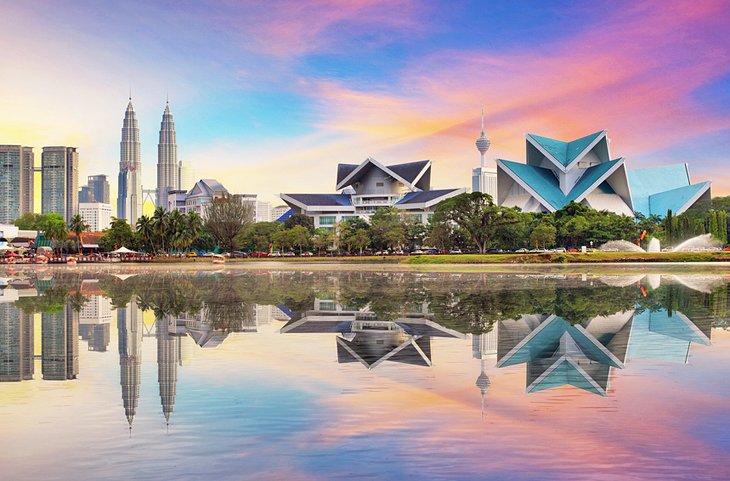
Malaysia's capital is a city of contrasts: the cultural and financial heart of the nation, with magnificent skyscrapers and three of the world's largest shopping centers-but also a great example of colonial architecture, Malay Islamic details, and old Chinese shophouses. Walking through the city is a great way to appreciate the eclectic look of this relatively new Asian capital and see the different cultures and styles melting into each other.
KL is home to the tallest twin buildings in the world , the Petronas Towers – architectural marvels of steel and glass that stand 452 meters tall. The towers are surrounded by a large urban park and are home to a massive shopping center with over 350 stores, a theater housing the Malaysian Philharmonic Orchestra, and even an underwater aquarium.
KL is a very green city, with many parks, gardens, and open spaces everywhere you go. The 92-hectare Lake Gardens is a major urban park that contains a butterfly park, the world's largest aviary bird park , and an orchid garden. You'll also find three forest reserves within the city, perfect for trekking and catching sight of rare fauna.
The limestone Batu Caves (which contain several Hindu shrines); the Cameron Highlands with its tea plantations ; and the colorful town of Malacca, established by Portuguese settlers, are all great day-trip destinations from Kuala Lumpur.
- Top-Rated Tourist Attractions in Kuala Lumpur
- Top-Rated Tourist Attractions in Malaysia
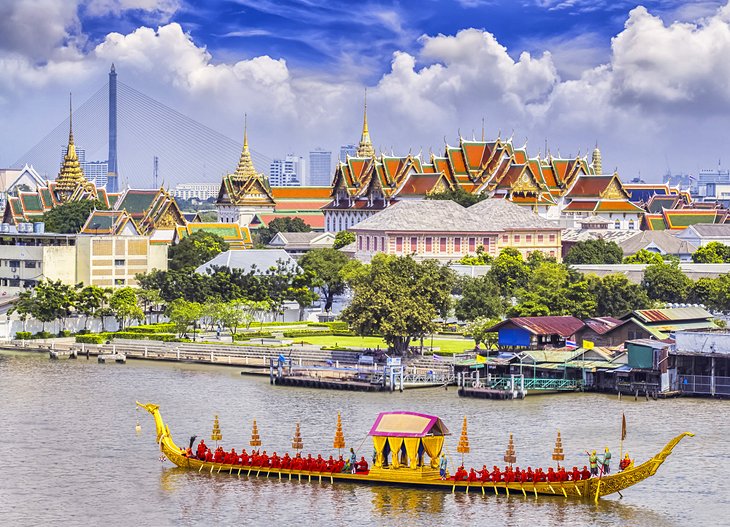
Thailand's capital has lots going for it. Not only is this the main gateway for all major destinations within the country, but this cosmopolitan city also has much to offer on its own. With over 24 million visitors arriving here every year, this is also one of the top cities in the world to visit .
Sitting right on the Chao Phraya River and full of stunning skyscrapers that share the sidewalk with major Buddhist temples and popular cafés and hangouts, Bangkok's multi-faceted sights will please a wide range of visitors, from those looking for excitement and shopping opportunities, as well as those wanting to dive into cultural and historical landmarks.
Even tourists who are only here briefly on their way to the islands should make time to visit the Grand Palace , a former royal residence converted into a museum. For those with more time in the capital city, the royal Vimanmek Mansion (the largest teak building in the world) and the Jim Thompson House, a museum dedicated to the American businessman who revolutionized the local silk industry, are also worth a visit.
For a completely different view of the city, get on a classic tuk-tuk taxi or jump on a water bus.
- Read More: Top-Rated Tourist Attractions in Bangkok
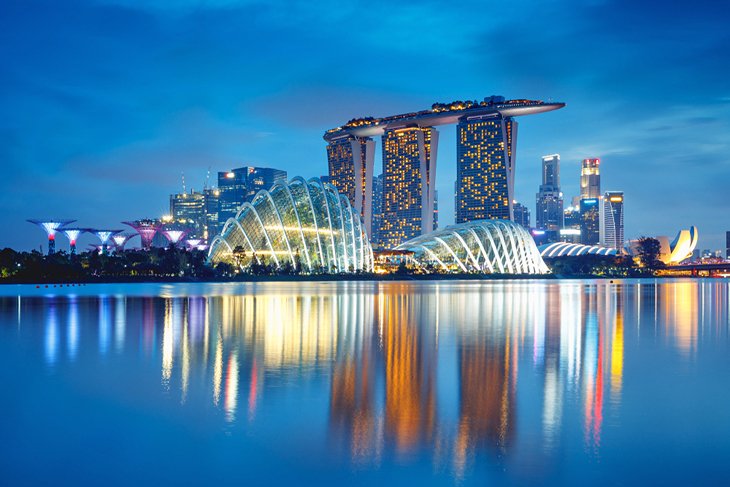
Singapore is a unique spot in Southeast Asia. This island city-state is modern and cosmopolitan , a place where multi-story shopping centers mix with stunning and unexpected natural attractions.
The Marina Bay Sands , an integrated resort, is a good example of that-it offers not only a hotel, but also a museum, art-science exhibits, and the best terraced views over the city and bay from the infinity pool set on their roof.
Sentosa Island is another example, an entertainment complex that includes everything from a two-kilometer-long beach and a restored coastal fort to Southeast Asia's first 4D theater, a Butterfly Park and Insect Kingdom, and even a Universal Studios Singapore theme park.
Singapore's airport has been named the best in the world, and it's an attraction all in itself, home to the world's tallest indoor waterfall, a five-story tall indoor garden, a mirror and haze maze, and a massive butterfly garden with over 1,000 species flying free in tropical greenery.
- Top-Rated Tourist Attractions in Singapore
- Best Beaches in Singapore
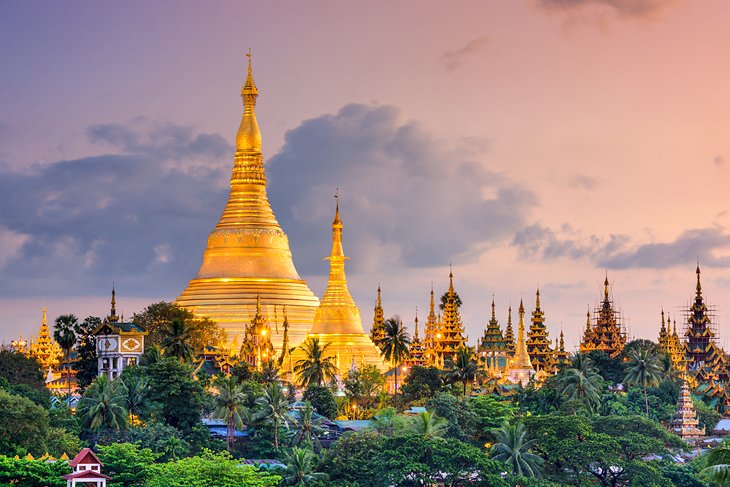
Up until 2011, Myanmar offered only limited access to tourists because of the five-decade-long military dictatorship that commanded the country-so now that it's finally possible to visit, and before it becomes crazy busy with tourists, you definitely should see this fascinating destination.
Yangon was the capital of Myanmar (or Burma) until 2006, when the military government moved it somewhere else. Since the country was under military dictatorship for so long, the city suffered a lot of issues and still boasts a lot of buildings in decay and with inadequate infrastructure.
Still, Yangon is full of beautiful architecture in the form of colonial-era buildings centered around the 2,600-year-old Sule Pagoda . It is the gilded Shwedagon Pagoda (also known as the Golden Pagoda) that dominates the skyline of the city, however-the most sacred Buddhist pagoda in the country, believed to contain relics of the last four Buddhas.
Visitors should make time to visit the Bogyoke Aung San Market , where stalls sell everything from antiques and local handicrafts to Burmese jade, local delicacies, and even natural medicine products. Another great must-do is the Yangon Circular Train , which runs on a 46-kilometer-long loop around Yangon, offering a unique insight into the real daily life of Burmese people.
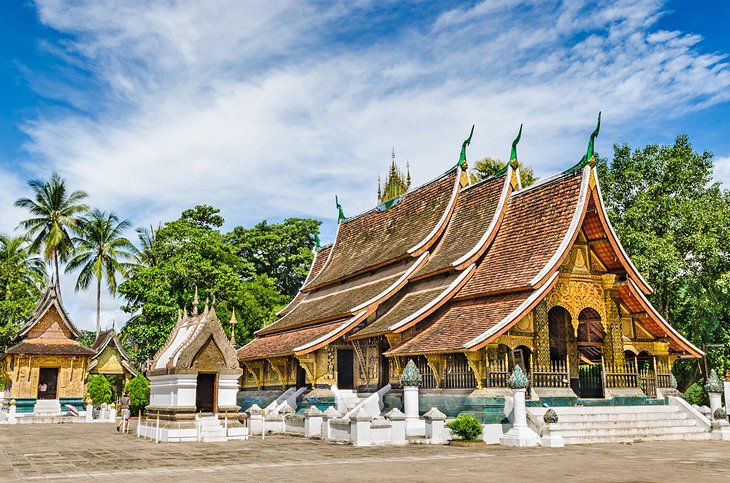
This northern city in Laos is surrounded by a number of villages that together form the UNESCO Town Of Luang Prabang World Heritage Site . Recognized for its mix of rural, French colonial, and religious architecture and heritage, the city is one of Laos' most visited and certainly most beautiful.
Luang Prabang sits at the confluence of the Mekong and Nam Khan rivers and is home to many temples-including Wat Chom Si shrine, located at the top of Mount Phou Si and overlooking the town. Alms ceremonies (where monks take to the streets to ask for food) are so common here that in the early morning, the entire town is covered in streams of orange as the monks make their way through the streets.
Just outside the city, the Bear Rescue Centre (which specializes in helping sun bears rescued from poachers) and the multi-tiered Kuang Si Falls are both worth a visit. If you're up for some trekking, head out to the Pak Ou Caves , famous for their hundreds of miniature Buddha sculptures.
Read More: Top-Rated Tourist Attractions & Things to Do in Laos
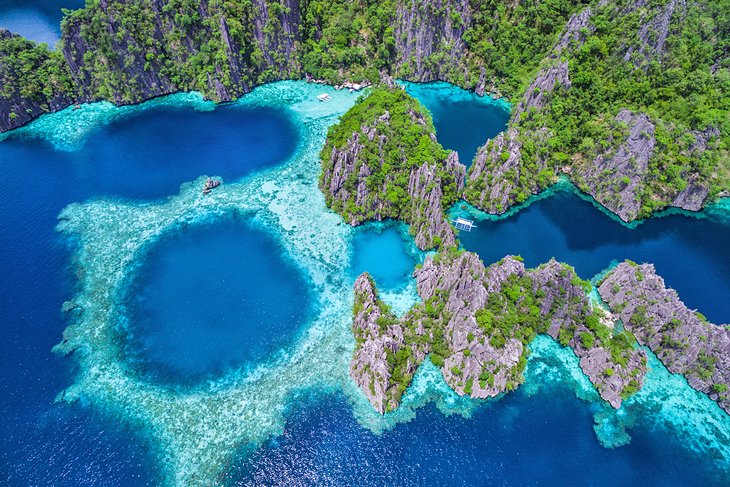
Palawan has been named one of the most beautiful islands in the world so many times, it's hard to ignore its beauty. Technically speaking, Palawan remains under-developed, which means fewer high-end hotels but also slow, sustainable growth to protect the virgin forests, green jungle mountains, and wonderful wildlife.
Palawan is surrounded by quiet turquoise waters that are ideal for snorkeling, swimming, and kayaking. Lots of smaller islands dot the ocean around Palawan, and you can spend an entire day island-hopping and still not see all the amazing beauty the area has to offer.
Miniloc Island , a rustic escape northwest of Palawan, is home to a number of lagoons and soft sandy beaches you can reach on your own or via a motorized water taxi.
For those who prefer underwater adventures, the waters around Palawan hold six shipwrecks of coral-encrusted Japanese ships sunk during WWII. Divers can slip in and out of the engine rooms, bomb holes, and portholes, swimming with fish and turtles-some of the wrecks are as deep as 42 meters.
- Read More: Best Places to Visit in the Philippines
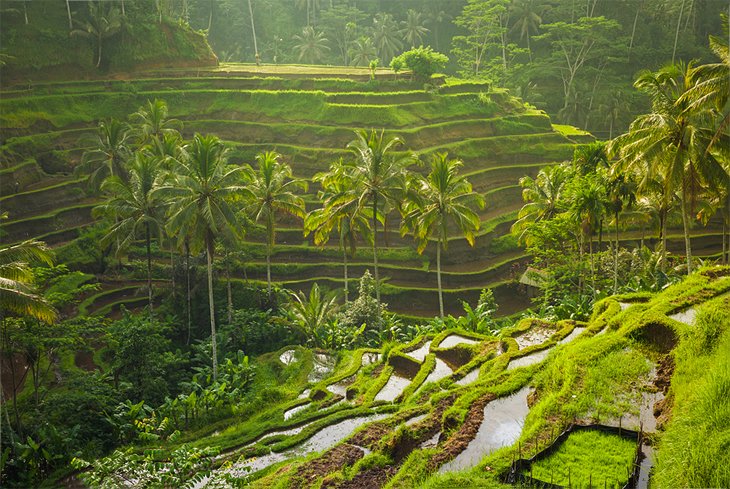
Say "Bali" and people think soft white beaches, corals, and snorkeling-and while it's true that Bali has plenty of beautiful destinations on the sand (including the Nusa Penida beach, with cliffs that resemble the head of the T-Rex), that's not all you can see here. In fact, the lush, green, terraced rice fields in the province of Ubud are just as stunning.
Bali's farmers have been setting rice paddies on terraces for centuries to deal with the hilly terrain of the area-and these areas make for stunning landscapes.
For a donation entry fee that equals pennies, visitors can walk the terraces here for hours, as the green fields extend far beyond what the eye can see. Those who arrive early in the morning will have the place almost to themselves, the soft sound of the rice fields swishing in the wind.
Visitors to Ubud can also check out the Ubud Monkey Forest ; a macaque sanctuary; the traditional royal palace Puri Saren Agung; and the gardens of Pura Taman Saraswati, a water temple famous for its lotus pond and volcanic tuff sculptures of deities.
- Read More: Top-Rated Tourist Attractions in Bali
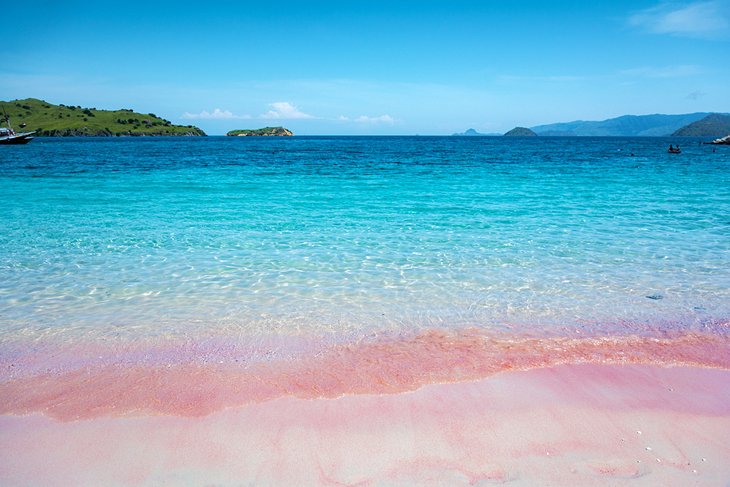
Komodo Island is more than "just one" of the over 17,000 islands that make up Indonesia. This rugged island of just under 400 square kilometers is home to the world's largest lizard , the Komodo dragon. In fact, the population of Komodo dragons here is double the population of permanent human inhabitants, making for a unique sight as you walk through the island's volcanic hills and forests.
Komodo Island is also home to a wide variety of wet ecosystems, including mangrove forests and coral reefs, both of which attract lots of travelers looking to explore, dive, or kayak around the island.
The main sightseeing attraction here, however, is Pantai Merah , one of only seven pink-sand beaches in the world. The cotton-candy sands are the result of an interesting natural phenomenon-when microorganisms, called foraminifera, that live in the coral die, their bright red shells are washed out on the beach and mix in with the white sand, creating the beautiful hue that attracts so many visitors.
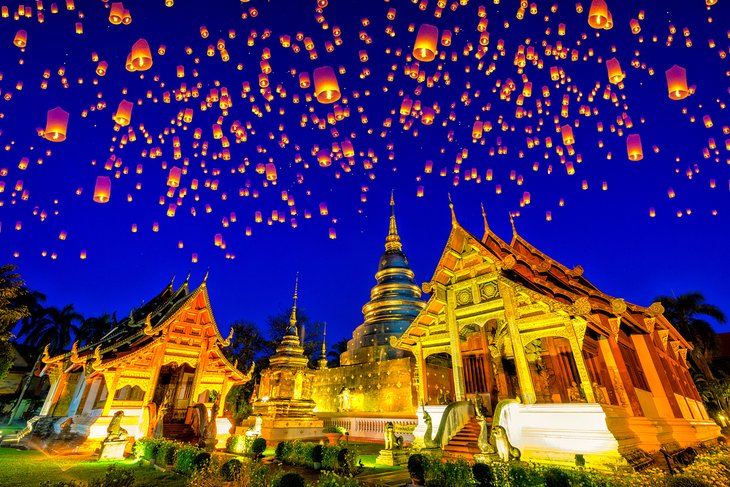
Thailand's northern city of Chiang Mai is often referred to as the cultural capital of the country. Once the seat of the former Lanna Kingdom, Chiang Mai is teeming with centuries-old temples, jungle-shrouded sanctuaries, and mountains in every direction.
A smaller and less chaotic city than Bangkok, Chiang Mai still attracts travelers from all over the world who come for the low-key lifestyle, nature, history, culture, restaurants, and budget-friendly hotels.
Backpackers often make Chiang Mai a main stop on their Thailand travels, as prices are much more attractive than down south on the beaches, and Chiang Mai is a jumping-off point from which to explore the various smaller hill communities that dot the mountains.
One of the must-see temples in Chiang Mai is Wat Phra That Doi Suthep, a golden hilltop shrine that overlooks the entire city below. One of the most sacred spots in Thailand, this temple complex is simply stunning. Visit just before sunset when the monks begin to chant. It is the most magical time to be at the temple.
From Chiang Mai, travelers often set out to explore Mae Hong Son province to the northwest, one of Thailand's most historic provinces, known for its smaller villages and ancient tribal communities.
Accommodation: Top-Rated Places to Stay in Chiang Mai
Read More: Top-Rated Attractions & Things To Do in Chiang Mai
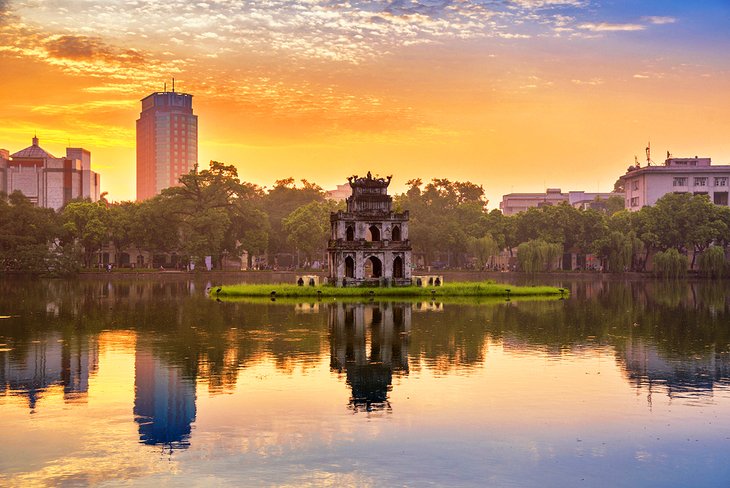
Vietnam's capital sits at an unusual precipice between historic and modern. The thriving city only opened to tourism as recently as the 1990s. Today, Hanoi is a buzzing, chaotic, energetic, beautiful amalgamation of ancient history, a war-torn past, and a modern future. It's one of the best places to visit in Vietnam to really learn about what makes the country tick.
Start in the old quarter, where you will find a heady mix of street vendors, cafés, restaurants, and more motorbikes than you can possibly count. But in between the zipping, zooming, pulsing chaos are pockets of tranquility and peace. Take Hoan Kiem Lake, for example, a 12-hectare lake in the heart of the historic city center. Around the lake are beautiful pagoda gateways, one of which is How Phong Pagoda, one of Hanoi's must-see sites .
The Temple of Literature is one of the most beautiful buildings in the city, too. It is a Confucian temple that was built as a university that dates back to the 11th century. Hanoi is also the city where visitors will find the tomb of Ho Chi Minh, the Hoa Lo Prison Museum, and the Military History Museum.
More Related Articles on PlanetWare.com
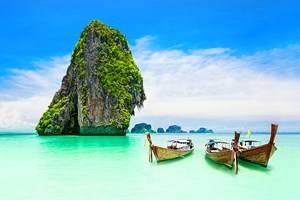
More Great Destinations in Southeast Asia: When it comes to choosing the best places to visit in SE Asia, the list is long and the decision can be tough. If you are traveling through Thailand , consider heading up to Chiang Mai or head over to the Andaman Sea to explore places like the Phi Phi Islands or Phuket , and the beautiful beaches in Krabi .

More on Thailand
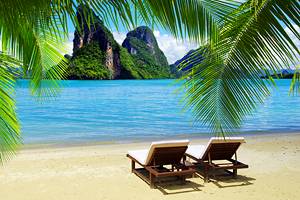
Ultimate Southeast Asia Bucket List: 100+ AMAZING Things to Do (2024)
Planning a trip to Southeast Asia can be overwhelming as there are so many beautiful places to visit and amazing things to do. To get you started I’ve created this epic guide containing over 100 things to see and do in Southeast Asia which are perfect for any Southeast Asia Bucket List . Some of these I have visited and done myself and the rest are destinations and experiences that I have researched and added to my Southeast Asia bucket list.
I have organized this large bucket list by country but I have also created a list of my top 10 places to visit in South East Asia if you are not sure where to start.
Southeast Asia Travel Bucket List (2024)

What Countries are in the Southeast Asia?
Southeast Asia consists of 11 countries in Southeastern Asia: Cambodia, Laos, Vietnam, Myanmar, Thailand, Malaysia, Brunei, East Timor, Indonesia, Philippines and Singapore.
Top 10 Places to Visit in Southeast Asia
Below are my top 10 destinations to visit in Southeast Asia that should be at the very top of your bucket list.
- Angkor Wat, Cambodia.
- Luang Prabang and nearby Kuang Si Waterfalls in Laos.
- Halong Bay in Vietnam.
- Bagan, Myanmar.
- Batad Rice Terraces in Banaue, Philippines.
- Batu Caves near Kuala Lumpur, Malaysia.
- Gardens by the Bay in Singapore.
- Borobudur Temple in Indonesia.
- White Temple in Chiang Rai, Thailand.
- Grand Palace in Bangkok, Thailand.
Southeast Asia Bucket List Experiences by Country
Below are the top bucket list experiences in Southeast Asia grouped by country:
Brunei Bucket List
- See Sultan Omar Ali Saifuddien Mosque and Jame’ Asri Sultan Hassanal Bolkiah, two beautiful mosques located in the capital city of Bandar Seri Begawan.
- Do a homestay at Kampong Ayer, a large network of stilt villages over the Brunei River.
- Visit Istana Nurul Iman (the residence of the Sultan of Brunei and largest residential palace in the world) during the first 3 days of the annual Eid Al-Fitr celebration. This is the only time the inside of the palace is open to the public for three days of the year.
- Visit Ulu Temburong National Park on a day trip from Brunei .
Cambodia Bucket List

- See Angkor Wat at sunrise or sunset .
- Explore Siem Reap.
- Spot Irrawaddy dolphins .
- Visit Kep and Kampot.
- See the Royal Palace and Silver Pagoda at Phnom Penh.
- Bike or drive through the Cardamom Mountains.
- Take a boat up the Sangker River from Siem Reap to Battambang.
- Ride the Bamboo train in Battambang.
Indonesia Bucket List
- See the sunrise and hike up Mount Bromo .

- Hike Mount Batur in Bali at sunrise.
- Get close to monkeys at Ubud Monkey Forest (Sacred Monkey Forest Sanctuary).
- Take a photo on the Bali Swing.
- Visit the Tegallalang Rice Terraces in Ubud.
- Photograph Tanah Lot Temple (one of the largest temples in Bali built on a huge offshore rocks) at sunset.
- Explore Nusa Lembongan by motorbike. Read: Things to Do in Nusa Lembongan & Nusa Ceningan
- Visit Nusa Penida off the coast of Bali. Is is less touristy than the main island. Read: Guide to Nusa Penida, Indonesia
- Spot a Komodo Dragon (the largest lizard in the world) at Komodo National Park. Komodo National Park also has great scuba diving and a pink beach .
- See the ancient monuments in Borobudur, a UNESCO World Heritage site, and the Prambanan temple complex.
- Visit Lombok Island- explore waterfalls and visit the incredible Pink beach.
- Trek to the summit of the active Rinjani volcano (second highest volcano in Indonesia) in time for sunrise.
- Visit the Gili Islands. You can swim with turtles, go wreck diving, and sit on a swing in the ocean.
- Go scuba diving or snorkelling at the Raja Ampat Islands.
- Hike Kawah Ijen Volcano before dawn to see electric blue flames that rise from the crater at night. After the sun comes up admire the turquoise lake in the crater, which is also the world’s largest acidic lake.
- See the three volcanic crater lakes at Kelimutu. They are different colors and the color changes.
- Visit Uluwatu Temple (Uluwatu Pura), perched on a coastal cliff and watch a performance of kecak, a traditional dance. This tour combines both.
- See Lake Toba (or Danau Toba) – the largest lake in Indonesia and the largest volcanic lake in the world.
- Visit the Thousand Islands.
- Go diving with manta rays.
Laos Bucket List

- Explore the beautiful city of Luang Prabang (the entire town is a UNESCO World Heritage site).
- Take a dip at Kuang Si Falls, beautiful waterfalls right outside of Luang Prabang.
- Take the slow boat from Thailand to Luang Prabang.
- Visit Vientiane, the underrated capital of Laos.
- See Pha That Luang or Great Stupa in Vientiane – it is an important national monument in Laos and a national symbol.
- Visit Buddha Park near Vientiane.
- Go river tubing in Vang Vieng .
- Visit Don Det (4,000 Islands).
- Spot a gibbon at Bokeo Nature Reserve.
- See That Ing Hang Stupa in Savannakhet.
- See the Plain of Jars .
- Rent a motorbike to explore the Bolaven Plateau motorbike loop.
Malaysia Bucket List
- Visit Petronas Twin Towers, the world’s tallest twin towers in Kuala Lumpur. Read: The Perfect Itinerary for 3 Days in Kuala Lumpur
- See the Batu Caves. Click here to book a half day tour from Kuala Lumpur.
- See awesome street art in Penang.
- Visit the historical city of Melaka . Click here to book a full day tour from Kuala Lumpur.
- See the Crystal Mosque in Kuala Terengganu, one of the most beautiful mosques in the world.
- Ride the SkyCab cable car and walk across the Sky Bridge in Langkawi. Read: Best Things to do in Langkawi in 3 Days: A Complete Itinerary
- Climb Mount Kinabalu , the highest mountain in Borneo.
- Visit Cameron Highlands known for its tea plantations. Click here to book a full day tour from Kuala Lumpur.
- Visit Tioman Island .
- Go snorkeling or scuba diving at Tunku Abdul Rahman Marine National Park .
- Take a Kinabatangan River Cruise and spot wildlife.
- Visit the Deramakot Forest Reserve .
- Visit Sepilok Orangutan Rehabilitation Center in Sabah.
- Visit the Labuk Bay Proboscis Monkey Sanctuary in Sabah to see proboscis monkeys which are only found in Borneo.
- Visit Bako National Park .
Myanmar (formerly Burma) Bucket List
Warning: Some parts of Myanmar are not safe to visit since the February 2021 military coup and resulting civil war (which is still ongoing). Make sure to do your research if you decide to visit Myanmar now. Otherwise just add these to your bucket list for the future.
- Watch the sunrise and sunset over the temples in Bagan .

- Take a hot air balloon ride over the temples at sunrise in Bagan.
- Take a boat cruise between Bagan and Mandalay.
- See the sunrise at U Bein bridge (the world’s longest teak bridge) in Mandalay.
- Watch the sunset over Mandalay from the top of the Mandalay Hill.
- Visit Inle Lake .
- Take a hot air balloon ride over Inle Lake.
- See the Shwedagon Pagoda at Yangon.
- See the Golden Rock Pagoda (or Kyaiktiyo Pagoda) a small pagoda perched on the top of a boulder covered with gold leaves and an important Buddhist pilgrimage site. Click here to book a tour from Yangon.
- Visit Pindaya Caves full of thousands of gold Buddha statues of various sizes.
- Hang out at Ngapali Beach voted one of the best beaches in Asia by Tripadvisor users.
- See the sunset at Kyauk Maumghnama Pagoda,twin pagodas that sit atop massive boulders right on the beach.
- Take a river cruise on the Irrawaddy river.
- Take a train ride over the Gokteik Viaduct , the highest bridge in Myanmar.
Philippines Bucket List
- Walk through the Batad Rice Terraces in Banaue.
- Visit Palawan. Read: Top 10 Things to Do in Palawan
- Underwater river tour through caves in Puerto Princesa, Palawan.

- See the Chocolate Hills in Bohol.
- Hike Taal Volcano. Click here to book a tour from Manila.
- Visit the capital of Manila .
- Visit the picturesque city of Legazpi.
- Visit the colonial city of Vigan, an UNESCO World Heritage Site .
- Island hopping, snorkeling and canyoning in Cebu. Read: Top 10 things to do in Cebu.
- Go island hopping. There are so many more islands to visit!
- See the hanging coffins of Sagada .
- Go diving at Tubbataha Reefs Natural Park, probably the best place to go diving in the Philippines and one of the best dive sites in Asia according to CNN .
- Go sand boarding in Ilocos Norte.
- Swim with the sea turtles at Apo Island.
- See whale sharks at Donsol.
- Visit Surigao and see the blue Enchanted River .
- Visit Bulusan Volcano Natural Park.
- See Taluksangay Mosque (known for its bright red dome) in Zamboanga.
Singapore Bucket List

- See the nightly light and music show at the futuristic looking Supertree Grove at the Gardens By the Bay.
- See the nightly light and water show at Marina Bay Sands.
- Swim in the world’s largest rooftop infinity pool at the Marina Bay Sands hotel (you need to be a hotel guest to swim in the pool).
- Eat at one of Singapore’s hawker centers .
- Admire the Singapore skyline from a rooftop restaurant or bar like CÉ LA VI Restaurant and SkyBar .
Read: 2 Days in Singapore: The Perfect Itinerary from a Local
Thailand Bucket List
- Visit the Grand Palace and nearby Wat Pho (with its famous Reclining Buddha) and Wat Arun in Bangkok.
- Walk on the infamous Khao San Road in Bangkok.
- Visit the Damnoen Saduak Floating Market , the largest and most famous of Thailand’s iconic floating markets.

- Explore Khao Yai National Park , one of largest and most visited national parks in Thailand and a great place to view wildlife, including gibbons, elephants, deer, bears, macaques and more.
- Visit the the Historic City of Ayutthaya, a UNESCO World Heritage Site .

- Go temple hopping in Chiang Mai .
- Feed and bathe elephants at a responsible and ethical sanctuary like Elephant Nature Park .
- Relax in Pai, a small hippie town.

- See the stunning Wat Rong Khun (also known as White Temple) located near Chiang Rai.
- Ride the Thai-Burma Railway (Death Railway). You can visit on a tour from Bangkok .
- Explore Phang Nga Bay. One of the highlights is James Bond Island (a needle formed limestone rock in the sea featured in the James Bond movie The Man with the Golden Gun).

- Celebrate Yi Peng and Loy Krathong (Lantern Festival) .
- Beach hop and rock climb in Krabi.
- Climb the 1200+ steps to the summit of the Tiger Cave Temple (Wat Tham Suea) in Krabi.
- Take a speedboat to Phi Phi Islands.
- Visit Cheow Lan Lake, a highlight when visiting Khao Sok National Park .
- Get soaked at the Songkran Water Festival .
- Party all night at the beach at a Full Moon Party at Koh Phangan.
Timor-Leste Bucket List
- Visit the uninhabited Jaco (or Jako) Island .
- Visit Dili (the capital).
- Take a day trip to Atauro Island for snorkelling & hiking.
- Climb the 500+ steps to the top of Cristo Rei , a tall statue of Jesus Christ.
Vietnam Bucket List
- Take a Halong Bay Cruise .
- Visit Hanoi. Must see attractions include the Old Quarter, Temple of Literature, Hoa Lo Prison Museum, and Hoan Kiem Lake.
- See the rice fields of Tam Coc, in the picturesque Ninh Binh province. You can visit on a day trip from Hanoi .
- Visit Ho Chi Minh City (formerly Saigon). Must see attractions include the War Remnants Museum and The Independence Palace.
- Take a day trip from Ho Chi Minh City to the Cu Chi Tunnels, and learn about the history of this underground system dug during the Vietnam War. Visitors can experience the tight squeeze firsthand by crawling through the tunnels.
- Explore Hoi An. This city is a full of cheap tailors and is a good place to get affordable custom made clothing.
- Visit Lan Ha Bay surrounding Cat Ba Island – it is just as beautiful but less touristy than Halong Bay.
- Take a river cruise on the Mekong.
- Go trekking in Sapa and meet the local ethnic tribes.
- See the sand dunes in Mui Ne .
- Walk along the new Cau Vang “Golden Bridge” in the Ba Na Hills near Danang. This bridge looks like it is being held up by 2 giant hands.
- Explore the imperial city of Hue, a UNESCO World Heritage site.
- Ha Giang Extreme motorbike loop .
So there you have it – the ultimate Southeast Asia travel bucket list. If there is an experience or place I should include let me know in the comments below!
Planning a trip to Southeast Asia? Click here to book ground and sea transportation tickets online .
Need more travel inspiration? Check out some of my other travel bucket lists:
- Travel Goals: 100 Things to Do Before You Die
- Best Places to Visit in Australia
- Europe Bucket List
- Africa Bucket List
- Ultimate USA Travel Bucket List: 125+ Best Places to Visit in the United States
- Best Places to Visit in South America

Related Posts

savvyglobetrotter
I’ve had my eye on visiting Southeast Asia for a while now but it’s so hard to decide where to go. This gives me an idea what I can expect in each place. Thanks for the suggestions!
Just close your eyes and point to a map – that’s what I do! 🙂
Wow, what a list of things to see and do while in South East Asia! I haven’t ventured to that side of the world (yet…), but when I do I definitely want to do a of these, including the Gardens By The Bay 🙂 x
As somebody who went to Mount Kinabalu I wholeheartedly agree that should be in this top 100!
Leave a Reply Cancel reply
Your email address will not be published. Required fields are marked *

Currently you have JavaScript disabled. In order to post comments, please make sure JavaScript and Cookies are enabled, and reload the page. Click here for instructions on how to enable JavaScript in your browser.
This site uses Akismet to reduce spam. Learn how your comment data is processed .

Best Places to Visit in Southeast Asia: Ultimate Guide with Favourite Destinations
South East Asia… it’s a place that gets under your skin. I’ve been lucky enough to visit 4 times on trips as long as 9 months, and each time, it’s left me craving more.
Whenever I go to ‘complete my bucket list,’ I return with more places added! There is a never-ending amount to see here; maybe that’s why it gets millions of travellers and backpackers alike hooked.
There’s something about Asia that’s just captivating. It could be the mix of dramatic and breathtaking landscapes merging with Eastern architecture with hints of its Western colonial history. Or it’s the tantalising flavours of street food, culture, and welcoming people.
Whatever it is, it will leave an indelible mark on your soul, and you will come home as a different person than you left (in the best way possible!)
Table of Contents
Where is South East Asia?:
Southeast Asia, a region teeming with diverse cultures and breathtaking landscapes, is a traveler’s paradise. From Thailand’s vibrant cities to Indonesia’s tranquil beaches, this corner of the world offers endless opportunities for exploration and discovery.
Situated between the Indian Ocean and the Pacific Ocean, Southeast Asia is easily accessible from major international airports, making it a popular destination for travellers from around the globe.
How to Go to South East Asia
Getting to Southeast Asia is easier than you think, with major international airports in hubs like Bangkok, Singapore, and Kuala Lumpur offering direct flights worldwide.
Once you’ve arrived, navigating the region is a breeze, thanks to an extensive network of buses, trains, and ferries connecting major cities and remote destinations 12GO is a great travel booking app I used a lot in SEA!
Whether you prefer the convenience of organised tours or the freedom of independent travel, Southeast Asia offers many options to suit every traveller’s needs.
How Much Does it Cost to Travel SEA?:
One of the best things about travelling in Southeast Asia is that it can be incredibly affordable, allowing you to stretch your budget without sacrificing quality or comfort.
Accommodation options range from budget-friendly hostels at $10-20 per night to boutique resorts and eco-lodges offering luxury stays for $100 or more.
Dining out is a delight for the senses, with street food stalls offering mouthwatering dishes for as little as $1-3. At the same time, upscale restaurants provide a gourmet experience for $20 or more per person.
Best Time of Year to Travel
- Dry season: December to May
- Considerations: Peak tourist season, higher prices, larger crowds
- Dry season: April to October
- Considerations: Increased tourist numbers, plan ahead to avoid crowds
- Dry season: November to April
- Considerations: Higher prices, more significant crowds during peak holiday periods
- Considerations: Weather variations between regions, research specific destinations
- Considerations: Higher prices, more tourists at popular sites during this period
- Ideal time to visit: Year-round
- Considerations: Certain events and festivals, such as the Chinese New Year celebrations in January or the Great Singapore Sale in July, may attract more tourists and increase prices.
- The ideal time to visit: November to April
- Considerations: Be prepared for higher prices and larger crowds during peak tourist season.
- The ideal time to visit : March to October
- Considerations: Malaysia’s dry season from March to October provides excellent conditions for outdoor activities such as trekking, wildlife spotting, and diving.
Best Places to Visit in South East Asia
Philippines.
My time in the Philippines was a tale of two halves. One of them was that I needed more culture and good food. However, the scenery and the beaches were the best I encountered on my year-long travels around SEA! So it had to be added to my list.
The Philippines boasts some of the most stunning beaches in the world, with destinations like Siargao and El Nido drawing travellers from far and wide. Whether you’re a surfer chasing the perfect wave or a beach bum seeking paradise, the Philippines has something for everyone.
My Personal Highlights
Siargao, known as the “Surfing Capital of the Philippines,” offers world-class waves and a laid-back island vibe. Stay at the luxurious Nay Palad Hideaway for a truly indulgent experience, or opt for the budget-friendly accommodations at Buddha’s Surf Resort.
Take the chance to dine on fresh seafood at Shaka Siargao or indulge in a sunset cocktail at Cloud 9 whilst watching the professional surfers!

El Nido is famous for its dramatic limestone cliffs, hidden lagoons, and crystal-clear waters. Stay at the stunning El Nido Resorts Pangulasian Island for a luxurious beachfront escape, or check out Spin Designer Hostel for affordable yet stylish accommodations.
Be sure to explore the Bacuit Archipelago on a boat tour. Don’t take advantage of the chance to hike to the top of Taraw Peak for panoramic views of the surrounding islands.
Bohol, known for its iconic Chocolate Hills and adorable tarsiers, is a must-visit destination for nature lovers and adventure seekers alike. Stay at the eco-friendly Amorita Resort for a luxurious beachfront retreat, or check into the budget-friendly accommodations at Bohol Coco Farm.
Explore the colourful underwater world of Panglao’s coral reefs, visit the historic Baclayon Church and Blood Compact Shrine, and cruise along the Loboc River while enjoying a traditional Filipino buffet lunch.
Indonesia, an archipelago nation known for its stunning natural beauty and rich cultural heritage, is a treasure trove of hidden gems waiting to be discovered. And yes there is more to see in Indonesia to Bali!

From the rugged landscapes of Flores to the ancient traditions of Sumba and the majestic volcanoes of East Java, this diverse and captivating region offers endless opportunities for exploration and adventure.
My personal highlights
Bali – a place I have called home on and off for 8 years. I fell in love with Bali’s rich culture and diverse landscapes. However, I was astonished when I first landed!
On Instagram, it’s easy to think Bali is some picture paradise island.. but upon landing, you realise it is one of the most densely populated places in SEA! However, if you know where to go, you can have an incredible Bali experience.
Bali is a true paradise for lovers of culture, spirituality, and natural beauty. You have the iconic Ubud rice terraces to the tranquil Nusa Penida shores; there is so much to explore within just a few hours of each other.
Ubud is Bali’s cultural heart, with its vibrant art scene, ancient temples, and lush rice terraces. Stay at the luxurious Hanging Gardens of Bali for a genuinely indulgent retreat, or opt for budget-friendly accommodations at the famous Puri Garden Hotel & Hostel.
Be sure to visit the Sacred Monkey Forest Sanctuary, explore the Tegalalang Rice Terrace, and attend a traditional Balinese dance performance at the Ubud Palace. If you enjoy walking there are some beautiful rice field hikes here in Ubud too which you can easily find on Google Maps.
Nusa Islands
Nusa Penida is a hidden gem off the coast of Bali, with its rugged cliffs, pristine beaches, and crystal-clear waters. Stay at the unique Tree House Rumah Pohon for an unforgettable experience, or visit the budget-friendly Saren Cliff Resort.
Be sure to explore the breathtaking viewpoints at Kelingking Beach and Angel’s Billabong, and don’t miss the chance to swim with manta rays at Manta Point.
There are also two smaller islands, Nusa Lembongan and Nusa Cengingan, which are well worth a visit for a few days, They are my favourite islands in Bali!
Amed, located on Bali’s east coast, is a hidden gem known for its pristine beaches, vibrant coral reefs, and laid-back atmosphere. Stay at the charming Villa Paradiso Amed for a beachfront retreat, or opt for the budget-friendly accommodations at Jukung Dive Resort.
Be sure to explore the colourful underwater world on a snorkelling or diving excursion, hike to the breathtaking viewpoints at Amed’s Jemeluk Bay, and indulge in fresh seafood at one of the beachside cafes. And of course, catch the sunset and rise over the Balinese Volcano from the viewpoints!
Uluwatu, perched on Bali’s southwestern tip, is famous for its dramatic cliffs, legendary surf breaks, and stunning sunsets. Stay at the luxurious Alila Villas Uluwatu for a cliffside retreat with panoramic ocean views, or check into the budget-friendly accommodations at Uluwatu Cottages.

Be sure to catch a traditional Kecak dance performance at the iconic Uluwatu Temple, surf the world-class waves at Uluwatu Beach, and dine on fresh seafood at one of the cliffside restaurants overlooking the Indian Ocean.
Don’t Forget the Rest of Indonesia!
Most people think that Bali is just one of the tiny islands in Indonesia (and not that impressive!) compared to the 3000+ other islands India offers! It is a crime not to explore at least two others if you plan on going to famous Bali for a more authentic experience.
Flores, named after its colourful flora, is an island of unparalleled beauty, with rugged coastlines, lush jungles, and pristine beaches. Stay at the charming Plataran Komodo Beach Resort for a beachfront escape, or opt for the budget-friendly accommodations at Bintang Flores Hotel.
Be sure to explore the iconic Kelimutu National Park, home to three stunning crater lakes with ever-changing colours. Don’t miss the chance to snorkel or dive in the crystal-clear waters of Komodo National Park, home to the legendary Komodo dragons.
Komodo, a UNESCO World Heritage Site and one of the New7Wonders of Nature is famous for its iconic Komodo dragons, the world’s most giant lizards. Stay at the luxurious Komodo Resort & Diving Club for a secluded island getaway, or check into the budget-friendly accommodations at Komodo Lodge.
Be sure to embark on a guided trekking tour to see the Komodo dragons in their natural habitat, hike to the top of Padar Island for breathtaking panoramic views, and dive or snorkel among vibrant coral reefs teeming with marine life.

East Java, home to some of Indonesia’s most iconic volcanoes and cultural landmarks, is a land of adventure and discovery. Stay at the luxurious Jiwa Jawa Resort Bromo for a unique eco-friendly experience, or check into the budget-friendly accommodations at Bromo Cottages.
Be sure to hike to the summit of Mount Bromo for breathtaking sunrise views over the lunar-like landscape, explore the ancient temples of Prambanan and Borobudur, and visit the vibrant city of Surabaya, known as the “City of Heroes” for its role in Indonesia’s struggle for independence.
Sumba, known as the “Land of the Ancestors,” is a culturally rich island steeped in ancient traditions and customs. Stay at the luxurious Nihi Sumba Resort for a luxurious eco-retreat, or opt for the budget-friendly accommodations at Manandang Hotel.
Be sure to explore the traditional villages of Praijing and Tarung, where you can witness the ancient rituals of the Marapu religion. Don’t miss the chance to attend the exhilarating Pasola festival, a traditional spear-fighting competition held annually in February and March.
East Java, home to some of Indonesia’s most iconic volcanoes and cultural landmarks, is a land of adventure and discovery. Stay at the luxurious Jiwa Jawa Resort Bromo for a unique eco-friendly experience, or check into the budget-friendly accommodations at Bromo Cottages.

I have been to Thailand twice and I can’t wait for my third trip later this year. The Land of Smiles never enchants millions of visitors with its vibrant culture, stunning landscapes, and warm hospitality. From bustling cities to tranquil islands, Thailand has it all.
Tucked away in the mountains of northern Thailand, Pai is a bohemian paradise that’s captured the hearts of travellers worldwide. I only booked to stay here 3 nights and ended up staying a whole month! We loved it so much that I forgot about my island trip to stay.
With its laid-back vibe, stunning scenery, and quirky charm, Pai is the perfect escape from the hustle and bustle of city life. Whether exploring waterfalls, soaking in hot springs, or browsing the night market for handmade crafts, Pai has something for everyone.
Known as the “Turtle Island,” Koh Tao is a diver’s paradise with crystal-clear waters teeming with marine life. But there’s more to Koh Tao than just diving. You can explore hidden coves, hike to breathtaking viewpoints, or simply relax on pristine beaches with a coconut in hand. And when the sun sets, Koh Tao comes alive with beach parties and vibrant nightlife that will keep you entertained.

Railay Beach
Tucked away on the coast of southern Thailand, Railay is a breathtakingly beautiful peninsula accessible only by boat. The railway feels like a slice of paradise with its towering limestone cliffs, turquoise waters, and picture-perfect beaches.
Whether rock climbing, kayaking through mangrove forests, or simply soaking up the sun on the beach, Railay offers a unique blend of adventure and relaxation that’s hard to find anywhere else.
Cambodia is often described as home to the friendliest people in the world, and when you get there, it’s hard not to see why. Cambodia has a recent past of genocide, which I believe is why they seem so grateful and respectful to others.
The country alone is poor with a barren landscape compared to its neighbors Thailand and Vietnam. However, its islands are some of my favourites in SEA, and that’s why it made it to the list.
Angkor Wat, the crown jewel of Cambodia’s ancient temples, stands as a testament to the ingenuity and architectural brilliance of the Khmer Empire. Explore the sprawling complex of temples, including the iconic Angkor Wat, the enigmatic faces of Bayon, and the jungle-clad ruins of Ta Prohm. Marvel at the intricate carvings and bas-reliefs that adorn the walls of these ancient structures, and witness the breathtaking beauty of sunrise or sunset over the temple complex.

Koh Rong Islands
Koh Rong, a pristine paradise off the coast of Sihanoukville, offers travellers the chance to escape the hustle and bustle of modern life and immerse themselves in the natural beauty of Cambodia’s coastline.
Relax on the powdery white sands of Long Beach, swim in the crystal-clear waters teeming with marine life, and explore the lush jungles that cover much of the island. Whether seeking adventure or relaxation, Koh Rong offers something for everyone, from snorkelling and diving to yoga retreats and beachside hammocks.
Laos is one of those places that took my breath away at every destination I visited. The limestone cliffs are magnificent to wander around, and coupled with a sunset backdrop and great travelling companions, I have the most magical memories in Laos.
Laos is a hidden gem waiting to be discovered, with its lush jungles, cascading waterfalls, and ancient temples.
Luang Prabang
Luang Prabang, a UNESCO World Heritage Site, is famous for its well-preserved colonial architecture, vibrant night markets, and serene Buddhist temples. For a hilltop retreat, stay at the luxurious Belmond La Résidence Phou Vao or check into the budget-friendly accommodations at MyLaoHome Hotel & Spa.
Be sure to explore the city’s ancient temples, including Wat Xieng Thong and Wat Mai, and don’t miss the chance to witness the alms-giving ceremony at dawn.
Vang Vieng, nestled amidst stunning limestone karst landscapes and meandering rivers, is known for its adventurous outdoor activities and vibrant backpacker scene. Stay at the riverside Vang Vieng Boutique Hotel for a comfortable stay with stunning views. Opt for the budget-friendly accommodations at Real Backpackers Hostel.
Be sure to explore the surrounding countryside on a tubing adventure down the Nam Song River, hike to the breathtaking viewpoints at Pha Poak and Pha Ngern, and unwind at one of the many riverside bars and cafes.
In 2016, travelling past Vang View and Luang Prabang was almost unheard of. But we did, and boy, was it worth it. Nong Khiaw, a sleepy riverside town surrounded by towering limestone cliffs and lush greenery, offers a peaceful retreat from the hustle and bustle of modern life. Stay at the picturesque Nong Kiau Riverside Resort for a tranquil escape, or check into the budget-friendly accommodations at Nong Kiau Riverside Guesthouse.
Be sure to explore the nearby caves and waterfalls on a trekking excursion, take a scenic boat ride along the Nam Ou River, and soak in the stunning sunset views from the Pha Daeng Peak viewpoint.
Vietnam, a land of timeless beauty and rich cultural heritage, allures travellers with its surreal and diverse landscapes, vibrant cities and culture, warm hospitality, and, of course… incredible food! It is one of if not my favourite countries in SEA! Its diversity and outstanding food really sets it apart for me.
Mui Ne, a coastal town in southern Vietnam, is known for its stunning sand dunes, vibrant kite surfing scene, and picturesque fishing villages. Stay at the luxurious Anantara Mui Ne Resort for a beachfront retreat, or opt for the budget-friendly accommodations at Mui Ne Hills Budget Hotel. Be sure to explore the iconic red and white sand dunes, try kite surfing on the waves of the South China Sea, and sample fresh seafood at the bustling fishing harbour.

Ninh Binh, often called “Halong Bay on land,” is a scenic region in northern Vietnam known for its karst landscapes, ancient temples, and tranquil waterways. Stay at the charming Tam Coc Garden Resort for a peaceful retreat surrounded by lush greenery. Alternatively, check into the budget-friendly accommodations at Ninh Binh Hidden Charm Hotel & Resort.
Be sure to take a boat ride through the limestone caves and rice paddies of Tam Coc and Trang An, hike to the top of Hang Mua Peak for panoramic countryside views, and explore the ancient temples of Hoa Lu, the former capital of Vietnam.
Hanoi, the capital city of Vietnam, is a bustling metropolis known for its rich history, colonial architecture, and vibrant street food scene. Stay at the luxurious Sofitel Legend Metropole Hanoi for a taste of colonial elegance. Opt for the budget-friendly accommodations at Hanoi Old Quarter Homestay.
Be sure to explore the historic Old Quarter, where narrow streets are lined with traditional shops and ancient temples, visit the iconic Hoan Kiem Lake and Ngoc Son Temple, and indulge in delicious Vietnamese cuisine at one of the city’s many street food stalls or local restaurants.
Hoi An, a UNESCO World Heritage Site located on the central coast of Vietnam, is famous for its well-preserved ancient town, colorful lanterns, and beautiful beaches. Stay at the charming Anantara Hoi An Resort for a riverside retreat, or check into the budget-friendly accommodations at Hoi An Ancient House Village Resort & Spa. Be sure to wander through the narrow streets of the ancient town, where you’ll find historic architecture, traditional shops, and bustling markets, and visit the iconic Japanese Covered Bridge and Assembly Hall of the Fujian Chinese.
Singapore, a bustling city-state at the crossroads of Asia, is a vibrant melting pot of cultures, cuisines, and attractions. From its futuristic skyline and lush green spaces to its rich heritage and world-class dining scene, Singapore offers travellers diverse experiences to explore.
Whether you’re marvelling at the iconic Marina Bay Sands, strolling through the vibrant neighbourhoods of Chinatown and Little India, or indulging in a foodie adventure at the hawker centres, Singapore is one of my personal favourite cities in the world, and you will see why for yourself.

Malaysia / Borneo
Imagine yourself surrounded by lush rainforests teeming with wildlife, where orangutans swing through the trees, and majestic hornbills soar overhead. Imagine pristine beaches with powdery white sands and crystal-clear waters, bustling cities where ancient temples stand alongside towering skyscrapers, and incredible street food stalls.
But Malaysia is more than just its stunning landscapes and vibrant cities. It’s a melting pot of cultures where Malay, Chinese, Indian, and indigenous traditions blend harmoniously to create a tapestry of diversity unlike anywhere else.
My personal favourites
Perhentian Islands
The Perhentian Islands, nestled off the northeastern coast of Malaysia, beckon with their pristine white sands, turquoise waters, and vibrant marine life. Dive into the crystal-clear waters to explore colourful coral reefs teeming with exotic fish, or simply relax on the idyllic beaches and soak up the sun. Whether you’re seeking adventure or relaxation, the Perhentian Islands offer an unforgettable tropical escape.
Sabah, Borneo
Sabah, located on the island of Borneo, is a haven for nature lovers and adventure seekers alike. Explore the lush rainforests of Danum Valley or Kinabalu National Park, home to an incredible diversity of plant and animal species, including the iconic orangutans.
Embark on a thrilling river safari along the Kinabatangan River to spot proboscis monkeys, pygmy elephants, and hornbills in their natural habitat.
For the ultimate adventure, climb to the summit of Mount Kinabalu, Southeast Asia’s highest peak, for breathtaking views of the surrounding landscapes. In Sabah Borneo, the possibilities for exploration are endless.
Conclusion on Best Places to Visit in SEA
As our journey through Southeast Asia ends, I hope you’ve been inspired to embark on your own adventure in this magical region. Whether you’re drawn to the pristine beaches of the Philippines, the vibrant culture of Bali, or the tranquil beauty of Laos, Southeast Asia offers a wealth of experiences waiting to be discovered. So pack your bags, follow your heart, and let the wonders of Southeast Asia unfold before you. Safe travels, fellow explorers!
Related Posts

What It’s Like Living In the Coldest City of the Philippines
This page may contain affiliate links. More info in our Privacy Policy Growing up in the province of Benguet, it’s no secret that I would…
Read this article »
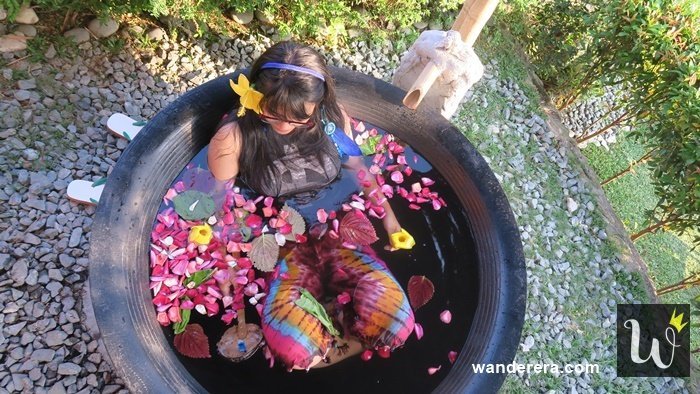
La VeryOl’s: A Relaxing Glamping Experience in Tagaytay
This page may contain affiliate links. More info in our Privacy Policy If you’re looking for a great place to stay in Tagaytay – check…

Mactan Island Hopping (Complete Travel Guide)
This page may contain affiliate links. More info in our Privacy Policy Did you know there are several islands near Mactan island? Yup! And you…
Leave a Comment Cancel Reply
Your email address will not be published. Required fields are marked *
This site uses Akismet to reduce spam. Learn how your comment data is processed .

Touropia Travel
Discover the World
29 Best Places to Visit in Southeast Asia
By Alex Schultz · Last updated on April 27, 2024
Southeast Asia is a group of diverse countries between the Indian Ocean and the Pacific Ocean, featuring indigenous cultures influenced by Indian, Chinese and Western culture. The region includes the most populous Muslim country in the world, very prominent Buddhist countries, and quite significant Christian, Hindu and Animist communities.
It has long been a favorite corner of the world for globe-tramping backpackers, known for its perfect beaches, tasty cuisine, low prices, and good air connections.
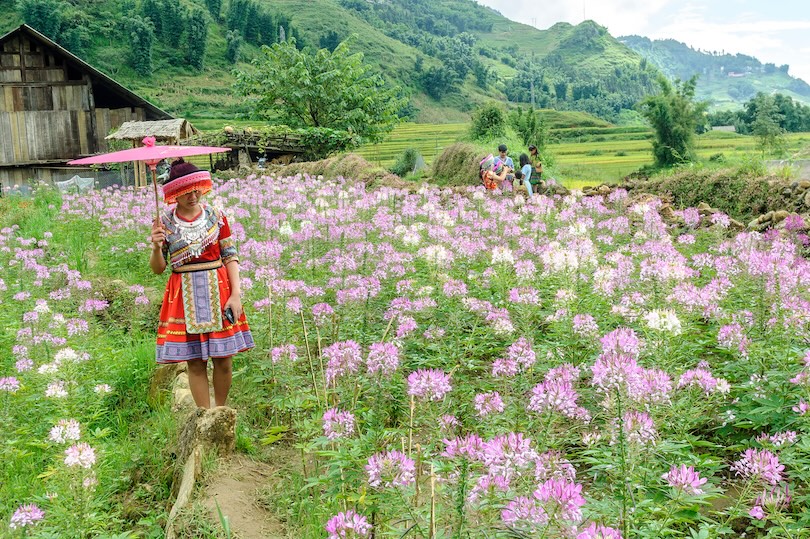
The countries of Southeast Asia represent a totally different culture for Western travelers. Instead of cathedrals, they’ll find temples. Instead of cold temperatures and snow in the winter, for the most part they’ll be bathed in a tropical climate. They may find simple accommodations in remote fishing villages but also luxurious five-star hotels in the bigger cities and on the more popular islands.
Southeast Asia will appeal to active, adventuresome travelers, who want to trek through steamy jungles, dive in some of the world’s best coral reefs, camp or go whitewater rafting on new rivers. But the region also offers the less active travelers something, who, after a day of visiting temples and other cultural sites, just want to relax in comfort in a luxury hotel. An overview of the best places to visit in Southeast Asia
29. Vientiane
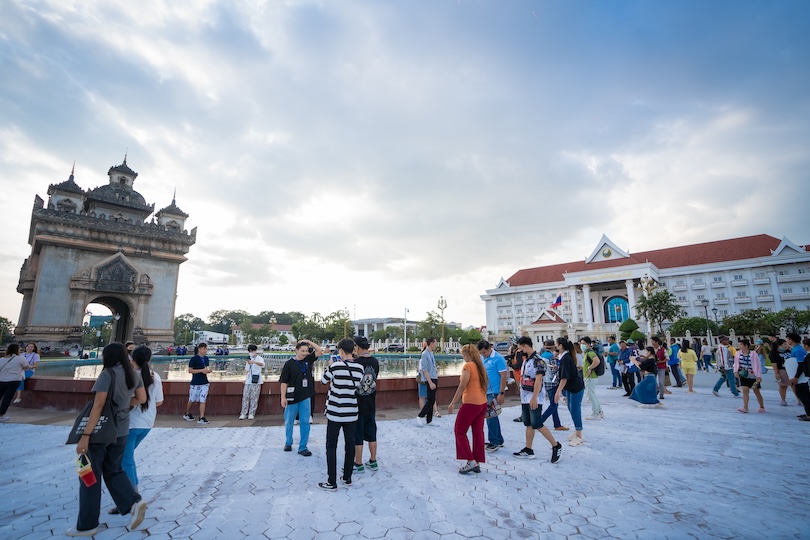
Both the capital and largest city of Laos, Vientiane is an underrated place to visit with lots of different sides to it. Besides boasting beautiful Buddhist temples, it is known for its elegant French colonial-style architecture and vibrant street food scene.
Set right in the south of the land-locked country, its charming tree-lined streets lie along the northern bank of the Mekong River. In recent decades, the city has doubled in size as malls, hotels and office buildings have shot up everywhere. While the traffic is much more chaotic now, its peaceful temple gardens and riverfront promenade are still wonderful to explore.
Other than admiring the glimmering gold Pha That Luang – Laos’ national symbol and most important religious site – you can amble about the many museums and night markets. Wat Si Muang and Buddha Park also attract visitors with their amazing architecture and artworks.
28. Sihanoukville
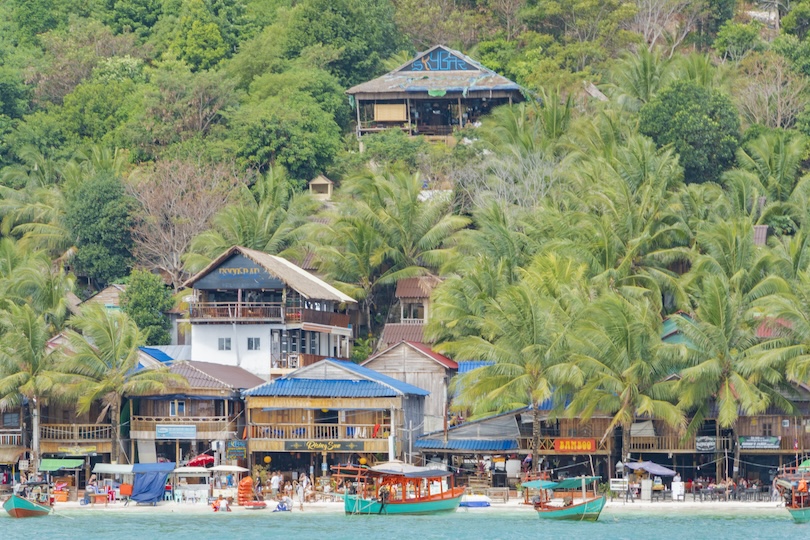
As it is home to many of Cambodia’s best beaches , Sihanoukville is a great spot to relax and unwind after exploring Angkor Wat and Phnom Penh. Lying along the Gulf of Thailand, it has heaps of fun watersports to enjoy with idyllic islands also located nearby.
Also known as Kampong Saom, the popular seaside city was quiet until pretty recently when swanky Chinese resorts and casinos were erected everywhere. Although it’s lost a bit of its laid back charm, there are now tons of restaurants and bars to try out.
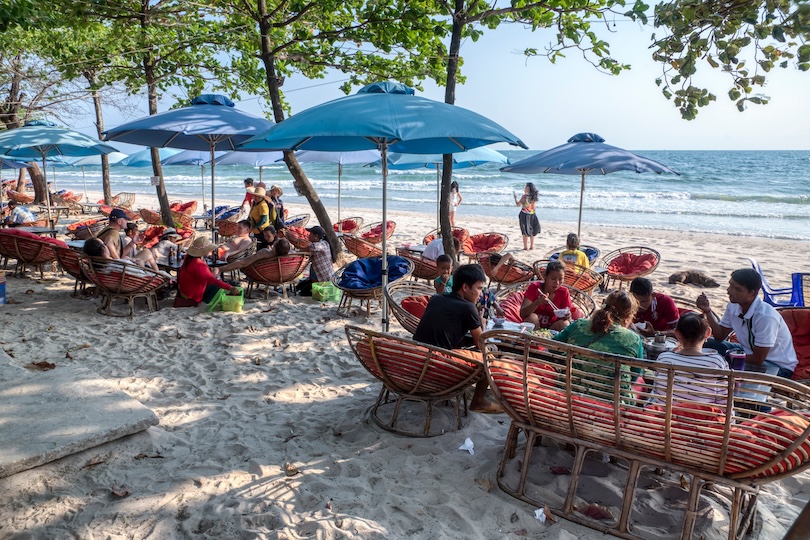
Plenty of pristine beaches still line its coast with Ream National Park also preserving lovely mangroves and colourful coral reefs. Aside from sunbathing, swimming and snorkelling, you can rent jet skis or take boat trips to the gorgeous Koh Rong and Koh Russei islands.
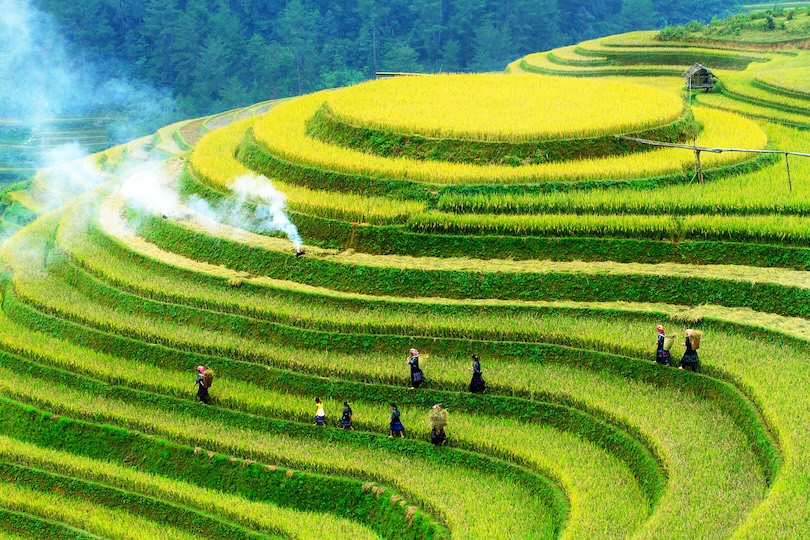
Nestled away amidst the remote mountains and rice terrace-filled valleys of northwestern Vietnam is the scenic town of Sapa . An increasingly popular tourist destination, it is famous for both its stunning landscapes and traditional hill tribe villages.
Overlooked by the rugged Ham Rong Mountain, the small settlement is surrounded by loads of spectacular nature. While some hike to Muong Hoa Valley for its picturesque rice paddies, others climb up the 3,141 meter-high Mount Fansipan – the tallest peak in Southeast Asia.
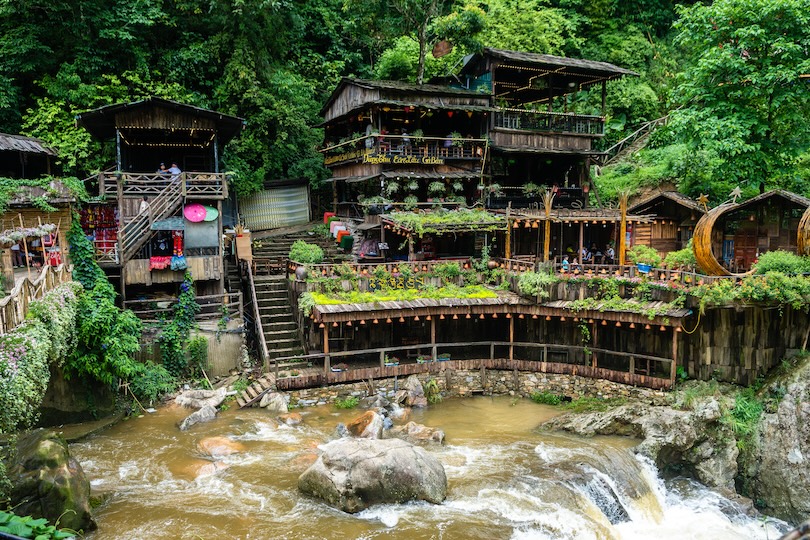
Many also come to learn about the isolated region’s unique cultural heritage and the ethnic minorities that live here. In addition to picking up some local handicrafts at its market, you can stay overnight at the quaint Cat Cat Village or trek to some of the other towns nearby.
26. Perhentian Islands
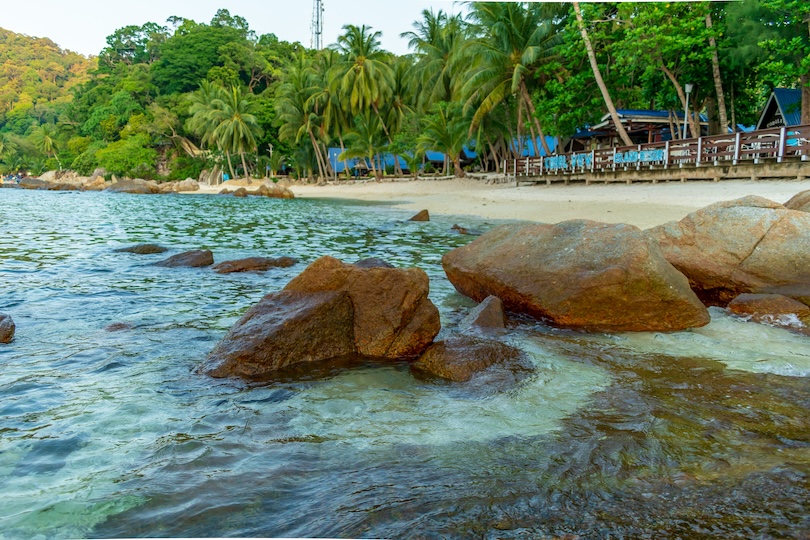
Just a short speed boat ride off the northeast coast of Peninsular Malaysia are the incredible Perhentian Islands . Appearing as if out of a travel brochure, the jungle-clad archipelago and all its breathtaking beaches are surrounded by shimmering, turquoise waters.
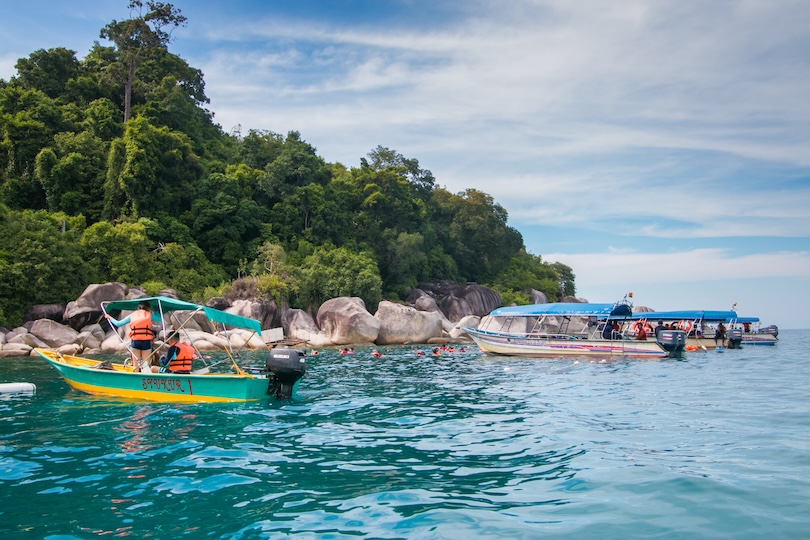
Meaning ‘stopping point’ in Malay, the cluster of coral-fringed islands are completely unspoiled with only the larger Perhentian Besar and Perhentian Kecil being inhabited. Protected as part of Pulau Redang National Marine Park, they have some stupendous snorkeling, scuba diving and sea-kayaking to enjoy.
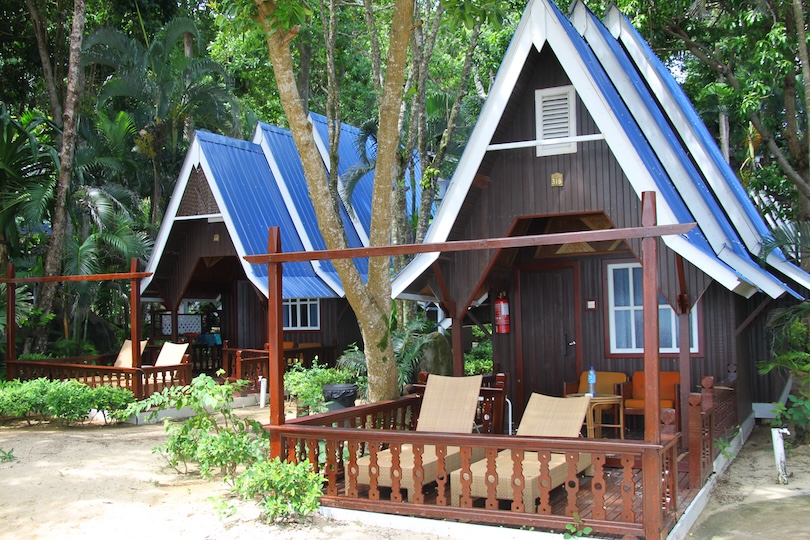
After ogling at all its magnificent marine life, you can hike about its steamy jungle or lounge on picture-perfect beaches. Some epic rock formations also line their sparkling white sands with relaxing resorts and restaurants dotted here and there.
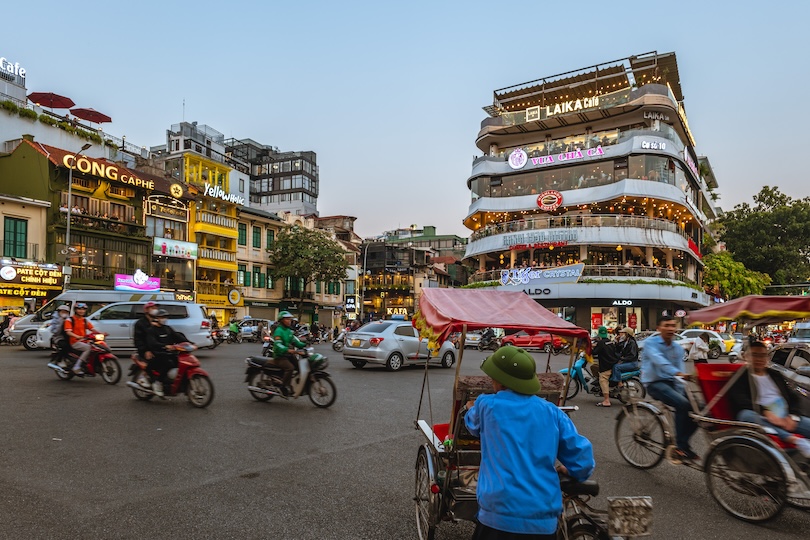
In stark contrast to the tranquil isles, the hectic, high-paced Hanoi threatens to overwhelm your senses. Once you get used to the constant traffic and hooting horns, Vietnam’s capital has much to love about it with millions visiting each year.

One of the oldest cities on Earth, it exhibits a fascinating mix of East and West as concrete communist blocks lie next to French colonial buildings and ancient Asian pagodas. In its Old Quarter, there are atmospheric markets and alleys to explore with the tiny cafes along Train Street always a big draw.
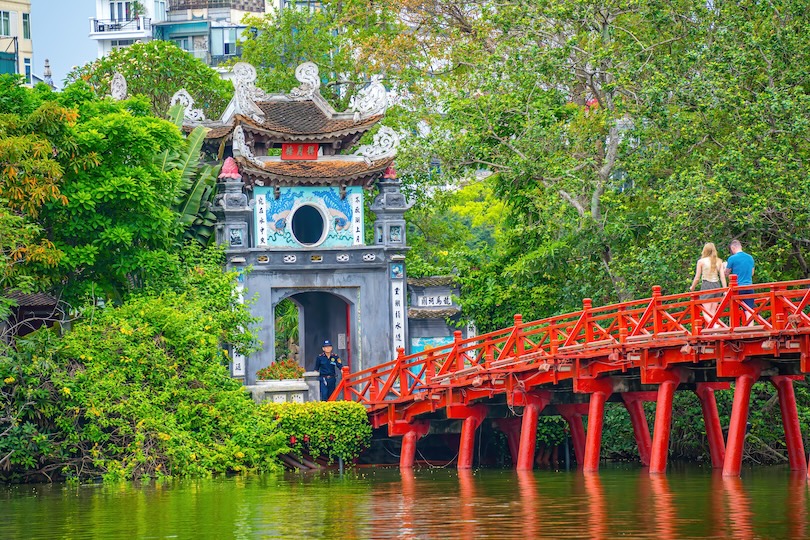
Other than trying terrific street food, there are numerous museums and galleries that cover the history and culture of the country. If the chaos ever gets too much, you can stroll about the handsome Hoan Kiem Lake or Temple of Literature.
24. Vang Vieng
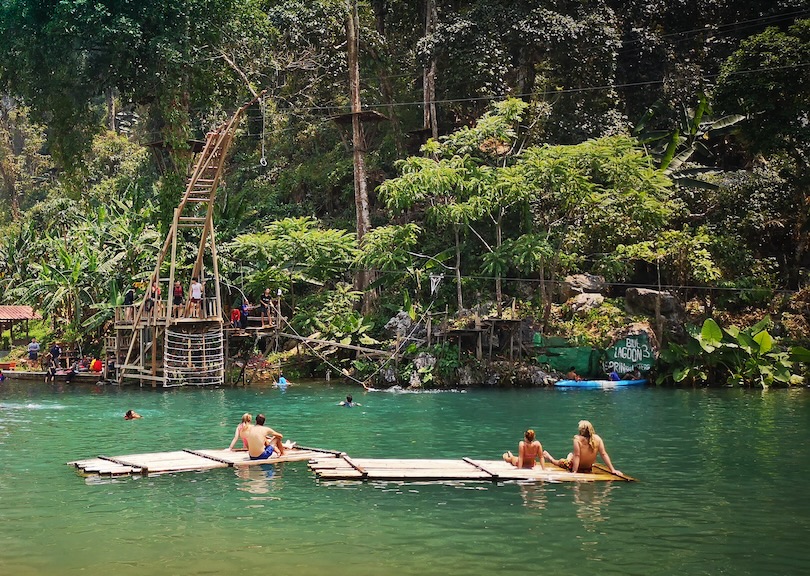
Often called the ‘Adventure Capital of Laos’, Vang Vieng is renowned for its remarkable karst formations and fast-flowing river. Popular with party-seeking backpackers, it has lots of captivating caves and bucolic countryside to see nearby.
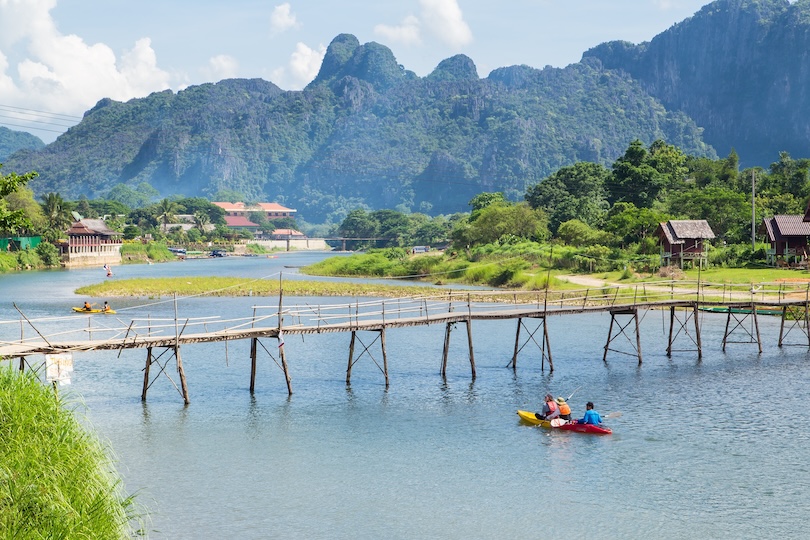
Located a couple of hours’ drive north of Vientiane, the small town lies along the Nam Song River, overlooked by dramatic, soaring mountains. Besides hiking or rock climbing, many go tubing along the river, stopping at various bars along the way.
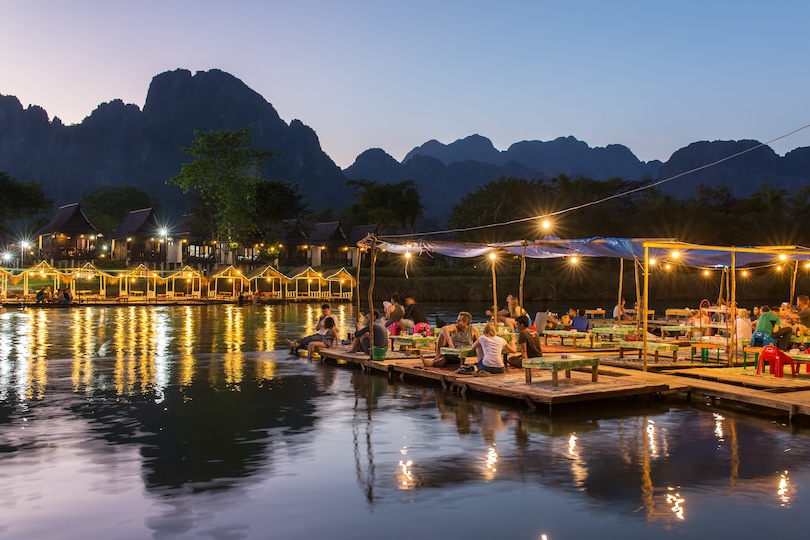
With countless cool caves, waterfalls and viewpoints found in the surrounding region, most people book tours to places like Tham Chang or the Tham Nam Water Cave. Buggies and kayaks are also available for rent while fun ziplines shoot you above its pretty landscapes.
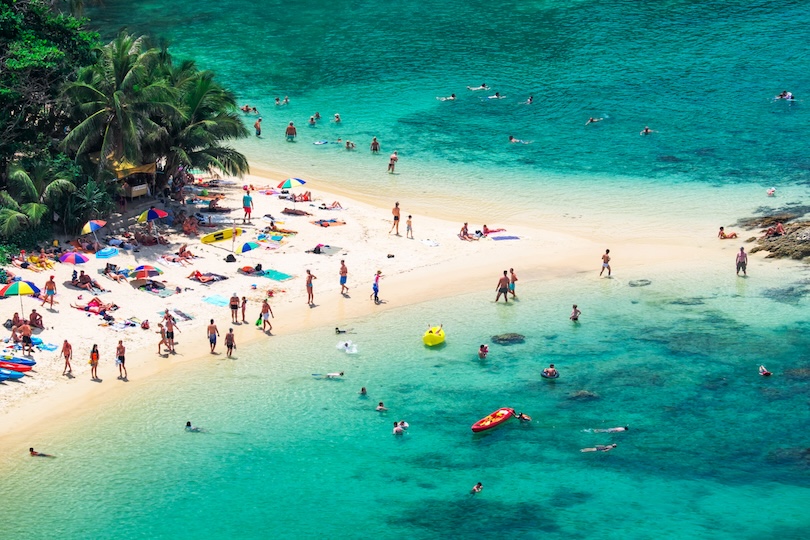
The largest island in Thailand, Phuket has long been a top destination thanks to its beautiful beaches and bountiful dive sites. Connected to the mainland by a couple of short bridges, its many mountains and rainforests overlook the Andaman Sea.
Offering various exciting outdoor activities, the wealthy province’s pristine parks are great for hiking and motorbiking. As well as exploring the lush rainforest, you can snorkel, sail and scuba dive in the warm waters.
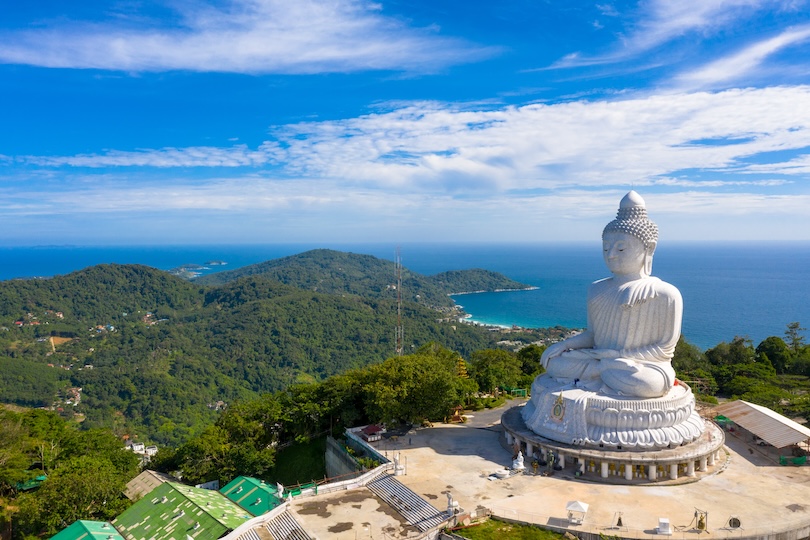
Many also come to pamper themselves at high-end spas, restaurants and hotels with the picturesque Patong Beach being known for lively street markets and loud nightlife scene. Phuket Town, the island’s capital, also has some centuries-old temples, shrines and Sino-Portuguese mansions to see.
22. Kuala Lumpur
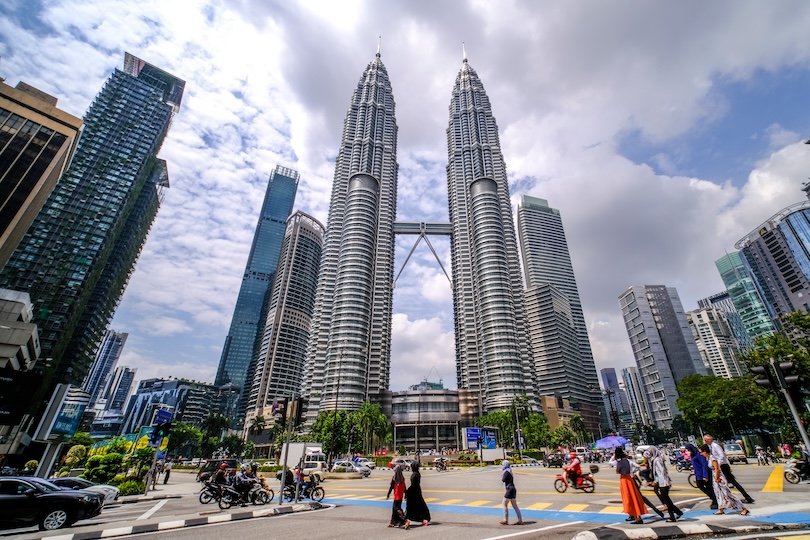
One of the most multicultural cities in the world, Malaysia’s sprawling capital Kuala Lumpur hums with energy at any time of day. Most known for the iconic Petronas Twin Towers, it has everything from old-time temples and markets to modern malls and skyscrapers to explore.
Since being founded as a tiny tin mining outpost in 1857, the dynamic KL has continued to grow and grow. Thanks to its large Chinese, Malay and Indian populations, the city has tons of tasty dishes to try with its architecture and historic sights being just as diverse.
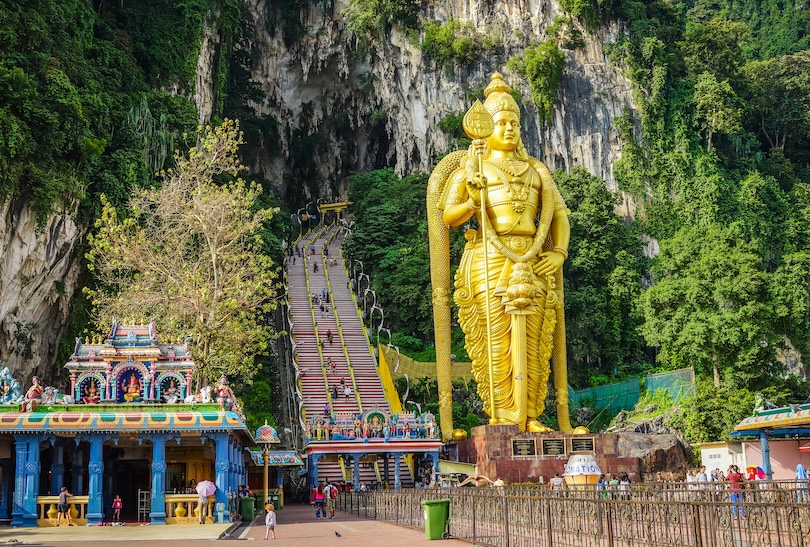
Besides shopping at Berjaya Times Square’s stores or sampling Jalan Alor’s street food, you can enjoy awe-inspiring views from its high-up observation decks. The incredible Batu Caves and Genting Highlands can also easily be visited on day trips from the capital.
21. Gili Islands
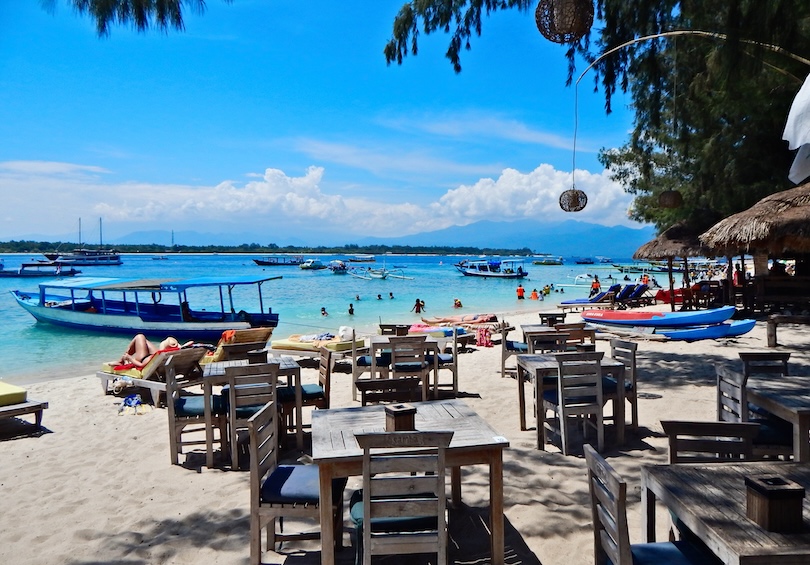
A lovely, laid back place to visit, gorgeous Gili Islands lie just off the northwest coast of Lombok in Indonesia. Fittingly meaning ‘small beautiful islands’, their wonderful white sands and warm, crystal-clear waters are easily reached by either ferry or fast speed boats.
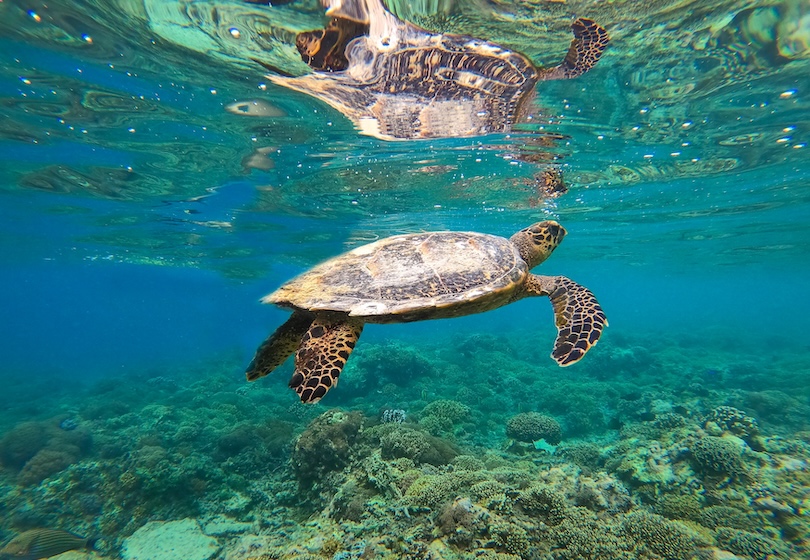
Although they have long been a popular tourist destination, the three secluded isles are still quite undeveloped despite more resorts and restaurants popping up each year. While Gili Air and Gili Meno are very relaxed, Gili Trawangan is much livelier with plenty of bars and clubs hosting party nights.
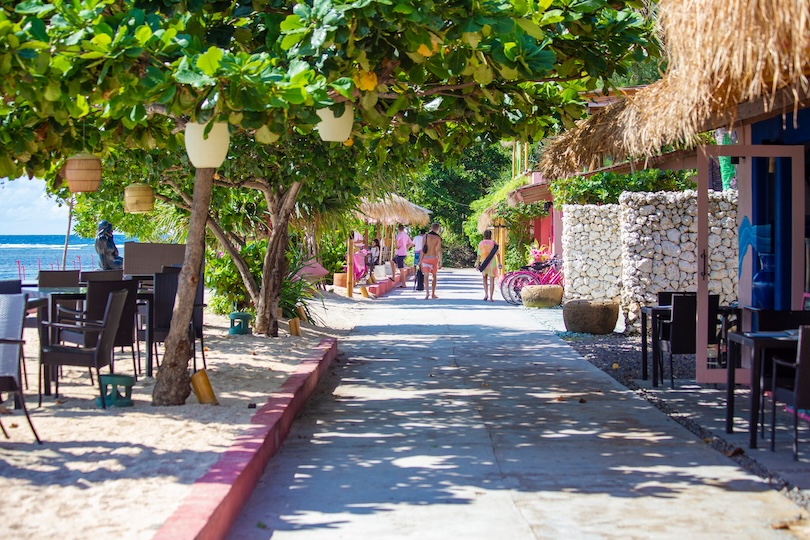
All of them boast some breathtaking scenery and beaches with swimming, scuba diving and sightseeing cruises being their main activities. With no cars at all on the islands, their little cafes and beachside retreats make for a delightful getaway.
20. Phnom Penh
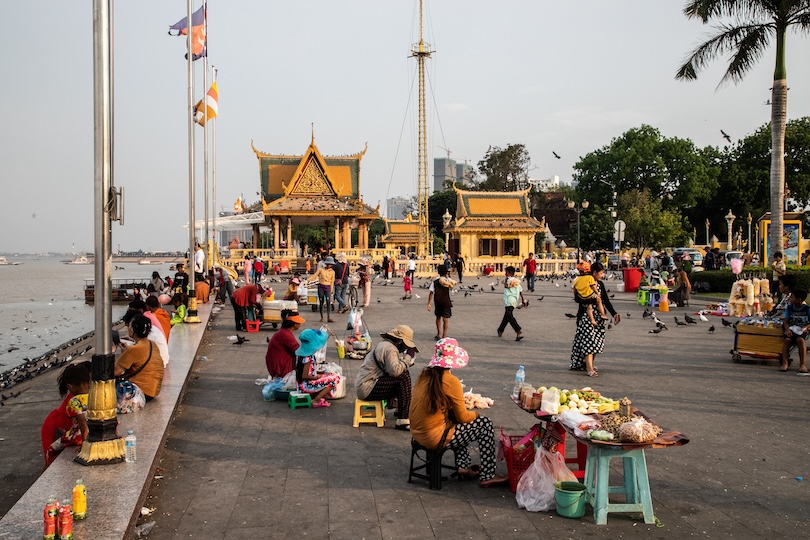
Once known as the ‘Paris of the East’ and ‘Pearl of Asia’, Cambodia’s capital Phnom Penh has slowly overcome the abuse it suffered under the violent Khmer Rouge regime. While it is still a bit rough and rundown in places, the growing metropolis certainly has a lot to offer.
As it acted as a hub for both the ancient Khmer Empire and French colonialists, fine temples and villas were erected around the city. Although many were damaged in the seventies, the wide boulevards and riverfront promenades for which it is famed still remain.
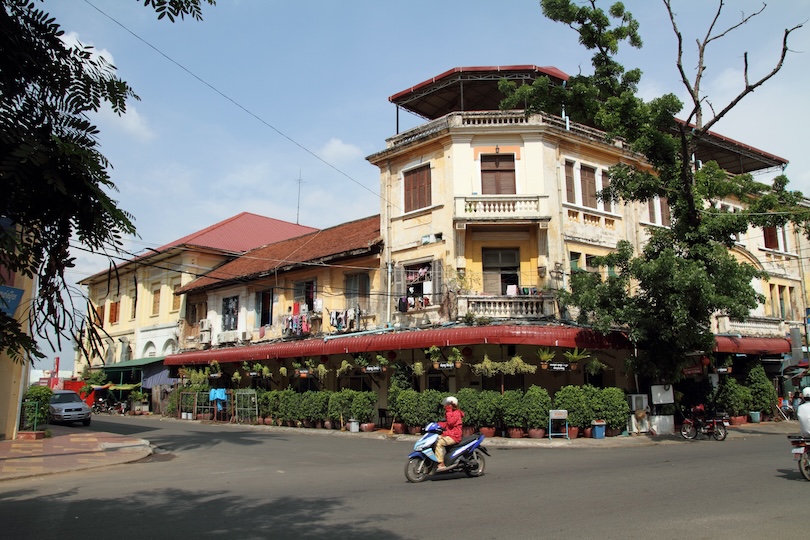
Aside from wandering about its attractive parks or enormous Phsar Thmei market, you can admire its Royal Palace and Silver Pagoda. Visitors can also learn more about its recent sad past at the Killing Fields or in its moving Genocide Museum.
19. Chiang Mai
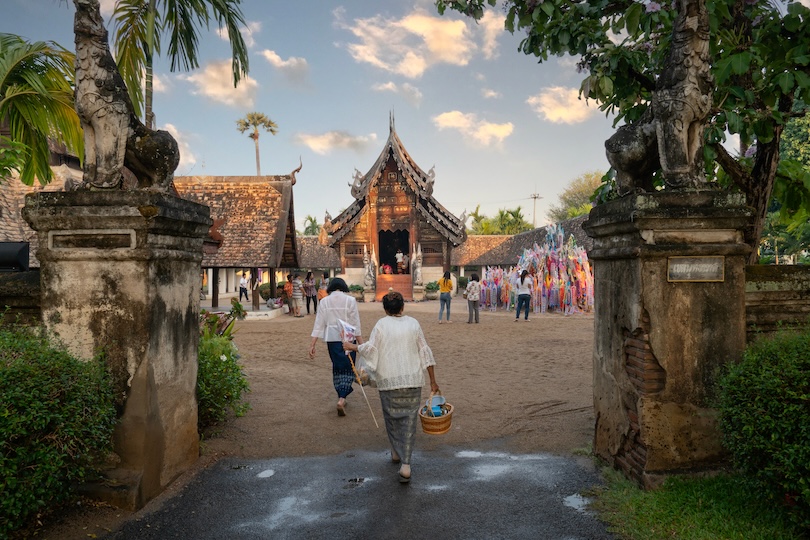
The second-largest city in Thailand, Chiang Mai is located in the mountainous north, amidst scenic countryside. One of Southeast Asia’s must-visit destinations, it is known for not just its atmospheric temples and old town but its fun night markets and street food too.
Once the capital of the Lanna Kingdom, it was founded in the thirteenth century with some of the city walls and moat still intact today. These contain impressive temples like Wat Chedi Luang and Wat Phra Singh. You’ll also find bustling Night Bazaar and all kinds of enticing street food stands to try out nearby.
Outside of the city are natural wonders like Doi Inthanon National Park and Hang Dong Quarry to discover. Many also go trekking to meet remote hill tribes or bathe adorable baby elephants at some of the sanctuaries.
18. Inle Lake
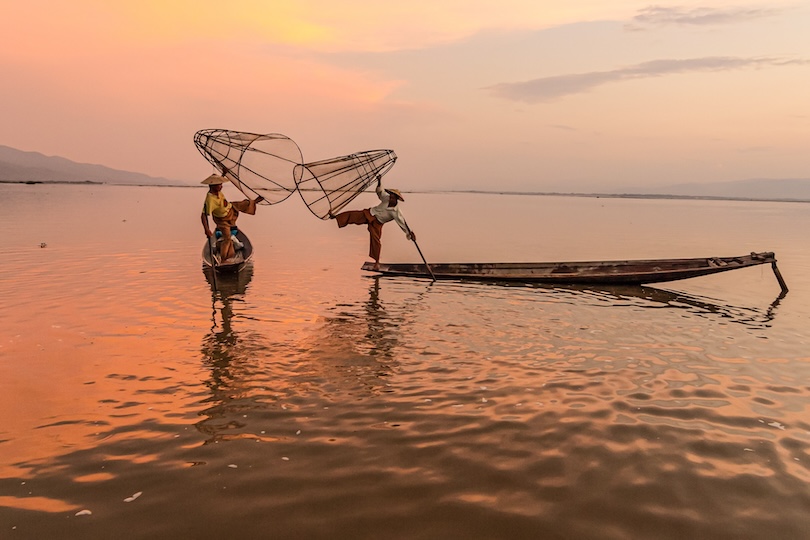
Along with the ancient pagodas and temples of Bagan, Inle Lake has to be one of Myanmar’s most enchanting attractions. Tucked away amidst the rolling Shan Hills, its reflective waters are lined by charming monasteries and temples with floating villages, markets and gardens also bobbing about.
The second-largest lake in the country, it stretches 22 kilometres in length with lots of tribes living around it. Many motorboats and flat-bottomed skiffs take tourists out on the shallow lake so you can see the communities up close and learn more about their traditions.
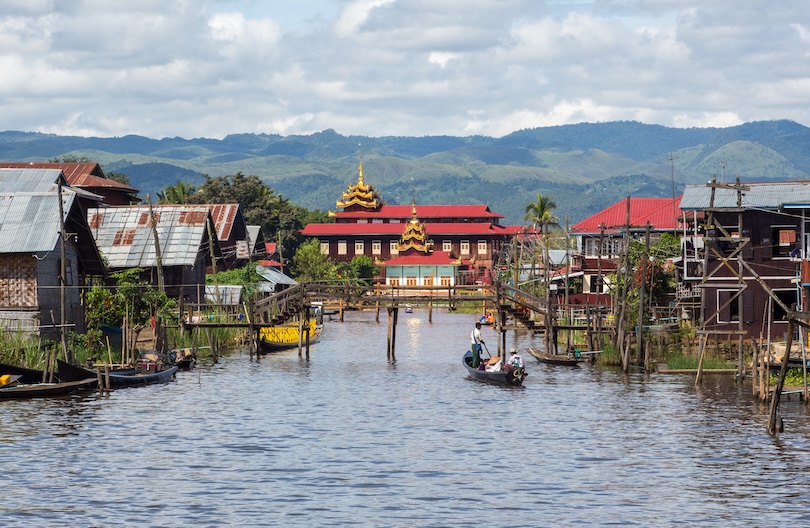
As well as visiting stilt homes and fishermen’s villages, there are centuries-old stupas and pagodas to see too. While puttering about, you can bask in marvellous views of the lake and the mountains far off in the distance.
17. Palawan
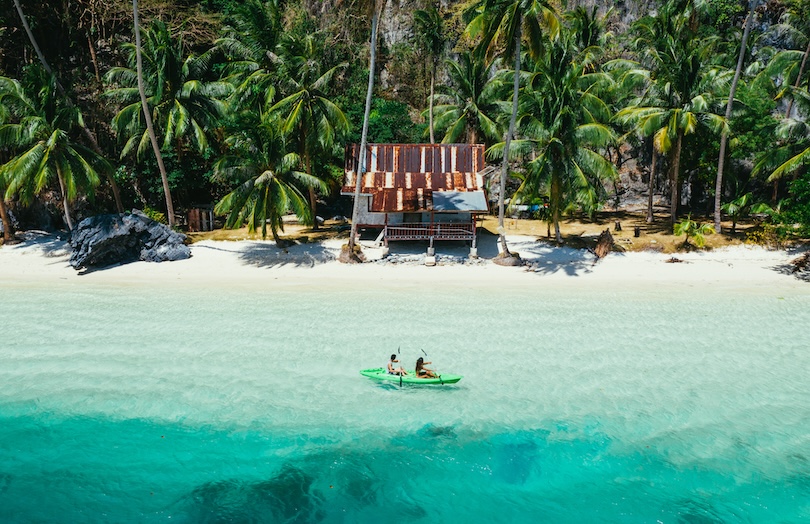
With all the alluring beaches, immense limestone cliffs and azure waters, it is no wonder that Palawan is considered to be one of the prettiest parts of Southeast Asia. The westernmost province of the Philippines, it has around 1,780 mostly unspoiled islands and islets to explore.
Set between the Sulu and South China seas, the long, narrow archipelago stretches almost from Borneo to Mindanao. Characterized by craggy limestone cliffs and colourful lagoons, its white sand beaches and dive sites need to be seen to be believed.
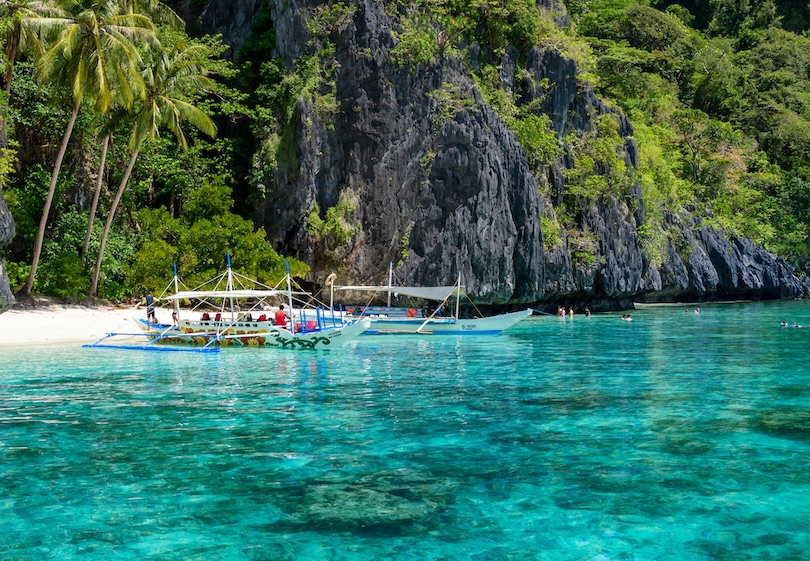
Among the region’s many highlights are the irresistible karst landscapes of El Nido and the underground river at Puerto Princesa. Tubbataha Reefs National Park also attracts divers as do the coral reefs and shipwrecks off of Busuanga Island.
16. Taman Negara
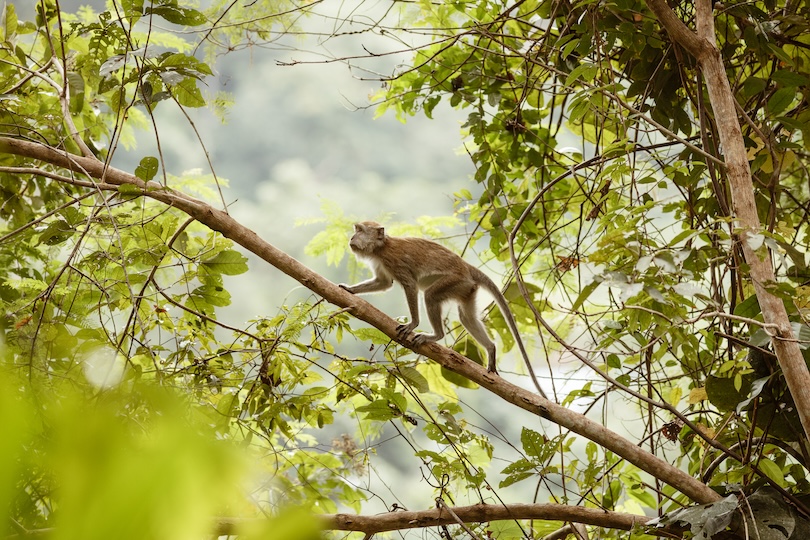
Covering a massive part of Peninsular Malaysia are all the rivers, rainforests and mountains of Taman Negara . A must for nature lovers and outdoor enthusiasts, the country’s largest national park offers a myriad of unforgettable adventure activities.
Established in 1938/1939, it sprawls across three states with Asian elephants, leopards and Malayan tigers all inhabiting its wild confines. The vast park also protects some of the oldest deciduous rainforest in the world. Some estimates reckon it is over 130 million years old!
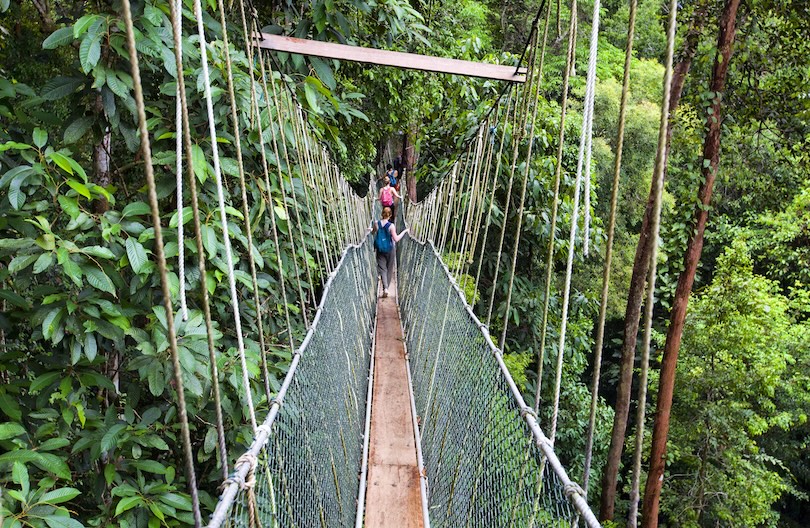
Amidst its endless mountains and jungle, you can explore caves, climb peaks and enjoy cool canopy walks. Many also shoot down its rapids and take nighttime safaris through the dark rainforest to see its nocturnal creatures. There are also the tiny aboriginal villages of Orang Asli to visit where you can learn more about traditional life in Taman Negara.
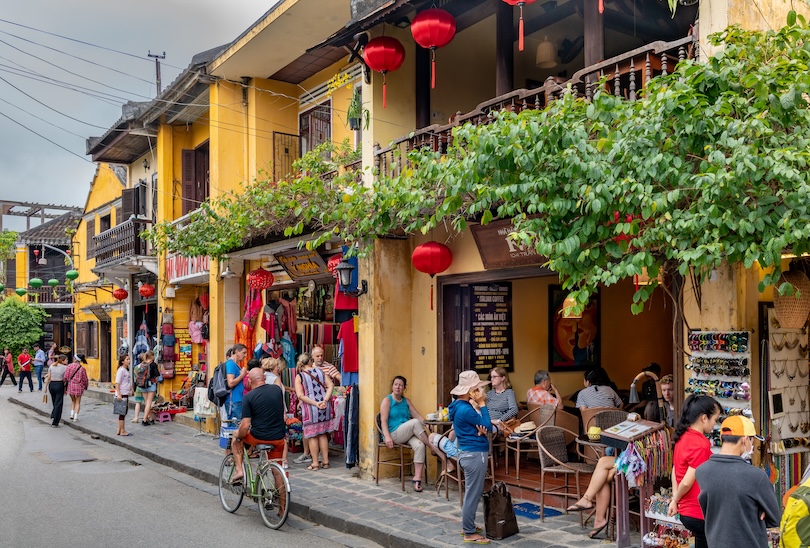
Well-preserved, Hoi An’s little canals and lantern-lit streets are hemmed in by hundreds of historic buildings. A mix of eras and styles, they perfectly reflect the former trading port’s past and all the different peoples and merchants that have lived here over the ages.
Lying along Vietnam’s central coastline, it flourished for centuries until the mouth of the Thu Bon River finally silted up. Its attractive Old Town is home to not just Chinese-style temples and shophouses but French colonial villas and ornate Vietnamese tube houses too. Another of its main sights is its quaint Japanese covered bridge that crosses one of the canals.
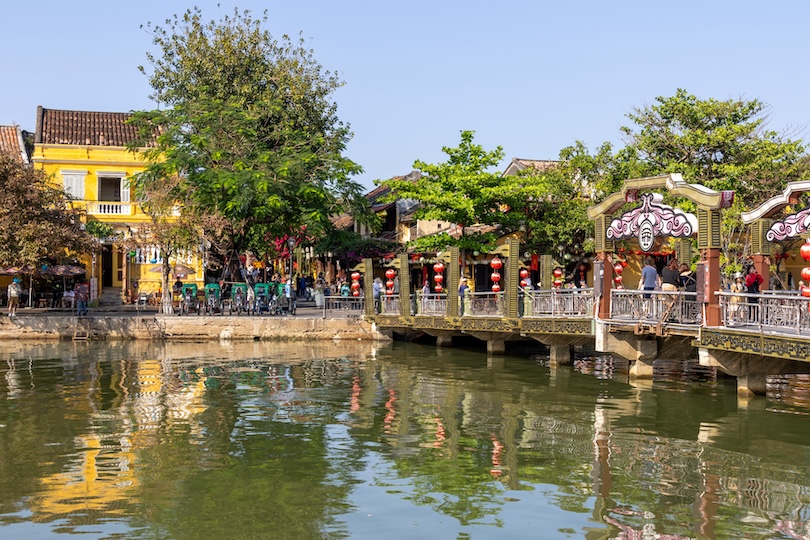
At night, everywhere looks even more magical as lovely lanterns light up its narrow, winding streets and riverside. Besides shopping for souvenirs at its market and trying some delicious street food, many take trips to the majestic My Son ruins nearby.

Formerly known as Rangoon, Myanmar’s largest city Yangon has much more to see than just its shimmering gold Shwedagon Pagoda. Other than the ancient Buddhist shrine, there are plenty of British colonial buildings, parks and religious sites to check out.
Despite being replaced at the capital by Naypyidaw in 2005, it still acts as both the country’s cultural and commercial center. As it exhibits a mix of British, Burmese, Chinese and Indian influences, the city has loads to offer in terms of its historic sights, food and nightlife.
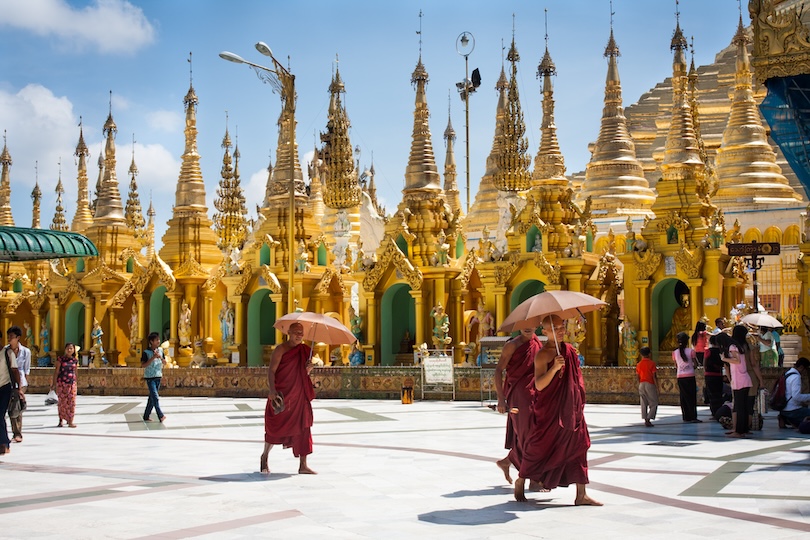
The undoubted highlight, however, is of course the gigantic golden Shwedagon Paya which is perched atop a hill overlooking the city. At its sizeable complex, you can examine its shrines and stupas and bang the giant Maha Ganda Bell for good luck.
13. Boracay
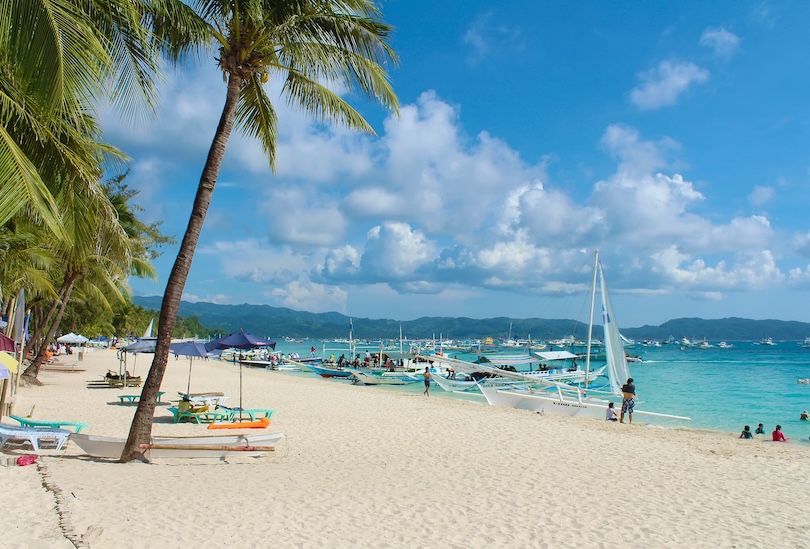
One of the Philippines’ most popular destinations, Boracay boasts some of the best and most beautiful white sand beaches in the world. A tropical paradise, all its relaxing resorts, spas and seafood restaurants lie just an hour’s flight from Manila.
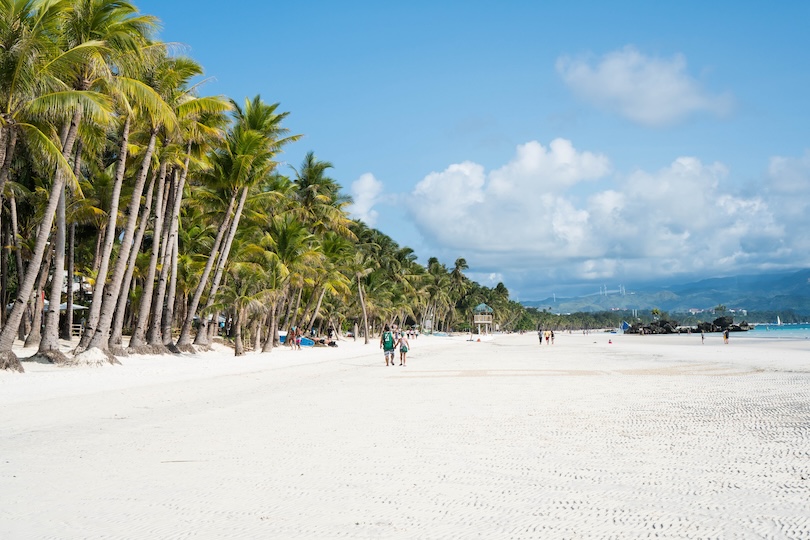
Located just off the northwest coast of Panay, the idyllic isle is lined by soft, powdery sands backed by gently swaying palms. Aside from swimming and splashing in its turquoise waters, you can enjoy everything from sailing and windsurfing to snorkeling, jet skiing and scuba diving.
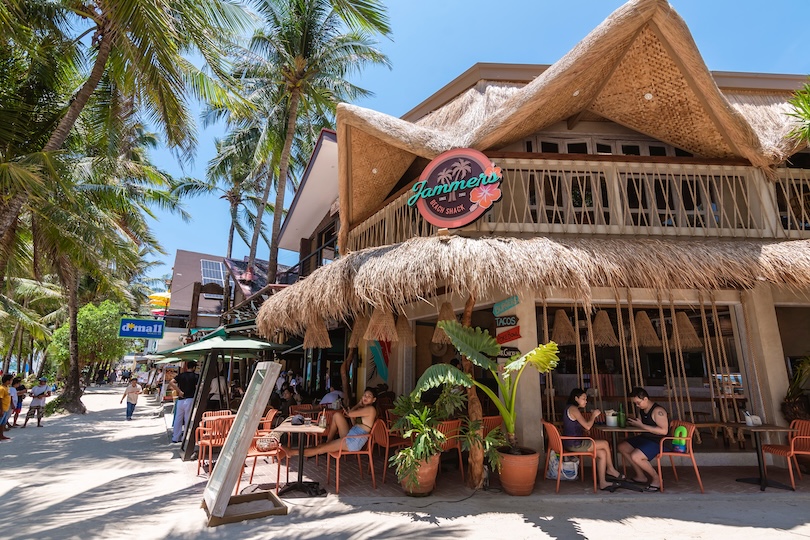
Many holidaymakers also make the most of its many spas and massage stations that border the beach. In the evenings, there are tons of lively bars and restaurants which offer superb music sets and sunset views.
12. Mount Kinabalu
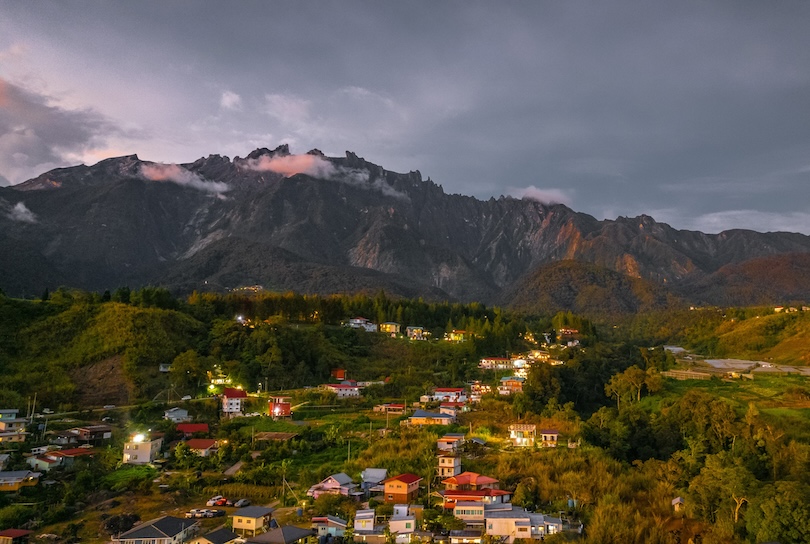
Rising dramatically above the rainforests and rivers of Borneo is the massive great Mount Kinabalu. The highest peak in the Malay Archipelago, it towers 4,095 meters in total with numerous hiking trails winding their way about its rugged slopes.
Considered sacred by the local Kadazan Dusun people, its wild reaches are now protected as part of the national park of the same name. One of the most biodiverse areas on Earth, it is home to around 6,000 plant species. Over 300 kinds of exotic birds also flit about its dense foliage.
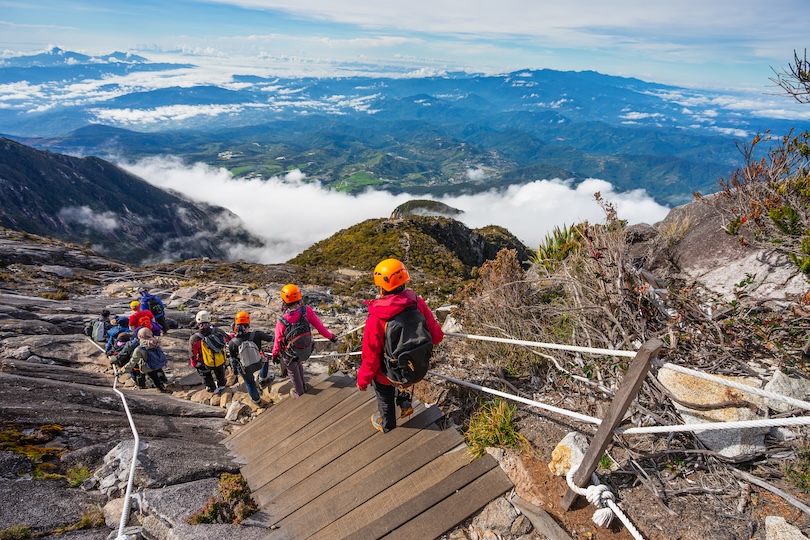
Despite its soaring summit, the mountain is actually quite easy to hike if you are moderately fit. After taking in all its astounding views and nature, you can always go and see adorable orangutans at one of the nearby nature reserves.
11. Komodo National Park
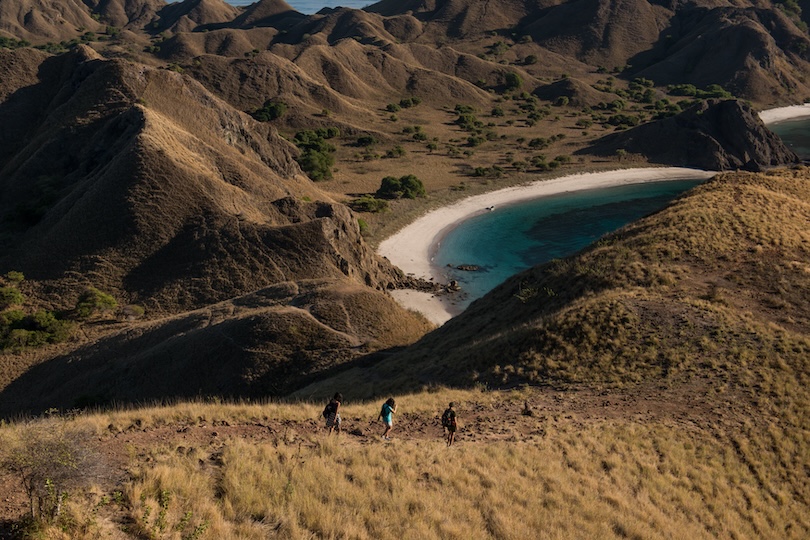
If you’re after a sighting of the world’s largest lizard, then the incredible Komodo National Park is the place to head. Part of the Lesser Sunda Islands in Indonesia, it also preserves some spellbinding mountains, beaches and marine life.
Founded in 1980, the important biosphere reserve includes not just the large islands of Komodo, Rinca and Padar but dozens of smaller ones too. Here, you’ll find thousands of the remarkable creatures which can impressively grow up to three meters in length.
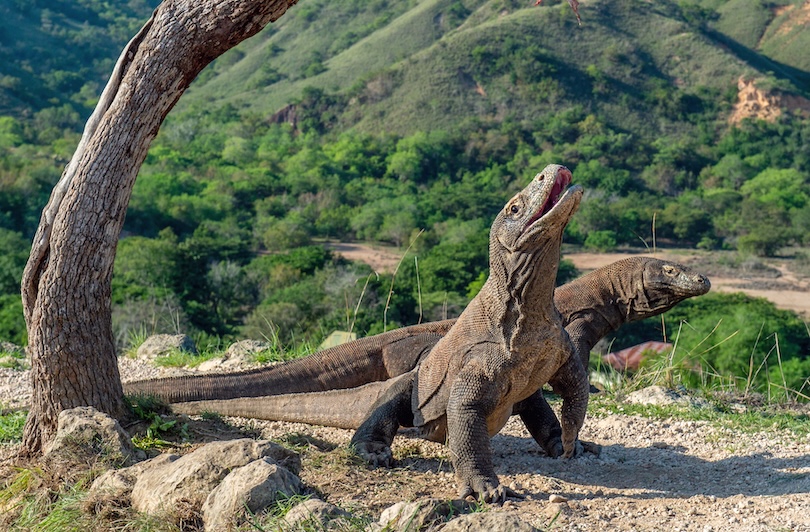
In addition to actually seeing the dragons, you can spot wild horses, water buffalo and other endangered species. Many also camp and kayak at its pristine white sand beaches with the park’s colourful coral reefs being amazing to snorkel and scuba dive above.
10. Singapore

Set off the southern end of the Malay Peninsula is the tiny city-state and island country of Singapore . Often called the ‘Switzerland of Asia’, it is a very prosperous and diverse place with its population speaking English, Mandarin, Malay and Tamil.
Since being established by the British in 1819 as a small trading colony, the city has grown considerably. Still home to one of the world’s busiest ports, its iconic skyline includes famed, futuristic landmarks like Marina Bay Sands Resort and the Gardens by the Bay supertrees.
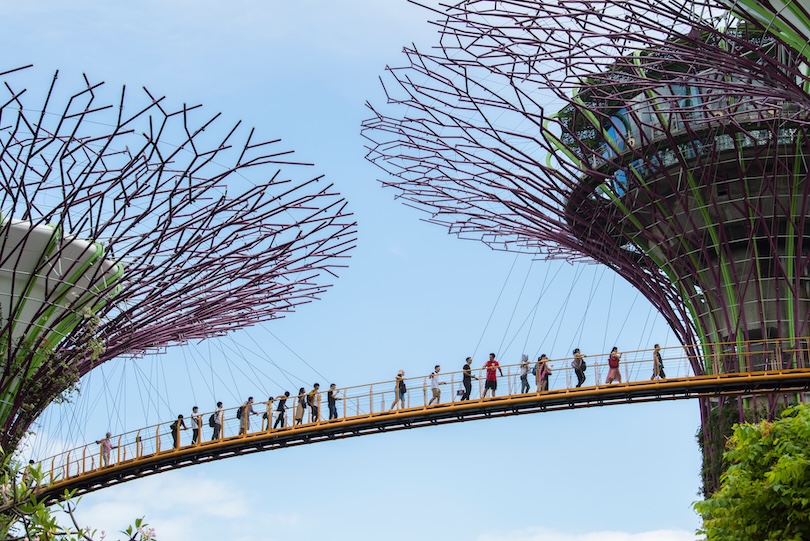
Nearer the ground are cool districts like Chinatown and Orchard Road to amble around with Singapore known for its tasty food and terrific shopping. Although it is one of the world’s most technologically advanced cities, it also has lovely jungles and beaches to enjoy.
9. Ko Phi Phi
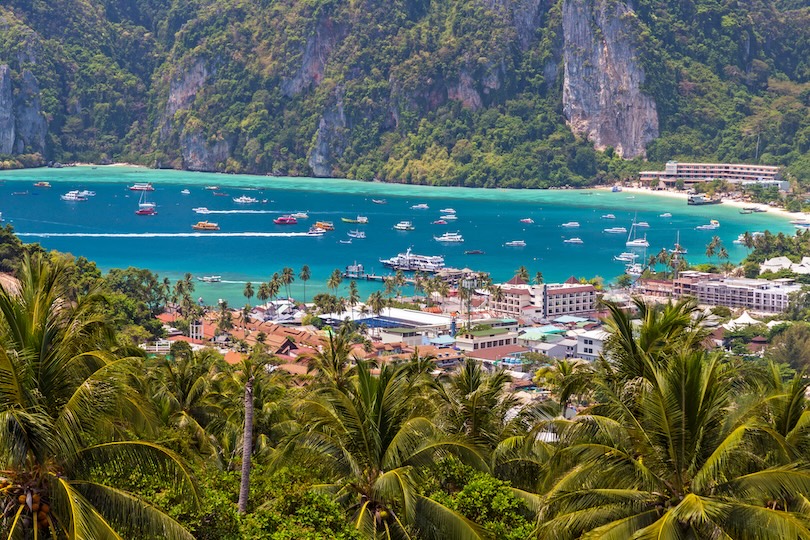
Even more picture-perfect still than Phuket is the nearby archipelago of Ko Phi Phi. Home to some of Thailand and Southeast Asia’s most attractive islands, its charming coves, cliffs and sandy beaches are surrounded by the sparkling Andaman Sea.
Part of Krabi Province , its enchanting isles number five in total with Ko Phi Phi Don being the largest and only one that is inhabited. Towered over by tall karst cliffs clad in greenery, their beaches are often featured on the front of travel catalogues. It’s easy to see why as all their white sands contrast so stunningly with the emerald waters around them.
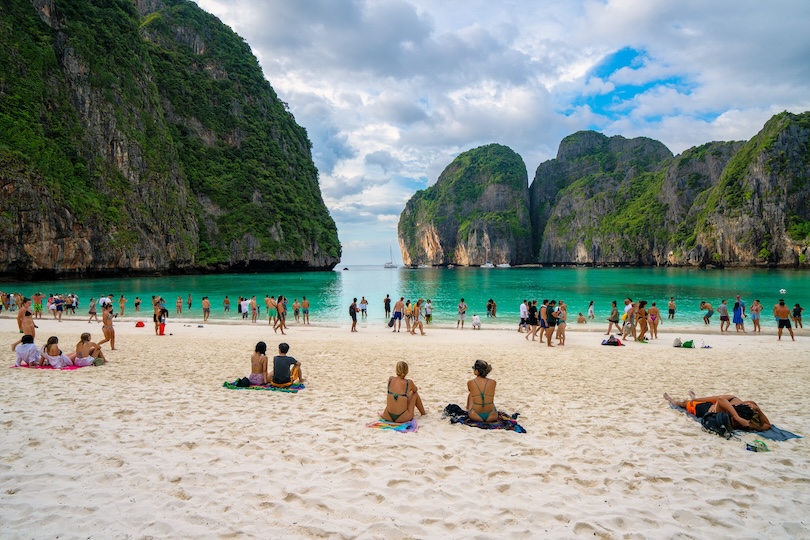
One of the most famous is Maya Bay which was the setting of the hit 2000 film The Beach. As well as sunbathing and swimming, you can take boat trips about the islands and snorkel and scuba dive in their waters. Ko Phi Phi is also known for its lively nightlife and fire shows.
8. Luang Prabang
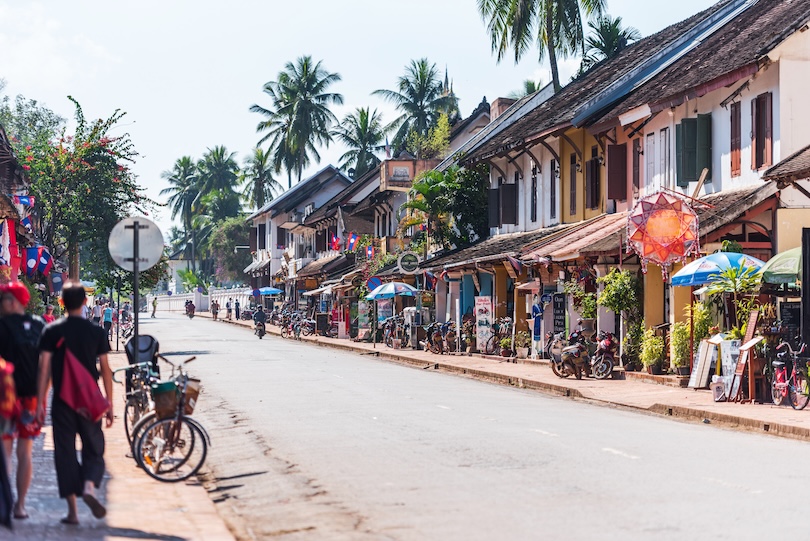
Rightfully renowned for its countless temples and shrines, Luang Prabang is nestled amidst gorgeous green hills in northern Laos. Meaning ‘Royal Buddha Image’, its historic old town is very atmospheric to wander around with several waterfalls also found nearby.
Situated at the spot where the Mekong and Nam Khan rivers meet, it acted as the country’s capital until 1975. At Wat Xieng Thong or the Temple of the Golden City, you can see where the Laotian kings of old were crowned. The nation’s most important monastery, it showcases some exquisite architecture, statues and murals.
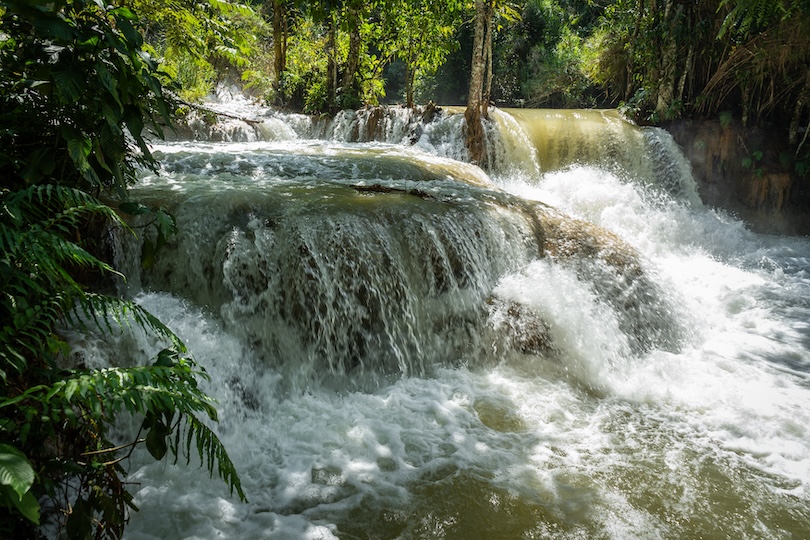
In the Old Quarter, you can still see monks collecting alms in its laidback, stall-lined streets. Once you’ve explored its temples, make sure to take a trip to the fabulous Kuang Si Falls or carved Buddhas in the Pak Ou Caves.
7. Borobudur

The largest Buddhist temple in the world, the absolutely massive Borobudur monument lies in the center of Java, just northwest of Yogyakarta . Just one of Indonesia’s many must-visit sights , its collection of stupas look particularly spectacular at sunrise and sunset.
Dating to the ninth century, its enormous square platforms and circular terraces are made out of two million blocks of dark volcanic stone. Decorating the entire complex are elaborate relief panels and Buddha statues. These depict daily life, the concept of Karma and various fauna and flora from around the island.
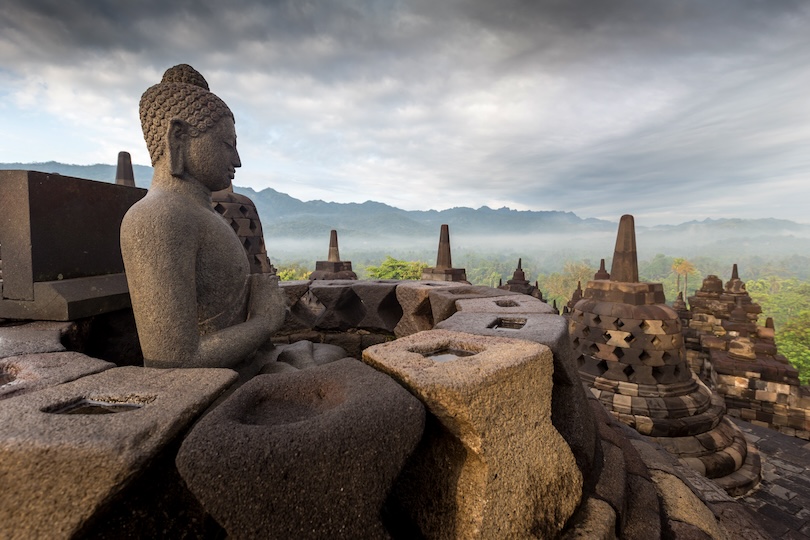
Hidden for centuries under thick layers of ash and rainforest, it is very well-preserved with a couple of museums explaining more about the site. Every June, traditional Javanese dances are performed at Borobudur, highlighting its history and how it was constructed.
6. Ifugao Rice Terraces
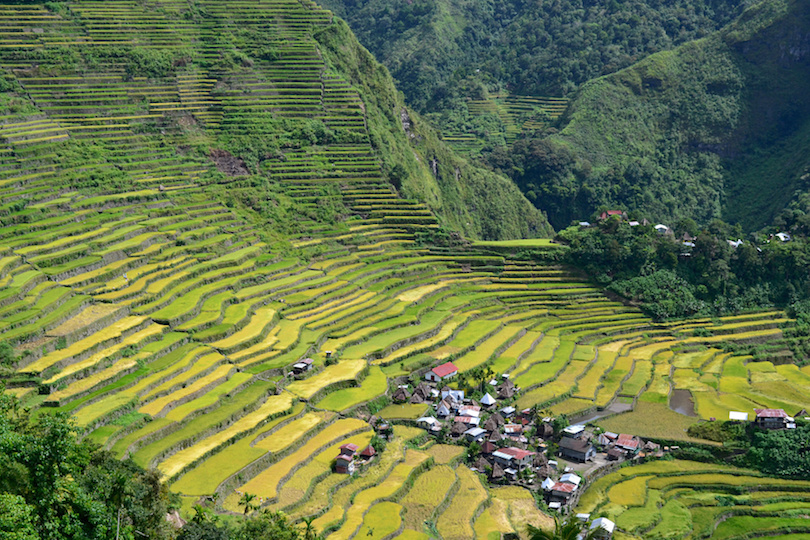
Yet another picturesque place to visit in the Philippines are the beautiful Ifugao Rice Terraces in the northern part of Luzon . Tumbling their way down the sides of steep, sweeping valleys, their vivid green hues make for some phenomenal photos.
For thousands of years now, the Ifugao people have practiced rice farming this way, hidden away amidst the Cordilleras highlands. Carved into the side of the mountains, the irrigated paddies are an astounding feat of engineering. Some even label them the ‘Eighth Wonder of the World’.
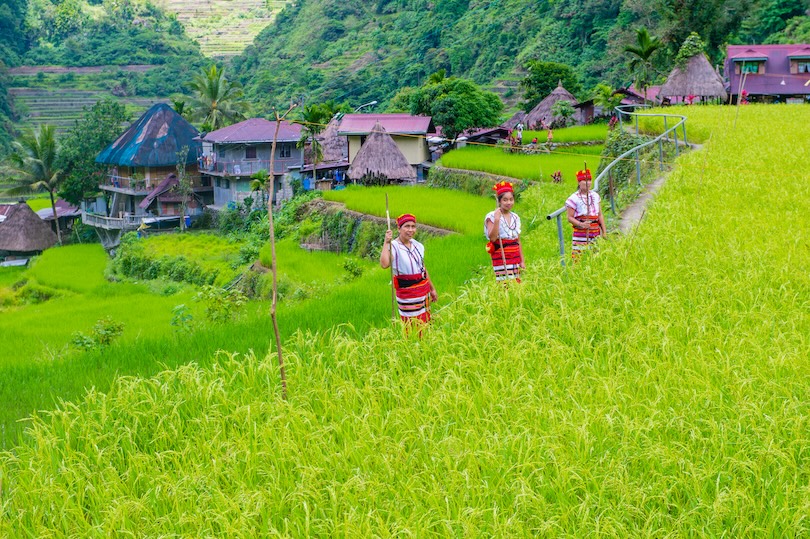
Aside from visiting viewpoints and snapping photos of the remarkable rice terraces, you can trek around and stop by some traditional hill tribe villages. Many sell woodcarvings and handicrafts with plenty of families also offering homestays.
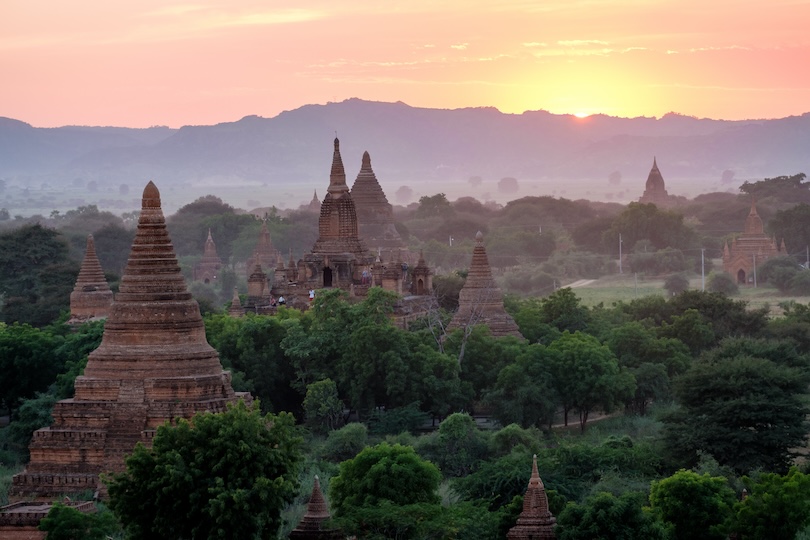
The highlight of most people’s time in Myanmar has to be watching the sunrise above all the stupas, temples and pagodas of Bagan. Rising above the trees and plains about them, its more than 2,200 spires make for an unforgettable sight.
Built between the ninth and thirteenth centuries, the immense archaeological site was once the capital of the powerful Pagan Kingdom. Actually described by Marco Polo himself as the ‘gilded city’, it contained over 13,000 monasteries and temples at its zenith.
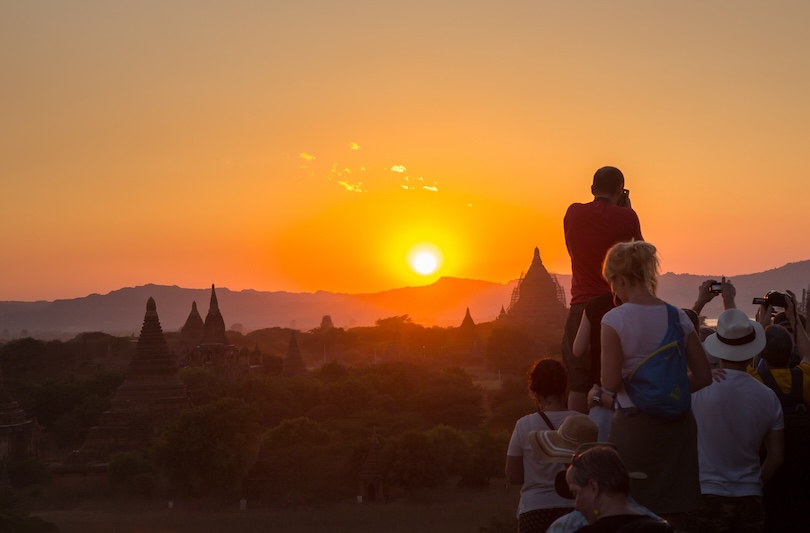
As the complex is so large, you’re best off choosing a few specific places to visit. Among the most popular, impressive and important are Ananda Temple and Dhammayangyi Temple. A lot of people also take hot air balloon rides at dawn to see Bagan from above and enjoy the glint of the rising sun on its stupas.

One of the largest, liveliest cities on the planet, Thailand’s capital Bangkok is certainly not to be missed when in Southeast Asia. Famed for its fantastic street food and nightlife scene, it also has magnificent temples and palaces to check out.
Home to almost 11 million people, its seemingly endless urban sprawl surrounds the Chao Phraya River. Numerous canals also branch off it with many taking peaceful cruises to avoid its intense heat and heavy traffic.
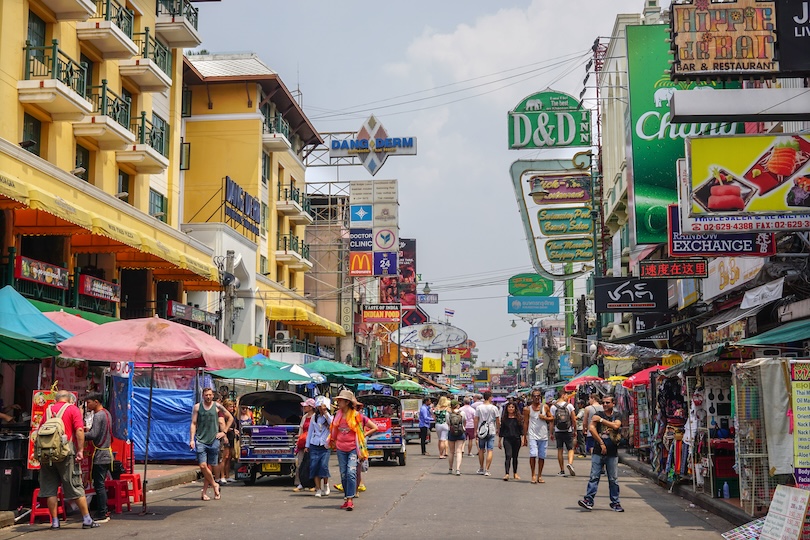
Alongside all its towering skyscrapers, you’ll also find interesting historic sites like Wat Arun and the Grand Palace. Trawling its vibrant markets is loads of fun too as is sipping cocktails at one of the city’s many rooftop bars. With luxury spas and shopping also on offer, Bangkok has something for everyone to enjoy.
3. Ha Long Bay
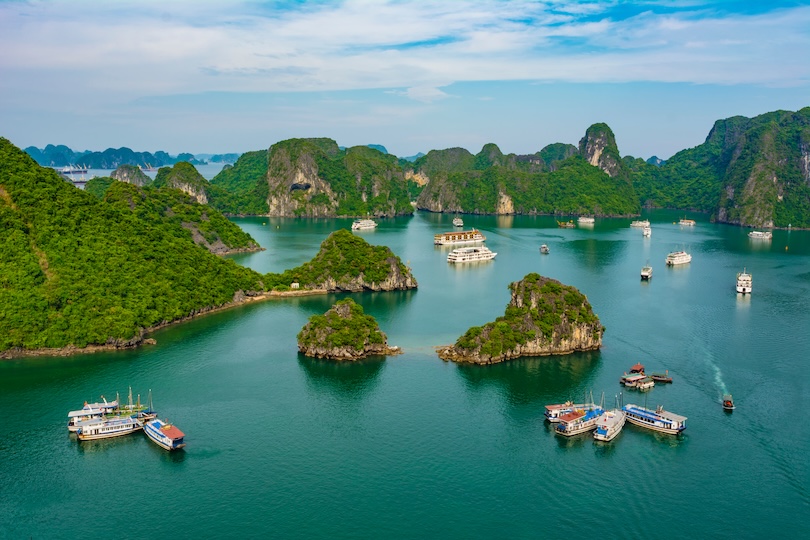
Often listed among the world’s natural wonders, Ha Long Bay’s incredible karst landscapes really are special to explore. One of Vietnam’s top attractions , it lies right in the northeast of the country, not all too far from Hanoi.
Actually meaning ‘ Bay of Descending Dragons ’, its almost endless emerald waters are home to almost 2,000 islets. These mostly consist of craggy limestone outcrops, topped with lush green foliage or jungle. Some also have cool caves for you to enter and stunning swathes of sand to relax on.
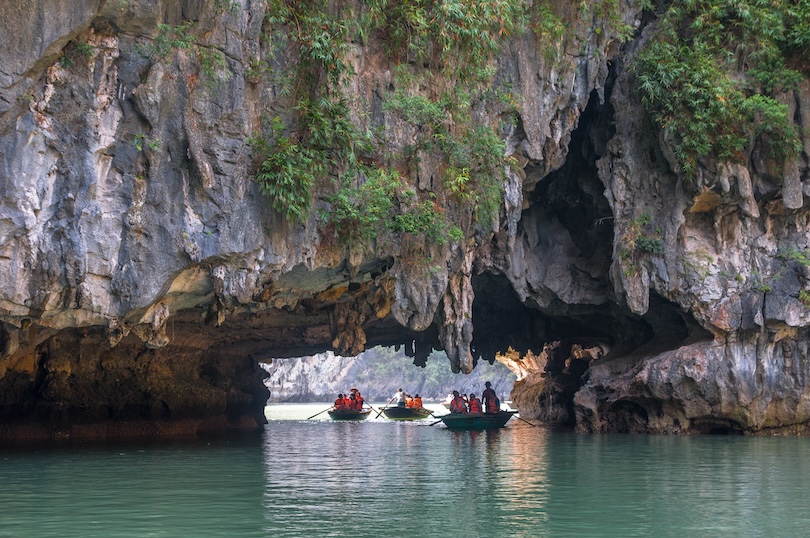
On tranquil junk boat trips about the bay, you can visit its floating villages and kayak about its grottoes. Many also take Tai Chi, yoga and cooking classes aboard the ships while taking in the stupendous scenery all around.

Fittingly known as the ‘ Island of the Gods ’, Bali more than lives up to its name with all its romantic landscapes and revered religious sites. Lying right between both Java and Lombok, its rich culture, resplendent nature and warm hospitality make it the most visited of all the Indonesian islands.
Often described as a tropical paradise, its marvelous mountains and rice terraces give way to rugged cliffs and sandy beaches. Scattered about are thousands of ancient Hindu temples and fabulous valleys, paddies and waterfalls to hike or cycle to.
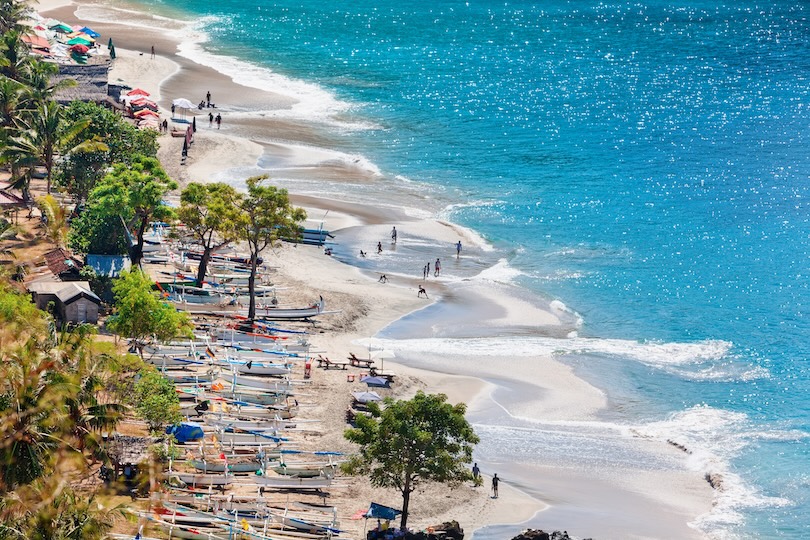
Other than spending time in Ubud , its cultural center and arts and crafts hub, you can enjoy the pounding nightlife and vivid sunsets at Seminyak. Many also attend yoga retreats or surf and party at Kuta Beach.
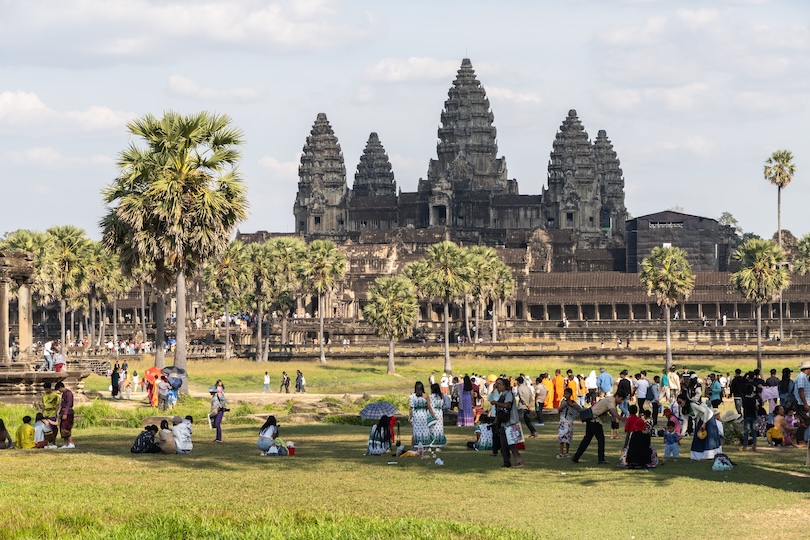
Covering an enormous area, Angkor in Cambodia contains the remains of several capitals of the ancient Khmer Empire. Fascinating to wander around, its hundreds of highly symbolic stone temples can be found just outside of Siem Reap .
Now believed to have been the largest pre-industrial city in the world, the important political and religious center was largely constructed between the ninth and fifteenth centuries. After its decline, the ruins of the temples were eventually reclaimed by the jungle.
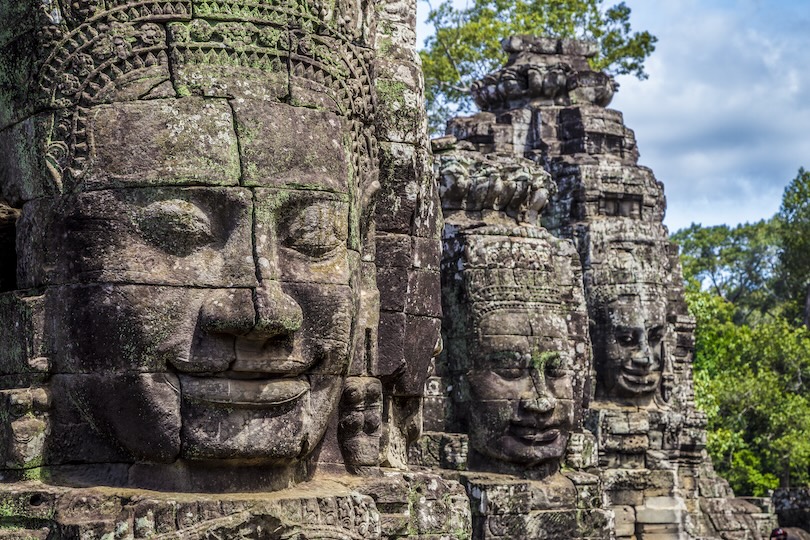
While the iconic Angkor Wat may be its largest and most elaborate structure, there are also tons of other temples like the breathtaking Bayon and tree-covered Ta Prohm to see. All of them exhibit some amazing architecture and are decorated with detailed reliefs, statues and carvings. A place like no other, Angkor is a must-visit when in Southeast Asia.
Map of Southeast Asia
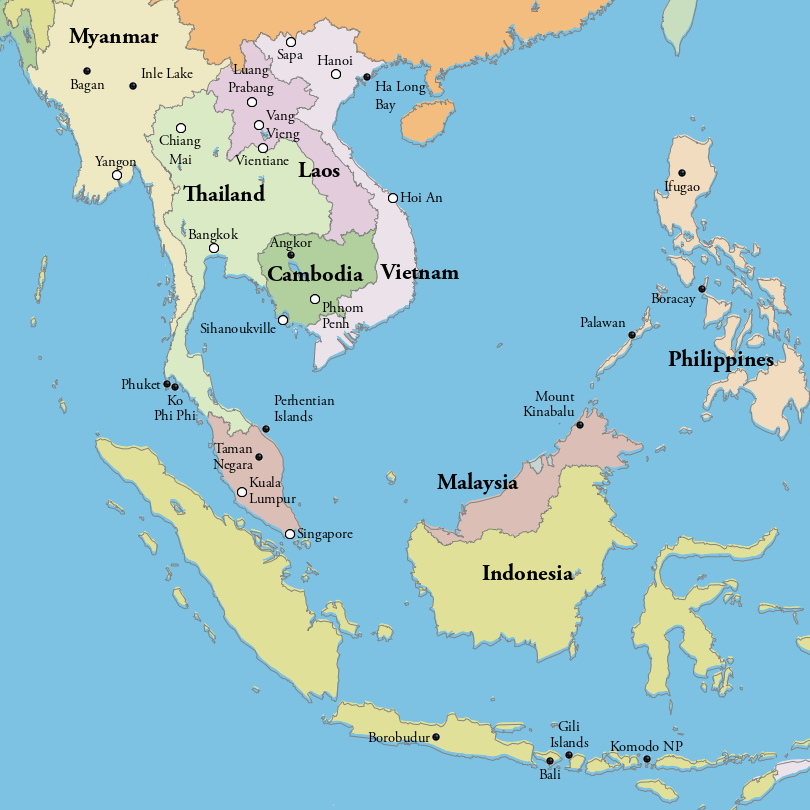
Share this post:
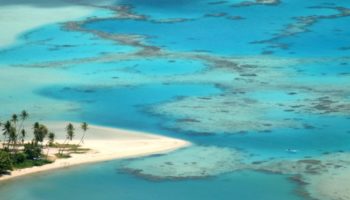
8 Most Beautiful Society Islands
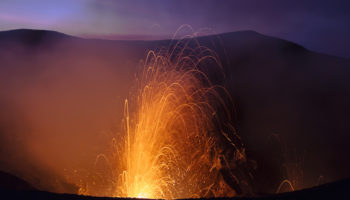
9 Facts about Mount Yasur
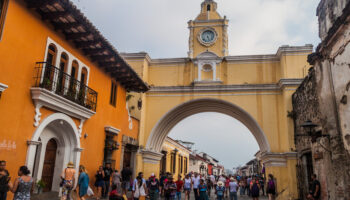
10 Best Places to Visit in Central America
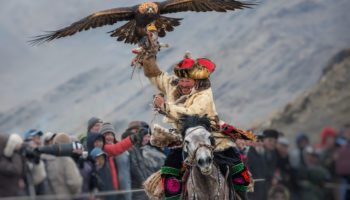
15 Best Things to Do in Mongolia
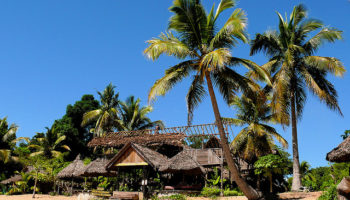
10 Most Beautiful Islands in Africa
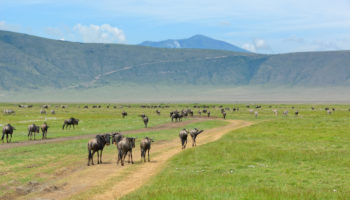
10 Best Countries to Visit in Africa
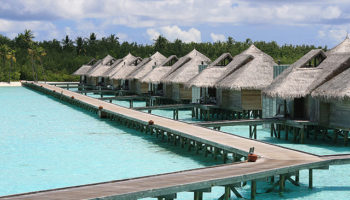
10 Best Luxury Resorts in the Maldives
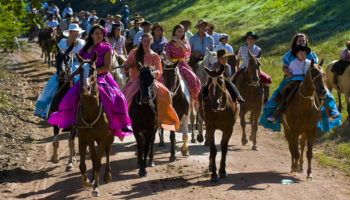
10 Best Places to Visit in Uruguay
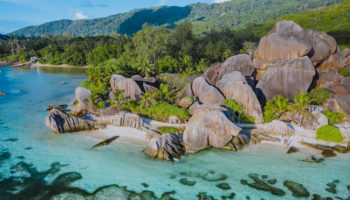
15 Best Things to Do in the Seychelles
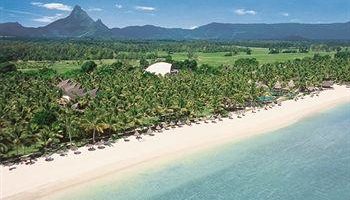
10 Best Mauritius Luxury Resorts
Reader interactions.
February 15, 2021 at 4:06 am
Stay away from Sihanoukville, it is now a huge building site ruined by the Chinese building Cambodia’s version of Las Vegas.
Cambodia’s main attraction for you tourists are the Angkor Park temples in Siem Reap, amazing temples built in the 12th century.
February 13, 2018 at 7:49 am
There is also a new Elephant eco-park in Phuket.
February 3, 2018 at 8:37 pm
I just visited an elephant sanctuary park near Chang mai in Thailand where we fed, washed and walked with rescued elephants . Never felt so emotionally rewarded … kindest gentlest giants . Say no to cruel elephant trecking where animals are abused both physically and mentally …
March 8, 2017 at 12:18 pm
I agree with Marie. It would be worth searching to see if there is an eco-tourist elephant park where there is no riding. I went to one in Chiang mai and it was fantastic.
Leave a Reply Cancel reply
Your email address will not be published. Required fields are marked *
This site uses Akismet to reduce spam. Learn how your comment data is processed .

Plan Your Trip
- 01 Fill in details ranging from your desired experience to the amount of people you are traveling with.
- 02 Based on your answers, discover destinations and experiences tailored to you.
- 03 Explore each suggestion
Follow the step by step with what you would like to experience for your next trip through the following 4 questions.
Quick Links
- Intra-ASEAN Tourism Toolkit Download
- Tourism Packages
- Guidelines on Self-Drive
- Facts & Planning
- Visa & Immigration
- Suggested Itineraries
- Download Video
- Download Logo
A Destination For Every Dream
Stay updated on Covid-19 in Southeast Asia. For more information, click here .
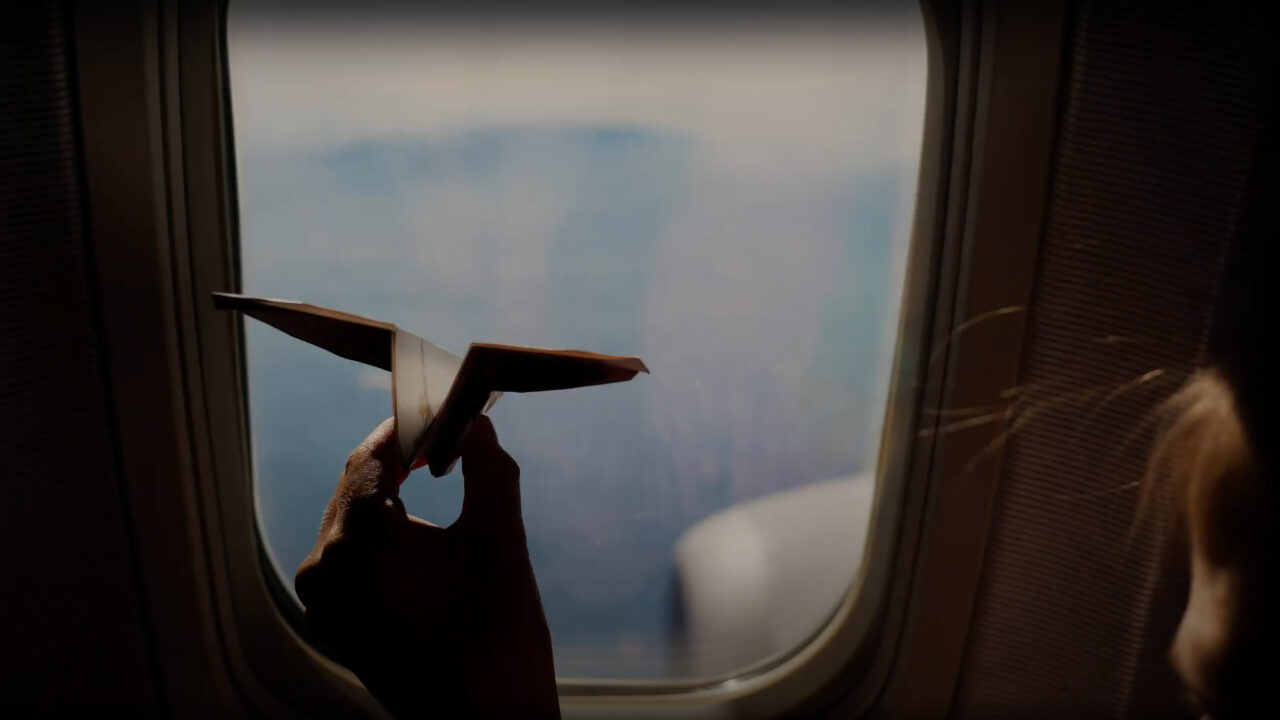
ASEAN Sustainability
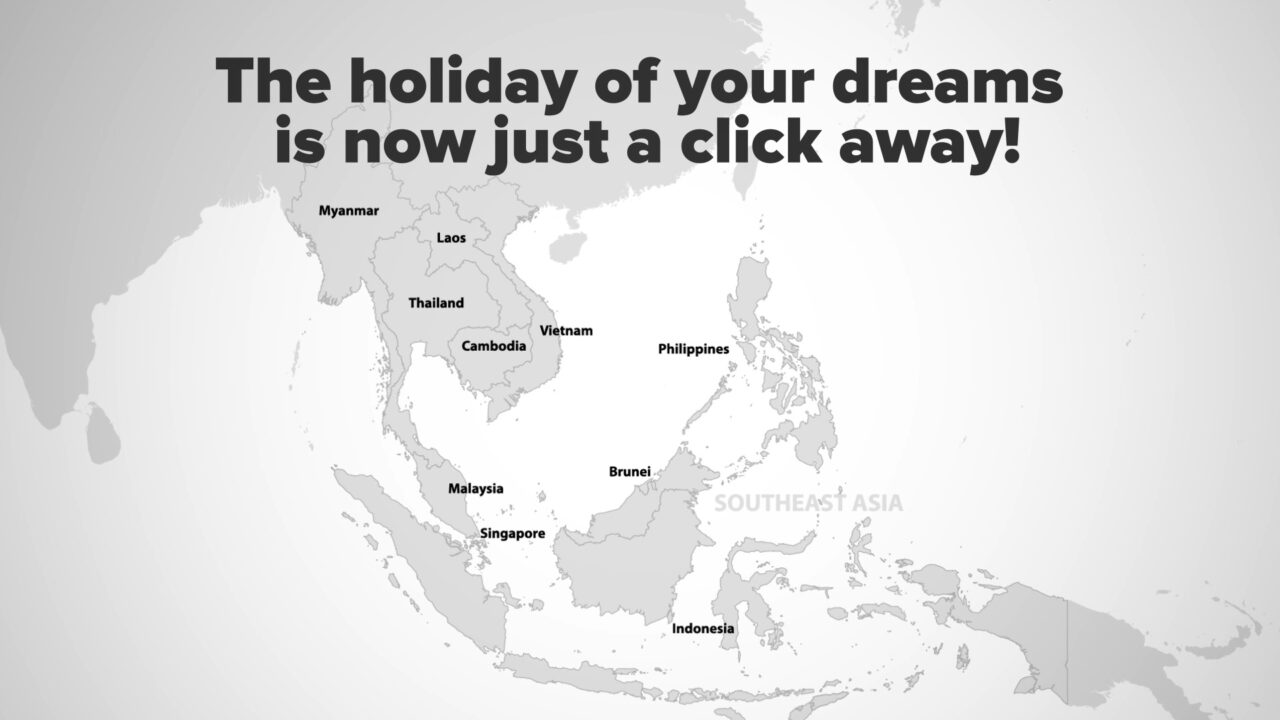
Discover Lao PDR
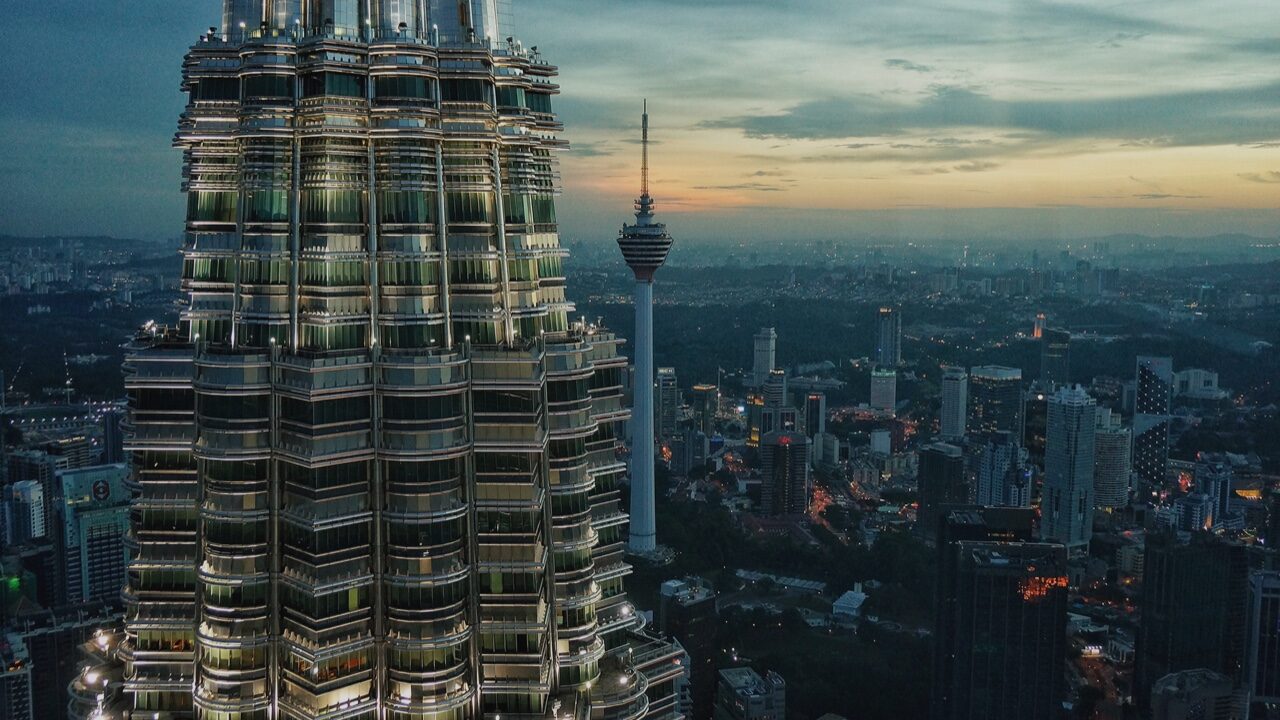
Discover Malaysia
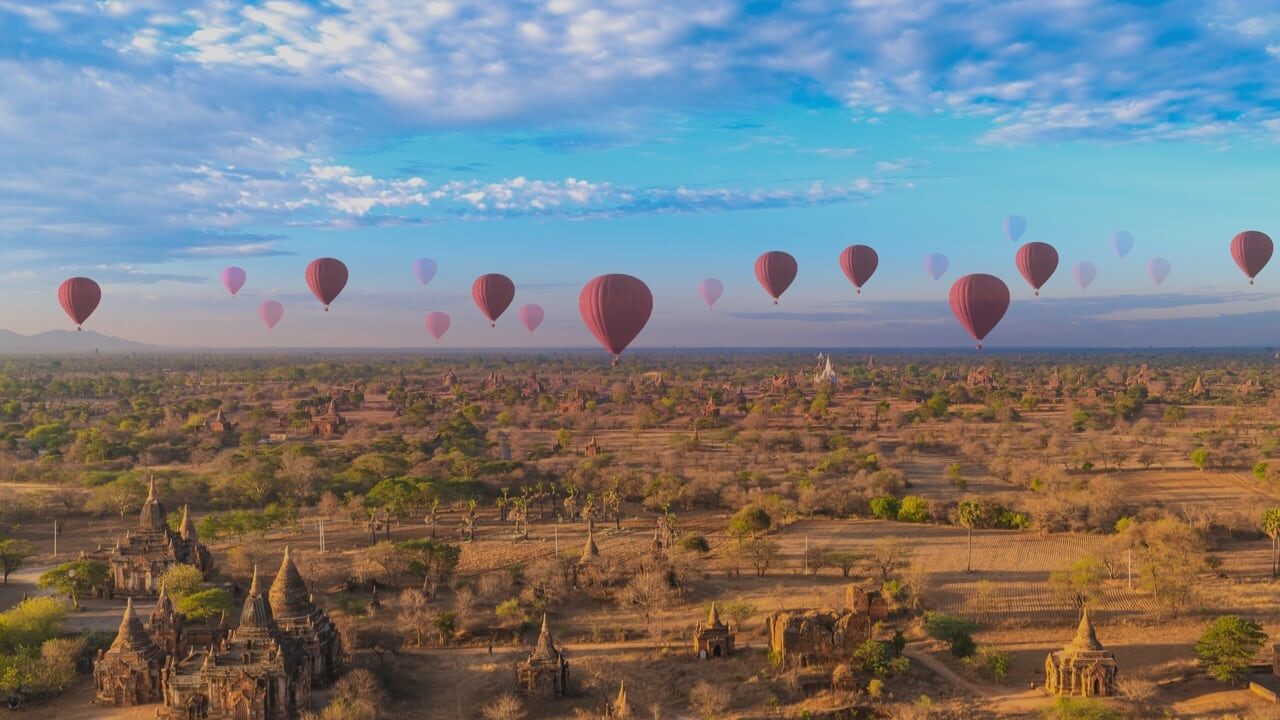
Discover Myanmar
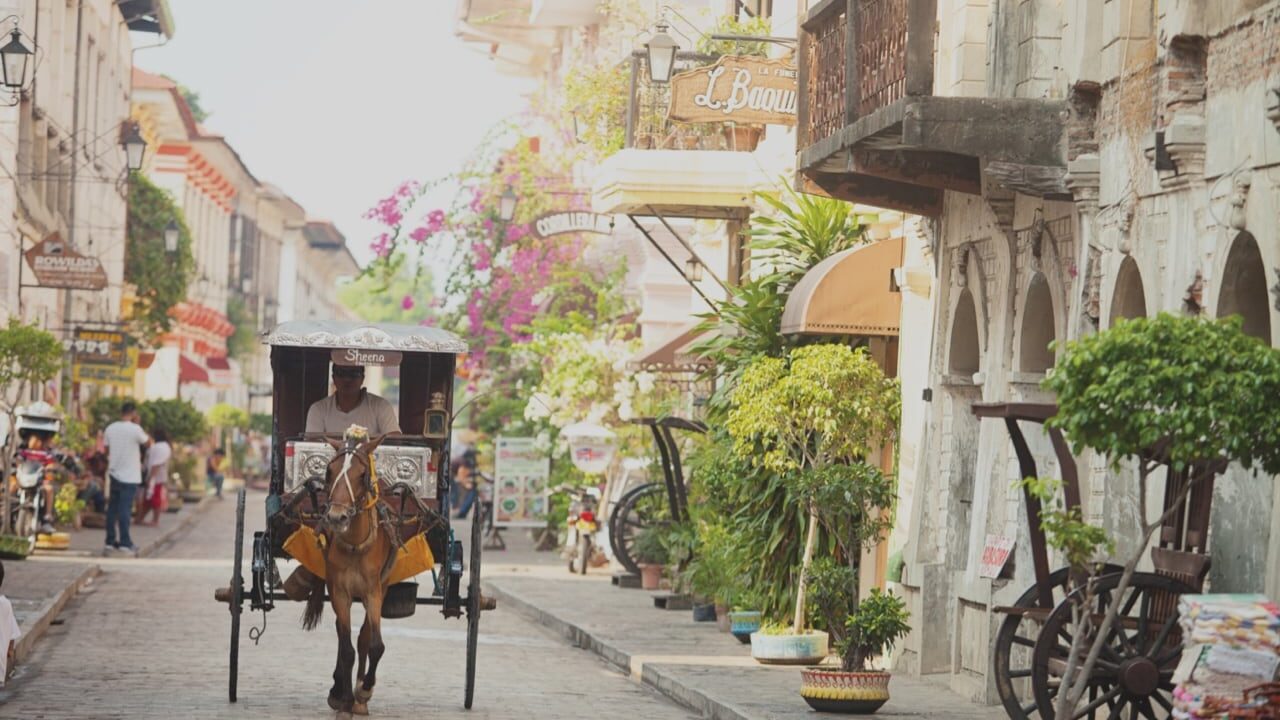
Discover Philippines

Discover Singapore
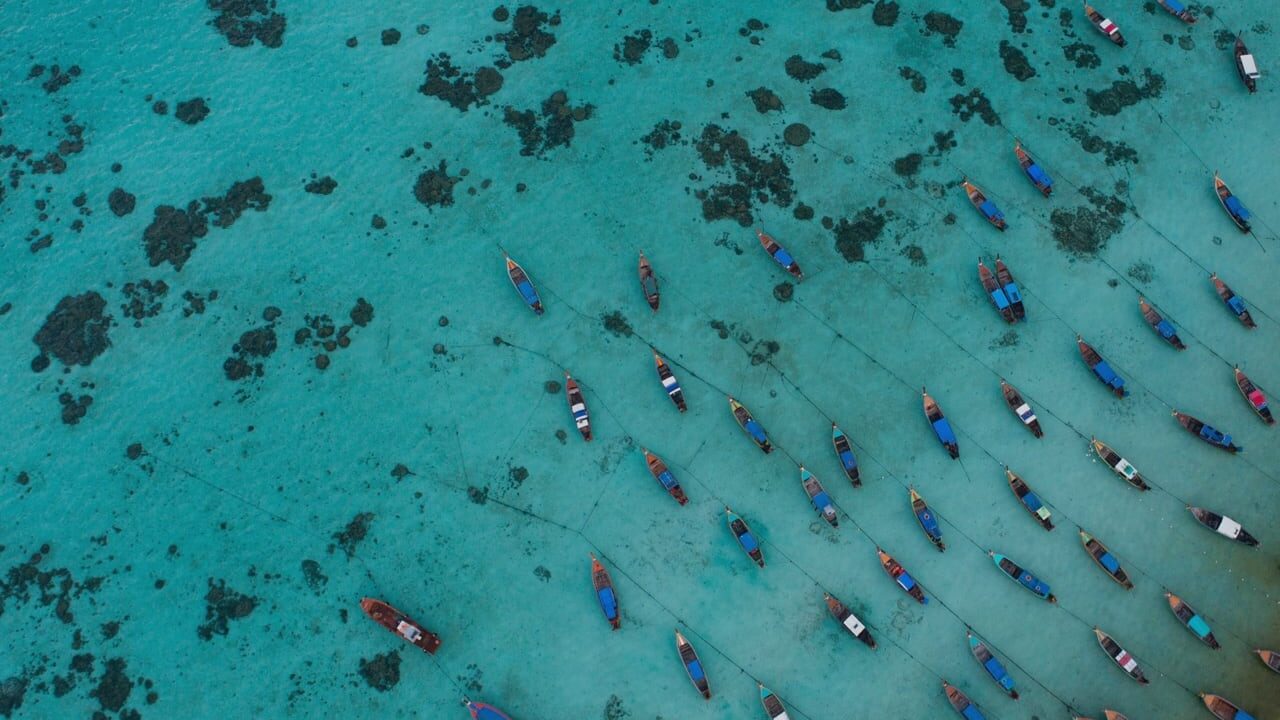
Discover Thailand
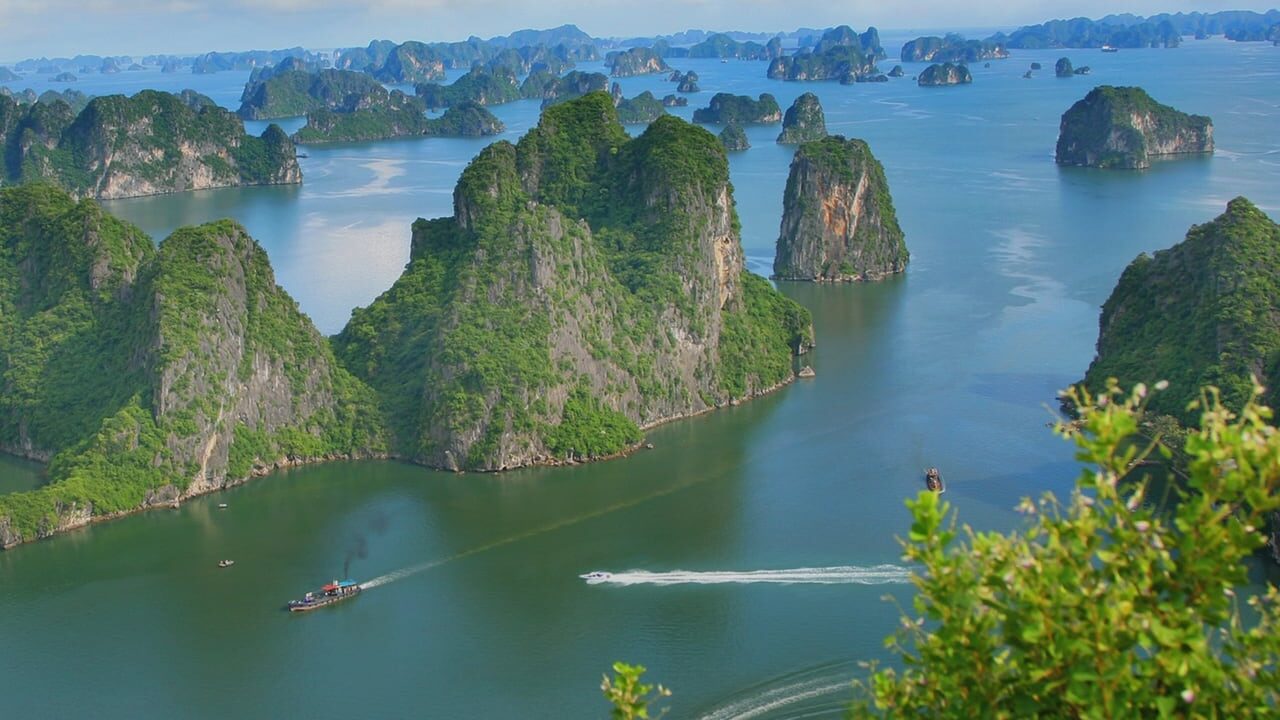
Discover Viet Nam

trade-release-1920x10802x_22211719-min-1280x720-min

ABOUT Association of Southeast Asian Nations

Welcome to Southeast Asia
Experience a world few could only imagine, from majestic rainforests and endless beaches to cultures that seem almost magical, these are the wonders of Southeast Asia. We warmly welcome you here.
Explore Southeast Asia

Adventure & Sports

Art, Culture & Heritage

Beaches & Islands

Food & Drink

Education, Volunteer Work & Homestay

Entertainment

Festivals & Celebrations
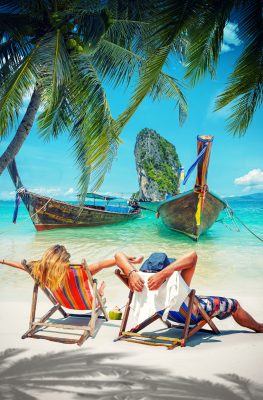
Romantic Getaways
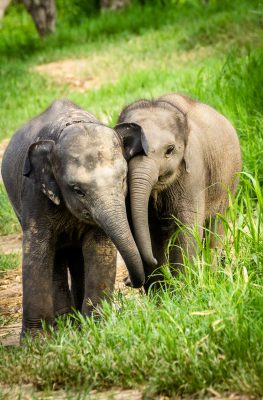
Nature & Wildlife
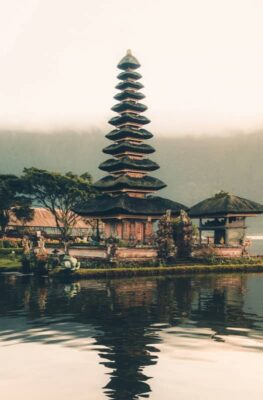
Pilgrimage & Temple Trails
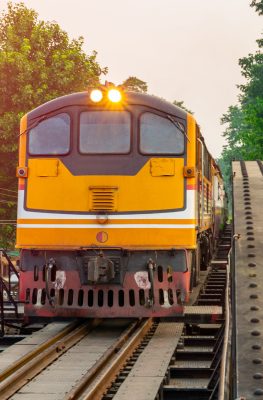
Wellness & Spa

Sultan Omar Ali Saifuddien Mosque

Angkor Wat Temple

Kelingking Beach

Kuala Lumpur

Tacloban, Leyte

Javascript is disabled
Tourism campaigns, featured guide, top destinations for relaxation, boost your well-being, a warm escape, dining in thailand, #adestinationforeverydream.

Video Streaming Subscriptions Reach Record Levels in Southeast Asia, Representing Rebound – Report
By Patrick Frater
Patrick Frater
Asia Bureau Chief
- Latin Horror Film ‘Eyes of the Abyss’ Pre-Sold to North America, U.K. Ahead of Blood Window Cannes Market Debut (EXCLUSIVE) 16 hours ago
- K2 Pictures Seeks to Break Japan’s Production Committee System of Conservative Filmmaking 23 hours ago
- Netflix’s ‘Heartbreak High’ Renewed for Third and Final Season 1 day ago

The video-on-demand streaming sector in Southeast Asia delivered record subscription numbers and subscription revenues in the first quarter of the year, according to a new study. Those trends represent recovery after a tough 2023.
Data from consultancy firm Media Partners Asia and its AMPD research affiliate showed VOD usage at a barely changed 96.3 minutes in the five Southeast Asian countries studied (Singapore, Thailand, The Philippines, Indonesia and Malaysia).
Popular on Variety
Key trends include the enduring popularity of Korean and U.S. content, serving as significant drivers of customer engagement across the region. Local content remains a cornerstone, particularly in Indonesia and Thailand, where successful platforms have tailored their offerings to resonate with local audiences, the report said.
Netflix retained its position as the category’s top earner, commanding 49% first quarter premium VOD subscription revenue in Southeast Asia, and 10 million subscribers. Viu was in second place with 9.1 million paying customers. Viu experienced double-digit subscription fee growth driven by market expansion and successful local hits.
In Indonesia, Vidio maintained its country leadership in terms of subscribers with 4.1 million customers, fueled by premium sports content and local dramas. TrueID in Thailand saw growth propelled by local originals, Premier League football and Japanese anime content.
Across the region, Korean dramas continued to reign supreme as the leading content category, capturing nearly 30% of total premium VOD viewership in the first quarter of 2024, closely followed by U.S. content. Chinese content also made significant strides, particularly on freemium platforms such as including WeTV, Viu and iQiyi, and across multiple markets.
The demand for local Southeast Asian content remains robust, particularly on freemium platforms, indicating a strong affinity among viewers. “Impactful originals such as Indonesian dramas on Vidio and Thai content on Viu resonated strongly with audiences, underscoring the importance of local storytelling,” the report said.
More From Our Brands
They couldn’t afford taylor swift tickets in america. so they flew to france, a $17.3 million patek philippe minute repeater leads only watch auction, financial services firm broadridge boosts us rowing with job pipeline, the best loofahs and body scrubbers, according to dermatologists, doctor who boss: you should be ‘very’ worried about maestro’s ‘very wrong‘ warning — watch, verify it's you, please log in.
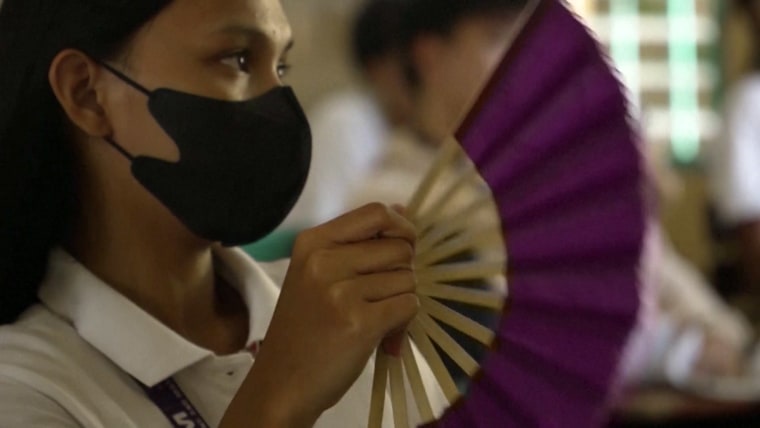
Dalai Lama clashes with Chinese government over future successor
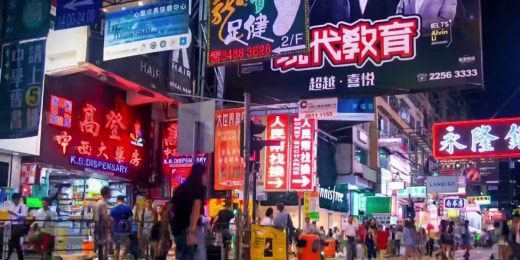
Hong Kong is losing most of its iconic neon signs
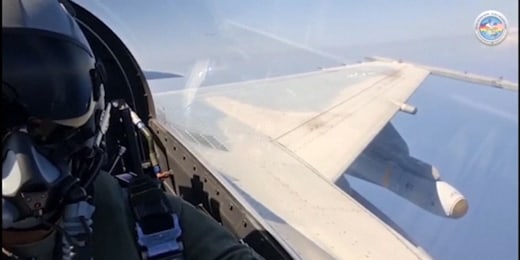
Watch: U.S. and Philippine air forces sink mock enemy ship during drill

Kim Jong Un honors North Korean propaganda chief who died at 94
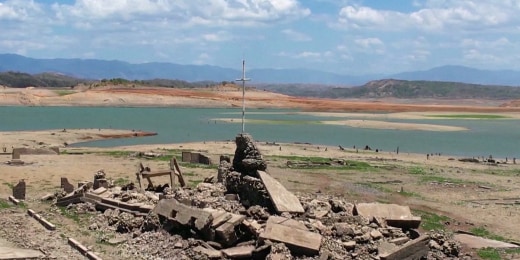
Drone video shows ruins of a centuries-old town revealed by a dried dam
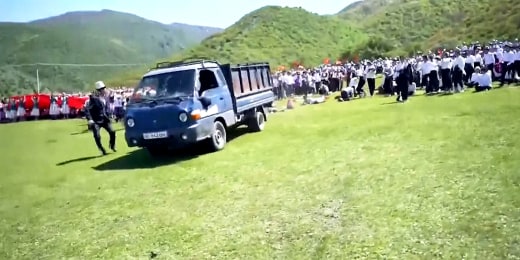
Runaway truck hits dozens of children at Kyrgyzstan cultural event
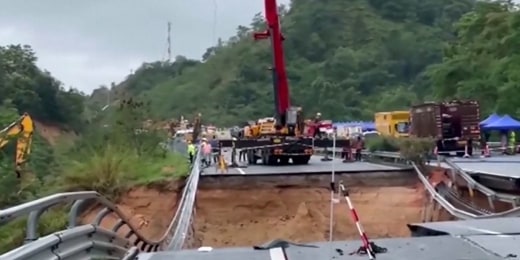
Deadly highway collapse in China sends vehicles plunging

Southeast Asian heat wave creates scorched land and classrooms too hot to study in

Donald Trump welcomes former Japanese prime minister to New York
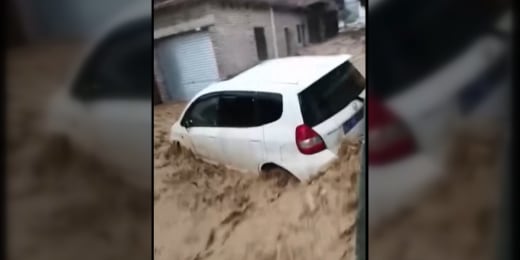
Record breaking rain leads to extensive flooding in southern China

Almost one billion people start voting in India's general election
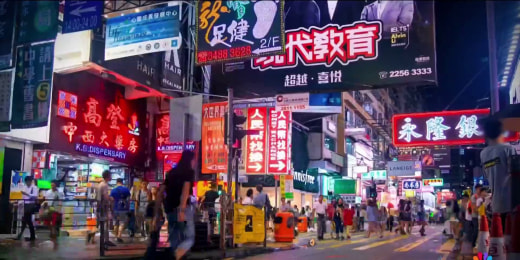
U.S. joins South Korea and Japan in naval drills in the East China Sea
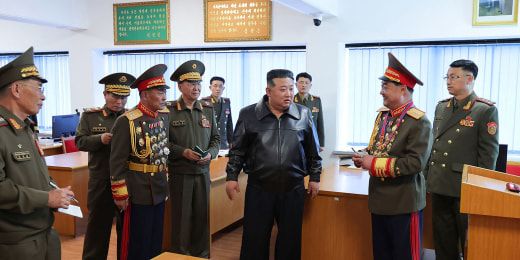
North Korea's Kim says now is the time to be more prepared for a war than ever before

Treasury Secretary Yellen calls out 'artificially cheap Chinese products' and voices concern over TikTok
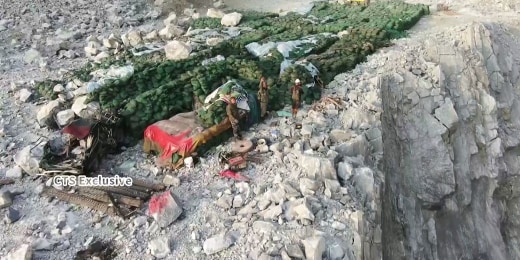
Drone video shows people trapped on mountain after Taiwan earthquake

Oscar-winning 'Oppenheimer' opens in Hiroshima movie theaters
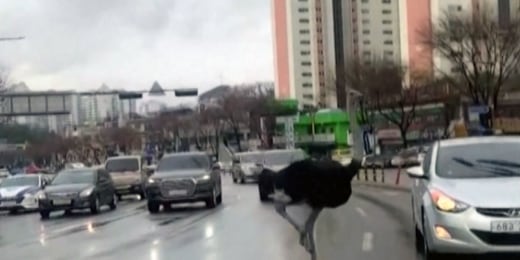
Watch: Eyewitness video captures runaway ostrich in South Korea
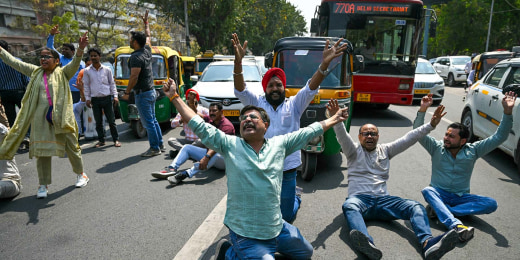
Protests follow arrest of anti-corruption crusader over graft allegations in India
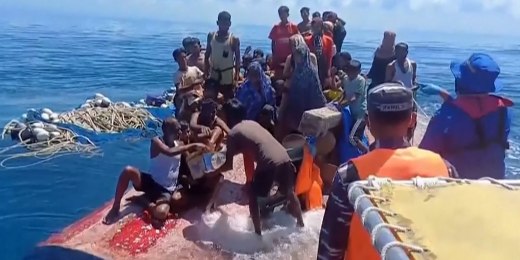
Rohingya Muslim refugees rescued from capsized wooden boat off Indonesia
A heat wave across many parts of southeast Asia has brought hardship for millions of people. The area's animals are also suffering. May 1, 2024
Best of NBC News

NBC News NOW
Over 100 artists call for release of iranian rapper sentenced to death.

Houston police chief retires amid investigations into department
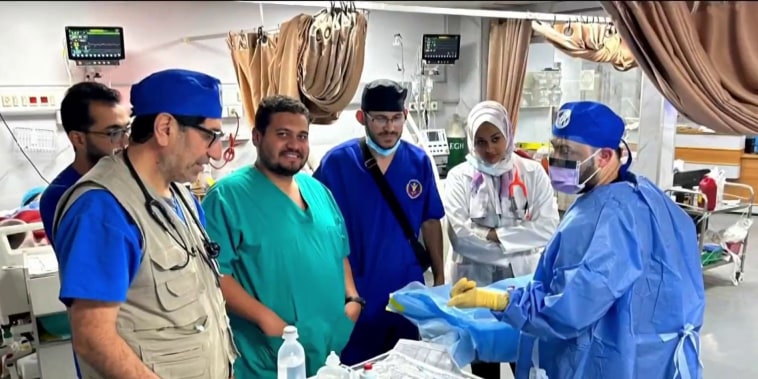
Dozens of American aid workers trapped in Gaza

Watch: Novak Djokovic accidentally gets hit in head by water bottle

Nightly News Netcast
Nightly news full broadcast (may 10th).
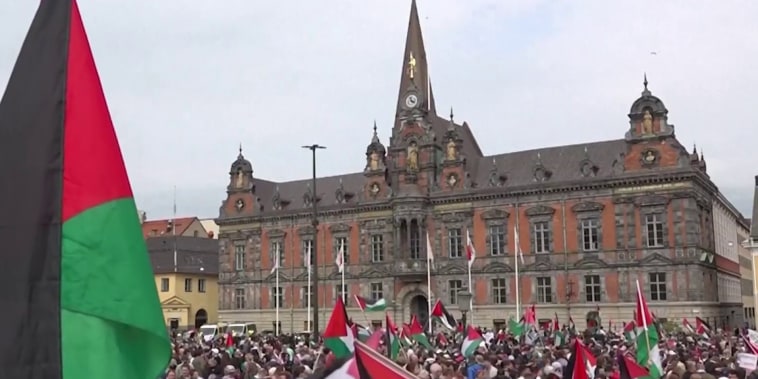
Thousands protest against Israel's inclusion in Eurovision contest ahead of final
We've detected unusual activity from your computer network
To continue, please click the box below to let us know you're not a robot.
Why did this happen?
Please make sure your browser supports JavaScript and cookies and that you are not blocking them from loading. For more information you can review our Terms of Service and Cookie Policy .
For inquiries related to this message please contact our support team and provide the reference ID below.

How To Solo Travel Southeast Asia
When it comes to solo travel, most people start in Southeast Asia.
Solo travel to Southeast Asia is one of the best ways to break into a solo travel lifestyle because it’s safe, easy to get around, and the people are so friendly.
That being said, it’s true that being a solo female traveler is more challenging than travelling with a group or as a man.
You may face unwanted male attention and are sometimes seen as an easy target for touts in the street.
Some countries in Asia may have different attitudes towards women that you need to be aware of too.
However, the hard experiences will make you stronger as a person and reward you with many unique travel experiences and insights (and lots of funny travel stories too).
If you’re thinking of traveling in Asia as a solo female traveler, below you will find some practical tips on how to travel Southeast Asia solo.
Walk with confidence
Relax when you arrive in a new place, learn the language, let people know where you are at all times, don’t be alone, wear a smile on your face, arrive in new places in the daytime, carry a personal safety alarm, stay in safe accommodation, trust your gut instinct, have an itinerary.
- Join group tours if you're nervous
- Don't drink the tap water
Get a local sim card
Try the street food, check the visa requirements, other safety tips, best places to solo travel in southeast asia, final thoughts on solo travel in southeast asia, pin to save on pinterest:, solo female travel tips for southeast asia.
Despite how safe travel is in South East Asia , it’s always wise to take simple precautions to avoid getting into trouble.
Here are my tips for staying safe on the road as a female solo traveller, picked up from over six-months of full-time solo travel around Asia.
When you are travelling long term, you’ll arrive in new places all of the time.
For the first day or two in a new destination, you are particularly vulnerable to being seen as an easy target.
To avoid this, walk with an air of confidence in new places, even when you just arrive with your backpack on your back.
Stand up straight and if people hassle you pretend that you have somewhere to go. If you are seriously in trouble, walk up to another foreigner and pretend to be friends. 99% of the time they will understand and help you.
When you arrive in a new place, you are vulnerable and most likely stressed due to the swarms of tuk tuk drivers and people trying to escort you to their hotels.
Take a minute to adjust to the new place. Look around and acclimatise, maybe even buy a coffee and have time to adjust.
After a rest, you’ll be more alert and relaxed and be less vulnerable.
Many people have respect for you, when you make an effort to speak their language.
They may also think that you have a local husband so might go out of their way to be friendly and helpful.
Try to learn by downloading podcasts to listen to on long bus rides or by making friends with locals who speak English.
It doesn’t matter how much of the language you know; many people will be so proud and happy to hear you utter ‘Thank you ‘ in their mother tongue.
The more people who recognise you and know where you are going in your hostel, the more likely they are to worry about you if they don’t see you for a while.
I always make friends in the dorm and tell them what I will be doing on that day, hopefully they would spread the alarm if something happens to you and you’re not back at night.
I always try to update my Facebook as much as possible and let people at home know where I am and if I will be in an area with no internet for a while.
This seems like a hard task for a solo traveller, but most incidences of assault happen when the victim is alone. Try to be around other tourists on transport and when sight-seeing in the day.
Try not to walk in a secluded area at night. Women in foreign countries will usually be helpful in times of need if local men are harassing you.
Read : Why you’ll never be lonely when you travel alone
Many people in Asia react very strongly to people who become aggressive.
It’s hard to stay calm, when you have people surrounding you to sell you things.
Have a smile on your face, so people react more kindly to you and just say ‘no’ with a smile on your face and a shake of your head.
Read more : Are you smiling on your travels ?
I always try and avoid arriving in new places at night alone. It makes you more of a target and public transportation options may be limited.
If it’s impossible to arrive in the day, get a reputable taxi to your accommodation or try to travel with other travellers you meet on the way.
You’ll hopefully never need to use it, but carrying a safety alarm, such as a safety whistle, gives you an extra air of confidence and can make you feel safer when travelling solo.
Stay in places that have high ratings on sites, such as Hostelbookers, and those that have a reputation for being safe. If the room does not seem secure, don’t stay there.
Accommodation is plentiful and cheap in South East Asia so you are bound to find somewhere secure easily.
This is the best tip that I could ever give you. Trust your intuition and gut feelings at all times.
If you meet a friendly person on the bus who wants to share a room, but something just doesn’t feel right, don’t share a room.
If you need to get out of a situation just lie and make up an excuse.
The good thing about being a traveller is that you are anonymous, no one knows who you are and you should use that to your full advantage to lie if you need to get out of a bad situation.
When visiting Asian countries, you will find there is so much to see and do, from historic temples to diving trips to beaches and waterfalls.
It’s easy to get caught up and want to do everything.
My top tip for beginners to solo travel is to have a list of the best places to see and prioritize which ones are important to you.
If it’s your first solo trip, then stick to the tourist trail and don’t go off the beaten path.
Join group tours if you’re nervous
Group tours are a great way to ease into solo female travel life.
They allow you to meet people, and who knows, you may even meet some travel friends to travel with after.
They are a great way to get introduced to a country and a way of life.
Don’t drink the tap water
In some places, tap water is safe in SE Asia, but in others it’s really bad.
Wherever you go, play it safe and drink bottled water.
The best way to get connected is to get a local sim card.
You can get many different plans, but sim cards are really cheap and the coverage is good in SE Asia.
You can get a sim card from most 7-Eleven stores, or look for telecom providers in that city and go to a shop.
Don’t get a sim card from the airport, if possible, it’s ridiculously overpriced.
The best option if you have an unlocked phone, is to purchase an eSim . It’s easy, and automatic, and you don’t need to run around the destination trying to find a sim and then understand how it works. Airalo is our preferred esim provider.
Street food in Asia is a way of life. You might think that it’s unclean and you’re going to get sick, but you honestly won’t if you know what to look for.
When trying street food, make sure you follow these tips:
- Make sure the food is piping hot
- Pick a place that has lots of people
- Pick a place where you sit outside on little stools
- Make sure they are cooking on an open fire
- If the chef is an old woman, you know it’s going to be good.
- Look out for flies. If there are a lot of flies over the meat, it’s probably not good.
Check out these places to eat street food in Bangkok
Most countries need a visa for Vietnam and Laos, so make sure you have the documentation and everything you need prepared weeks in advance!
I had to extend my trip in Laos because I had to wait for my Vietnam visa to be approved.
Make sure you have all the documents exactly how they wanted it.
The first time I applied for a Vietnam visa, the photo wasn’t clear enough so they declined it.
The immigration officers are incredibly picky, so save yourself some time and make sure all your application steps are perfect.
Here are some tips that you may have heard many times before. It’s always good to have a recap once in a while though:
- Don’t flash your valuables about
- Try not to walk alone late at night
- Don’t accept drinks from strangers in bars
- Lock your valuables in lockers when you can
- Wear your bag over your body to avoid bag snatchers
- Wear clothes that are appropriate to the country you are visiting
- If you rent a scooter, test the breaks thoroughly. Most bikes in SE Asia are not well maintained.
If you’re not sure where to start your solo travel adventures in Southeast Asia, here are some places I recommend:
- Singapore – it’s expensive, and there’s not much to see and do, but the culture is not too far off what you might find in Europe or the United States, so it’s a great first destination to get used to the climate and fast-paced Asia life without being too culture shocked.
- Siem Reap, Cambodia – this is the gateway to the famous Angkor Wat and is a relaxing, chilled city with friendly locals and a backpacker vibe. Phnom Penh is great for museums and learning about the country’s history, but Siem Reap has a special vibe. Here are things to know before visiting Cambodia .
- Luang Prabang, Laos – this is a small city with a river running through it. Like Siam Reap, it has a small backpacker vibe with a relaxed atmosphere.
- El Nido, Palawan, The Philippine s – you won’t find nature anywhere in the world more stunning. Plus, there are lots of travelers here to meet.
- Kuala Lumpur, Malaysia – it’s a bit like Singapore in the way that it’s quite modernized, so it makes a great first stop for first time solo travelers who might be nervous.
- Bali, Indonesia – you will either love or hate Bali. It’s overrun with tourists nowadays, but it’s still undeniably beautiful. If you want to meet other travelers, you will have to try very hard not to meet people in Bali.
- Taiwan – this is a very safe, very small country that’s really easy to get around. It’s not the cheapest country in SE Asia, but it has a very unique culture and is very easy to feel at home in.
- Chiang Mai, Thailand – this is another popular place in SE Asia to meet people. Northern Thailand has some of the most beautiful nature, and unlike Bangkok, it’s a lot more chill. In fact, Pai is a backpacker’s haven.
- Hoi An, Vietnam – Vietnam can be chaotic, especially in Ho Chi Minh City and Hanoi where scooters drive on any path they find. Hoi An is a lot more chilled and relaxing, but still cheap and pretty. Hue is also a great city for solo female travelers as it has lots to see and do and places to meet people.
- Flores, Indonesia – if you like island life, Flores is for you. It’s laid-back and peaceful, and not quite as overcrowded as Bali. Lombok is also a cool island with volcanoes, hikes and a breathtaking landscape.
There is always a lot of scare mongering whenever people talk about solo traveling, especially as a woman, but don’t let them put you off travelling solo.
It’s one of the greatest things that I have ever done in my life and has changed my personality for the better.
After you have travelled solo you can do anything.
Keep alert and stay safe to ensure that your trip is memorable for the right reasons!
Bio: Pearlsandpassports is a solo female travel blog that will tell you the realities of travelling solo through Asia and Oceania. At 26 Stephanie embarked on the trip of a lifetime after securing a sabbatical from her high stress job. She has one goal: to discover her passion in life. Six months and Eight countries later Stephanie has a wealth of travel stories and advice that will help and inspire new or experienced backpackers. Follow Stephanie on her adventures as she learns about herself and the world around her.
What’s your best tip for solo female travel in South East Asia? Let us know in the comments.
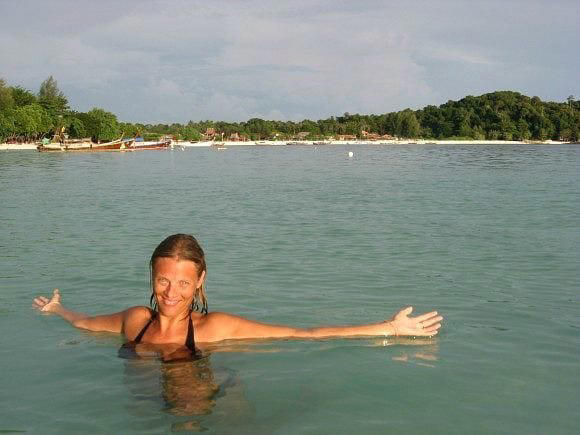
Should you kill hammerhead flatworms?
The toxic and invasive pests, which originate from Southeast Asia, have long been spotted across the United States and around the world.

Once again, hammerhead flatworms are wriggling into the spotlight — this time in Canada.
The toxic and invasive pests, which originate from Southeast Asia, have the ability to regenerate even if chopped into pieces. They have long been spotted across the United States and in other countries, including Canada. On iNaturalist , an invasive species reporting platform, there is evidence of Canadians mentioning the worms since at least 2019, with the most recent report logged as of Tuesday.
But sightings are increasing across Ontario, where the species is making itself “ at home ,” and some Canadians are wondering what to do if they spot a giant toxic worm on their land and if they should kill it.
“People are surprised to see them because they are very unusual,” John Reynolds, a laboratory biologist and worm expert, told CTV News Toronto .
What do hammerhead flatworms look like?
Hammerhead flatworms are, you guessed it, flat in appearance.
The group of worms is usually referred to as the broadhead planarians and contains more than 200 different species, experts said.
They have broad, shovel-shaped heads and “are usually shades of tan or brown with various patterns of stripes on their backs,” Theresa Dellinger, an entomologist with the Insect Identification Lab at Virginia Tech, wrote in an email.
She said some of the worms are “long and skinny,” while other species “are shorter and broader.” They range in length from about 1½ inches to about a foot.
Where are hammerhead flatworms found?
The worms are spread through the horticultural trade and the movement of infested plants and soil, according to the U.S. Agriculture Department . Experts say their egg cases are tough, hard to detect and able to endure weeks in transport.
Dellinger said that hammerhead worms probably entered North America “in the soil of plants imported from Asia” and that once they arrived “they were spread in a similar manner through the movement of potted plants and perhaps mulch and similar materials.”
The planarians are usually found in dark and moist conditions such as under rocks, in leaf litter or in flower beds, Dellinger said, adding that “they are not typically found in hot, dry environments.”
In the more northern parts of the United States and the southern parts of Canada, the most common species is Bipalium adventitium , called the wandering broadhead planarian, said Peter Ducey , a professor in biological sciences at the State University of New York at Cortland, in an email.
“It has been in North America for probably more than 100 years, but the northern extent of its range may be expanding as the climate warms,” Ducey said.
Last year, The Washington Post reported that hammerhead worms were invading the D.C. area, much to the concern of residents. “These worms are one of the craziest creatures I have ever seen and are pretty darned creepy,” entomologist Michael Raupp said in July.
In the United Kingdom, Buglife, a nature conservation charity, said it is “concerned” about an invasion of nonnative flatworms. “Once introduced these flatworms can reproduce rapidly, cannot be eradicated, and pose a risk to native soil invertebrates such as earthworms by feeding on them,” the website said.
Are hammerhead flatworms dangerous?
Some species of broadhead planarians, such as Bipalium adventitium and Bipalium kewense, secrete a neurotoxin, which is found in the worm’s mucus, Dellinger said. It is believed to be used to subdue prey, though the worms are unable to bite or inject the toxins into humans or animals, she said.
The neurotoxin called tetrodotoxin also is found in puffer fish and certain salamanders, Ducey said.
“I don’t know of any cases of humans or their pets being seriously harmed by handling broadhead planarians,” but “It is wise not to handle the flatworms, and certainly not a good idea to lick them,” Ducey said.
Seek veterinary advice if your pet eats a hammerhead flatworm, and wear gloves if you handle the worms, experts said.
When asked if Canadians should be worried about recent reports, Ducey said that “this is not a ‘sky is falling’ situation,” though “any spreading, nonnative species should be monitored carefully to see whether they are having negative impacts on the native ecosystems.”
The flatworms are considered a possible threat to the environment, however, as they feed off earthworms, slugs and snails and may disrupt soil ecosystems. The predators “could impact agricultural, horticultural, and natural ecosystems,” according to the U.S. Agriculture Department.
While flatworms are not generally considered a health risk to humans, Ducey urged people to be vigilant in reporting sightings of hammerhead flatworms to government agencies and researchers.
“Hammerhead worms found in the United States are not native to North America,” Dellinger said. “It’s okay to kill any that you find around your home as these species are considered invasive.”
She said you can kill the hammerhead flatworm by dropping it into a container and using one of these methods:
- Keeping the container in the direct sun for several hours.
- Sprinkling some table salt into the container.
- Squirting some hand sanitizer into the container.
- Placing the container in a freezer.
- Adding soapy water into the container.
Dellinger warned against preventively scattering salt in areas where hammerhead worms might be found, as the salt will harm plants and beneficial invertebrates.
She also cautioned against using pesticides as a preventive measure “as this will likely kill more beneficial species of animals than just the occasional hammerhead worm.”
Experts also warned against trying to destroy hammerhead worms by chopping them up, as this will produce more hammerhead worms.
“Hammerhead worms can regenerate from fragments of their body, which is why we suggest you don’t cut them in half to kill them,” Dellinger said.
Ducey said the group of worms was “incredibly fascinating biologically,” and their “special powers of regeneration” are being researched for possible medical implications.


IMAGES
COMMENTS
The seasons on each side of the peninsula are different. The best time to visit the western islands is from December to February, while the perfect time to visit the east coast is from June to August. 32-Day Grand Southeast Asia Expedition: Vietnam, Cambodia, Laos, Malaysia, and Indonesia Tour.
Understanding Southeast Asia's Climate. Southeast Asia's climate is a complex and fascinating system that significantly influences the best times to visit. The region, stretching from the eastern edge of the Indian subcontinent to the shores of the Pacific Ocean, experiences a wide range of climatic conditions.
November to February: As with most of Southeast Asia, dry season is considered the best time to visit the Philippines. The weather is at its coolest, hovering around the mid to low 20s across most of the country. This is a great time for beach lovers as the rains are few and far between.
Southeast Asia One-Month Itinerary. With one month, you'll be able to take it a little slower, see more places, and get off the beaten path a bit more. You can add another country and leave more flexibility in your itinerary. Days 1-3: Bangkok. Follow the Bangkok itinerary above, and stay for a few more days if you like!
Between November and February is the best time to visit Southeast Asia. The weather is warm at 86°F (30°C) during this time. June to October is the wet season and typically has 252 millimeters of rainfall per month. September is the best time to get a flight to Southeast Asia, with an average 5% price drop.
Visiting Southeast Asia in May. May is a great time to visit Borneo, Bali, Lombok or the east coast beaches of Thailand and Malaysia. With long hours of sunshine, clear seas for snorkeling and diving, good orangutan viewing and shoulder-season prices, it's one of our preferred times of year to travel here.
It's also a safe and cheap place to travel, meaning that Southeast Asia is a great place for first time travellers getting to grips with backpacking and those on a budget. Southeast Asia has been on my bucket list for years and in 2022, I spent 7 months travelling in Thailand, Vietnam, Cambodia, Malaysia and Indonesia. Based on my experience ...
Thailand. Malaysia, Singapore & Brunei. Philippines. Malaysia. Vietnam. Myanmar (Burma) Bali. Explore Southeast Asia holidays and discover the best time and places to visit.
The best time to visit Southeast Asia is an important consideration in vacation planning for such a vast region, with its diverse countries, colorful festivals, weather patterns and micro-climates, especially with activities like diving, trekking, swimming, cruising and volcano scaling to partake in.
Beginner travelers should check out these travel tips and follow this Southeast Asia travel advice when considering a visit to the region for the first time. 1. Pick your countries wisely. While it's tempting to visit many countries and cities on a single trip to Southeast Asia, it's worth taking it slow and digging into the culture of a single ...
Southeast Asia is an incredibly safe place to backpack and travel — even if you're traveling solo and even as a solo female traveler. Violent crime is super, duper rare. Petty theft (including bag snatching) is the most common type of crime in Southeast Asia, especially around popular tourist landmarks.
I was wondering what your thoughts are on whether to travel South East Asia first (3mths) and then Aus/NZ/Fiji (3mths), then South & Central America (4mths), or the other way round i.e. Central America, South America and then Aus/NZ and the South East Asia. Looking at going end of Jan/start of Feb next year for 9-10 months too. Thanks!
14. Chiang Mai, Thailand. 15. Hanoi, Vietnam. Map of Places to Visit in Southeast Asia. 1. Angkor Wat, Cambodia. Buddhist monk in Angkor Wat. Located in northwestern Cambodia, the city is best known for being the gateway to the Angkor region, but Siem Reap has much to offer on its own.
Top 10 Places to Visit in Southeast Asia. Below are my top 10 destinations to visit in Southeast Asia that should be at the very top of your bucket list. Angkor Wat, Cambodia. Luang Prabang and nearby Kuang Si Waterfalls in Laos. Halong Bay in Vietnam.
How to Go to South East Asia. Getting to Southeast Asia is easier than you think, with major international airports in hubs like Bangkok, Singapore, and Kuala Lumpur offering direct flights worldwide. ... Best Places to Visit in South East Asia Philippines. My time in the Philippines was a tale of two halves. One of them was that I needed more ...
Laos is the perfect destination for adventurers. Thanks to its many pristine jungles and karst mountain landscapes, it may well be the best country in mainland Southeast Asia for hiking and trekking. It's also an excellent place for other outdoor activities like kayaking, zip-lining, caving, and rock climbing.
28. Sihanoukville. 29. Vientiane. Both the capital and largest city of Laos, Vientiane is an underrated place to visit with lots of different sides to it. Besides boasting beautiful Buddhist temples, it is known for its elegant French colonial-style architecture and vibrant street food scene.
Venture on a journey to Southeast Asia, a world of majestic rainforests, endless beaches, and enchanting cultures, where Southeast Asia is a destination for every dream. Explore our diverse vacation tour packages and start planning your unforgettable travel experience to Southeast Asia today.
It's a place that resonates with the soul, leaving an imprint long after the visit. Exploring the Mystical Beauty of Angkor Wat, one of the most beautiful places in Southeast Asia. 2. Bai Xep, Vietnam. Golden sands stretch out, meeting the gentle waves of the South China Sea at Bai Xep.
The video-on-demand streaming sector in Southeast Asia delivered record subscription numbers and subscription revenues in the first quarter of the year, according to a new study. Those trends ...
In 2019, Southeast Asia's tourism market was booming. The six largest economies in the region (Indonesia, Thailand, Singapore, Malaysia, Vietnam, and the Philippines) combined for over 127 ...
A heat wave across many parts of southeast Asia has brought hardship for millions of people. The area's animals are also suffering. May 1, 2024
Washington is concerned about growing efforts by Iran and groups like Hamas to solicit money in Southeast Asia, a senior US Treasury official said on Tuesday during a visit intended to rally ...
When it comes to solo travel, most people start in Southeast Asia. Solo travel to Southeast Asia is one of the best ways to break into a solo travel lifestyle because it's safe, easy to get ...
The toxic and invasive pests, which originate from Southeast Asia, have long been spotted across the United States and around the world. By Jennifer Hassan May 1, 2024 at 12:08 p.m. EDT